- Travel tips

Tokyo Solo Travel Guide & 5 Day Tokyo Itinerary for First Time Traveller
While Tokyo is a big metropolis, you can see the best attractions with my 5 day Tokyo itinerary. During your 5 days in Tokyo, experience Japanese culture through historical monuments, museums, cuisine , and much more.
The capital city is a large metropolis with 23 special wards and 26 other cities, towns and villages. It was originally a fishing village during the Edo period, then Tokyo became Japan’s capital city in 1868. And while Tokyo is Japan’s political and economic centre, tourism also became a leading industry as the city attracts millions of visitors yearly.
If this is your first solo trip to Tokyo and you are wondering what to see in the capital city, I am sure you will enjoy all the highlights in my Tokyo 5 day itinerary. Keep reading, and I’ll show you exactly what you will see in just five days!
Disclosure: This post may contain affiliate links. If you buy something through them, I will receive a small commission at no additional cost. Thank you for supporting this website. For more information, please read the disclosure for more info.
Tokyo 5 day itinerary: what you need to know
Before you start your 5 day Tokyo itinerary, take a look at my post on everything you need to know before going to Japan . I included a lot of travel information, including how to get around Japan and other travel tips.
Here are a few additional tips to help you during your first time in Tokyo:
- The best way to follow my Tokyo itinerary is by walking and taking a train or subway .
- Get a Pasmo or Suica for taking public transportation in Tokyo. They are both rechargeable smart cards where you can take public transportation in Tokyo.
- Wear comfortable walking shoes as there will be lots of walking during your 5 days in Tokyo.
- Tokyo is a safe city for solo female travellers , even at night.
- Various cherry blossom festivals (mid-March to mid-April) – many parks across Tokyo have “hanami” (flower viewing).
- Kanda Matsuri (odd-numbered years on the Saturday closest to May 15) – a week of celebrating which includes a spirited procession with dancing and chanting along with massive floats at Kanda Myojin Shrine.
- Sanja Matsui (third Friday, Saturday and Sunday of May) – the largest shinto festival in Tokyo and it is held in the Asakusa district.
How to get to Tokyo Japan
You can maximize your time in Japan by flying directly into Tokyo, where you can start your 5 days Tokyo itinerary immediately.
Tokyo has two international airports: Narita International Airport (NRT) and Haneda Airport (HND) . Most international flights will arrive at Narita Airport, 60km east of Tokyo. If you can fly into Haneda Airport, it is faster to get into the city.
Narita International Airport To Tokyo
While many buses go into Tokyo, my favourite travel option from Narita Airport to Tokyo is by train. And depending on where you are staying in Tokyo or your budget, there are several options:
- JR Narita Express Line : 60 minutes (2 per hour), ¥3,270 (all seats are reserved)
- JR Sobu Line : 90 minutes (via Chiba, 1 per hour), ¥1,340
- Time: from 36 minutes (2 per hour)
- Cost: ¥1,270
- Check: Keisei Electric Railway for schedules and fares
Haneda Airport To Tokyo
Haneda Airport is closer to Tokyo but has fewer international flights. But if you are arriving in Haneda, it only takes 30 minutes to get into the city. First, take the Keikyu Airport train to Shinagawa Station, then continue your journey via regular Japan Railway trains.
- Time: 17 minutes (every 10 minutes)
- Check: Haneda Airport Access Gude for schedules and fares

5 days in Tokyo: how to get around
While walking is the best way to see many the sights in Tokyo , other attractions are best visited by either via the train or the metro system .
There are about eight railway and two subway systems run in and out of Tokyo. You don’t have to know all of them, but you should familiarize yourself with the JR Yamanote Line on Japan Railway . The train on JR Yamanote Line runs in a loop and connects to several major city centres like Shinjuku, Shibuya, Shinagawa, Tokyo and Ueno.
Moreover, if you visit all the places in my Tokyo 5 days itinerary, getting a Pasmo or Suica card is best . You can use either card (or IC cards issued in other regions of Japan) and take public transportation. You save a ton of time and headaches by not having to figure out the cost of each ride.
And whenever you want to check the rail or subway schedule and fares, use Google Maps to navigate around Tokyo , as the app tells you exactly which route to take and the cost required.

Solo Tokyo itinerary 5 days summary
For my 5-day Tokyo itinerary, I included some typical tourist attractions because if you are a first-time visitor to Tokyo, you have to see what everyone is raving about. I included some off-the-beaten-path places because they are another side of Tokyo that most people don’t see and should be highlighted.
I put together this Tokyo solo travel itinerary by planning each day around different neighbourhoods in Tokyo. And I included highlights of each area in each section. The neighbourhoods are grouped so you will not waste much time commuting from one place to another.
Here is a quick summary of the 5 day itinerary in Tokyo:
- Day 1: Shibuya , Omotesando , Harajuku & Shinjuku
- Day 2: Tsukiji Outer Market, teamLab Planets, Roppongi & Ginza
- Day 3: Asakusa, Akihabara & Ueno
- Day 4: Day trip from Tokyo
- Day 5: Shimokitazawa, Gōtokuji Temple & Kichijoji
What to do in Tokyo in 5 days as a solo traveller
Tokyo itinerary day 1: shibuya, omotesando, harajuku & shinjuku.
Your first day in Tokyo is all about visiting the top tourist spots in Tokyo. They are all near each other, so you can maximize your time and walk to each neighbourhood. Follow the blue pins for all the highlights for day 1.
Shibuya is famous for the Shibuya Crossing or Shibuya Scramble . As the world’s busiest intersection , crossing the wide intersection is an experience. When the pedestrian light turns green, hundreds of people (thousands during peak hour) from every corner of the intersection cross the road at the same time. It all seems very chaotic but exhilarating!
Besides the crazy pedestrian crossing, Shibuya is known for its neon-colour high-rises and shops selling the latest fashion and the latest addition, Shibuya Sky .
Don’t miss these sights in Shibuya
- Shibuya Crossing – walk across the chaotic crossing yourself.
- Shibuya Sky – visit the 360º open-air observation deck on the 47th floor of Shibuya Scramble Square and see Tokyo from above. Tip: purchase a ticket online and get a discount and skip the line.
- Hachiko Memorial Statue – Hachiko (the dog) waited for its owner each day at the same spot at Shibuya Station. When its owner died, the dog continued to wait for its owner. And it continued for ten years!
- Miyashita Park – visit the multifunctional building for trendy shops, delicious eateries and green outdoor areas.

Omotesando is a neighbourhood with exclusive retailers lining the main avenue and numerous boutique shops scattered around the area.
Besides browsing at all the beautiful boutiques, there is a strong cafe culture in Omotesando. Many independent coffee shops and cafes serve fluffy soufflé pancakes and layered cake that looks like artwork.
Don’t miss these sights in Omotesando
- Cat Street – the fashion street hovers between Harajuku and Omotesando. The street has nothing to do with cats though.
- Tokyu Plaza Omotesando Harajuku – the shopping mall famous for its urban rooftop garden and the kaleidoscope mirrored entrance.
- Nezu Museum – see over 7,400 pieces of Japanese and East Asian art in the minimalistic design museum.

If Omotesando is high-end, then Harajuku is edgy. And when I think of Harajuku , I think of Harajuku girls who dress in a funky and one-of-a-kind fashion that expresses individualism and the song by Gwen Stefani. Ha!
But the area is precisely about the Japanese youth culture: Harajuku style. Many independent boutique stores sell colourful, quirky clothing and accessories on Takeshita Street .
Don’t miss these sights in Harajuku
- Takeshita Street – the main pedestrian street with quirky boutique stores selling edgy clothing, shoes and accessories. Also, look for crepe dessert shops.
- Meiji Shrine – tucked away in the middle of the forest are tranquil shrines, giant torii gates, and Meiji Jingu Museum.

End the day in Shinjuku , a major commercial and entertainment district in Tokyo. As Tokyo’s secondary center (the other one is at Tokyo Station), Shinjuku has the world’s busiest train station, nostalgic restaurants and bars, unique museums, exciting nightlife and thousands of shops !
You can buy almost anything in Shinjuku. From boutique stores to all the major department stores like Isetan, Takashimaya, Tokyu Hands , and Odakyu Department Store . Plus, Shinjuku has some of the best places to eat in Tokyo.
Don’t miss these sights in Shinjuku
- Shinjuku Station – over 3.5 million passengers go through Shinjuku Station each day!
- Omoide Yokocho – a narrow alley full of nostalgic yakitori restaurants, also known as Memory Lane and Piss Alley .
- Golden Gai – another area with nostalgic little alleys full of small bars.
- Godzilla head – spot the gorilla head peeking out from all the neon buildings.
- Shinjuku Subnade – Shinjuku’s largest underground shopping mall.

Tokyo travel Itinerary Day 2: Tsukiji Outer Market, teamLab Planets, Roppongi & Ginza
Day two on the Tokyo itinerary is about fresh sushi, interactive light installations, art museums and glitzy shops! Need I say more? Follow the red pins for all the attractions for day 2.
Tsukiji Outer Market
Tsukiji market is popular for its wholesale and retail shops for seafood . The “inner” market was known for its tuna auctions but has been closed since 2018.
However, the “outer” market remains. This means you can still go to Tsukiji market and have sushi for breakfast (which many visitors do, and many restaurants have long queues by 6 am!) But even if you don’t queue up at the break of dawn, there are still many other excellent options for food.
There are also plenty of street food , vendors selling dried foods, seaweed, and Japanese snacks . And you can find cooking utensils and kitchenware in the market too.
Tsukiji Outer Market opens from 6am to 2pm, so it is best to go first thing in the morning to beat the rush. Plus, you can have sushi for breakfast! How great is that?

teamLab Planets
teamLab Planets is the latest art and light installation in Tokyo. The talented people at teamLab created four large-scale rooms and two gardens of digital artwork and light installations . The three-dimensional artwork comes to life when you interact with the artwork.
Walk barefoot through the space and immerse yourself in the entire experience. But you’ll have to reserve a time slot before you go .
There are only a few teamLab exhibitions worldwide, and the one in Tokyo is the biggest and most elaborate. And this is a temporary exhibit and will close at the end of 2023. So make sure you check it out when you are in Tokyo.

Roppongi is known for its exciting nightlife, as it has many bars and nightclubs. But as a solo female traveller, I am much more interested in seeing other attractions in Tokyo during the day.
But the good news is that Roppongi is also a developing neighbourhood known for several art museums . If you are into modern art, design and architecture, there are several museums in Ropoongi that you shouldn’t miss.
Don’t miss these sights in Roppongi
- 21_21 Design Sight – Tadao Ando and Issey Miyake created this design museum.
- Mori Art Museum – modern art museum showcasing art, fashion, design, architecture and photography.
- The National Art Centre – Japan’s largest museum has innovative spaces featuring temporary art collections.
- Tokyo City View and Sky Deck – see a panoramic view of the city from the 52nd-floor observation deck or the rooftop sky deck.
- Tokyo Midtown – the glitzy shopping centre has a variety of restaurants, including traditional Japanese food and international cuisine.

Ginza is an upscale shopping district in Tokyo where you will find many high-end international retailers line Chuo Dori, the main street in Ginza. Besides looking at all the pretty merchandise, pay attention to the buildings, especially at night. Many stores and buildings have elaborate store displays and lights, including Mikimoto , Fendi and Celine .
And you can find all the major Japanese department stores in Ginza and flagship stores, such as Muji , my all-time favourite brand for home goods, clothing and toiletry.
Don’t miss these sights in Ginza
- Ginza High Street – or Chuo Dori, the main shopping street in Ginza.
- Ginza Six – a luxury shopping centre with many high-end brands and occasionally has art installations featuring Japanese artists.
- Muji Ginza – shop and eat at the Muji flagship global store.
- Uniqlo Ginza – a Japanese fashion brand that has retail stores worldwide. But the one in Ginza has some special pieces that other stores don’t.
- Kabukiza Theatre – watch a kabuki performance, a classical Japanese dance-drama.

Tokyo Itinerary Day 3: Asakusa, Akihabara & Ueno (purple pins)
Spend day three exploring the neighbourhoods in north Tokyo. Make sure to wear your comfortable shoes because day three consists of a bit of walking. But walking is the best way to see Tokyo! Follow the purple pins for all the highlights for day 3.
Asakusa is one of the most popular areas in Tokyo for tourists. Most notably, visitors go to Asakusa to see Sensoji Temple , a Buddhist temple built for the goddess of Kannon.
And if you are visiting Tokyo in May, you must see the Sanja Matsui , one of the major Shinto festivals where tattooed men parade the streets of Asakusa with portable shrines.
Don’t miss these attractions in Asakusa
- Hozomon Gate – the iconic entrance with the giant red paper lantern.
- Nakamise Dori – many vendors sell Japanese snacks and souvenirs on the oldest shopping street in Japan.
- Sensoji Temple – Tokyo’s oldest temple consists of the main temple and a five-story pagoda.
- Nishi-sando Shopping Street – buy souvenirs from this covered shopping street.
- Hoppy Street – the street has many al fresco restaurants serving cheap Japanese food.
- Rent a kimono – roam around Asakusa wearing a kimono.
- Tokyo Skytree – get a glimpse of the tall broadcasting and observation tower in Sumida

Akihabara is known for electronics, manga and anime and maid cafes . That’s quite an eclectic range of interests.
And even if you are not interested in seeing the latest electronic gadgets, reading anime or wanting to go to a maid cafe, it is still worth seeing the neighbourhood. Akihabara has many colourful neon signs and billboards on every street and every corner. I am amazed by the number of advertising billboards covering every vertical surface square inch. Incredible!

Ueno is best known for the numerous museums in Ueno Park . The cultural neighbourhood also has a popular shopping street , an Instagram-worthy shrine and a retro shopping street that can take you back in time.
Don’t miss these sights in Ueno
- Ameya Yokocho Market – also known as Ameyoko , is an open-air shopping market where you can buy cheap souvenirs, clothing, and beauty products and eat delicious street food.
- Ueno Park – a large Tokyo park with a zoo and many historical and cultural museums.
- Tokyo National Museum – opened in 1872, the museum houses many important cultural treasures and art pieces and is great for anyone interested in Japanese history.
- Nezu Shrine – the Shinto shrine has a tunnel of vermillion-coloured torii gates that is great for Instagram photos.
- Yanaka Ginza – visit the nostalgic shopping street for retro-style stores and street food.

Tokyo Itinerary Day 4: day trip from Tokyo
After three full days of city life in Tokyo, it is time to escape the hustle and bustle. And you can take plenty of day trips from Tokyo as a solo traveller.
Here are three of my favourite places outside of the capital city. Follow the green pins for all the day trip locations.
Take a self-guided trip to Kamakura , a quaint coastal town 60km south of Tokyo. The town is known for its many temples, shrines, and the Great Buddha . Tokyoites love Kamakura for its beautiful beaches .
How to get to Kamakura: The easiest way to travel to Kamakura is by taking Japan Railway . There is a direct train from Tokyo Station to Kamakura Station , and it only takes 54 minutes and costs ¥940 (or free if you have a JR Pass).
Spend the day wandering around Nikko and seeing UNESCO Heritage Sites like Nikko Toshogu and Futarasan Shrine . Plus, the tour includes a visit to Kegon Falls and Lake Chuzenji .
How to get to Nikko: Even though it is possible to take the train on your own, the journey is quite long and may require several train transits. The better option is to join an organized tour to Nikko , where the bus option is much faster, and the tour even includes lunch.
See Mount Fuji from several places around Lake Kawaguchi , including Oishi Park , Arakurayama Sengen Park and Oshino Hakkai . The best time to go is during spring when cherry blossoms are in full bloom or during autumn when there is fall foliage.
How to get to Mt Fuji: Because all the attractions are far apart and not connected by public transportation, the best way to see Mt Fuji is by joining an organized trip . The tour includes round-trip transportation to all the attractions and a bilingual guide.

Tokyo Itinerary Day 5: Shimokitazawa, Gōtokuji Temple, Kichijoji
The last day of your 5 day Tokyo itinerary is about getting off the beaten path and visiting laidback neighbourhoods like Shimokitazawa and Kichijoji . Plus, you can get a glimpse of hundreds of lucky cats at Gōtokuji Temple . Follow the orange pins for all the highlights for day 5.
Shimokitazawa
Start your last day in Tokyo in the cool and retro neighbourhood of Shimokitazawa .
The area around Shimokitazawa Station is a pedestrian-friendly zone . As soon as you arrive at the station, you can see many cafes, restaurants, secondhand clothing stores and antique stores .
Many young locals frequent Shimokitazawa because it is the best area to find vintage clothing and accessories . Plus, if you like looking for antiques and other memorabilia , you are at the right place!
Besides all the different retail stores, the hipster neighbourhood has many colourful murals on walls and storefronts. The colours of the graffiti brighten the neighbourhood!

Gōtokuji Temple
From Shimokitazawa, Gōtokuji Temple is a subway ride away. It is worth visiting if you love the “ lucky cat .” Also known as maneiki-neko , many people are familiar with the small statue of a Japanese Bobtail cat with an upright paw .
It is said that the lucky cat brings good fortune, especially to those with small shops and businesses. You’ll often see a lucky cat in the window by the store entrance. And if you want luck, you can buy your own lucky cat figurine at the temple.

Kichijoji is a residential neighbourhood with shopping arcades , unique museums , a popular park for viewing cherry blossoms and reasonably-priced small restaurants. Many people visit Kichijoji because of the laid-back vibe. It is absolutely my favourite neighbourhood in Tokyo.
And Kichijoji is not typically in any Tokyo travel itinerary as it would be considered off the beaten path. But if you enjoy a slower pace for your last day in Tokyo, then you must visit Kichijoji!
Don’t miss these sights in Kichijoji
- Inoshira Onshi Park – one of the best parks in the city to relax, have a picnic and view cherry blossoms in spring.
- Harmonica Yokocho Alley – try one of many Izakaya restaurants in the narrow alley
- Iseya – a cheap yakitori restaurant that is popular with Kichijoji locals.
- Daiya Shopping Arcade – get your last-minute souvenirs at the shopping arcade outside Kichijoji Station.
- Sunroad Shopping Arcade – more shops in this covered shopping arcade.
- Kichijoji Petit Mura – take Instagram photos with the whimsical houses.
- Ghibli Museum – the only Studio Ghibli museum in the world that showcases drawings of Studio Ghibli movies and other related exhibits. Purchase your tickets in advance.

Solo travel Tokyo: where to stay
Tokyo is the most visited city in Japan, meaning there is no accommodation shortage. But accommodations can be expensive and may not suit a solo traveller’s budget.
But I have a few recommendations on where to stay in Tokyo as a first-time traveller where you will enjoy the accommodation and won’t break the bank. But if you want to splurge, I have a few suggestions too.
Here are a few places you should consider while spending 5 days in Tokyo:
- Budget hostel and capsule hotel: The Share Hotels Lyuro Tokyo Kiyosumi , First Cabin Atagoyama
- Midrange hotels: Landabout Tokyo , DDD Hotel
- Luxury hotels: Yuen Bettei Daita , Muji Hotel Ginza

What to eat in Tokyo as a solo traveller
Dining solo is very common in Japan. Just because you are travelling to Tokyo alone, it doesn’t mean you should miss out on eating the best ramen and sushi in Tokyo!
I put together a list of the best places to eat in Tokyo where you can try some of the typical Japanese food like these:
- Ramen – noodle soup consists of thin wheat noodles, toppings like sliced pork in a savoury broth
- Udon – thick wheat noodles in a clear broth with different toppings
- Tonkatsu – deep-fried breaded pork cutlet; eaten with rice and cabbage slaw
- Tendon – shrimp tempura rice bowl
- Sushi – fresh raw fish or seafood on top of vinegared rice; eaten with soy sauce and wasabi (Japanese horseradish)
- Japanese desserts – from strawberry mochi to Totoro cream puff

Are you going to follow my 5 day Tokyo itinerary?
I hope so because I included the best highlights and tips for everything you need to have a good time as a Tokyo first-time solo visitor. I think it is the best Tokyo itinerary for someone who has never been to the city and wants to see the best of the best.
I like efficiency and saving time. After all, 5 days in Tokyo is not a lot of time, so you’ll want to have a solid plan and maximize your time there. That’s why I created my Tokyo 5-day itinerary so you don’t have to.
But you can certainly modify my Tokyo itinerary and tailor it to exactly what you need. But as a first-timer, you’ll want to see most of these places!
And if you have any further questions about Tokyo or my solo travel itinerary for Tokyo, leave your comments below.
Thank you for reading my Tokyo solo travel itinerary
You might also like these other posts on solo travel in Japan:
Introduction to Japan
- Solo Travel to Japan: 17 best cities for solo travellers
- Things I wish I knew before going to Japan
- 11 Off-the-beaten-path places in Japan
- Japanese Food Culture: 11 must-try food
- One month in Japan: from Tokyo to Hiroshima
Kanto region
- Where to stay in Tokyo for solo travellers
- Tokyo Food Guide: 42 best places to eat in Tokyo
List this post? Pin it on your Pinterest board!

queenie mak
Hi, my name is Queenie, and I've been a solo traveller for 20+ years and currently based in Hong Kong. Follow me on my adventures through Instagram and my blog!
Further Reading...

Kanazawa Itinerary: 1 to 2 Day Itinerary for First Time Solo Traveller

Kagoshima Travel Guide: 12 Top Things to Do in Kagoshima Japan

Nagoya Day Trip: What to Do in Nagoya in One Day
What is your advice for the luggages during the 5days trip? I am planning to buy a lot of stuffs. Is it better to just buy luggages in Japan? Is there a limit?
Thank you. I think I’ll be following your itinerary.
Hi Mary, I guess the luggage limit is based on the airline luggage weight limit. And if you are not taking the bullet train, you can bring a large luggage to Japan. I always travel with a backpack because it is easier to move around the city especially with all the stairs at the train station and subway station. But if you plan to buy a lot of things, perhaps a suitcase will be better. Hope this helps! Enjoy Tokyo 🙂
Hi! As a fellow solo traveler who has visited Tokyo and who currently lives in Japan, this blog post was so concise and helpful! It was organized so well, and I loved the spots you mentioned. Great job.
Hi Noah, thank you for your comment. Japan is so amazing – there’s so much to explore. I hope you can explore other parts of the country since you are living there. Thanks again for the comment!
Leave a Reply Cancel Reply
Save my name, email, and website in this browser for the next time I comment.
This site uses Akismet to reduce spam. Learn how your comment data is processed .
Where to stay in Tokyo for first time traveller: 6 Tokyo Accommodations (with honest reviews)
Okinawa travel guide: 1 to 5-day okinawa itinerary without a car for first time visitors, ms travel solo.

Tokyo Solo Travel Guide

Planning a solo trip to Tokyo ? Here’s everything you need to know for your visit:
QUICK FACTS
- Capital of Japan, with a population of around 14 million . Tokyo is the center of one of the largest urban areas of the world (over 35 million reside in the Greater Tokyo Area).
- Divided into 23 wards and 62 municipalities.
- Known worldwide for its great food , trendsetting fashions , shopping areas, and a stark contrast of tradition and modernity (all wrapped in a giant, efficient mega-city).
- Nicknames: Tokyo means “Eastern Capital” in Japanese. Known as Edo prior to 1867.
PRACTICAL INFORMATION
- Currency: Japanese Yen (JPY). Symbols: ¥, 円 or 圓.
- Spoken languages: Japanese (English is also widely spoken).
- Best time to visit: from March to May . Tokyo has mild winters (with cool spells), with hot and humid summers. Note : the first week of May is known as Golden Week in Japan, and is an extremely busy time for tourism – plan your trip outside of that week to avoid the crowds.
- Arriving via airport: 1. From Haneda Airport: a) Bus (30 minutes – 1,000 Yen) b) Monorail (30 minutes to Hamamatsucho Station – 600 Yen) 2. From Narita Airport (60 km to central Tokyo) : a) Keisei Limited Express (1 hour 15 minutes – 1,000 yen) b) JR Airport Narita Line (1 hour 30 minutes to Tokyo Station – 1,000+ Yen) c) Keisei Skyliner (30 minutes to Tokyo – 2,000 Yen) d) JR Narita Express (1 hour from the airport to Tokyo station – 3,000 Yen)
WHERE TO STAY
- Best hostel for solo travelers in Tokyo: CITAN Hostel . This cool 7 story hostel puts many regular hotels to shame. Friendly English-speaking staff, impeccably clean rooms/showers, and an on-site basement lounge for hanging out with others. Close to multiple JR stations for getting around the city. Make sure to book ahead to reserve your spot!
- Reasonably priced accommodation is available is areas such as Ueno (cheap shopping area), Ochanomizu (student area), and Nihombashi (office area).
- Roppongi has the highest hotel rates.
- Accommodation options are varied, and include ryokans (traditional Japanese inns), Western and Japanese hotel chains, love hotels, and even “ capsule ” hotels (tiny rooms for budget travelers or businessmen who have missed the last train)!
GETTING AROUND
- The subway and bus system is the preferred means of transport for both visitors and locals, providing the quickest, easiest and inexpensive way to arrive to all destinations.
- Note : navigating public spaces can be challenging for the inexperienced visitors. Try to follow the signs and ask for directions, if necessary. People in Tokyo are very hospitable!
- Trains and subway system close at midnight , and reopen early in the morning.
- Taxis are best avoided in Tokyo unless absolutely necessary, as they are very expensive.
TOKYO NIGHTLIFE
- Drinking age is 20 , no official last call.
- Trendy scene: Shibuya , a famous nightlife and fashion district. Located close to Harajuku, which is famous for its outlandish street fashion.
- Foreigner/expat scene: Roppongi , frequented by the non-Japanese. Foreigner bars: check out Geronimo Shot Bar, Mogambo Tokyo, and Propaganda . For live music, head to 1Oak Tokyo.
- Shinjuku is another major nightlife area, famous for its Red Light district.
- Tip : while in town, try going to an Izakaya (essentially a pub that serves food) for a fun local experience.
- Entrance fees and drinks can get expensive in some of Tokyo’s upscale clubs, so make sure you bring plenty of cash to last the night.
- The subway stops running around midnight, so the nightlife dies out a bit at that time. Anyone who didn’t make it to the last train has two choices: take a (very) expensive taxi home, or keep partying until the morning!
- Clubs don’t get going until midnight or so, so stick to bars and izakayas before then. Great place to start your night: Kabukicho (in Shinjuku), an area with many cool little bars – each with their own menu and personality.
UNIQUE LANDMARKS TO VISIT
- The Meiji Shrine (in Shibuya) is a Shinto shrine dedicated to the deified spirits of Emperor Meiji and his wife. It is a very impressive shrine, with its high front gate and park of cypress trees.
- Situated in the districts of Shinjuku and Shibuyua, the Shinjuku Gyoen National Garden is an impressive park – a great place to see cherry trees. Don’t miss the garden’s pond.
- Kyōkyo Imperial Palace (in Shinjuku) is the permanent residence of the Japanese imperial family. Parts of the garden are open to visitors.
- One of Japan’s oldest museums, the Tokyo National Museum exhibits a very wide collection of art pieces and archaeological finds.
- The Tsukiji Fish Market in central Tokyo attracts visitors from all over – witness all the workings of one of the world’s largest fish markets, processing over 2,000 tons of marine products daily! A select few (first come, first serve) visitors also get a chance to visit the famous tuna auction – lines for this daily event start forming as early as 5 AM. Closed on Sundays. UPDATE : Tsukiji Fish Market’s inner market operations have now been moved to Toyosu (the outer market, where you can buy fish and other goods, remains).
INTERESTING WALKS
- Take a walk around Kitanomaru Park . Continue on to the Science Museum and National Museum of Modern Art, and finally to Chidorigafuchi, where you can enjoy beautiful cherry blossoms. A boat service is available for those visiting the pond.
- Ueno-Onshi Park is perfect for a stroll. See some of the city’s most significant shrines and temples, and enjoy the plum trees in the Yushima Tenjin Shrine. Don’t miss the Toshogu Shrine, and the ancient Jomyoin and Kan-eiji Temples.
- Enjoy the snack shops and bars in Roppongi . Walk around the Roppongi Hills, with its high-end fashion stores, cinemas, museums, etc. Take a ride to the top of the Tokyo City View observation deck in the Mori Tower for stunning views of the city.
- Tip : go exploring the city bright and early! Tokyo is very safe, and you may have your most memorable adventure with no specific plans at all.
LOCAL WISDOM
- The people of Tokyo are well known all over Japan for being hospitable (but reserved ). You may find that some people are simply shy about their English skills.
- A number of areas can be very noisy – especially near Tokyo Station. Shinjuku is an especially busy and noisy area at night, thanks to its Red Light District.
- Where to find good cheap food : Inexpensive and delicious food is available in food stalls. For good and affordable food, visit one of the city’s many ramen and curry places. Don’t be afraid to point if no one understands English! If you have trouble finding cheap food, try seeing where the office workers go for lunch and dinner.
- Dangerous areas : most parts of the city are very safe . In any case, take special precautions at night in Roppongi and Kabukicho – robberies (and incidents of spiked drinks) have been reported in those areas.
Recommended trip duration: 4-5 days
- Osaka, Japan
- Okinawa, Japan
- Kyoto, Japan
- Nagoya, Japan
- Sapporo, Japan
- Hiroshima, Japan
- Seoul, South Korea
- Taipei, Taiwan
Leave a Reply Cancel reply
Your email address will not be published. Required fields are marked *
Save my name, email, and website in this browser for the next time I comment.
- Destinations
- Travel Tips
- Travel With Us
- Paid Travel Internship
- TTIFridays (Community Events)
- SG Travel Insider (Telegram Grp)

5D4N Solo Tokyo Itinerary — Ghibli-esque Attractions and an Escape to Karuizawa
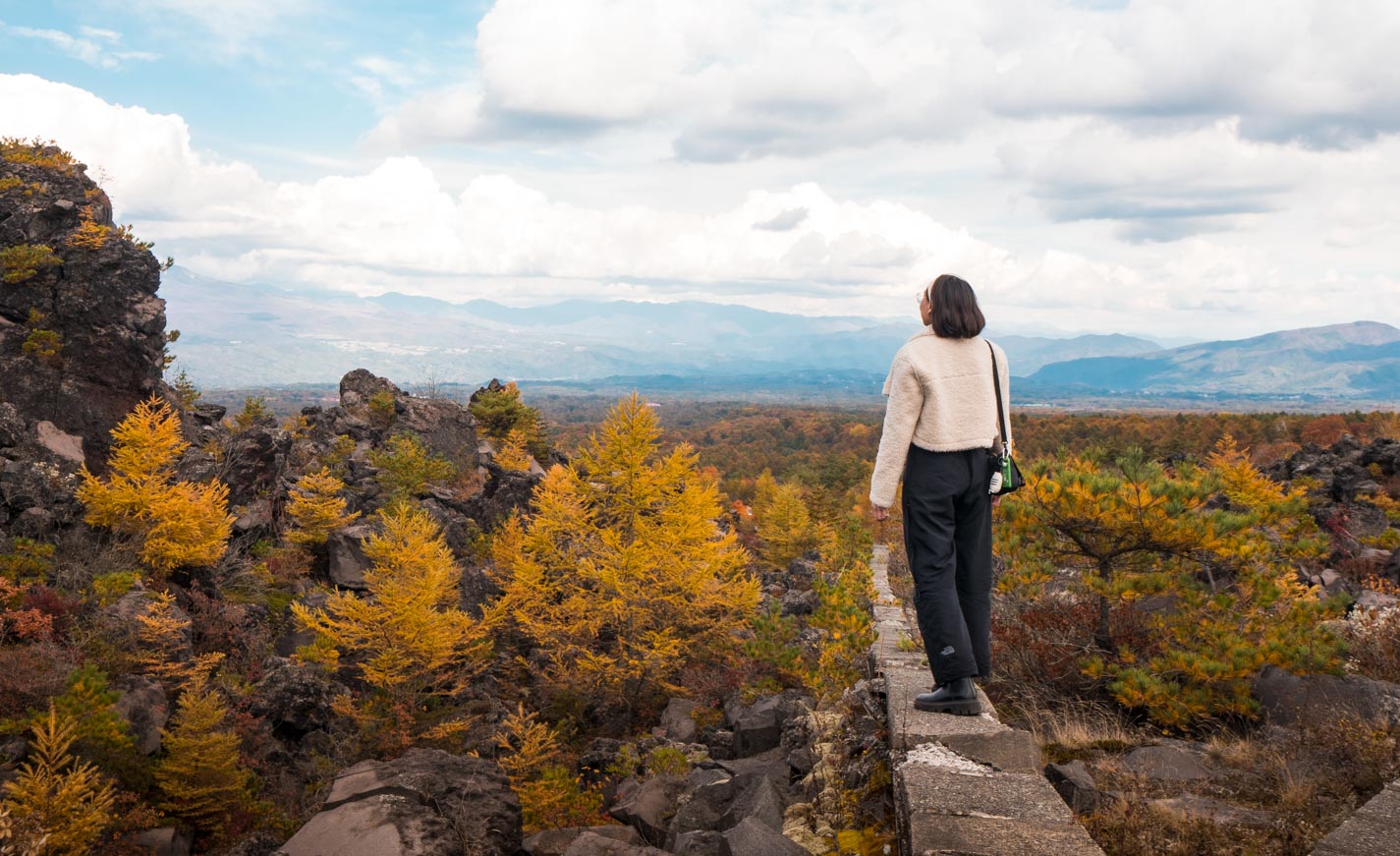
Discover new hidden gems, try a new sport, and satisfy your inner Ghibli fan in this Tokyo itinerary, perfect for solo travellers.
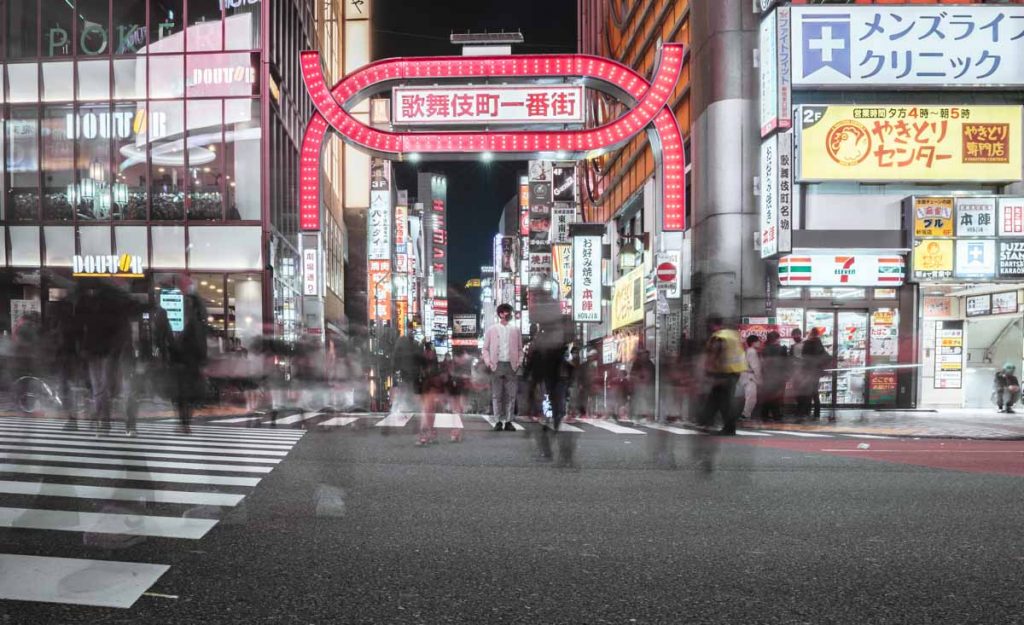
We love Tokyo. It’s fast-paced, busy, and exciting. But after hitting all the obvious must-sees in Tokyo , I’ve discovered that it also has a quieter, more contemplative side that often gets overlooked.
In this Tokyo itinerary, join me in exploring the city’s hidden gems — from quaint back alleys to off-the-beaten-path neighbourhoods, and even a trip to the nearby picturesque town of Karuizawa.
Day 1: Hidden gems in the city
Shimokitazawa hipster neighbourhood.
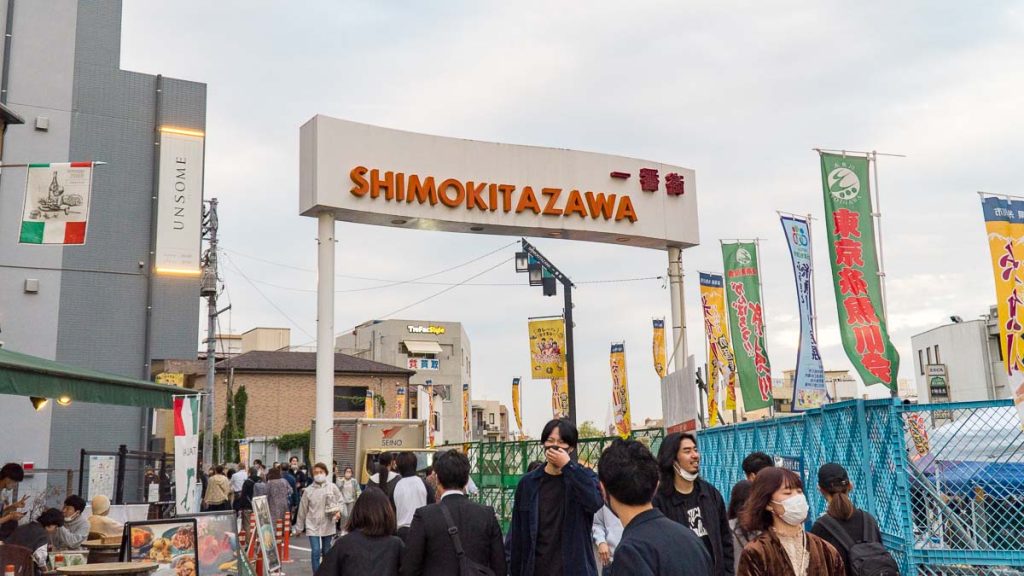
Starting off in Shimokitazawa — a neighbourhood with laid-back vibes, trendy cafes, indie cinemas, and quirky street art. You could say it’s the alternative youth culture of Tokyo.
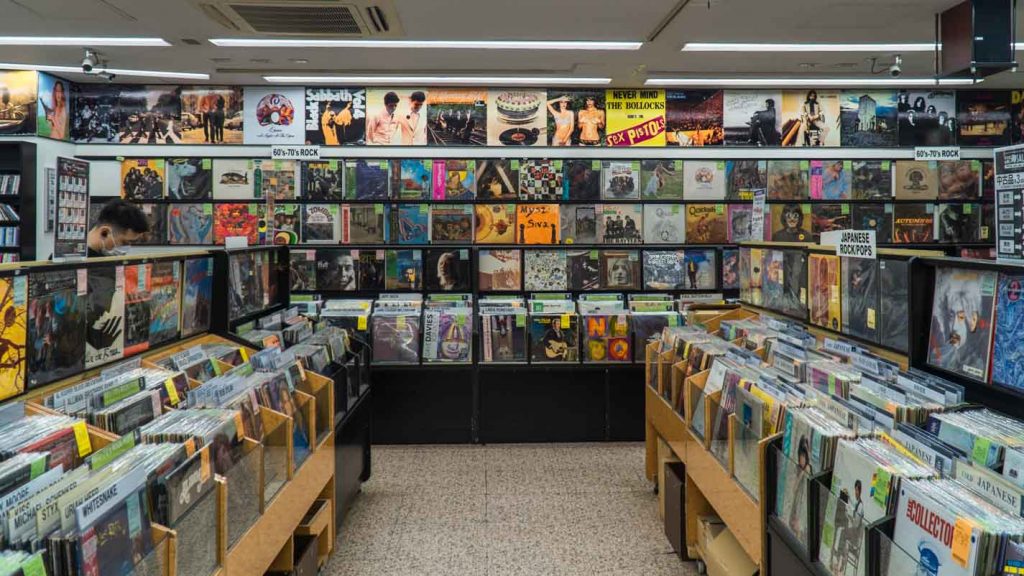
Its narrow streets are filled with trendy and affordable shopping from vinyl records at Disk Union to vintage finds at Chicago .
How to get there: From Shinjuku station, take the Odakyu Line to Shimokitazawa Station
Read more: 7D6N Japan Itinerary Under S$1.5k — Road Trip from Tokyo to Mt. Fuji and Beyond
Seafood Bar Ermitage
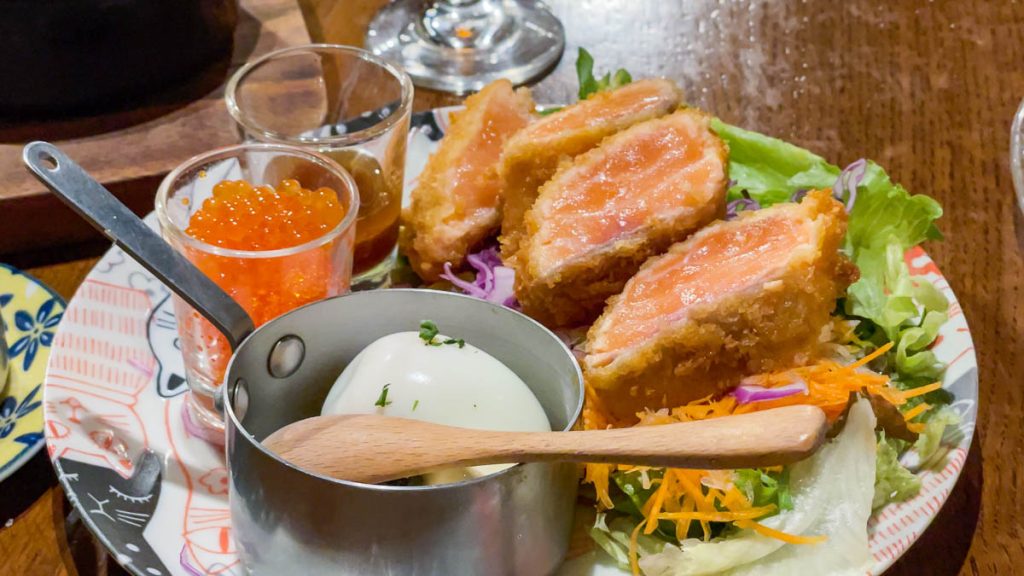
Nestled in a quiet street in Yoyogi district, Seafood Bar Ermitage is an Italian restaurant with a unique specialty — salmon sashimi katsu!
The katsu is perfectly crispy outside with raw sashimi on the inside (how?!). And it came with a generous serving of ikura to pour over the salmon which made it extra umami 🤩
Opening hours: 11:30AM – 11PM, opens at 11AM on weekends How to get there: From Minami-Shinjuku and Yoyogo Station walk 5min
Tokyo Dome City
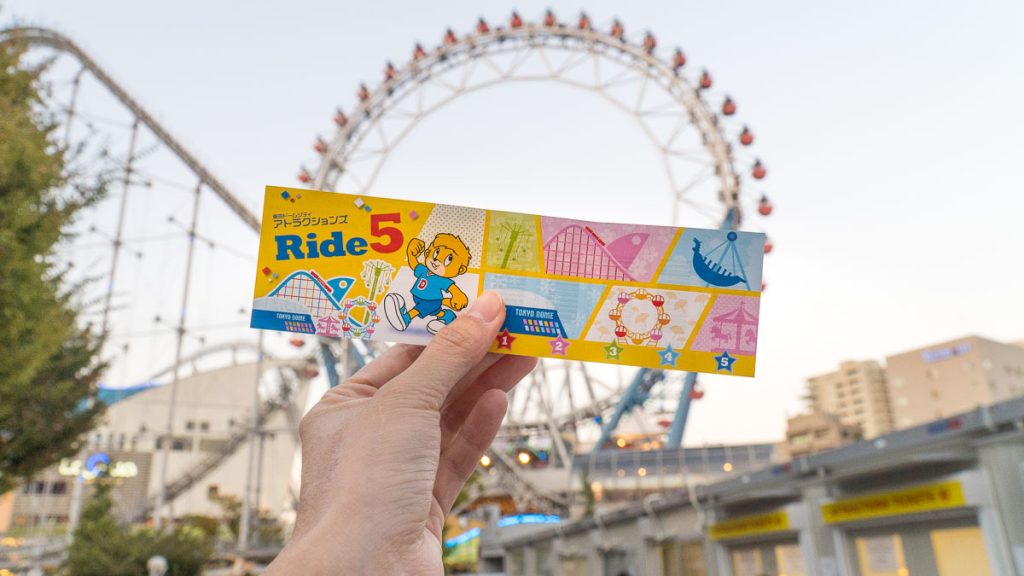
One of the best theme parks for a solo itinerary is Tokyo Dome City !
This lesser-known theme park is close to the city but it’s far from crowded. It has all the classic rides like the tea cups, a wild roller coaster, and even a water ride.
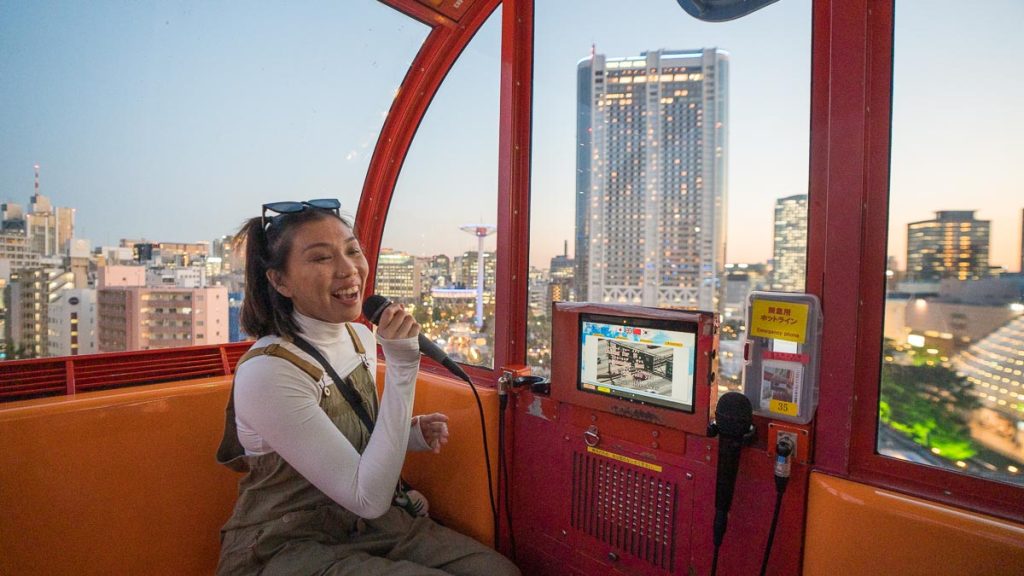
My absolute fave was Big O, a centreless Ferris wheel with karaoke! Each ride was 15 minutes, allowing me to sing my heart out in the privacy of my pod for three songs! You can bet I covered the staples like I Want It That Way, Baby and If I Ain’t Got You 🎤
The queues weren’t too long and moved pretty quickly, so you could hop back in for another round or two.
What’s cool about Tokyo Dome City is that the attractions are built around a mall. So when you’ve had your fill of adrenaline, easily grab some food or unwind with some shopping!
Entrance fee: From ¥2,800 (~S$25) Opening hours: Varies How to get there: Take the JR Chūō-Sōbu Line to Suidōbashi Station
Read more: Universal Studios Japan vs. Tokyo Disney Parks — Which Japan Theme Park to Visit?
Day 2: Ghibli-esque Attractions
Tokyo is home to the Ghibli Museum , but if you didn’t manage to get tickets in time (like me), here are some Ghibli-esque attractions to fill your itinerary instead!
Edo-Tokyo Open Air Architectural Museum
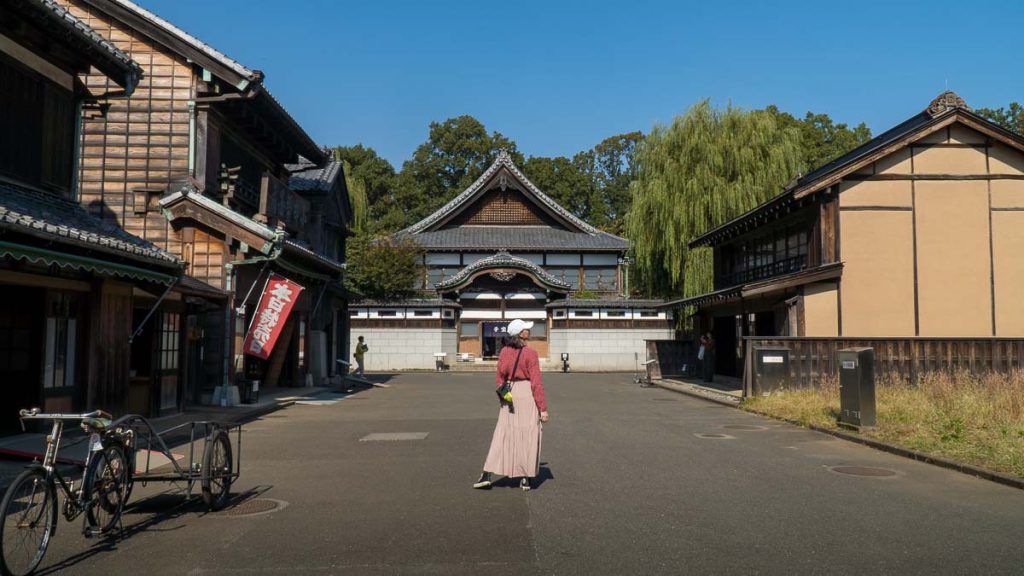
As a huge Spirited Away fan, I love finding similar bathhouses around the world — there’s the original one in Matsuyama City and a replicate in Taiwan !
So when I saw the Edo-Tokyo Architectural Museum had an old town that looked like the movie, I had to see it for myself.
This unique open-air museum showcases a mix of Edo and Tokyo’s historical buildings. It was so interesting to see how Tokyo’s architecture evolved through the years, from traditional farmhouses to Victorian-inspired homes.
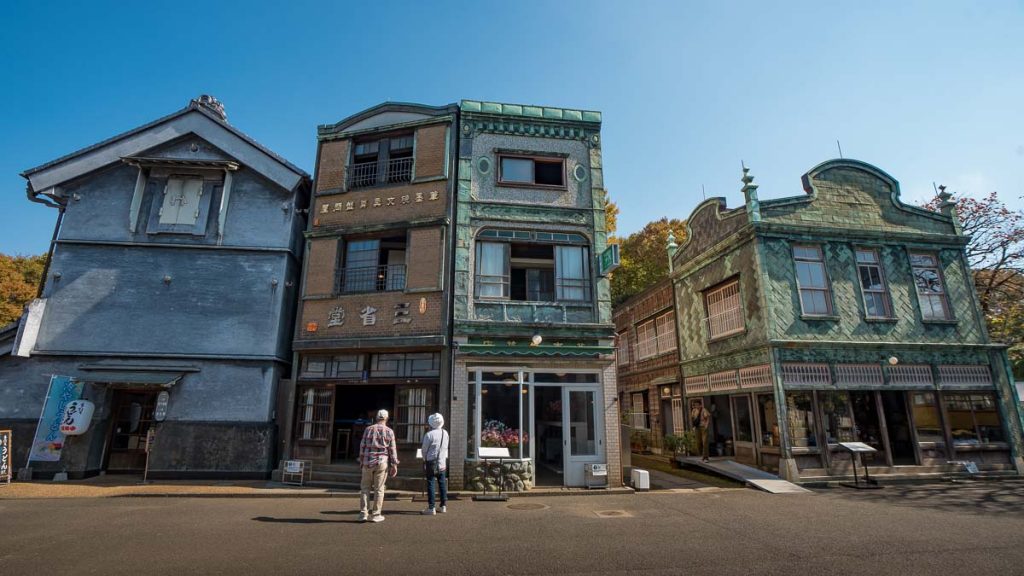
The area that felt most like the town in Spirited Away was the reconstructed downtown area. It had everything from a flower shop to a stationary shop and even a grocer! No detail was spared in the recreation of each store — the props and signages really transported me back to the early 1900s.
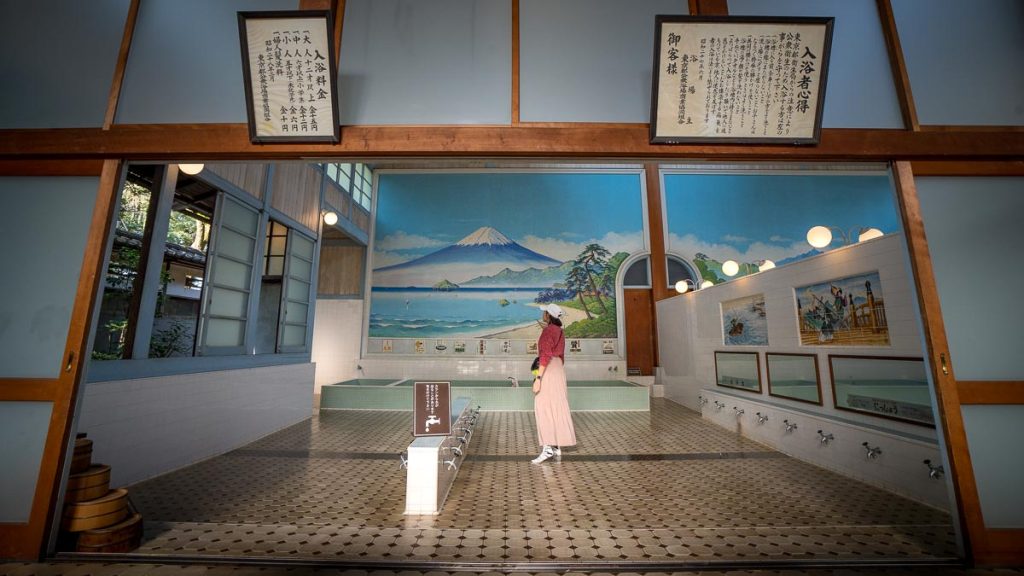
The cherry on top for me was the Kodakara-yu — a replicate of a typical Tokyo public bath found at the end of the street. It had deep tubs and gorgeous mountain murals, I could imagine how relaxing the place must’ve been for folks back then.
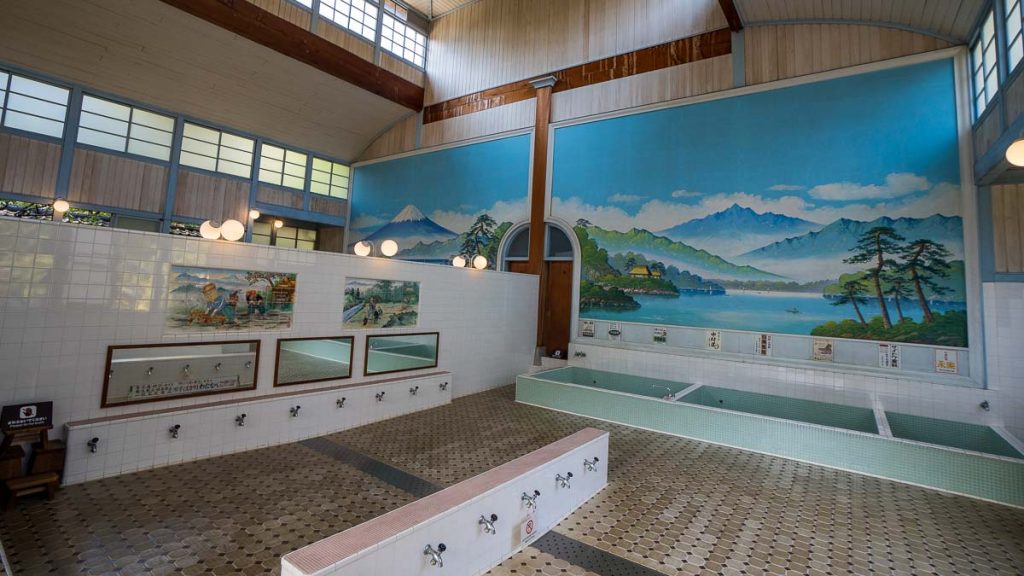
Although it isn’t as massive as the iconic bathhouse from Spirited Away, the magical ambiance was enough to get a glimpse of how it might have inspired Hayao Miyazaki .
Entrance fee: ¥400 (~S$4) Opening hours: 9:30AM – 4:30PM (Oct – Mar), 9:30AM – 5:30PM (Apr – Sep), closed on Mon How to get there: Take the JR Chuo Line to Musashi-Koganei Station, then take the bus 15 or 21 to Koganei-koen-nishiguchi, walk 6min
Meikyoku Kissa Lion (Music Coffee House)
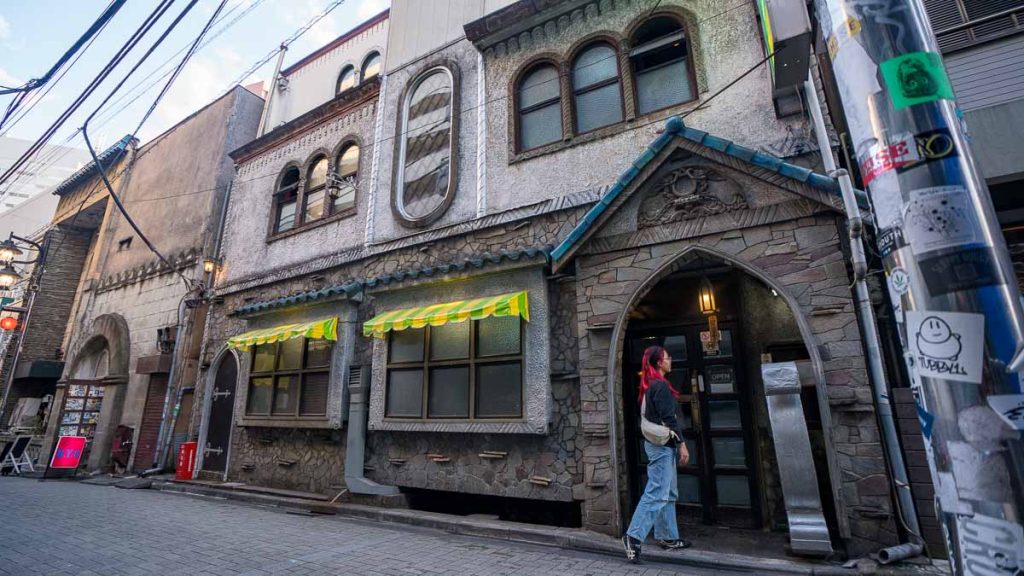
Stepping into Meikyoku Kissa Lion felt like I was entering my own Ghibli film. This music cafe features a similar whimsical look to Ghibli films like Howl’s Moving Castle and The Secret World of Arrietty , giving off the same enchantment from watching the films.
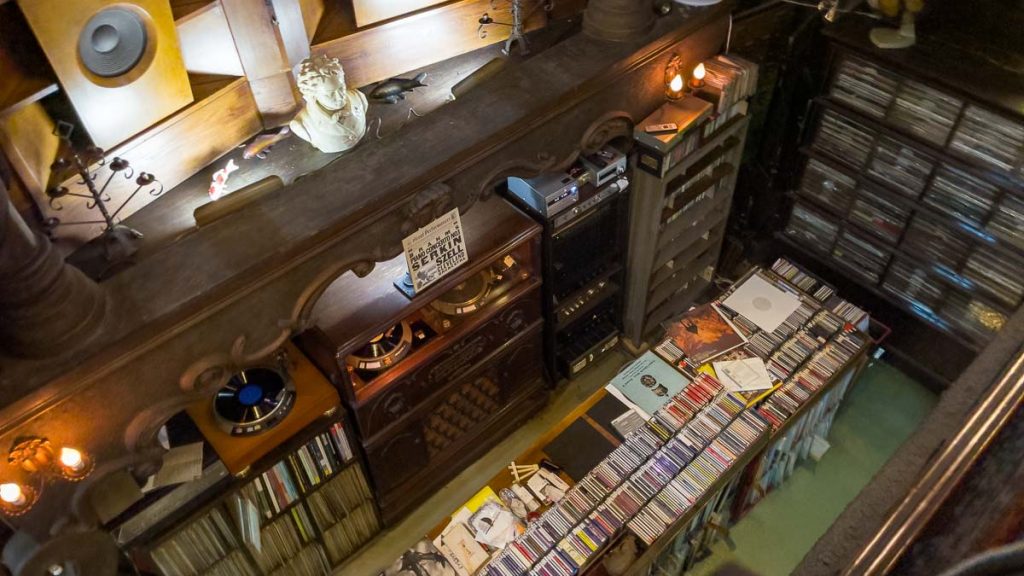
Withstanding the test of time, since the 1920s — the vintage interior felt like a movie set. Upon entering, there’s a warm, crackling sounds of classical vinyl, my Ghibli soundtrack 😌
The two-story cafe was rather empty, except for some older folks, who all sat facing the towering wall of speakers and extensive collection of vinyl records.
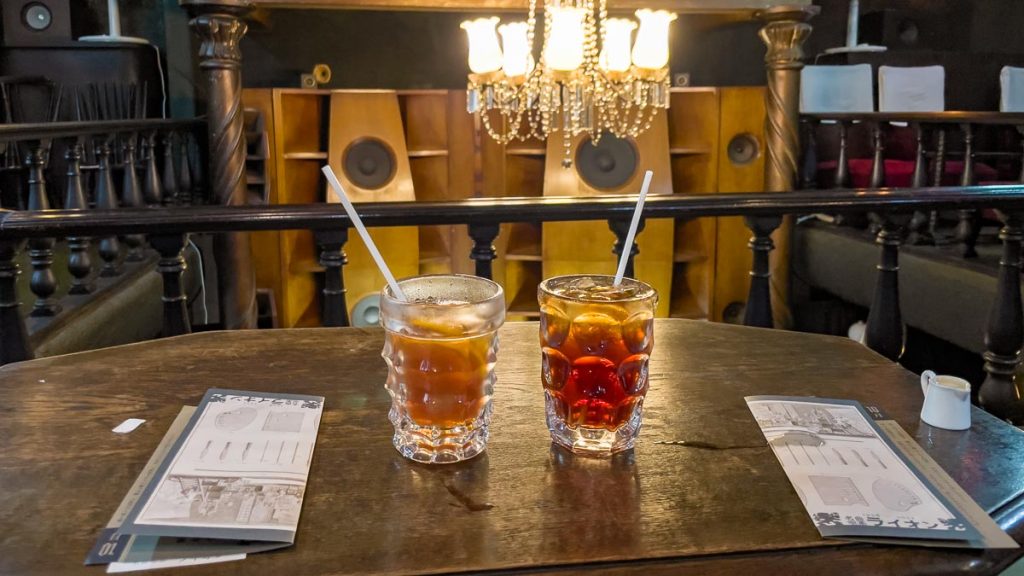
I’d never experienced a space like this before and honestly felt a bit lost. I saw an older gentleman close his eyes to enjoy the music and decided to do the same. Such a lovely way to dedicate time to your itinerary to unwind in the middle of bustling Tokyo!
The day’s music is mostly decided by the staff but guests are welcome to put in song requests.
Opening hours: 1PM – 8PM How to get there: Take a train to Shibuya Station, walk 5min
Nitelle Tower
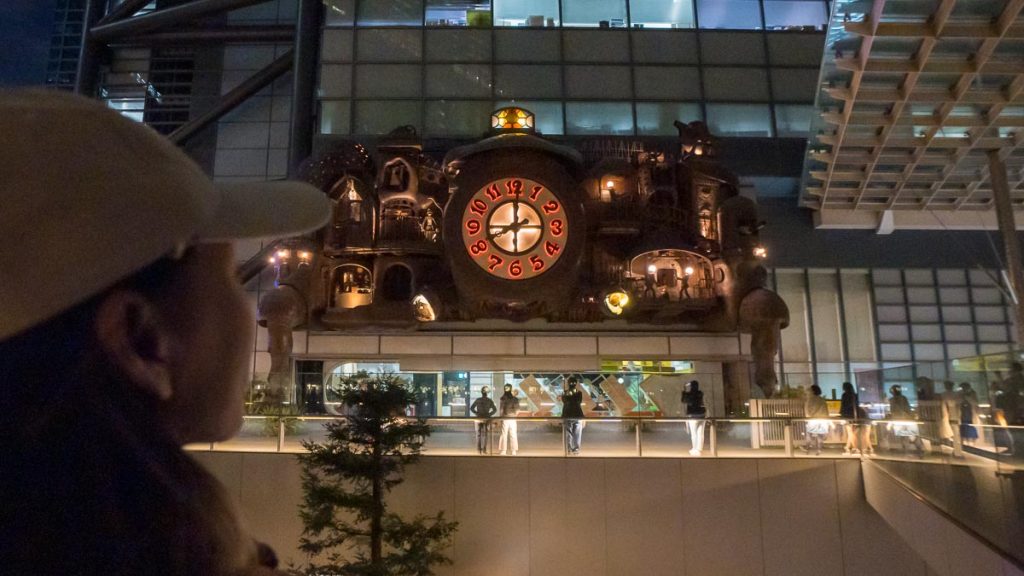
Ghibli Park isn’t the only place to see Howl’s Moving Castle in real life.
Right on Nitelle Tower is a giant clock designed by Hayao Miyazaki himself. It’s not exactly Howl’s Moving Castle, but it definitely carries the same vibe and aesthetic. Especially when it lights up and comes to life!
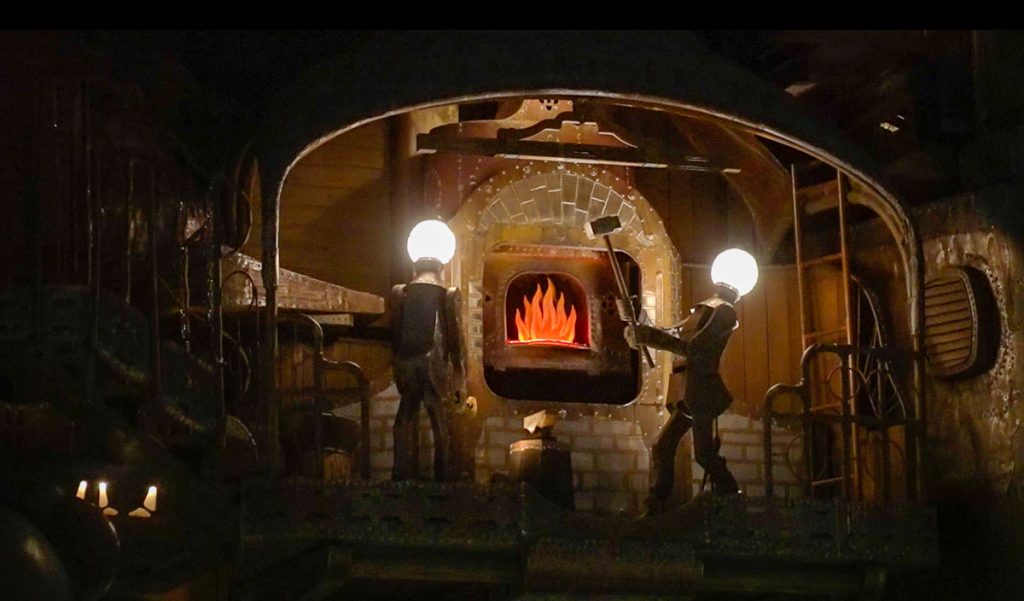
Time itself stands still during its show times as you watch different parts of the clock spin and dance like a tin toy from the 19th century. My favourite bit is when the flame descends upon the two blacksmiths as they get to work — the little flame is Calcifer , don’t convince me otherwise!
The clock comes to life at 12PM, 3PM, 6PM and 8PM daily, and once more at 10AM on weekends.
How to get there: Take a train to Shimbashi Station, walk 3min
Read more: 13 Iconic Anime Locations to Add to Your Japan Itinerary
Onigirimamma
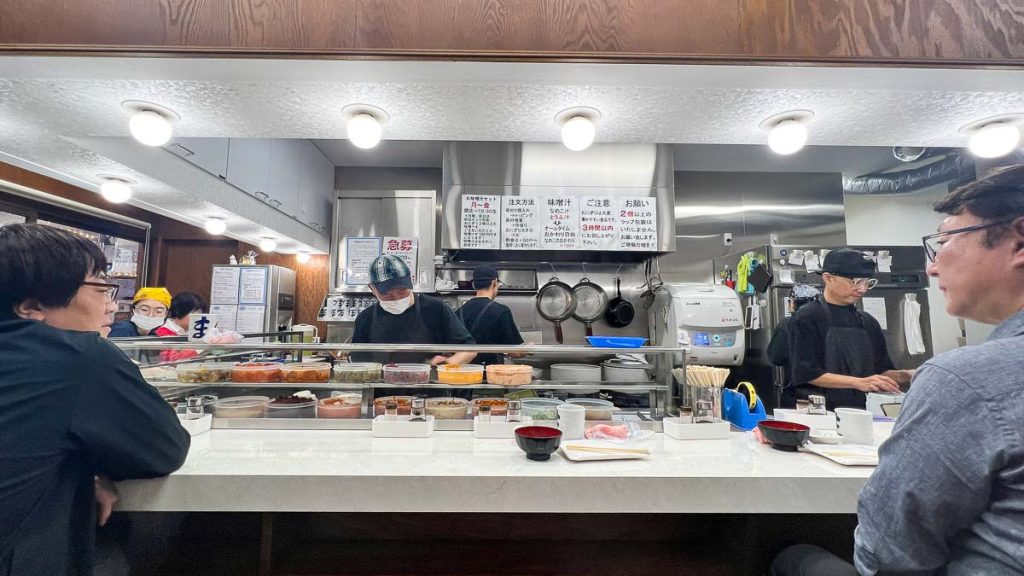
One of my favourite scenes in Spirited Away was when Haku offered Chihiro onigiri to comfort her. It was a moment that gave Chihiro hope and ignited the friendship between the two. I had a similar welcoming experience with the Japanese staple when I visited Onigirimamma .
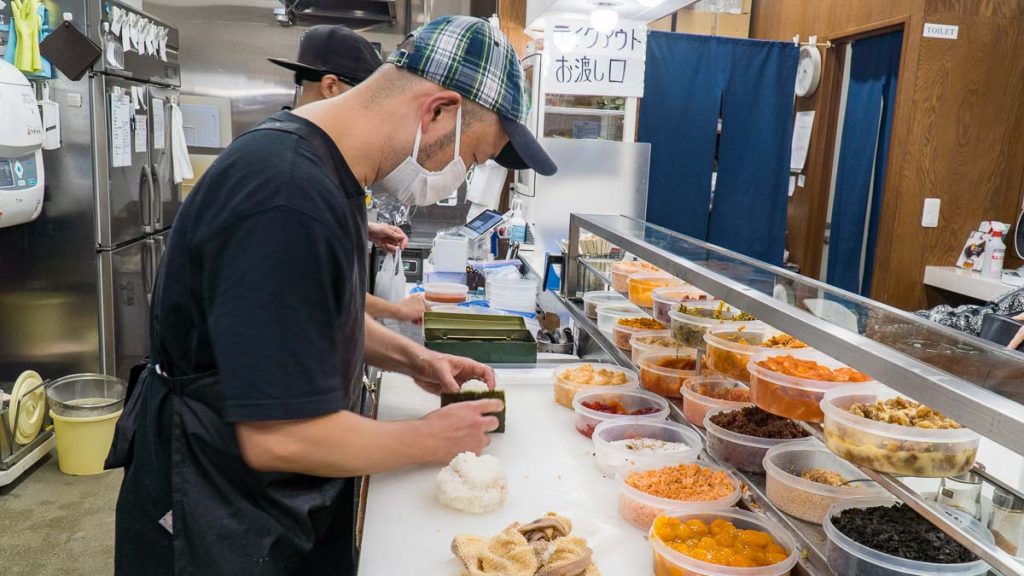
I arrived an hour before closing when they only do takeaway orders. However, the chef cheerfully let me in and told me to take a seat. This small diner has an old-school vibe with only counter spots, and I loved sitting in front of the chef, watching him skillfully craft each onigiri!
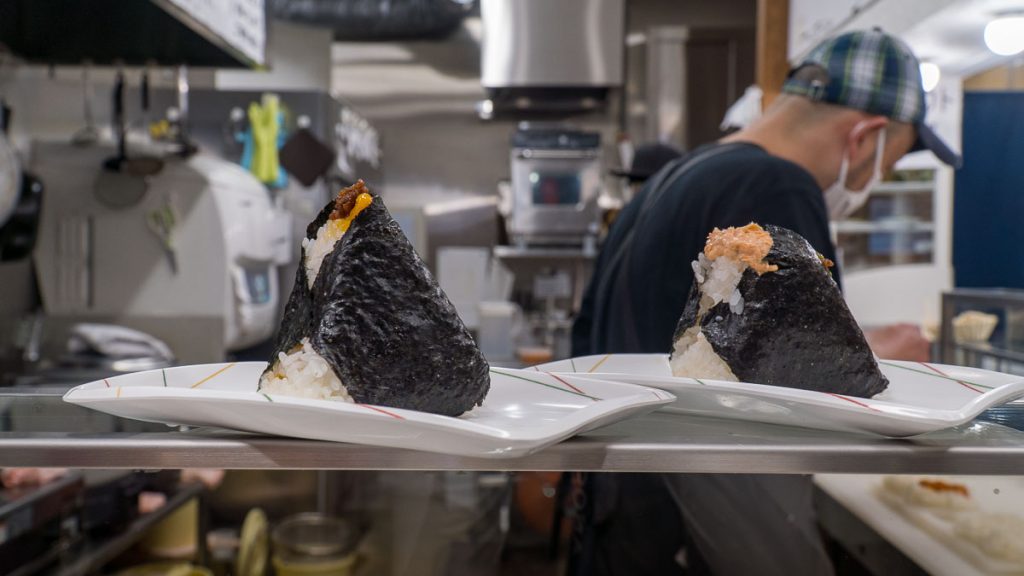
I ordered the salmon with mayo (¥350) and their recommendation — egg yolk with sweetened ground meat (¥550). The onigiri is huge with just as much tasty filling as there is rice 🤩 You can bet I scuffed it down the same way Chihiro did.
It’s the sister shop of the famous Onigiri Bongo in Toshima City, but the crowds are less and the food is just as good 🍙
Opening hours: 11:30AM – 8PM How to get there: Take a train to Shinjuku-sanchome Station, walk 1min
Day 3-4: Karuizawa
Next up on our itinerary is a popular holiday destination locals love, just an hour’s train ride from Tokyo!
Where to Stay in Karuizawa
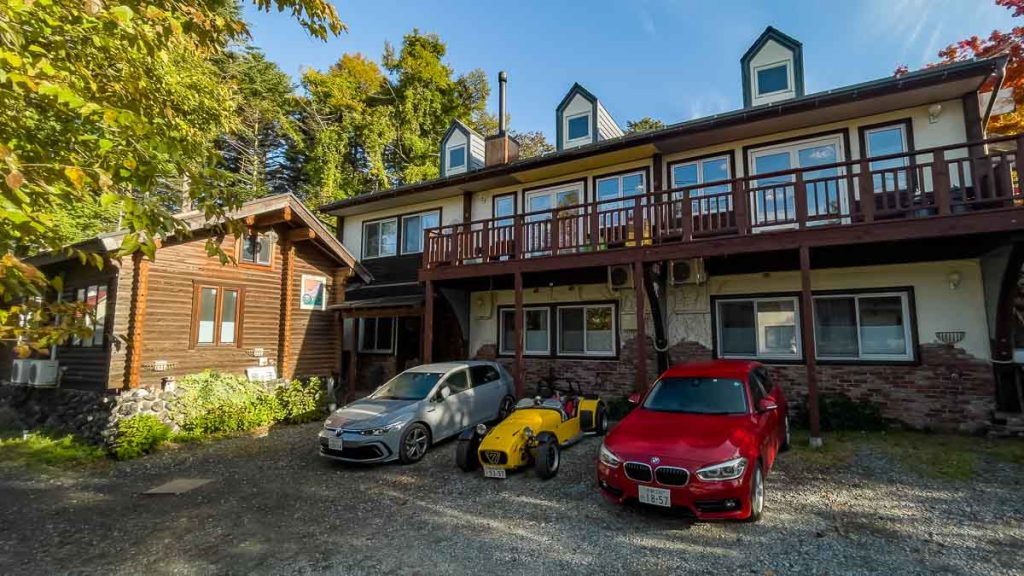
I took a morning train into Karuizawa and checked into a cosy little cabin called Hoshinoko Lodge (¥11,157/night). There are many lodges in Karuizawa, but I enjoyed how homely and quiet this one was.
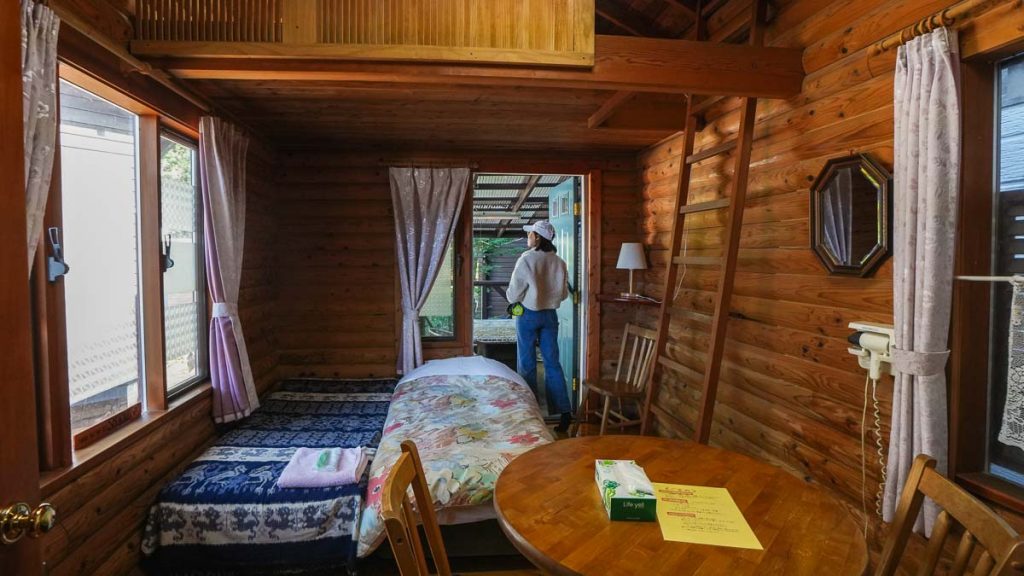
I stayed in the cottage room which was spacious with a small kitchenette and dining area. There were also amenities like a stove and microwave.
It’s close to Nakakaruizawa Station and is about a 15-minute walk.
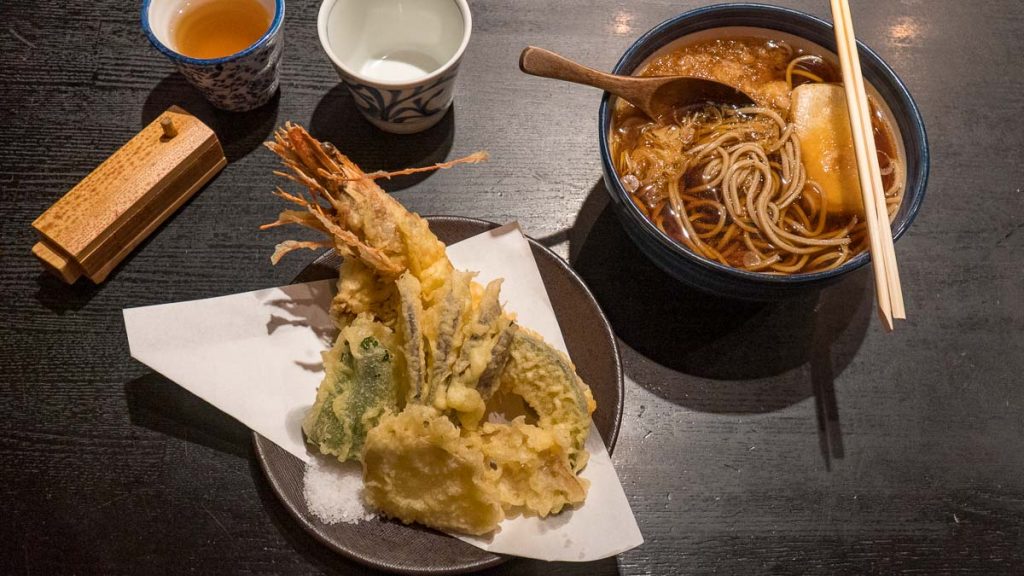
Karuizawa is well-known for its soba. Some locals told me the best place to go is Kawakamian . When I arrived and saw the long queue, the Singaporean in me got very excited — the longer the queue, the better the food, am I right?
I ordered the standard Tempura Soba (¥2,100) which came with hot soba noodle soup and a side of prawn and vegetable tempura! The tempura was light and overall a comforting meal.
Opening hours: 11AM – 10PM How to get there: From Karuizawa Station North Exit take bus 1 or 8 to Kyu-Karuizawa
Old Karuizawa Shopping Street
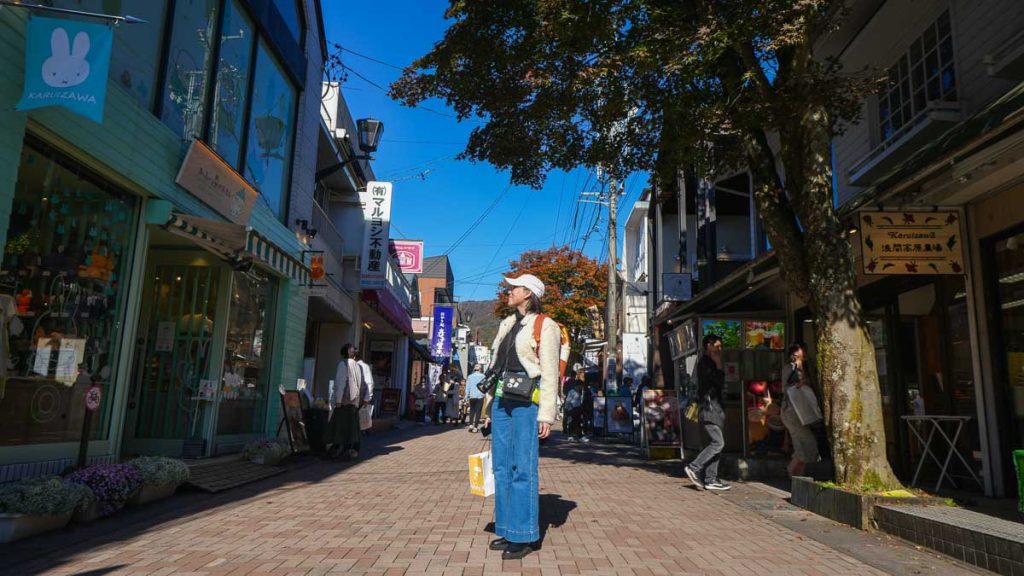
Just a 5-minute walk from the restaurant was Old Karuizawa Shopping Street . This long shopping stretch had many little honey shops, boutiques, and cafes.
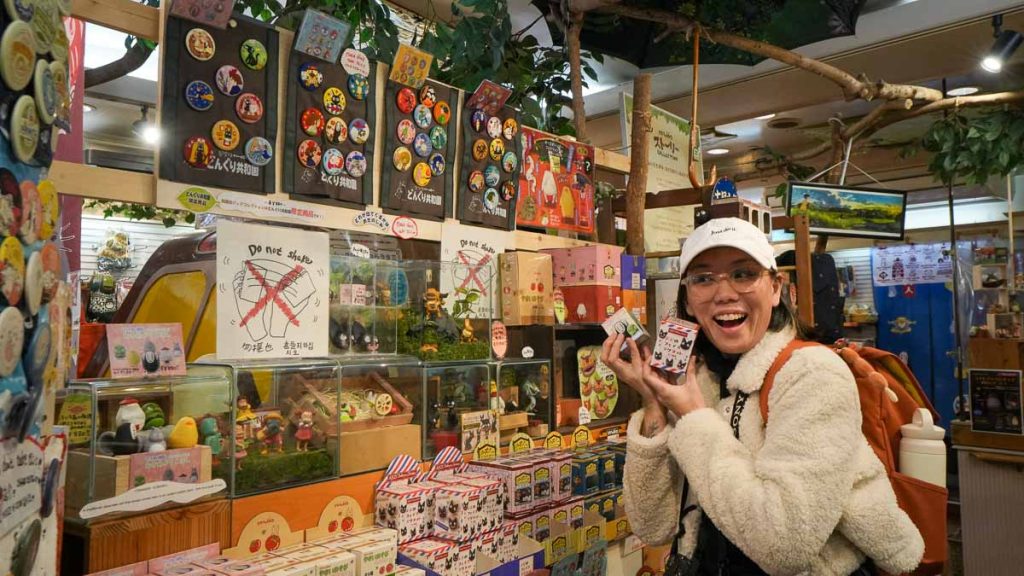
I was pleasantly surprised by the number of character shops it had too, from the Miffy bakery to Peter Rabbit, Snoopy Village, and even the Ghibli store !
Kumoba Pond
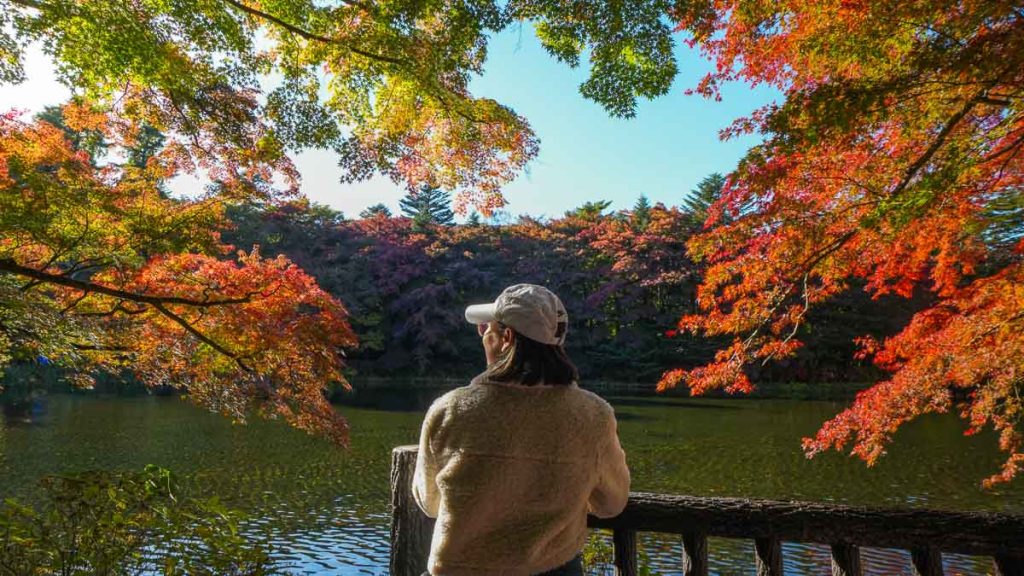
Once you’re done at the shops, unwind at the serene Kumoba Pond . Being there at the peak of autumn meant seeing the whole area gleaming in vibrant hues of red and orange 🍁
The space isn’t huge but a leisurely stroll round the pond takes about half an hour. Don’t be shy to ask strangers to help you snap a pic!
Opening hours: 24 hours How to get there: Take bus (Seibu Kanko Bus) to Roppontsuji/Kumobaike, walk 8min
Mikuriya (かまど炊きご飯 御厨)
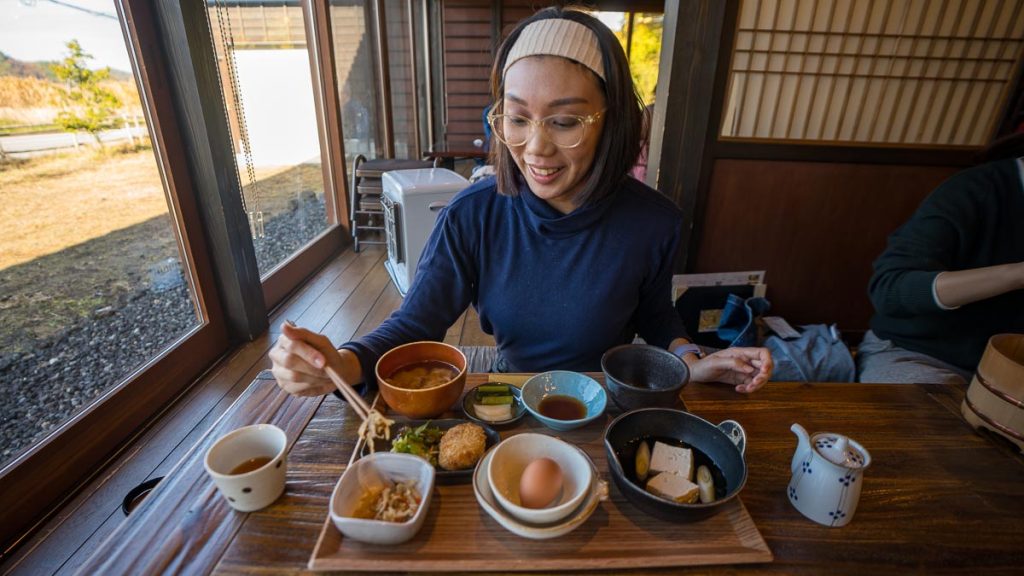
In Japan, they take breakfast very seriously — truly their most important meal of the day! Many locals who travel to Karuizawa make it a point to get the breakfast bento sets at Mikuriya .
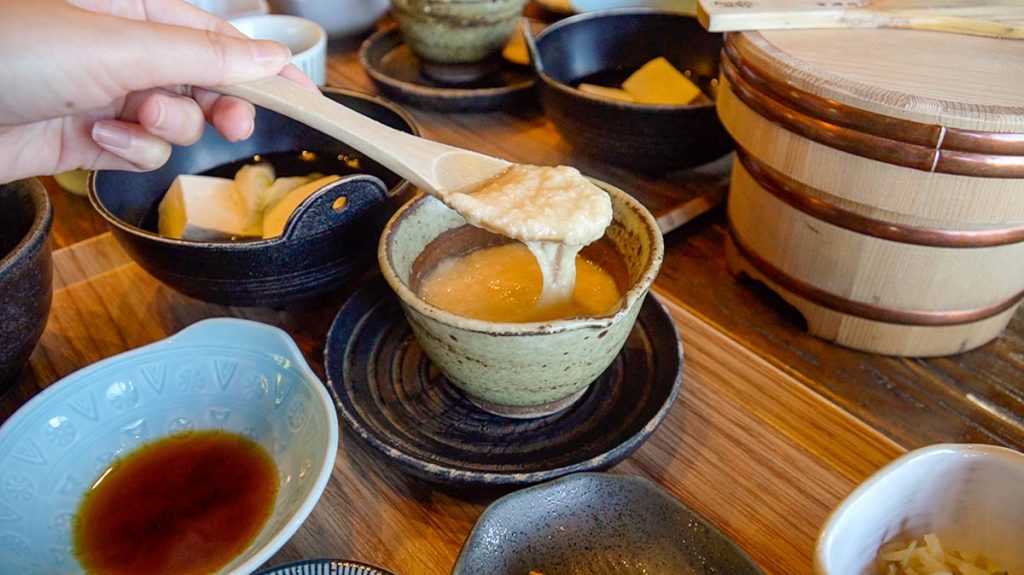
The most popular set is the Tororo (sticky grated yam) with grilled salmon. The Tororo here is apparently one of Japan’s best as it’s mixed with miso paste, giving it a lot more flavour than it would otherwise. It’s served chilled (super refreshing) and goes so well with rice 🍠
Cost: From ¥1,470 (~S$13) Opening hours: 7:15AM – 2:15PM How to get there: From Karuizawa Station (Karuizawa Eki) take a bus (Naka Karuizawa Keiyu New Town Homen) to Shimo Hotchi, walk 5min
Onioshidashi Park (鬼押出し園)
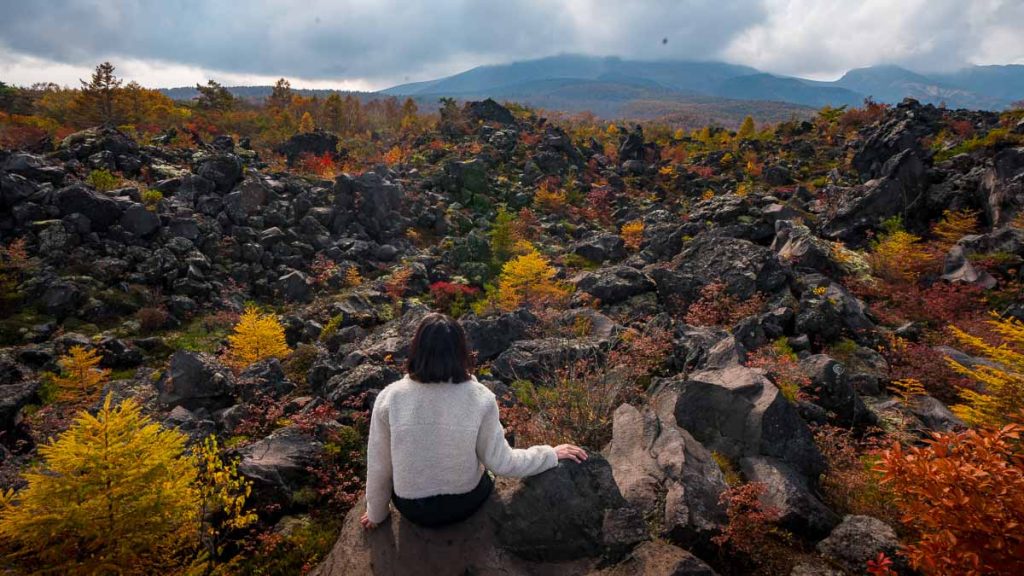
Onioshidashi Park is a hidden gem slightly out of Karuizawa. Its jagged landscape is shaped by volcanic rocks from Mount Asama’s big eruption in 1783. I loved how the black rocky terrain contrasts against the fiery autumn leaves — felt like another world!
Entrance fee: ¥700 (~S$6) Opening hours: 8AM – 5PM How to get there: From Karuizawa Station take a Seibu bus (¥1,230, operates hourly) — check with the bus caption that the bus goes all the way to Onioshidashi Park.
Karuizawa Ice Park
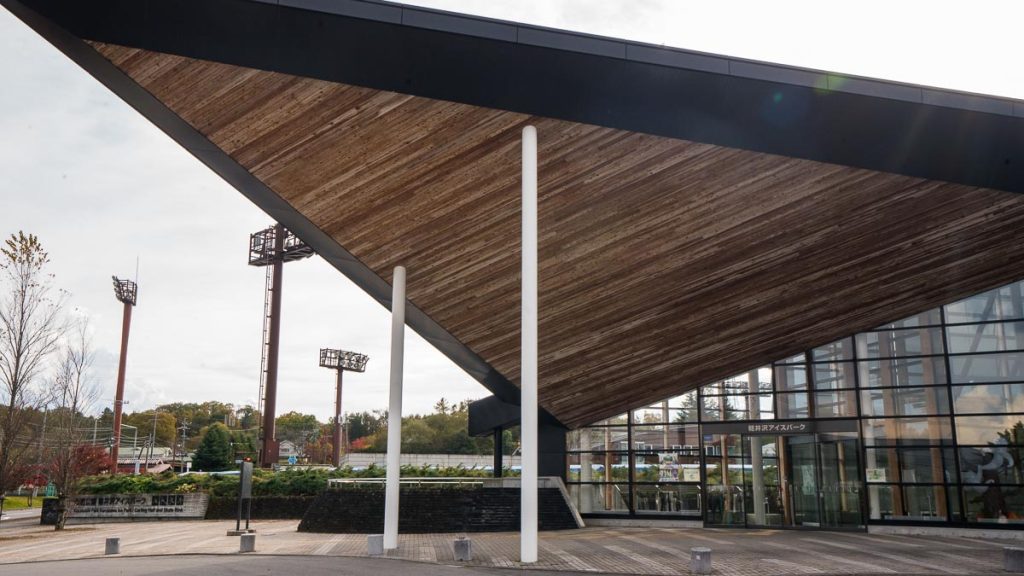
One of the best things to do on a solo trip is to pick up a new sport. Karuizawa is known for its comprehensive sports facility Karuizawa Ice Park , which makes sense since it’s the only town in the world to host both the Summer and Winter Olympics in 1998!
The space is dedicated to Curling — something I had a go at on a previous trip in Scotland so I was excited to try my hand at it again.
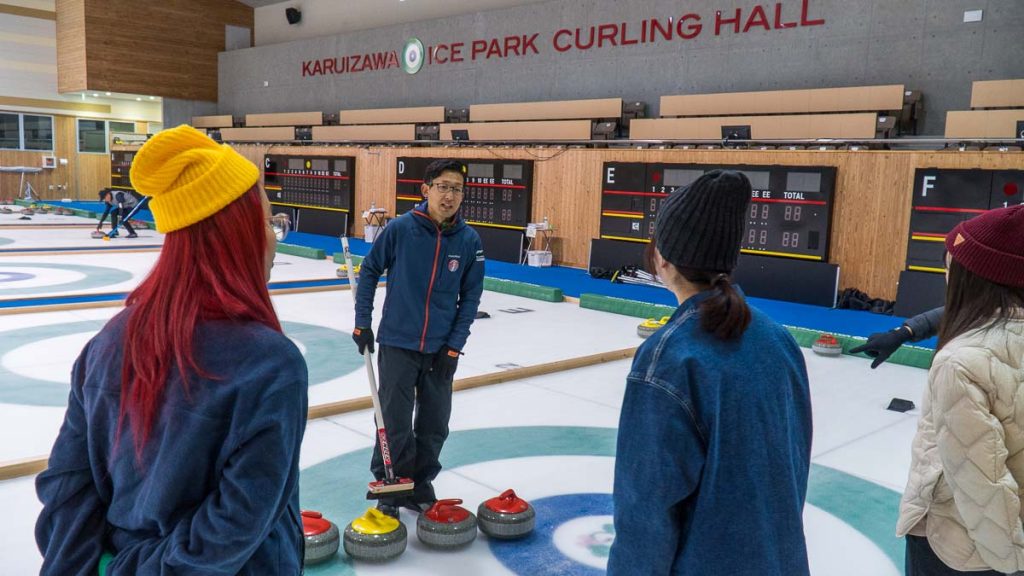
Most of our first impressions of Curling are that it’s a low-impact sport that involves a broom. However, in my 90-minute session, we dove deep into posture, strength control, and the game’s strategies. Safe to say, it’s a lot more than just scrubbing ice 🧹
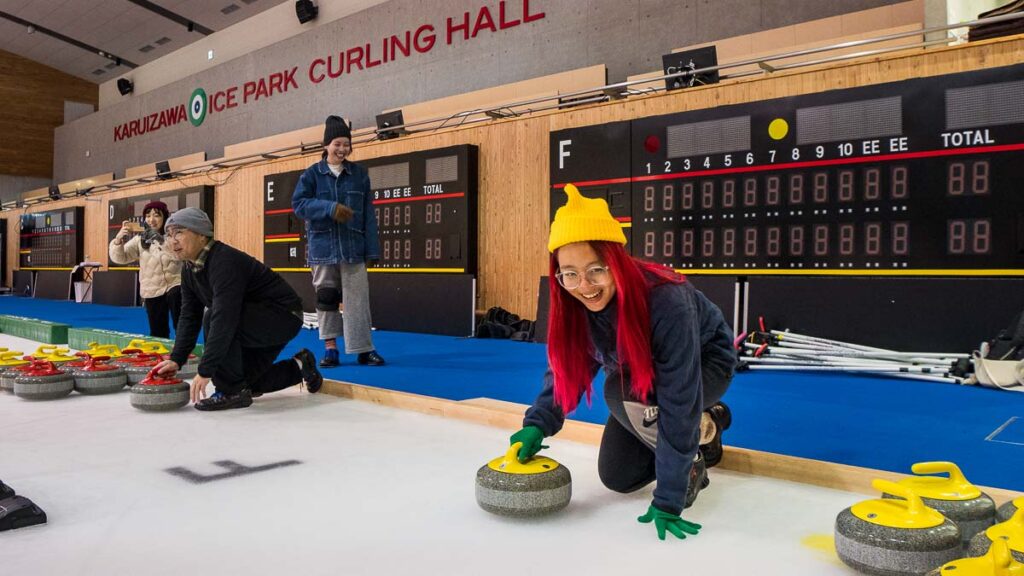
Just like any sport, gear is extremely important — we wore slider and gripper shoes, gloves, and a beanie to protect our heads.
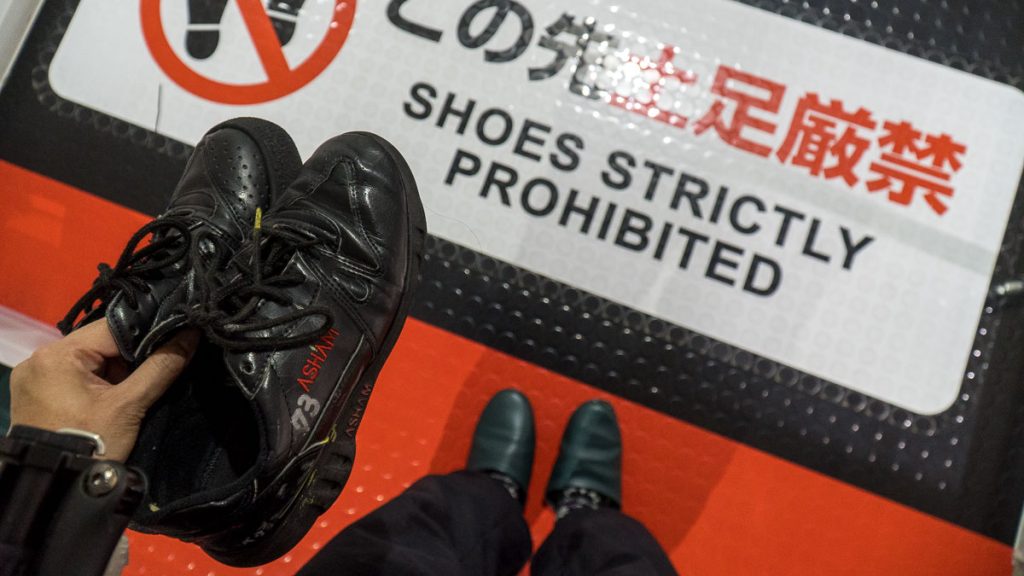
The curling shoes had rubber soles that gripped the ice, and one side was removable for sliding on the ice. It was super slippery without the rubber sole but our instructor made sure we practised how to move and stand up safely on the ice 🧊
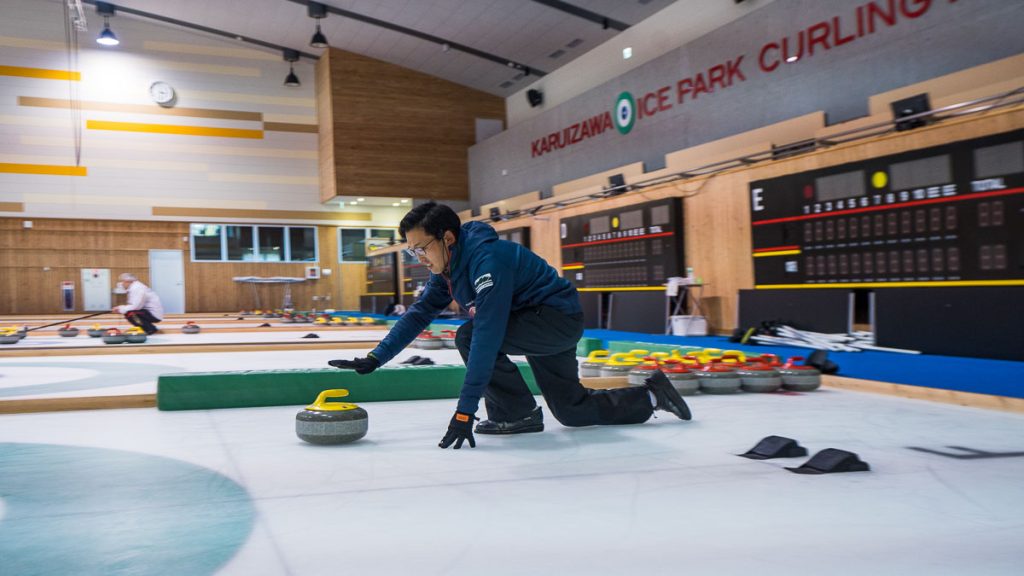
Once we got comfortable on the ice, we moved on to practice rounds of throwing stones into the House (the four-ring target at the end of the ice sheet) and taking stones out of the House.
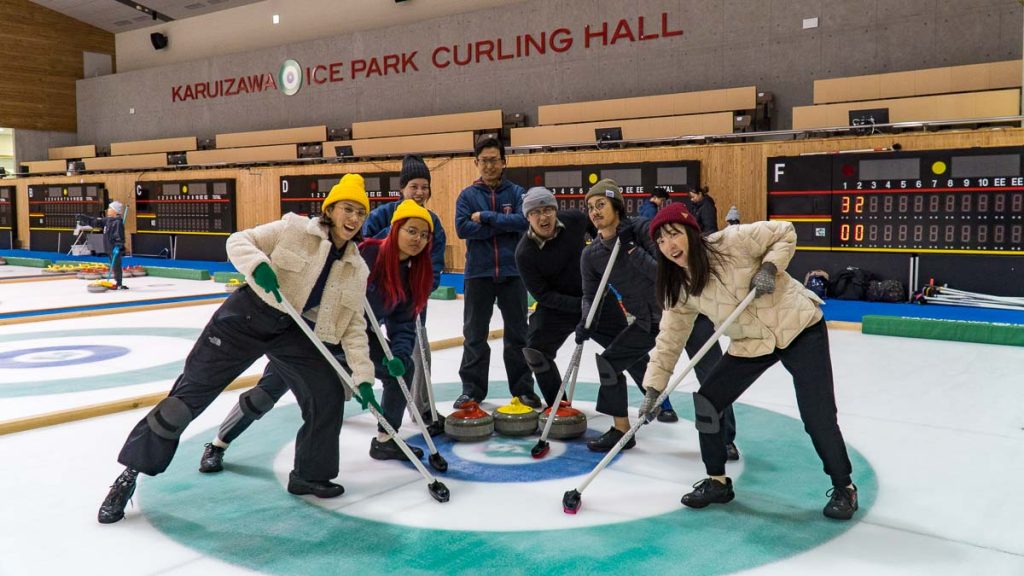
The real lesson started once we had our mini-match. The class was split into two groups and the game was intense . It was a lot of strategising because we had to try and knock our opponents’ stones out while keeping as many of our stones within the House (the closer to the centre the better).
The toughest part for me was knowing how much force to use when throwing the stone — too hard and it goes past the House, too little and it won’t even make it across 🫠 But the most satisfying part is sweeping, especially when we manage to sweep our opponent’s stones out of the ring! Not to mention making new friends along the way 💯
Cost: ¥2,420 (60min session), ¥3,410 (90min session), ¥4540 (120min session), book on website or email [email protected] Opening hours: 9AM – 10PM How to get there: From Karuizawa Station (Karuizawa Eki) take a bus (Minami Karuizawa Keiyu New Town Homen) to Kazekoshi Koen, walk 3min
Day 5: Tokyo at a slower pace
Set aside some time in your itinerary to slow down and appreciate the quieter side of Tokyo.
Hekkelun (50 puddings cafe)
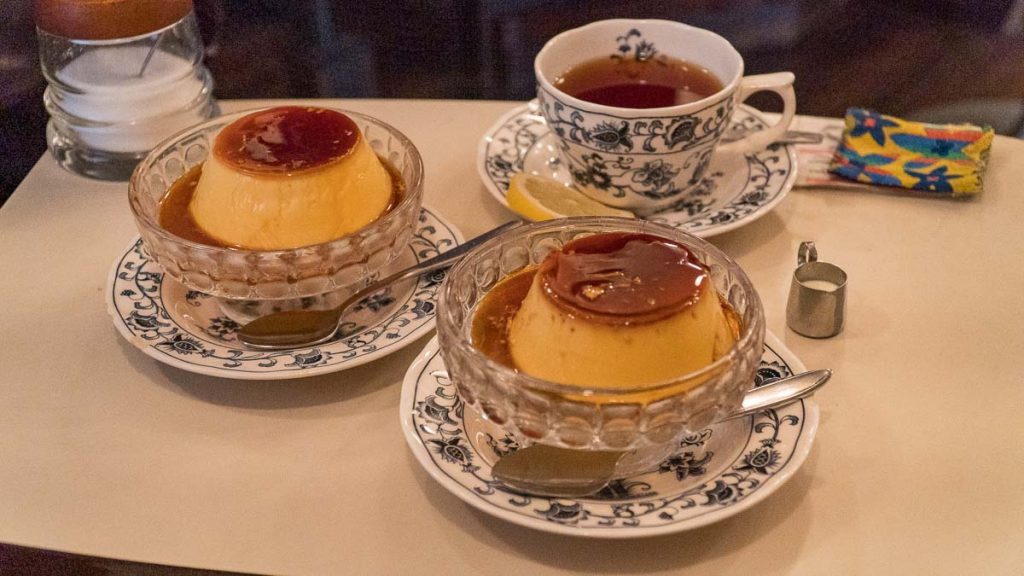
Tucked away in an alley in Shinbashi for over 50 years, Hekkelun is known for one thing — pudding 🍮 This classic coffee shop only serves 50 puddings a day, so you best be early before any queue even starts to form.
*Pro-tip: Be there an hour before opening or you’d have to wait almost two hours to get in.
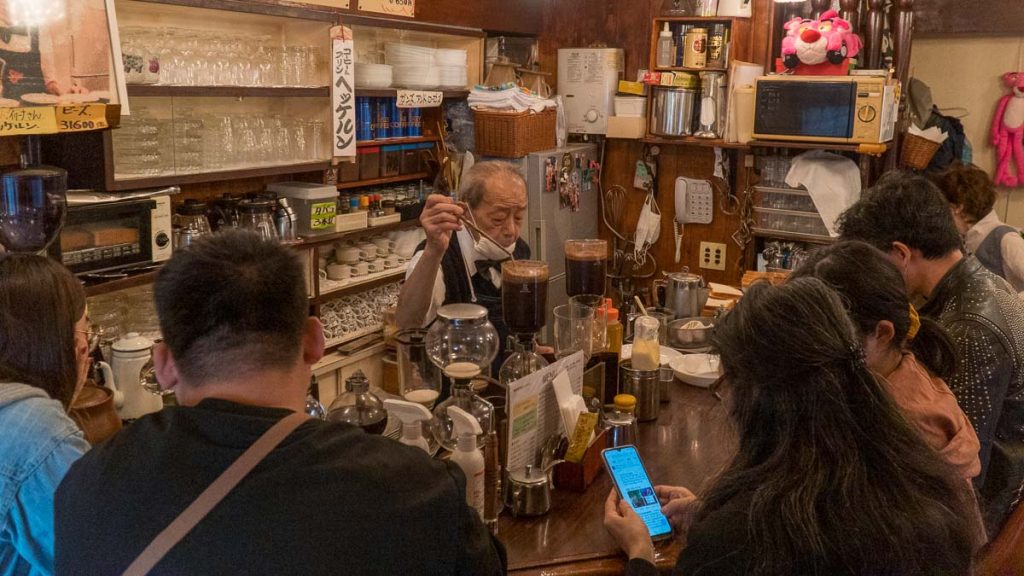
To manage the sheer volume of people, they take in guests in batches of 21. Everyone’s order is taken at one go, then served at one go, before paying and clearing out for the next group. Although this leaves people queuing for hours, it’s a lot more manageable for the elderly owners — they are so adorable and hard-working, you can’t even be mad!
And don’t worry, pudding isn’t the only thing on the menu. Hekkelun also has a variety of sandwiches and toasts that are super yummy too — I ordered a Coffee Pudding Set (¥900) and a honey toast (¥450).
Opening hours: 9AM – 5PM How to get there: Take train to Uchisaiwaicho Station, walk 5min
Rikugien Gardens (六義園)
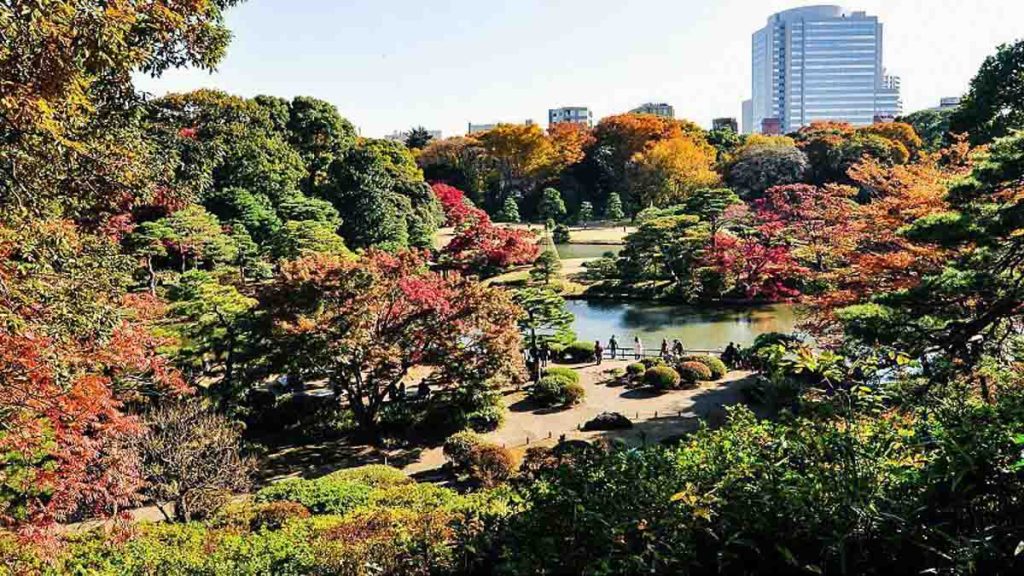
Photo credit: Japan Guide
Easily one of Tokyo’s most beautiful Japanese landscape gardens, the Rikugien Gardens is the perfect place to unwind and reflect on the trip. Located in the northern part of Tokyo, the gardens are beautiful in every season — from weeping cherry blossoms in Spring to the warm hues of Autumn. Stroll along the large central pond or explore the winding paths through forests and open lawns.
The gardens also have three teahouses, where you can stop for a traditional cup of matcha tea and a sweet treat 🍵
If you’re there in Autumn, stay after sunset and witness the park illuminate the night!
Entrance fee: ¥300 (~S$3) Opening hours: 9AM – 5PM How to get there: Take the JR Yamanote Line or Tokyo Metro Namboku Line to Komagome Station, walk 7min
Tokyo Pre-trip essentials
SIM card: Get a free 500MB SIM card from WAmazing — simply download the WAmazing app and request for the free SIM card before departure! Japan offers free wifi on most of its transport systems, so 500MB is enough for any use in between. And if you need more, just purchase via the app.
Transport: Avoid the hassle of constantly purchasing tickets with the JR Tokyo Wide Pass . This 3-day rail pass is perfect for this itinerary, giving you unlimited rides on trains and the Shinkansen * around Tokyo and its surroundings.
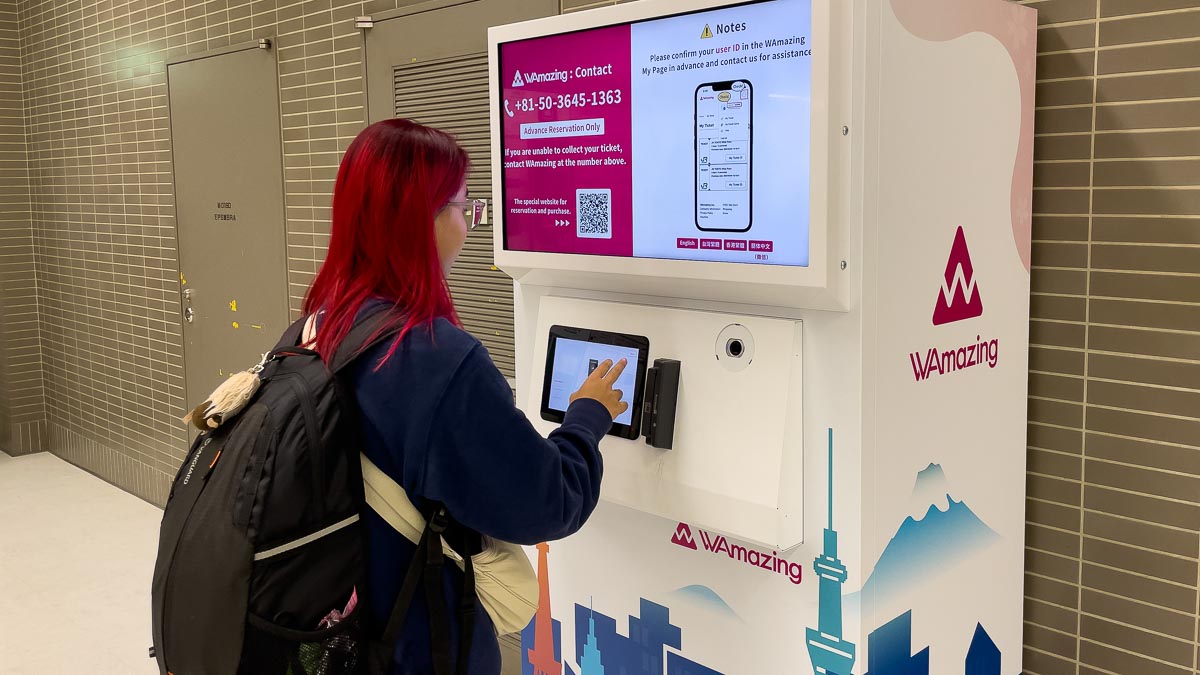
Pre-purchase your JR Tokyo Wide Pass via WAmzaing and easily redeem it from their machines at the airport!
Karuizawa Free Pass: This gets you unlimited rides all over Karuizawa. It includes rides on the Shinano Railway between Karuizawa and Komoro stations too. You can get either a 1-day pass (¥2500) or a 2-day pass (¥3600) from Karuizawa station.
* Arrive early to secure a non-reservation seat, or reserve your seats ahead of time at the ticket vending machine, JR EAST Travel Service Center or JR Ticket Office. You can also reserve seats online up to a month in advance.
Where To Stay in Tokyo
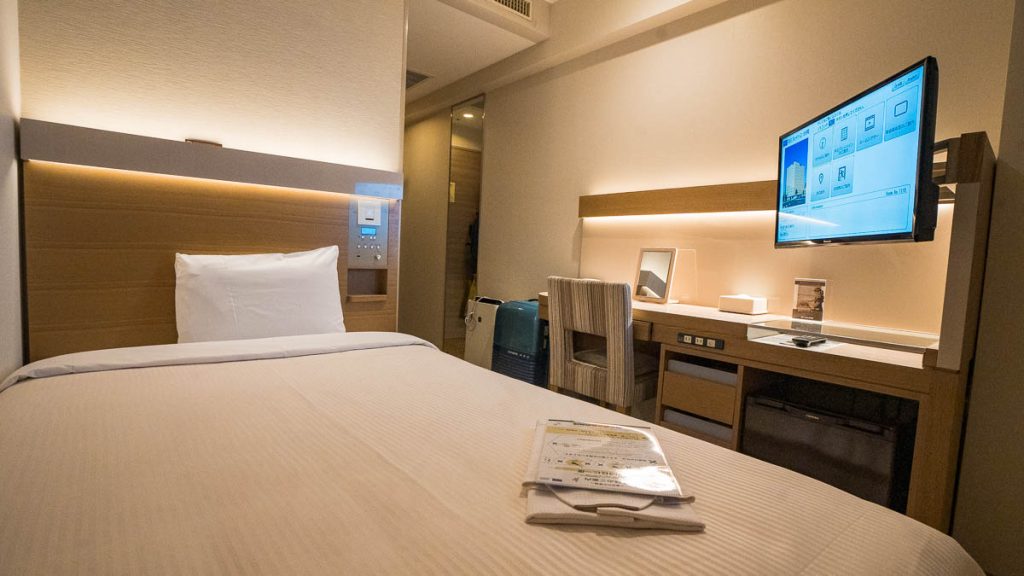
Keio Presso Inn : Located in the heart of Tokyo, the hotel is conveniently located near JR Tokyo station. The rooms are basic but clean and quiet, even with the hustle and bustle of the highway nearby.
Cost: From ¥13,800/night (~S$123.50)
Solo Travelling Tips in Tokyo
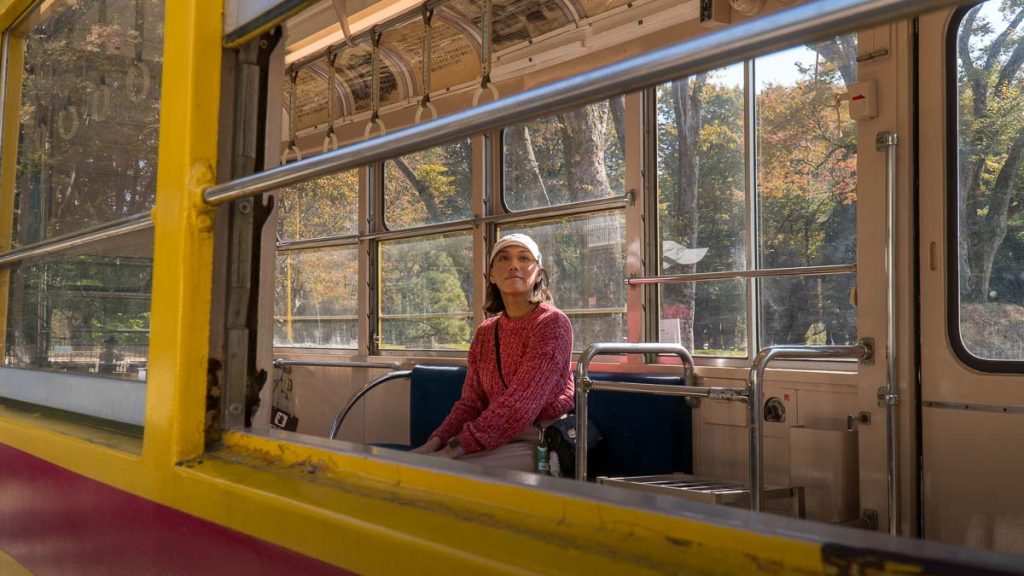
Know the basics of the language
Having Japanese basic phrases in your pocket helps a lot while travelling in Tokyo. Not only will it make communication easier, but it also shows respect and appreciation for the local culture. Some useful phrases to know include:
– Konnichiwa (こんにちは) – Hello – Arigato gozaimasu (ありがとうございます) – Thank you – Sumimasen (すみません) – Excuse me – Nihongo ga wakarimasen (にほんごがわかりません) – I don’t understand Japanese – Itadakimasu (いただきます) – To show appreciation before a meal – Gochisou sama deshita (御馳走様 でした) – Thank you for the delicious meal
Download translation apps like Google Translate or Binko Chat too! They’re extra handy when you’re stuck.
Safety Precautions
Safety should always be a top priority when travelling solo. Airtagging your belongings is a great way to keep track of them especially when they get lost or stolen.
Another thing I find keeps me safe is having my folks back home track me. I use Find My Friends on iPhone, but there’s also AirDroid for Android!
Taking Your Own Photos
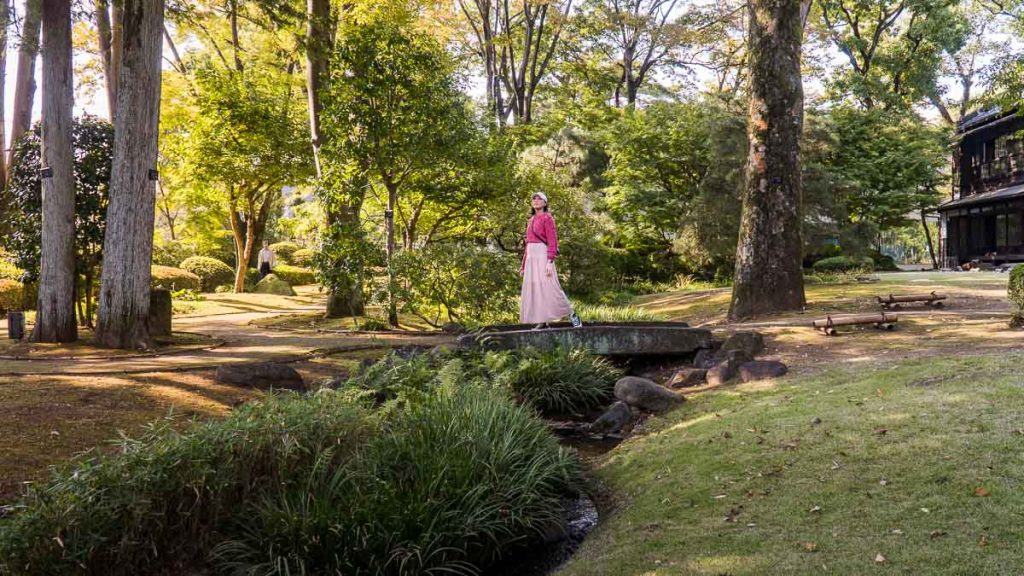
Here are my tips for scoring IG-worthy photos without asking for help:
1) Take photos with a self-timer Invest in a good-quality tripod to prop your phone up or use existing surfaces — I placed my camera on an electrical box for the photo above ✌🏻
2) Play around with different angles and perspectives for a unique shot Some ideas include: Putting your phone on the ground for a low-angle shot, using reflective surfaces, or placing your phone on the table in front of you with the wide (0.5x) at cafes. Don’t worry, no one is judging. And even if they are, you’ll probably never see them again 😆
Most of all — have fun! Solo travelling is so liberating and I love the flexibility. Don’t be afraid to stray from your itinerary to explore Tokyo off the beaten path. You just might discover more hidden gems you wouldn’t have otherwise found 💎
What are you most excited about in this Tokyo itinerary? Share in the comments below!
View this post on Instagram A post shared by The Travel Intern (@thetravelintern)
RELATED ARTICLES MORE FROM AUTHOR
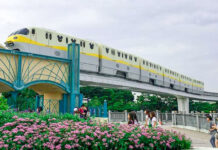
First-timer’s Guide to Getting to Tokyo Disneyland and DisneySea
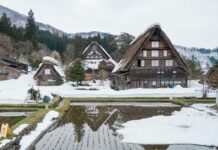
11 Relaxing Things to Do in Chubu, Central Japan — Hot Springs, Snow-capped Mountains and Quaint Towns
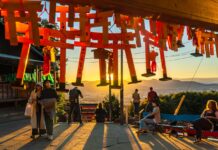
9 Travel Hacks to Save Money on Your Next Trip to Japan
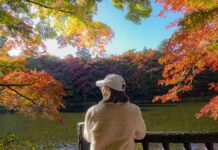
5 Underrated Day Trips Under 2hrs from Tokyo — Win First Class Round-Trip Tickets to Japan!

Top 11 Hotels Near Tokyo Disney Resort — Quirky Themes, Dino Staff, Onsens
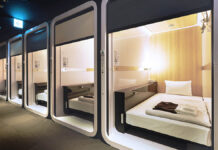
Top 11 Stunning Yet Budget-Friendly Tokyo Capsule Hotels (from ~S$40/night)
Leave a reply cancel reply.
Save my name, email, and website in this browser for the next time I comment.
Where to Stay in Hokkaido During Winter — 9 Affordable Accommodations...

7 Best Things to Do in Kulai — An Underrated Getaway...

12D New Zealand South Island Itinerary Under S$2.9k

Singapore Travel Promos (9 Sep to 15 Sep 2024) — Deals,...

Noah takes the world
Tokyo solo travel itinerary: how to spend 48 hours in tokyo with only $100, 20 budget activities you can do from start to finish for the perfect 2-day tokyo solo trip.
It is hard to create a Tokyo solo travel itinerary. With a massive population, a world-famous street-crossing, and a signature style, Tokyo has cemented itself as an iconic city.
If you are an avid solo traveler, visiting Tokyo should definitely be on your list.
Love Japan? Read my Ultimate Japan Bucket List: The Best Thing to Do in Every Prefecture
However, once you begin researching Tokyo, you will realize it is massive. For comparison, there are five boroughs in New York City, while there are 23 wards in Tokyo.

This post may have affiliate links. I receive a small percentage if you book a hostel or attraction through my recommended links. This is at no extra cost to you and helps me reach my goal of becoming a full-time digital nomad.
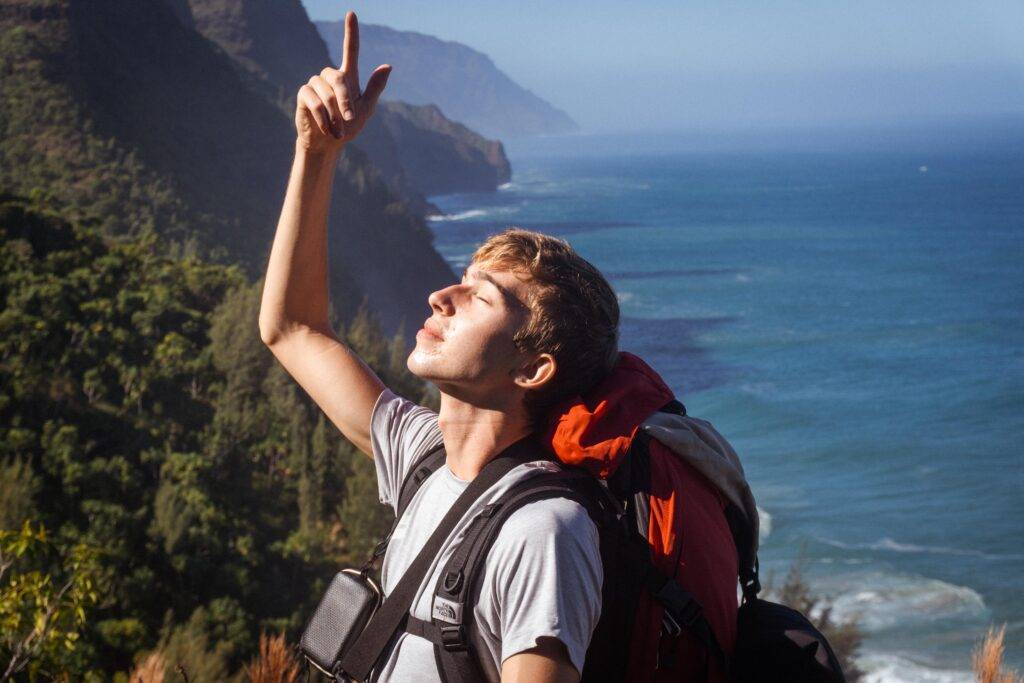
Hi, I am Noah takes the world . I love solo traveling. Planning a solo trip can be stressful with endless scrolling and searching.
My mission is to make your solo trip a reality.
Subscribe to my monthly newsletter—stunning photos and stories to guide your solo trip
This post may have affiliate links. I receive a small percentage if you book a hostel or attraction through my recommended links. This is at no extra cost to you and helps me reach my goal of becoming a full-time digital nomad.
Table of contents
Planning a tokyo solo travel itinerary is overwhelming, 1. start your tokyo solo trip at ueno park, 2. shop for cheap souvenirs at ameyoko shopping street, 3. get a suica card to pay for public transportation in tokyo, how to give an offering at a shrine, 5. relax at sumida park with a great view of tokyo sky tree, is tokyo skytree worth going up, 7. take the hanzomon line from skytree to the imperial palace, 8. walk to tokyo station and experience one of japan’s most prestigious business districts, 9. window shop in tokyo’s luxurious high-end shopping district, 10. walk across the busiest pedestrian crossing in the world: shibuya crossing, 11. make your way to shinjuku to admire the view from shinjuku southern terrace, read: why you should stay at a hostel, 13. start day 2 at the spacious shinjuku gyoen national garden, 14. make your way to harajuku and shop along the trendy takeshita street, what not to do at a japanese shrine, 16. run, people-watch, or sunbathe at yoyogi park, 17. take the subway to roppongi hills, known as a city within a city, 18. wait for the sun to set by exploring zojo-ji and prince shiba park, is the tokyo tower top deck tour worth it, 20. end your day by the sea at takeshiba pier, how much money do i need for my tokyo solo trip, now, make the perfect 2-day tokyo solo travel itinerary a reality.

Tokyo’s sheer size and limited travel time were both problems I faced when planning my Tokyo trip. I am an English teacher in Japan with limited funds and only have time to travel on the weekends.
So, I have listed 20 activities perfect for two days in Tokyo—with a budget of only $100 USD.
My itinerary caters to budget solo travelers who want to see Tokyo’s famous attractions alongside hidden urban oases.
This itinerary is simple, straightforward, and you can follow it in order. Most of my activities are free or budget-conscious. There is no need to feel overwhelmed while planning a solo trip.

Ueno Park is a city park with museums and a zoo. It is perfect for people-watching and brisk walking. However, if you visit Japan during cherry blossom season, the park will be bustling with food vendors and pedestrians.
- The park grounds were originally part of Kaneiji Temple , which used to be one of the city’s largest and wealthiest temples of the ruling Tokugawa clan during the Edo Period.
My favorite spot in the park is the Shinobazu Pond Bentendo. It is a temple hall in the middle of a pond dedicated to the goddess of good fortune, wealth, music, and knowledge.
Noah’s take: You don’t need to spend too long in the park. It is a nice place to eat a rice ball and escape the crowds.

Walk 10 minutes from Shinobazu Pond to Ameyoko Shopping Street. Ameyoko is a busy market where you can find food and souvenirs at an affordable price.
- Ameyoko is nicknamed after America because this was the black market area for American goods after World War II.
Noah’s take: I love visiting traditional markets when I solo travel. You can taste authentic food and get cheaper, more eclectic goods.
However, most stores open around 10:00 a.m. If you have an early start to your day, you might visit the market before it opens.

After visiting the market, it is time you take Tokyo’s public transport. Tokyo’s subway system is notorious for being complicated, but I disagree.
Noah’s take: I survived using Google Maps and screenshots and planned routes with few transfers. I did not get lost once. If you do get lost, Japanese people are usually happy to help.
Plus, you can almost exclusively use the Yamanote Line to get around Tokyo. It is known as one of the most famous train lines in the world. This line is even more special because it is above ground! Meaning you will have some nice city views.
Noah’s take: Make your life easy and invest in a Suica IC Card , so you do not have to purchase a ticket each time you take a train.
- With a Suica IC Card, you load money onto a card using the machines in the train stations and tap your card to enter the tracks.
- It is super convenient. You can purchase a card at the station’s ticket machines. For more information on purchasing an IC card, read this guide by matcha.com .
4. Add a Visit to Sensoji in Asakusa For Your Tokyo Solo Travel Itinerary

Walk 4 minutes to Ueno-Hirokoji Station and take the Ginza line to Asakusa Station for 180 Yen.
After making it to Asakusa Station, walk up the Nakamise Shopping Street to reach Sensoji’s main hall and pagoda. This street is busy, full of shops selling souvenirs and snacks.
Make sure to give an offering at Asakusa Shrine. It might be a little intimidating to give an offering. I have visited many different shrines in Japan, and it seems like everyone does something different when giving an offering.
- You can read this guide about how to pay respects at Japanese shrines.
However, my best advice is to follow what others are doing. You will wait in line, gently throw a coin in the donation box, and then bow.
Some worshippers will throw their coin, bow twice, clap their hands twice, pray for a few seconds, and bow again.
However, it can be hard to remember those steps. It is a little stressful to do so!
Noah’s take: No one will be upset with you if you forget to clap or bow an extra time. Do not let fear stop you from experiencing a very insightful cultural experience. Just be respectful!

In less than 5 minutes, walk from Sensoji to Sumida Park. This park is a very popular cherry blossom spot that provides some relaxation from the busy streets of Asakusa and great views of Tokyo Sky Tree.
Noah’s take: This park does not have much green space but feels like an oasis because it is set against the Sumida River.
6. Walk across the Sakura-bashi Bridge to Tokyo Skytree

If you feel like walking, you can easily walk to Tokyo Skytree from Sumida Park in 15 minutes. If you don’t feel like walking, you can take the Tobu Skytree Line from Asakusa Station (710 Yen) or the Asakusa Line (180 Yen).
Noah’s take: It is a nice walk from Sumida Park to Tokyo Skytree. You can see cafes and shops that sit underneath massive train tracks.
- Tokyo Skytree is a very famous observation deck in Tokyo. It is the tallest structure in Japan and was the second tallest in the world at the time of its completion.
You can go up the tower, but it is expensive and not the most enjoyable to do solo. You will drop at least $20 USD and crowd with many tourists.
And if you are following this itinerary in order, you will reach Skytree mid-day.
Noah’s take: There is nothing more disappointing than visiting an observation around noon. The sun angle is horrible for pictures. Always visit observation decks near sunset or at night. The view and your pictures will be much more impressive.
It might seem silly to visit Skytree without going up the tower. However, it is a great place to grab lunch. There is a massive outdoor food court at the base of the tower.
I enjoyed admiring Skytree from the ground and walking from Sumida Park. If you have extra time and extra cash, go up the tower. However, Skytree is just one of Tokyo’s many observation towers.
Keep reading as I plan to visit a different tower during sunset that is cheaper and more enjoyable for Day 2.
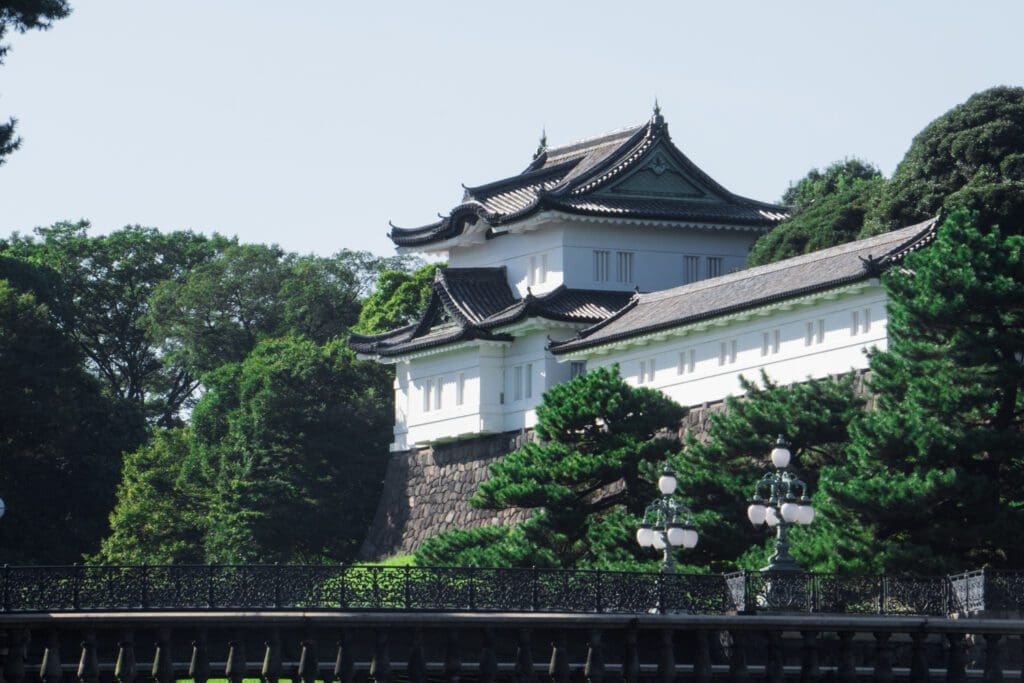
After grabbing some food and appreciating marvelous engineering, take the Hanzomon Line from Oshiage Station to Otemachi Station for 210 Yen.
- Otemachi Station is conveniently located near the Imperial Palace, the main home of the Imperial Family.
Noah’s take: I had to visit the Imperial Palace because of its cultural significance when I visited Tokyo. Although there is not too much to see here, since most of the palace is closed to the public, it is still a nice area to explore.
Make sure to walk through the Kokyo Gaien National Garden, a large plaza in front of the Imperial Palace, and take pictures of the Nijubashi Bridge.
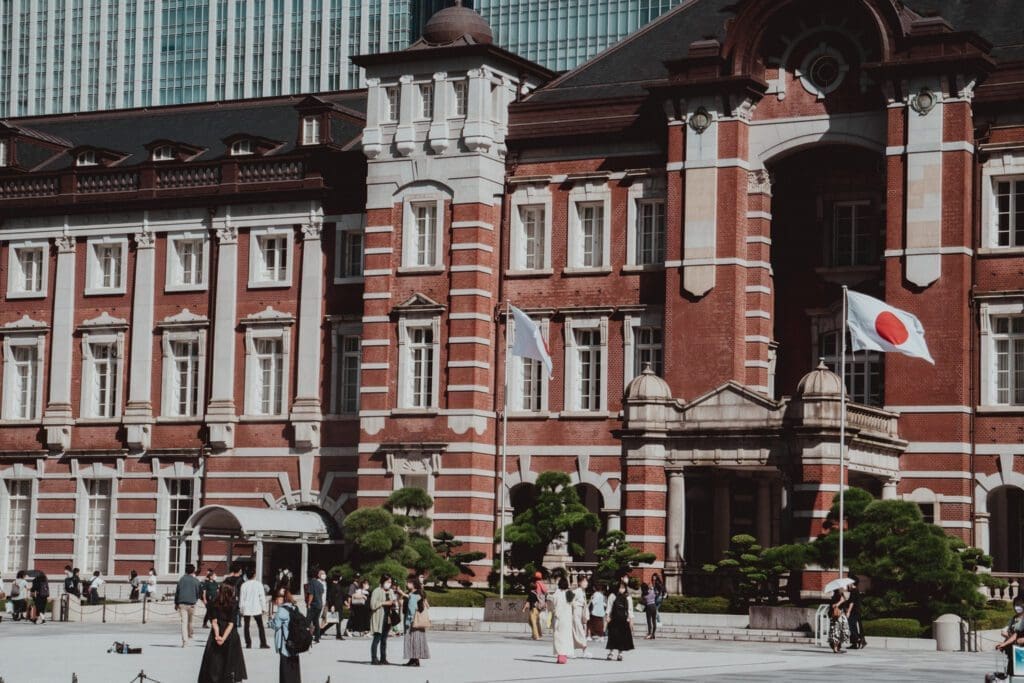
Between the Imperial Palace and Tokyo Station is Marunouchi , home to new shopping and dining facilities. You can experience Tokyo like a local in this area. Watch pedestrians enter Tokyo Station or enjoy shopping in gorgeous high-rises.
Noah’s take: During my solo travels, I like to take in a city and not just see it from a tourist perspective. This spot is great to admire Tokyo and feel connected to its energy.

If the upscale Marunouchi is not luxurious enough for you, walk 20 minutes to Ginza, Japan’s most famous upmarket shopping district .
There aren’t too many shops that a budget traveler can afford here in Ginza. However, walking Chuo-doru Ave, the main shopping street in Ginza, is fun.
It is especially nice to visit on Saturday and Sunday afternoons when the street closes to cars, so shoppers have more room to walk and shop.
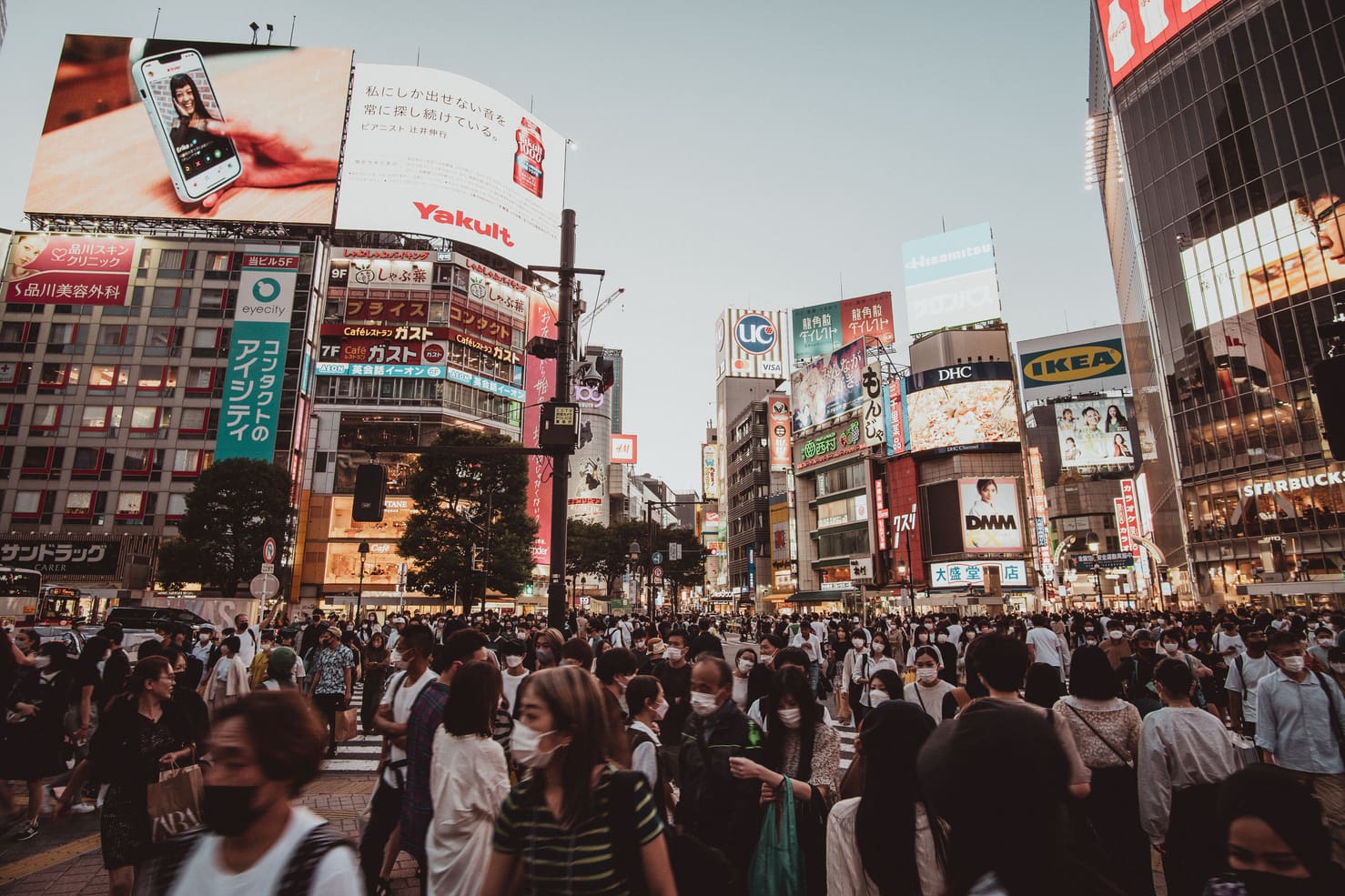
Now, the sun should start to set, and night is coming. There is no better way to experience the transition from day to night than at the world’s busiest street crossing.
Shibuya Crossing or Shibuya Scramble is a must-see attraction, if it even counts as an attraction. Who knew a street crossing could be so exciting and thrilling?
From Ginza Station, take the Ginza line (210 Yen). When you arrive at Shibuya Station, head for the Hachiko Exit. You can take in a great view of the crossing at the bridge that connects the Shibuya Mark City Shopping Center with Shibuya Station’s Toyoko Store; just get out of the way of many pedestrians onto their next train.
Although taking a bird’s eye shot of thousands of people crossing the scramble is memorable, the best feeling is experiencing it.

Noah’s take: Walking the crossing at dusk is an indescribable feeling—a highlight of my trip. I was filled with so much adrenaline.
Besides crossing the infamous street, make sure to visit the Hachikō Statue . It commemorates a loyal dog who used to wait for his owner to come home from work each day outside of the station.
- After the owner died at work, Hachikō would return to the station every day for the next nine years, waiting for his owner to return.
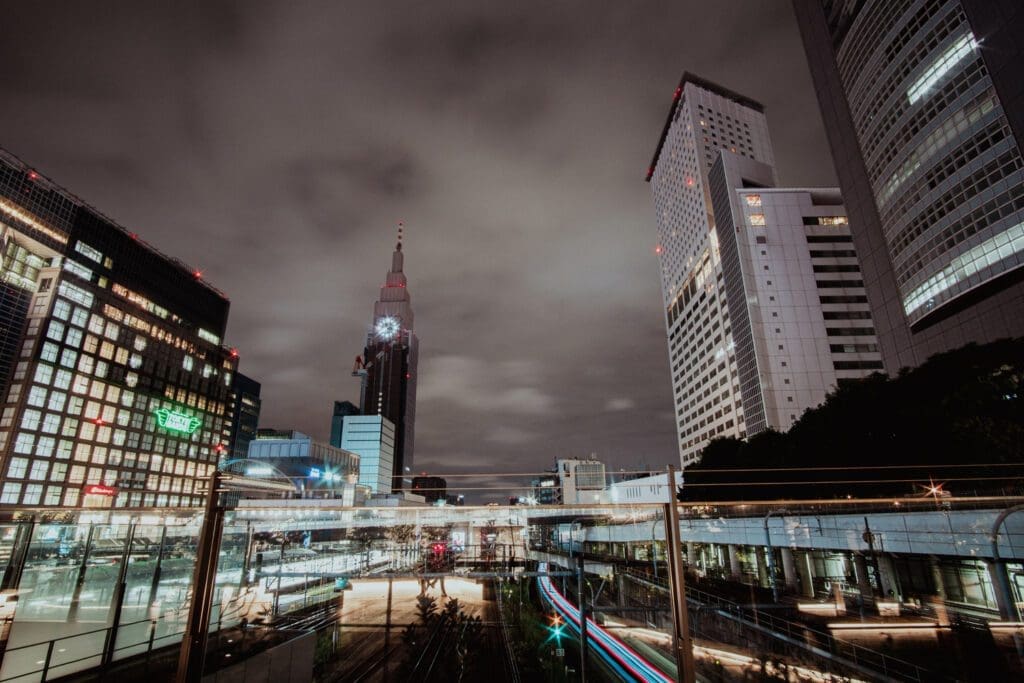
With its trendy shopping and bustling nightlife, you could easily spend your night in Shibuya. However, take one more train to another large entertainment and business center, Shinjuku.
- Take the Yamanote Line from Shibuya Station to reach Shinjuku Station (170 Yen).
Shinjuku and Shibuya are like sisters. Both districts have great shopping, sightseeing, and nightlife. They are arguably the most desirable and fun districts in Tokyo.
I prefer ending my night in Shinjuku because of the Shinjuku Southern Terrace, a resting spot on the south exit of Shinjuku Station. It is fairly quiet, and there is plenty of space to admire Shinjuku’s skyline.
Noah’s take: I was overwhelmed in the streets of Shibuya. The Shinjuku Southern Terrace was the perfect place to recenter and grab a meal to eat alone.
12. Spend the Night at One of Shinjuku’s Capsule Hotels For Your Tokyo Solo Travel Itinerary

After an exhausting day exploring Tokyo, you will need to rest. I recommend you try staying at a capsule hotel. Japan is known for its capsule hostels, so why not make your lodging a cultural experience?
I always stay at hostels during my solo travels, but I like staying in capsule hotels even more because they offer more privacy.
Noah’s take: I stayed at Shinjuku Capsule Hotel during my Tokyo solo trip. It was not the cleanest or most elegant stay. It is an older hotel and only has a public bath.
If you want to get the cheapest price, I always use Agoda to book my accommodations in Japan. 90 percent of the time, it will have the cheapest price. The other 10 percent of the time, Booking.com has the best price. However, that is rare in Japan.
However, for less than $25 USD, there was little reason to complain. If you want a more luxurious, Instagrammable capsule hotel, stay at the Anshin Oyado .

Solo trips and scenic gardens are the perfect combination. Walk ten minutes from Shinjuku Station by taking the New South Exit, and you will reach the Shinjuku Gate of the garden.
Shinjuku Gyoen is one of Tokyo’s largest and most popular parks. Come to the park when it opens at 9 a.m. and pay 500 Yen for a peaceful stroll. However, the park is closed every Monday or the following day if Monday is a national holiday.
- If you visit Japan during Cherry Blossom Season, you will find this park is one of Tokyo’s most popular viewing areas.

Harajuku sits between Shinjuku and Shibuya, a bit more teen-centered than the other two. Harajuku is known for its shopping and its very touristy Takeshita Street.
Take the Yamanote Line from Shinjuku Station to Harajuku Station (150 Yen) for a mere 4-minute train ride. Steps away from Harajuku Station lies the entrance to Takeshita Street.
Indulge in candied strawberries, crepes, and cotton candy, or shop in eccentric boutiques and second-hand stores.
Noah’s take: It is a cool place to see the birthplace of the Harajuku clothing style, but it is a very narrow street and can get crowded. So, it is not always the ideal solo destination.
If you want to escape the crowds and relax, go to the sixth floor of the Tokyu Plaza Omotesando Harajuku. There is a Starbucks and a beautiful outdoor terrace. It is a nice spot to recharge and use a free restroom.
15. Pay Your Respects at Meiji Jingu, a Shrine Dedicated to a Significant Leader in Japan’s History

While Harajuku is known for its fashion, it also is home to a very important cultural property, the Meiji Shrine. It is also conveniently located right next to Harajuku Station.
Meiji Shrine is dedicated to the deity of Emperor Meiji , the first emperor of modern Japan. Emperor Meiji modernized Japan by having Japan join the World’s major powers. The Japan we know and love today stems from Emperor Meiji’s decision to connect Japan to the modern world.
You will walk about 10 minutes from the entrance near Harajuku Station to reach the main shrine complex. To first enter the shrine, you will pass a large gate called a torii . Make sure to stop and bow. Then, you can continue walking.
It is a very peaceful walk to the main shrine, where grooves of large trees shade you. It definitely feels like a sacred space.
- Make sure to walk on the sides of the path, not in the middle. The Gods pass in the middle , so walking along the Gods’ path is considered disrespectful.
Noah’s take: It can be overwhelming to remember proper customs while visiting a shrine, but once you understand the customs, your visit to the shrine becomes more significant. If you have extra time, read this helpful guide about visiting shrines .

On the opposite side of Meiji Shrine sits Yoyogi Park. It is a large park that features ponds and skyline views.
Yoyogi Park is one of Tokyo’s largest city parks, featuring wide lawns, ponds, and forested areas. I enjoy visiting parks during my solo trip because I get a chance to peer into the everyday life of locals.
Here you can picnic or relax under the sun. You are sure to escape fellow tourists in this green space.

From Yoyogi Park, walk 5 minutes to the Yoyogi-Koen station. Take the Chiyoda Line to Nogizaka Station (180 Yen).
- After a 10-minute walk, you will find the futuristic Roppongi Hills . Here you will find upscale eateries and many places to shop.
Make sure to see Maman , a spider sculpture that greets pedestrians as they walk through the district. Although there is an observatory in Roppongi Hills, you can have a nice free view of Tokyo Tower near Maman.
After viewing Maman, go to the ground floor and walk through Mori Garden , a traditional garden surrounded by shiny new buildings.
Noah’s take: If sunset is approaching soon and you are running out of time, you can skip visiting this city complex. However, it is still an interesting spot to explore on a solo trip!
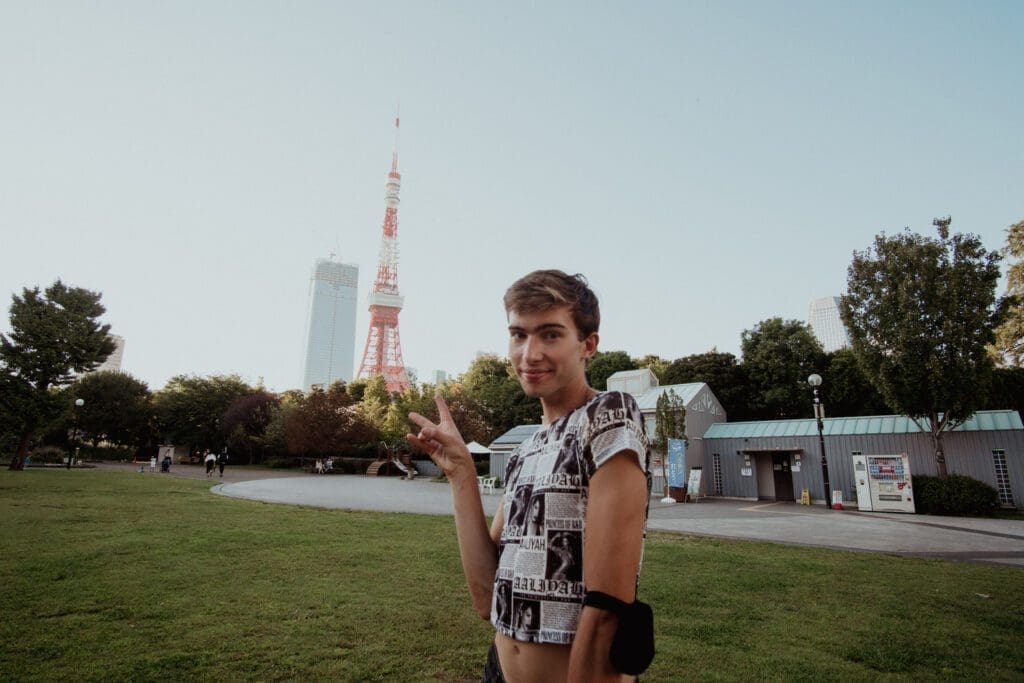
Now, the sun should be close to setting. You want to reach the world’s tallest steel tower , Tokyo Tower. The tower, built using the Eiffel Tower as its model, symbolizes Tokyo’s growth following World War II.
When the sun shines with a golden ray during golden hour, first appreciate the tower on the ground. Once the sky turns pink and orange, head up to the Tokyo Tower.
- If you have time to kill before sunset, at the base of the Tokyo Tower, explore Zojo-ji , an impressive Buddhist temple. Also, you can visit Japan’s oldest public park, Prince Shiba Park.
Noah’s take: Prince Shiba Park has a wide-open lawn overlooking the tower. It is a great photo spot.
19. Watch the Sunset On Top of Tokyo Tower and Stay Till Dark
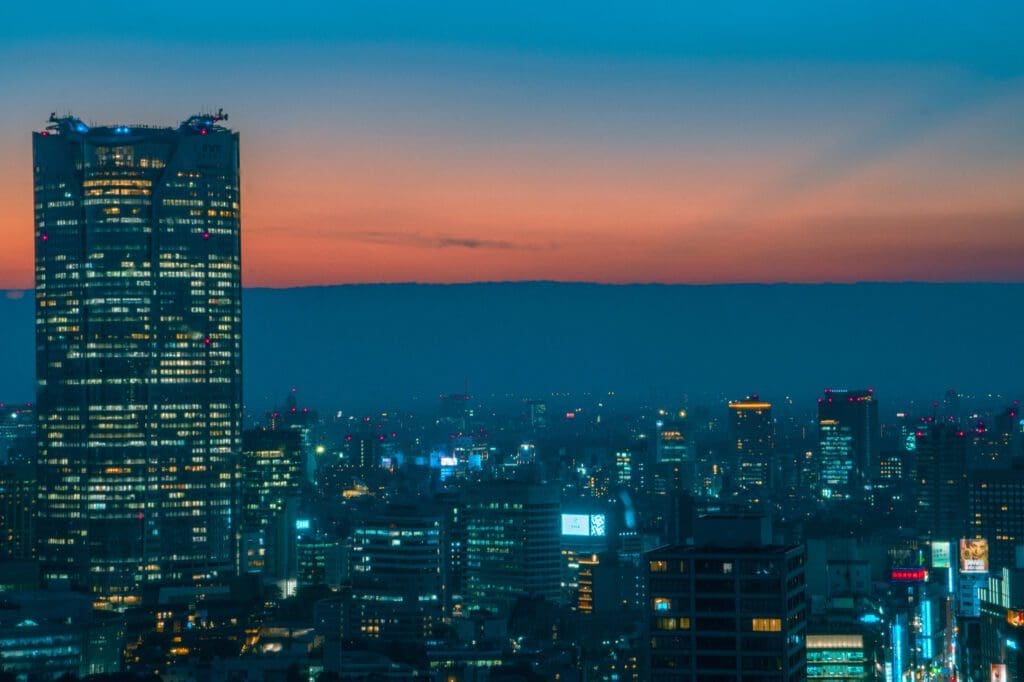
Once the sun sets, it is time to head up to Tokyo Tower. I visited on a weekday and did not have to wait to go up the tower.
Noah’s take: I recommend going to the tower before sunset and buying a ticket. If there is no waiting time, explore Zojo-ji and Prince Shiba Park, and then go back to the tower and redeem your tickets during sunset.
You can also book your tickets online , but there is no additional discount for doing so unless you plan to book a guided tour.
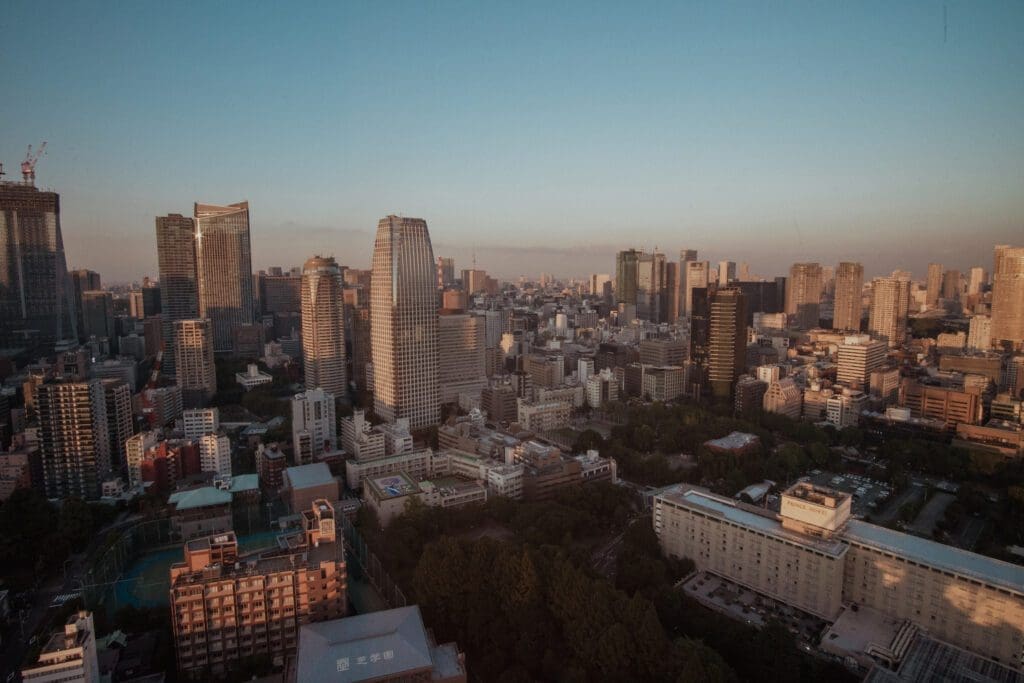
You have two options for touring Tokyo Tower. You can spend 1,200 Yen and simply go to the main observatory in the middle of the tower, or you can spend 3,000 Yen for a guided tour that goes to the main and top deck.
Noah’s take: Sometimes, I prefer views that are not extremely high because you can see buildings in better detail. High viewpoints are epic, but you can lose appreciation of landmarks in your view since they are so small and hard to make out.
Since this is a fast-paced, budget trip, I recommend staying cheap and going to the main observatory. It is a great bird’s eye view where you can admire Tokyo in detail. You can read more about the full, expensive tour here .
Noah’s take: I was obsessed with the view from the main observatory. Watching the sun slip behind mountains while an entire metropolis began to light up was one of my favorite activities during my solo trip. You won’t be disappointed with the middle observatory.
- I was also so lucky because I set up my tripod and got some amazing skyline shots without getting in trouble. Usually, you are not allowed to operate tripods on congested observation decks.
Once you have watched the sunset and stayed long enough for the city to light up, you can head back down 333 meters. You can take an elevator down, but take the stairs if you want a thrilling experience.
Noah’s take: If you are in shape, you will have no problem on these stairs. The stairs are open-air, so you feel super connected to the city while you race down them. You can also peer through gaps in the stairs fencing for epic views.

If the views from Tokyo Tower are not enough and you are waiting for your overnight bus, like I was, walk 30 minutes to the Takeshiba Pier.
I am sure you will be exhausted on your walk. If you have extra spending money, you can take a taxi. Since I am a budget solo traveler, I have a rule never to take a taxi. Taxis are expensive, especially when you are the only passenger.
You will find offices, hotels, and restaurants near the pier, and you can watch massive ships load cargo onto their decks. It is quite impressive to watch a ship being loaded.
Noah’s take: This pier is just a nice space to feel the power of solo traveling. The ocean breeze against your face while admiring bridges and buildings reflecting in the water is indescribable.
After you admire the sea, you can walk to Tokyo Metropolitan Industrial Trade Center in a few minutes. They have plenty of terraces where you can sit outside, eat convenience store food, and rest from a rewarding solo trip.
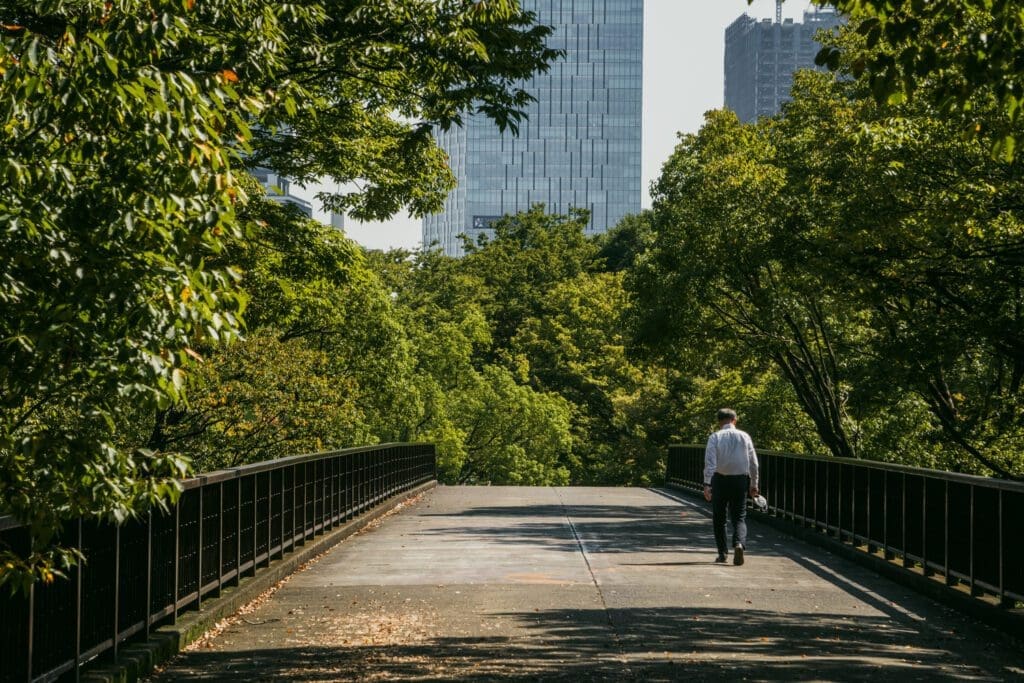
Since many of the activities on this itinerary are free, you really don’t need very much cash. I opted to eat my meals at convenience stores, which helped me save.
Noah’s take: You might think it is insane to eat convenience store food. However, convenience stores in Japan are world-famous for having great food selections . If you want to save even more, find supermarkets and eat foods from their bento sections. They are also still very delicious.
Here’s how much I spent during my trip:
- Attractions: 2,000 Yen
- Transportation: 1,500 Yen
- Food: 3,000 Yen
- Shopping: 2,000 Yen
- Accommodation: 2,500 Yen
I spent 11,000 Yen, roughly $100 USD, during my 2-day Tokyo solo trip. So, you can cover a wide area of Tokyo for less than $100 USD.
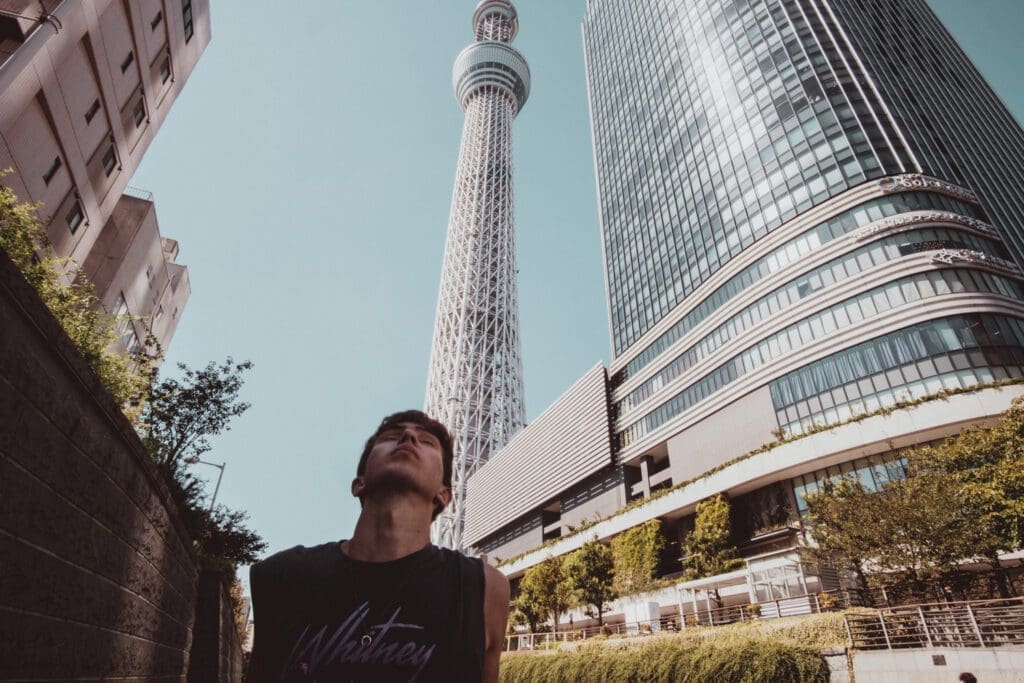
Of course, there is no such thing as a perfect itinerary. Places unexpectedly close. Waves of tiredness stop us in our tracks.
However, use this itinerary to guide your budget Tokyo solo trip, and I guarantee this will be a solo trip you will never forget.
Also, since you did not spend too much on this trip, this is definitely the beginning of your solo traveling. I will be here to guide your next trip.
Visiting Japan? Read: The five best hostels for solo travelers and How to Stay at a Manga Cafe (Internet Cafe) in Japan
noahshoaf27
- Travel magazine
Tokyo for one: Embracing solo travel in Japan's vibrant capital
- guides & tips
July 19, 2023

Hey there! I'm Arezki. Thirty-three years young, jazz vocalist by night, and an ardent fan of all things Japan. I'm thrilled to bring you along on my journey through Tokyo - a city that's more than just my home; it's my greatest passion.
To me, Tokyo is not just about the towering skyscrapers or the must-see tourist stops. It's about the hidden gems you stumble upon when you least expect it. The comforting aroma wafting from a small ramen shop tucked in an alley, the seductive rhythm of jazz flowing from an unassuming basement bar, and the quiet beauty of a centuries-old shrine nestled in the heart of the city - these are the soul of Tokyo.
Solo travel in this city, guided by the wonders of Google Maps alongside the helpful Tabimori travel app and the popular Gurunavi restaurant app, is an experience like no other. There's a unique thrill to navigating the vibrant streets of Tokyo at your own pace, immersing yourself in the mesmerizing fusion of the ultramodern and the traditional. Picture the dazzling skyscrapers standing beside centuries-old temples, the bustling rhythm of city life intermingled with serene moments of tranquility, all woven together by an energy that's distinctly Tokyo.
So, are you ready to embark on this exhilarating journey? I'm here to join you, sharing my passion for Tokyo and igniting your own wanderlust. My wish is for you to become as captivated by this city as I am, eagerly anticipating the moment you step foot on its bustling streets. Together, with the assistance of Google Maps, Tabimori, and Gurunavi, we can navigate Tokyo's vast wonders, discover hidden gems, indulge in mouthwatering culinary experiences, and craft a captivating narrative that unravels the authentic story of this incredible city.
Why a solo trip to Tokyo is a life-changer
First off, Tokyo is one of the safest cities in the world. Day or night, you can explore the safe city without worry in your mind. Lost in translation? Not a problem. The Japanese are gracious and eager to help, even when we're playing an amusing game of charades due to language barriers.
There's no need to rush or compromise when you're on your own. Want to spend the entire afternoon observing people at the Shibuya crossing? Go for it! Feel like wandering around a less-known part of the city, away from the usual hotspots? Why not! Tokyo caters to all sorts of interests; when you're alone, the itinerary is yours to control.
And let's not forget the joy of cultural immersion. With no distractions, you're free to soak in the tiny details, the nuances that make Tokyo so unique. The way locals bow slightly when passing each other on the street, the rhythm of a tea ceremony, the solemnity of a Shinto shrine amidst the city's hustle - it's a cultural tapestry that unfolds more vividly when you're fully present.
It's in these moments, these interactions, that you might feel a deeper connection with Tokyo and its people. Tokyo isn't just a city to be toured; it's a city to be lived. Each street, each person, and each food joint becomes a chapter of your very own Tokyo story. And as a guide and a long-time solo wanderer myself, I assure you this is a story worth living.
Things not to miss for solo travelers in Tokyo
First off, Tokyo is one of the safest cities in the world. Day or night, you can explore the safe city without a worry in your mind. Lost in translation? Not a problem. The Japanese are gracious and eager to help, even when we're playing an amusing game of charades due to language barriers.

Ah, the Tokyo Skytree - now there's a sight that's hard to miss on a solo trip to Tokyo. Rising into the heavens from the busy city below, it's like a beacon, drawing in solo travelers and adventurers from around the globe. Starting your journey from Tokyo Station, hop on the public transport that Japan is so famously efficient for. Solo travel is a breeze in this country. Trains, buses, or the subway - all perfect allies for the solo explorer.
As you approach the Skytree, it's impossible to ignore the adrenaline rush. You're about to ascend into the clouds, to see Tokyo City View from a stunning 634 meters above ground! It's one of the best attractions the city has to offer, and something every traveler should experience when visiting Tokyo.
Once you're up there, please take a moment to soak it all in. Tokyo is one of the world's busiest cities, spread out before your eyes. But from this vantage point, everything feels serene, almost peaceful. You stand alone in Tokyo, yet somehow connected to the vibrant life happening below. The Skytree isn't just about the view either. If you're lucky, you can catch a glimpse of other cities on the horizon. These could be your next day trips, further adventures awaiting in the Land of the Rising Sun.
When night descends upon the city, the Skytree takes on a new persona. The neon lights, the buzz, the radiant energy - it's a completely different experience. The nighttime panorama is a breathtaking spectacle, a must-see for anyone visiting Tokyo.
There's something incredibly liberating about exploring the Tokyo Skytree alone. You're not just a tourist; you're an adventurer, experiencing Japan on your own terms. Whether you've visited Tokyo before or it's your first solo trip, the Skytree is a testament to the city's ability to surprise and delight at every turn. So, get those walking shoes on. The Skytree awaits!
2. Explore Akihabara

On a solo trip, exploring Akihabara is an unforgettable experience. Why, you ask? Well, let me tell you. Akihabara isn't just a part of Tokyo; it's a whole universe encapsulating the sheer energy and distinctiveness of the culture of Japan.
Google Maps in hand, a solo traveler like you can weave through Akihabara's busy city streets, brimming with colorful anime shops, towering electronics stores, and lively game arcades. You'll feel the city's pulse, its unabashed love for the quirky, the high-tech, the traditional.
Feeling hungry after all that walking? You're in the right place. Akihabara is a wonderland for food enthusiasts. Whether it's ramen shops tucked away in back alleys, bustling izakaya serving up delicious Japanese tapas, or even vending-machine cafes, Akihabara offers plenty of opportunities to eat your way through the Japanese culinary scene.
Visiting Tokyo alone is a breeze, thanks to the city's reputation as one of the safest in the world. So, you can throw any safety concerns out of the window and enjoy exploring Akihabara at your own pace. Day or night, Akihabara is always ready to welcome you with open arms.
A solo trip to Tokyo wouldn't be complete without an adventure in Akihabara. It's more than a travel destination; it's a journey into the heart of Japanese pop culture.
Here, you'll find your senses sparked by a vivid whirl of unique experiences. From anime to tech, Akihabara is a full-throttle taste of Japan that will etch itself in your memory. In Akihabara, you're not just visiting Tokyo; you're living it, one thrilling street at a time. So, come on, let's hit those bustling streets.

3. Stroll through Ueno Park
Solo travel to Tokyo is not complete without a leisurely stroll through Ueno Park, a sprawling green space that provides a refreshing contrast to the city's busy skyline. Easily accessible by public transportation, the park is just a short walk from Ueno subway station.
As you step out of the station and into the park, you're immediately embraced by a tranquil atmosphere that invites quiet reflection, or simply a leisurely walk along its winding paths.
In spring, Ueno Park truly comes alive as the cherry blossoms burst into bloom. This spectacle offers a unique opportunity for solo travelers to experience one of Japan's most iconic natural events.
Book private experiences in Tokyo
Visitors can participate in "hanami" or flower-viewing, while comfortably seated under the clouds of pink and white blossoms. Whether you're capturing the blooms in a photograph or just taking a moment to marvel at their beauty, it's an experience that connects you with Japanese tradition.
In between exploring the park's many museums and zoo, or after a long walk by the lotus-covered pond, make sure to try the local Japanese food available in the park. Various stalls offer traditional snacks, like yakitori and takoyaki, perfect for a quick bite on your solo trip.
Experiencing Tokyo alone offers a freedom to truly savor these flavors at your own pace, completing the authentic Ueno Park experience. Whether you're there for the cherry blossoms, Japanese food, or simply the refreshing ambiance, a day in Ueno Park is a day well spent.

4. Experience teamLab in Toranomon-Azabudai
For solo travelers looking to experience Tokyo's vibrant digital arts scene, a visit to teamLab in its new location at Toranomon-Azabudai is a must (reopening in Autumn 2023).
This interactive museum merges technology, design, and art in a dazzling display of neon lights and digital landscapes that's sure to captivate. The installations' complexity and beauty defy conventional art norms, making it a unique destination on your Tokyo trip.
Navigating through teamLab's digital universe is a walking adventure unlike any other. Each room presents a new dimension of light, color, and motion, inviting visitors to interact and engage with the art in unexpected ways. One moment you're wading through a virtual waterfall, the next you're watching neon butterflies flutter around you. And despite the visual intensity of the exhibits, the experience never feels overwhelming. Even during peak hours, the space is well managed, allowing you to appreciate the digital masterpieces at your own pace.
The staff at teamLab are accustomed to welcoming visitors from around the globe and many of them speak English. They are there to help guide you through this immersive experience, ensuring that you make the most of your solo trip to this amazing city. TeamLab isn't just a place to see art - it's a place to experience it. As you explore Tokyo alone, diving into this digital realm offers a taste of the city's creative energy and its commitment to pushing boundaries.

5. Eat sushi at Tsukiji Outer Market
For travelers visiting Tokyo, a trip to the Tsukiji Outer Market is an essential gastronomic adventure. Accessible from major train stations like Shinjuku Station and Tokyo Station, this iconic market is steeped in Japanese history and brimming with culinary treasures. Whether you're in Tokyo for an extended period or a short visit, Tsukiji is a place you wouldn't want to miss.
Navigating Tsukiji Outer Market opens you up to a variety of dining options. From food stalls to established sushi houses, the market houses many restaurants, each offering a unique take on traditional sushi.
Even as a solo traveler, you're not the odd one out. Many establishments cater to single diners, allowing you to sit at the sushi counter and watch as the chefs artfully craft each piece.
Plus, it's a great opportunity to pick up a few Japanese words related to sushi and dining etiquette. Most restaurant staff are familiar with common English phrases, but they certainly appreciate the effort!
If you're eager to delve deeper into Tsukiji's bustling food scene, consider joining one of the many food tours available. These guided walks offer a curated experience, and you may even end up making friends with other travelers. But remember, even on a solo trip, visiting Tsukiji Outer Market is all about the sushi experience. So, grab a seat, enjoy the atmosphere, and savor each bite as you become a part of Tokyo's vibrant food culture.

6. Visit the Senso-ji Temple
As a solo traveler exploring Japan's capital city, one of the must-visit landmarks is Sensoji Temple. Easy to reach via Tokyo's reliable public transportation from major stations like Tokyo Station or Shinjuku Station, this temple stands as a historical beacon in the bustling metropolis.
But why is it a must-see? Beyond its impressive architecture and spiritual resonance, Sensoji provides a tangible link to Tokyo's past. Built in the 7th century, it serves as a testament to the city's enduring traditions amidst rapid modernization.
As you wander through the Thunder Gate (Kaminarimon), with its massive paper lantern, and up to the main hall, you're retracing steps walked by countless others over centuries. Even during a Tokyo solo trip, this sense of connection to a shared history is palpable.
Moreover, Sensoji Temple's location in Asakusa district presents additional layers of exploration. The vibrant Nakamise Shopping Street leads up to the temple, lined with stalls selling traditional snacks and handicrafts, allowing you to delve into the cultural fabric of Tokyo. The street, especially outside peak hours, is a delight for those strolling alone, offering an unhurried opportunity to savor the experiences.
Finally, Sensoji Temple is not just a place of worship but also a venue for various festivals and events throughout the year. Depending on when you visit, you might encounter lively processions, traditional music, or beautifully illuminated night-time displays. Alone in Tokyo, you have the liberty to immerse yourself fully in these experiences, soaking up the vibrant energy while also making space for quiet reflection. Therefore, a visit to Sensoji Temple offers an essential, multi-faceted perspective on Tokyo, making it a truly must-see for solo travelers.
7. Shopping in Harajuku
Any solo trip to Tokyo would not be complete without dedicating a day to the stylish, high-energy district of Harajuku. Known as the city's youth fashion hub, Harajuku pulses with a unique vibrancy that sets it apart in Japan's capital. Walking the district's main street, Takeshita, you'll find an array of eclectic shops and boutiques, showcasing everything from vintage clothing to the latest trends.
Exploring Harajuku alone affords the freedom to go at your own pace. Immerse yourself in the sensory delight of the bustling streets, dotted with an array of stores offering a diverse range of fashion items and quirky accessories. The district's flamboyant street style is well-known, and there's no better place to observe or even participate in this colorful cultural expression than here. Don't forget to browse the numerous thrift stores, where you can find unique vintage items that make for excellent souvenirs.
While Harajuku is primarily known for its shopping, it also boasts a number of exciting restaurants serving both local and international cuisine. As a solo traveler, you have the chance to indulge in a variety of Japanese food experiences. Be it a crepe from one of the many street vendors, a meal at a traditional noodle shop, or a unique treat from a themed cafe, Harajuku offers a culinary adventure just as vibrant as its shopping. A day in Harajuku, immersed in its energetic atmosphere, is a must-do for any solo traveler in Tokyo.

8. Explore Kagurazaka
For lone-travelers looking to discover a quieter, yet equally enchanting side of Tokyo, Kagurazaka is a delightful destination. Tucked away from the capital's bustling epicenters, this charming neighborhood promises an enriching first solo trip. With its narrow cobblestone streets lined with traditional shops and hidden alleyways, Kagurazaka offers a glimpse into Tokyo's past with a touch of cosmopolitan flair.
One of the highlights of Kagurazaka is its impressive culinary scene. The area is famous for its high concentration of traditional Japanese restaurants, many of which have been serving Tokyo's food enthusiasts for generations.
As a solo traveler, dining in Kagurazaka is an experience, not just a meal. Whether you're sitting at a counter enjoying sushi prepared by skilled chefs or trying a dish from a local izakaya, each encounter adds a new dimension to your Tokyo solo journey.
But Kagurazaka offers more than just food. Its history as a geisha district can be felt in the area's quaint charm, while the mix of French cafes and patisseries reflect a modern, international influence. A walk around Kagurazaka reveals a delightful fusion of old and new, where traditional wooden houses stand next to chic boutiques and trendy galleries. As you navigate the area's sloping lanes and hidden stairways alone, you'll discover a Tokyo that's equally vibrant but notably more tranquil, making Kagurazaka a must-visit for any solo traveler.

9. Visit Ghibli Museum
A trip to Tokyo remains incomplete for any film or art enthusiast without a visit to the Ghibli Museum. Nestled in the verdant environs of Mitaka, this museum serves as a vibrant homage to Studio Ghibli, Japan's famed animation studio. For solo travelers, a journey here provides a deeper understanding of the meticulous craft and rich storytelling that's made Ghibli's films globally adored.
Navigating the museum alone offers a unique perspective. You can immerse yourself in the enchanting world of Hayao Miyazaki, the genius behind classics such as "Spirited Away" and "My Neighbor Totoro," at your own pace.
Take your time exploring the exhibit rooms, which showcase the painstakingly detailed process of animation, or marvel at the larger-than-life robotic soldier from "Castle in the Sky" in the rooftop garden, an iconic sight even during peak hour.
Moreover, the Ghibli Museum offers more than just a visual experience. Enjoy the exclusive short films in the Saturn Theatre that can only be seen here, or eat at the Straw Hat Cafe, which serves a variety of Japanese and Western dishes. Each aspect of the museum is carefully designed to offer a delightful and immersive experience, making it a must-visit for any solo traveler. Whether you're a die-hard Ghibli fan or new to their work, a visit here allows you to appreciate the artistry that has helped shape the landscape of Japanese animation. Alone in Tokyo, you can lose yourself in Ghibli's magical worlds and carry the memories back home.

10. Spend a day at Tokyo Disneyland or DisneySea
Tokyo Disneyland and Tokyo DisneySea are must-visit destinations for any solo trip to Tokyo if you have a day to spare. Easily reachable via public transport from Tokyo Station or Shinjuku Station, these unique amusement parks offer a wealth of experiences that are just as enjoyable when exploring Tokyo alone.
Tokyo Disneyland, the first Disney park outside of the United States, offers timeless attractions and parades. Alternatively, Tokyo DisneySea provides a unique experience with mature themes and the possibility of spotting Mount Fuji on a clear day. Traveling solo affords you the liberty to enjoy the parks at your own pace and preference.
Whether you're a Disney aficionado or a newcomer, these parks deliver a unique blend of fantasy and culture. Their attention to detail and welcoming atmosphere make them amazing additions to any Tokyo solo itinerary.
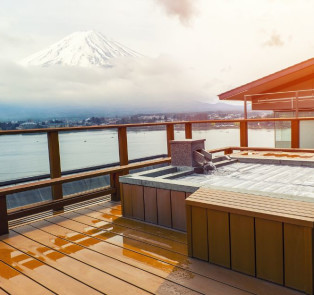
11. Bathe in a Sento
For curious travelers looking to experience a deep-rooted aspect of Japanese culture while alone in Tokyo, a visit to a local sento, or public bathhouse, is an absolute must. Like many parts of Japan, Tokyo is rich with these bathhouses, offering a unique experience beyond just a typical soak.
Bathing in a sento provides a window into everyday Japanese life that's often missed by visitors. It's a time-honored tradition that has persisted through the centuries, offering a place for locals to unwind, cleanse, and socialize. For a solo traveler, a visit to a sento can be an authentic experience that delves into the rhythm of Tokyo's local life.
Finally, visiting a sento can be an unexpected way to meet new friends and connect with the locals. It's not uncommon to strike up conversations in the changing room or lounge areas, offering you insights into the culture of Japan and the city of Tokyo from a local perspective. Immersing yourself in such a quintessentially Japanese tradition is a fantastic way to enrich your solo journey in Tokyo.

12. Explore Shimokitazawa
When traveling alone in Tokyo, the vibrant neighborhood of Shimokitazawa is an essential stop. Known for its vintage fashion, indie music scene, and a myriad of cozy cafés, this locale offers a distinctive Tokyo experience that departs from the hustle of the city's busier districts. One of Shimokitazawa's biggest draws is its unique blend of shops and boutiques. Spend a day getting lost in the labyrinthine streets, browsing second-hand clothing stores, vinyl record shops, and artisanal craft outlets.
The district provides lone travelers an immersive way to experience Tokyo's hip, creative side.
Moreover, Shimokitazawa stands as testament to Tokyo's reputation as a very safe city. Even when exploring alone, travelers can comfortably meander through the neighborhood's winding streets day or night. Coupled with the district's relaxed ambiance, it's an area that allows for unhurried exploration. Taking in Shimokitazawa at your own pace truly underscores the beauty of solo travel in Japan.
13. Tea Ceremony in Hamarikyu Gardens

Navigating Tokyo solo opens doors to some of the city's unique cultural experiences, like the tranquil tea ceremony at Hamarikyu Gardens. Nestled amidst the high rises of this bustling city, these gardens are a serene sanctuary that invites travelers to immerse themselves in an important Japanese tradition.
Attending a tea ceremony offers an authentic glimpse into the culture of Japan, featuring the precise, thoughtful preparation of matcha. Each movement in this ceremony is a display of grace and mindfulness, making it a truly personal and reflective experience.
Being a solo traveler in Tokyo allows you to absorb this ceremonial tranquility at your own pace, making it even more memorable. Hamarikyu Gardens combines natural beauty with a calming atmosphere, perfect for travelers seeking respite from the city's pace. The idyllic setting, complete with a traditional teahouse and meticulously maintained garden landscapes, presents an opportunity to connect with Japan's cultural heritage while enjoying peace and quiet. For solo travel, participating in a tea ceremony at Hamarikyu Gardens is a Tokyo alone experience not to be missed.
14. Walk along the Yanesen

Stepping out in Tokyo solo opens up endless opportunities for exploration, and one such adventure is a leisurely walk along the Yanasen.
This quaint and historic area, tucked away from the city's hustle and bustle, is a treasure trove of traditional architecture, inviting cafes, and unique artisanal shops, making it a delightful discovery for any solo traveler in Tokyo.
Start your exploration at the grand Meiji Shrine and then gradually lose yourself in the winding lanes of Yanasen. This peaceful stroll can be both a journey back in time and a chance to witness the contemporary Japanese lifestyle. An optional stop could be the Mori Art Museum, a small gallery featuring rotating exhibitions that focus on traditional and contemporary art from Japan.
Finally, reward yourself with an unmatched panoramic view of the city from the Tokyo City View Sky Deck. Though there's an additional cost for the Sky Deck, the breathtaking view is absolutely worth it. From this vantage point, Tokyo's breathtaking skyline unfurls beneath you, offering a moment of solitude and reflection on your solo journey.
Walking along the Yanasen, you're not just exploring Tokyo alone, you're fully immersing yourself in the city's vibrant tapestry.

15. Visit the Gotokuji Temple
Navigating Tokyo solo is a voyage of self-discovery, and a visit to the Gotokuji Temple is an experience that will make this journey truly unforgettable. Known as the birthplace of the "maneki-neko" or the "beckoning cat", this lesser-known temple offers a distinct charm away from the city's high-paced attractions.
Gotokuji Temple is an example of how Tokyo's rich history coexists harmoniously with its urban vibrancy. As you wander through the temple grounds, you'll encounter an array of charming maneki-neko figures, each believed to bring good fortune and prosperity. These welcoming cats, lined neatly in their hundreds, create a uniquely captivating sight that is perfect for introspective solo exploration.
Surrounding the temple are many parks where you can enjoy a serene stroll or relax with a good book. Exploring these parks gives you a taste of the tranquil side of Tokyo, further enhancing your solo trip. With its enchanting allure and peaceful surroundings, Gotokuji Temple is a must-visit for any solo traveler seeking to fully experience the unique, hidden gems of Tokyo alone.

16. Visit Daikanyama
On a solo travel mission through Tokyo, make sure you carve out some time to visit Daikanyama. This serene and stylish district, often overshadowed by its glitzier neighbors, is an undiscovered gem for solo travelers, offering a gentler, calmer side of Tokyo life.
Packed with boutiques, cafes, and bookstores, Daikanyama is a haven for the culturally inclined. Meandering down its tree-lined streets alone, you'll stumble upon a world of hidden wonders, from one-of-a-kind fashion finds to artisanal coffee roasters.
What's more, Daikanyama's atmosphere embraces solo visitors. You'll feel perfectly at ease dining alone in its eateries, savoring local delicacies at your own pace, or delving into a good book at Daikanyama T-Site, an iconic bookstore, making it a must-visit locale on your Tokyo solo trip.
So, when in Japan, take the road less traveled and lose yourself in Daikanyama's charm. Alone in Tokyo, yet surrounded by the city's quiet vibrancy, you'll discover that even in the heart of the bustling metropolis, there are pockets of peace to be found.

17. Visit the Yanaka Ginza shopping street
If you're exploring Tokyo solo and want a taste of the city's nostalgic charm, a visit to Yanaka Ginza is a must. This famous shopping street, located in Tokyo's traditional "shitamachi" or downtown area, offers a contrast to the futuristic vibe of the city's more famous districts. It's a fascinating destination that rewards the independent traveler with a genuine feel of old Tokyo.
As you stroll down the shopping street, you'll find an array of shops selling traditional goods, vintage items, and local snacks. Each storefront has its own unique appeal, with proprietors who are often more than willing to chat and share stories. Walking through this friendly neighborhood alone allows you to move at your own pace, taking time to explore the nooks and crannies that pique your interest.
Alone in Tokyo, you'll discover that the seemingly simple activity of walking through Yanaka Ginza is an experience in itself. This area provides a window into everyday life in Tokyo, far removed from the bustling tourist spots.
As a solo traveler, Yanaka Ginza offers an authentic, vibrant, and deeply personal Tokyo experience that lingers long after the trip is over.

18. Check out Nakano Broadway
Tokyo solo travel opens up avenues for unique experiences, and one such place to explore is Nakano Broadway. A multi-story shopping complex known for its wide array of anime, manga, and collectibles, Nakano Broadway is a haven for pop culture enthusiasts and an intriguing visit even for those less familiar with these aspects of Japanese culture.
Nakano Broadway is conveniently accessible via Tokyo's efficient train stations. Once you step off the train, the vibrant energy of the place draws you in. As you navigate the bustling corridors and labyrinth of shops, you'll encounter a diverse selection of goods from vintage toys to high-quality art prints.
Whether you're a die-hard collector or just interested in the eclectic mix of Japanese pop culture, exploring this place alone means you can take your time and truly indulge in your interests.
A trip to Nakano Broadway wouldn't be complete without sampling the local food. The complex is home to numerous eateries where you can taste a variety of Japanese dishes, from savory ramen bowls to delicate mochi sweets. This immersion in Japanese cuisine adds another dimension to your solo journey in Tokyo. A visit to Nakano Broadway is truly a feast for the senses, providing an authentic and engaging Tokyo alone experience.
19. Hiking in Mt. Takao

For those embarking on a Tokyo solo journey, climbing Mt. Takao is an opportunity you wouldn't want to miss. This picturesque mountain, located just outside the city's bustling center, offers an invigorating combination of natural beauty, physical challenge, and cultural enrichment - a unique escapade for any solo traveler in Tokyo.
Reaching Mt. Takao is a breeze with Japan's reliable public transportation system. Once there, various trails cater to all levels of fitness and hiking experience, making the mountain accessible to everyone. As you ascend, lush forests, tranquil streams, and occasional glimpses of wildlife offer a refreshing contrast to Tokyo's urban landscape.
Climbing Mt. Takao alone allows you to connect with nature at your own pace and take in the breathtaking vistas unfolding with each step.
As you descend, the satisfaction of conquering the mountain and the lingering tranquility of the natural and cultural exploration make for a memorable Tokyo-alone adventure.
Your visit solo to Mt. Takao can also include a rich cultural experience. The mountain is home to the ancient Yakuoin Temple, a serene place of worship where you can immerse yourself in Japanese spiritual traditions.
Embarking on your first solo trip to Tokyo Japan, is not just about exploring new places; it's about stepping out of your comfort zone and immersing yourself in a vibrant culture that is unlike any other. From the serenity of the Meiji Shrine to the electric energy of the Shibuya Scramble, each location offers a unique snapshot of the city's dynamic character. With every step, whether you're strolling in bustling streets or serene gardens, you'll realize that being alone in Tokyo only adds to the richness of your experience.
Navigating Tokyo solo can seem daunting at first, but with tools like Google Translate, Google Maps, and the city's efficient public transportation system, you'll find your way around quite smoothly. It's also worth noting that Tokyo is a very safe city, making it a comfortable destination for solo travel. Remember to have a reliable mode of payment, like debit cards, which are widely accepted, ensuring your solo adventures are never hindered. Tokyo's food scene is another adventure on its own, with eateries ranging from quaint sushi joints to Michelin-starred restaurants where you can indulge in exquisite Japanese cuisine.
Tokyo is a city that never stops evolving, and exploring it alone lets you engage with its rhythm at your own pace. Each visit feels like a new discovery, with unexplored corners waiting for your return. As your solo travel journey comes to a close, you'll leave not only with unforgettable memories but with a newfound appreciation for this amazing city. Whether it's your first time or a return visit, you'll find that being alone in Tokyo always offers something new and exciting. It's more than just a trip - it's a journey of self-discovery and an adventure that's worth every step.
Hello, curious traveler! Embark on a unique experience with Hello, curious traveler! Embark on a unique experience with City Unscripted Tokyo. Our personalized, private tours, led by local hosts, make you feel like you’re exploring the city with a knowledgeable friend. We’ll take you to well-known sights and reveal Tokyo’s hidden gems, unveiling stories typically missed by traditional tours. So unscript your journey, and see Tokyo through the eyes of our local hosts!

Top private experiences in Tokyo

Get a head start: Kickstart your trip to Tokyo

Curious curios: Discover Tokyo's unique shopping scene

Bottoms up, Tokyo-style! The “sake” experience
We’ll pair you with the perfect host
There is no better way to see a city than with a friend who lives there. This is why we carefully match guests with their perfect host based on interested, personality and type of experience so they can discover a city beyond the tourist trail.
Find your perfect host and experience using our nifty little tool
You may also like

Discover Sangenjaya: Exploring Tokyo's best-kept secret

Tokyo's fall magic: A guide to experiencing the city's seasonal splendor

An insider's guide to Tokyo's best shopping spots

Exploring Ebisu: Uncovering Tokyo's trendy and historic best-kept secret

Spring in Tokyo: The ultimate experience of cherry blossoms and spring festivities

Christmas in Tokyo: A journey through the city's holiday wonderland
Explore our cities in japan.

Popular destinations

San Francisco

Mexico City

Read more Tokyo articles

Solo Travel Tokyo Guide: 20 Things to Do Alone in Tokyo, Japan
Embarking on a solo travel Tokyo, Japan, is an exhilarating experience that immerses you in the vibrant culture, rich history, and bustling city life. From iconic landmarks to hidden gems, Tokyo offers many activities for solo travelers. This comprehensive guide will explore 20 exciting things to do alone in Tokyo, ensuring you make the most of your solo travel experience. Get ready to delve into Tokyo’s wonders of solo travel!

Solo Travel Tokyo: Exploring the Wonders of Traveling Alone in Japan’s Vibrant Capital
Unleash your imagination at the yamashiroya toy store: where your toy story begins.
- Step into the whimsical world of the Yamashiroya Toy Store in Ueno. This multi-story wonderland is a haven for toy enthusiasts. Browse through a vast collection of toys, action figures, and unique items, and let your imagination run wild as you create your own Toy Story adventure.
- Pricing: Free admission.
- Timing: 10:00 AM – 8:00 PM.
- Fun Fact: Established in 1919, Yamashiroya Toy Store has a rich history of providing joy to generations of children and adults alike.

Relax with a Cup of Coffee and Witness the Bustling Shibuya Scramble
- Experience the mesmerizing chaos of the Shibuya Scramble Crossing, one of Tokyo’s iconic landmarks. Find a cozy spot in a nearby café, order your favorite brew, and witness the rhythmic flow of pedestrians as they navigate this bustling intersection. Immerse yourself in the vibrant energy of Tokyo while enjoying a moment of relaxation.
- Pricing: Coffee prices vary by café.
- Timing: 24/7.
- Fun Fact: The Shibuya Scramble is estimated to have over 2,500 pedestrians crossing during peak times.
Indulge in Culinary Delights and Forge Connections on a Tokyo Food Tour
- Indulge in a guided food tour to discover Tokyo’s culinary delights while connecting with fellow food enthusiasts. Explore hidden gems, street food stalls, and traditional izakayas, where you can savor authentic flavors and mingle with locals. Let the tantalizing aromas and diverse tastes of Tokyo’s cuisine take you on a gastronomic adventure.
- Pricing: Prices vary depending on the tour and duration.
- Timing: Tours are available throughout the day.
- Fun Fact: With an unparalleled culinary scene, Tokyo boasts the highest number of Michelin-starred restaurants compared to any other city in the world.

Immerse Yourself in the Wonderful World of the Robot Restaurant
- Prepare to be dazzled by the electrifying performances at the Robot Restaurant in Shinjuku. Marvel at the futuristic atmosphere as robots, dancers, and musicians come together to create a sensory spectacle. Let yourself be transported to another dimension where technology meets entertainment, leaving you with an unforgettable experience.
- Pricing: Admission tickets start at around 8,000 yen.
- Timing: Shows are available in the evening.
- Fun Fact: The Robot Restaurant features over 100 robots in its performances.
Embrace Comfort and Efficiency at a Capsule Hotel: Your Cozy Pod Retreat
- Experience the unique accommodation options of a capsule hotel. These compact pods provide a cozy and efficient space for solo travelers. Enjoy the minimalist design, take advantage of the convenient amenities, and mingle with fellow travelers in the communal areas. It’s an excellent opportunity to socialize and exchange travel stories with like-minded adventurers.
- Pricing: Prices vary depending on the hotel and location.
- Fun Fact: Capsule hotels were first introduced in Osaka in 1979 and have since become synonymous with Japanese innovation and efficiency.
Get Sociable at All-You-Can-Drink Sake
- Embrace the Japanese drinking culture by visiting an izakaya that offers all-you-can-drink sake. Engage in lively conversations with locals and fellow travelers while enjoying an extensive selection of sake flavors. Expand your knowledge of this traditional Japanese beverage and savor the intricate tastes that make sake a beloved part of Japanese culture.
- Pricing: Prices vary depending on the izakaya and duration.
- Timing: Evening and night hours.
- Fun Fact: Sake is made from rice and water, and its production dates back over 2,000 years in Japan.
Get a Spectacular (And Free!) View from the Tokyo Metropolitan Government Building
- Head to the Tokyo Metropolitan Government Building in Shinjuku to enjoy panoramic cityscape views from the observation decks on the 45th floor. Take the breathtaking skyline on clear days, including iconic landmarks such as Tokyo Tower and Mount Fuji. Best of all, admission to the observation decks is free, making it a budget-friendly activity for solo travelers.
- Timing: 9:30 AM – 11:00 PM.
- Fun Fact: The Tokyo Metropolitan Government Building is one of the tallest government buildings in the world.

Check also: Unique Japanese Food For Travelers To Japan
Immerse Yourself in a Video Game Arcade
- Unleash your inner gamer at one of Tokyo’s vibrant video game arcades. Test your skills on various arcade games, including classics and cutting-edge virtual reality experiences. Engage in friendly competition with locals or soak up the energetic atmosphere while immersing yourself in Japan’s gaming culture.
- Pricing: Game prices vary per arcade.
- Fun Fact: Japan is home to some of the most influential video game companies, making it a hub for gaming enthusiasts.
Take a Stroll in Ueno Park
- Escape the urban hustle and bustle by visiting Ueno Park, a tranquil green space in the heart of Tokyo. Explore the park’s vast gardens, visit museums such as the Tokyo National Museum and the Ueno Zoo, or relax with a picnic under the cherry blossom trees during spring. Enjoy a peaceful respite while immersing yourself in nature’s beauty.
- Pricing: Free admission to the park; museums have separate fees.
- Timing: The park is open 24/7, and museums have specific operating hours.
- Fun Fact: Ueno Park has over 8,800 trees, including approximately 1,200 cherry blossom trees.
Experience the Adrenaline Rush of Tokyo Subway during Rush Hour
- Dive into the heart of Tokyo’s vibrant transportation system by experiencing the adrenaline rush of the subway during rush hour. Witness the organized chaos as commuters navigate through the labyrinth of stations. Observe the system’s efficiency and marvel at the punctuality and precision that keeps Tokyo moving.
- Pricing: Subway fares vary depending on the distance traveled.
- Timing: Morning and evening rush hours.
- Fun Fact: Tokyo’s subway system is known for its punctuality, with an average delay of fewer than 18 seconds.

Experience the Magic of ‘Spirited Away’ at the Studio Ghibli Museum
- Step into the enchanting world of Studio Ghibli at the renowned Studio Ghibli Museum in Mitaka. Explore the magical exhibits showcasing the captivating animations created by legendary filmmaker Hayao Miyazaki. Immerse yourself in the whimsical atmosphere, discover the creative process behind the films, and relive the beloved characters and stories that have touched hearts worldwide.
- Pricing: Admission tickets start at around 1,000 yen.
- Timing: 10:00 AM – 6:00 PM.
- Fun Fact: The museum features a life-size replica of the robot character from the film “Castle in the Sky.”
Relax at Hamarikyu Teien
- Escape the bustling city and find tranquility at Hamarikyu Teien, a traditional Japanese garden in central Tokyo. Wander through meticulously landscaped gardens, serene ponds, and teahouses. Enjoy a cup of matcha tea while taking in the serene atmosphere.
- Pricing: Admission fee of 300 yen.
- Timing: 9:00 AM – 5:00 PM.
- Fun Fact: The garden was a feudal lord’s residence and was later opened to the public in 1946.
Shopping at Ginza Mall
- Indulge in a luxurious shopping experience in the upscale district of Ginza. Explore the high-end department stores, boutique shops, and flagship stores of renowned international brands. Ginza Mall offers many shopping options for solo travelers seeking luxury, from fashion and jewelry to cosmetics and electronics.
- Pricing: Varies depending on the stores.
- Timing: Store operating hours vary.
- Fun Fact: Ginza is one of the world’s most expensive and prestigious shopping districts.
Strolling in the Tokyo Imperial Palace
- Discover the grandeur of the Tokyo Imperial Palace, the primary residence of the Emperor of Japan. Stroll around the palace’s vast grounds, admiring the stunning architecture, beautiful gardens, and historic structures. While the palace is not open to the public, exploring the surrounding areas provides a glimpse into Japan’s rich imperial history.
- Pricing: Free admission to the outer gardens.
- Timing: Outer gardens are open 24/7.
- Fun Fact: The palace is where the Edo Castle once stood, dating back to the 15th century.
Enjoy the Tokyo City View
- Ascend to the observation decks of Tokyo Skytree or Tokyo Tower for breathtaking city skyline views. Marvel at the vast urban landscape, glittering lights, and panoramic vistas stretching as far as the eye can see. Capture stunning photographs and witness the awe-inspiring beauty of Tokyo from above.
- Pricing: Admission fees vary depending on the observation deck.
- Timing: Operating hours vary.
- Fun Fact: Tokyo Skytree is the tallest tower in the world, while Tokyo Tower is a prominent city symbol.
Visit the Meiji Shrine in Tokyo
- Immerse yourself in the tranquility and sacredness of the Meiji Shrine, a place of reverence honoring Emperor Meiji and Empress Shoken. Discover the enchanting beauty of the verdant wooded surroundings, engage in time-honored rituals, and extend heartfelt prayers for blessings of prosperity and good fortune. Witness the tranquil beauty of the shrine and embrace the peaceful ambiance amidst the bustling city.
- Pricing: Free admission to the shrine.
- Timing: 5:00 AM – 6:00 PM.
- Fun Fact: The shrine was built in 1920 and is surrounded by a forest with over 100,000 trees donated from all over Japan.
Explore Harajuku
- Immerse yourself in Harajuku’s vibrant and eccentric neighborhood, known for its unique fashion, street art, and trendy shops. Discover quirky boutiques, vintage stores, and the famous Takeshita Street, lined with colorful shops offering a variety of fashion and accessories. Experience the vibrant energy and creative spirit that defines Harajuku’s unique cultural scene.
- Pricing: Varies depending on the shops and attractions.
- Fun Fact: Harajuku is famous for its street fashion subculture and is a gathering place for cosplayers and fashion enthusiasts.
Cross Shibuya Crossing
- Marvel at the Spectacle of Shibuya Crossing, a Thriving Global Intersection. Join the crowds as the traffic lights turn red and pedestrians flood the intersection from all directions. Capture the iconic moment as you navigate the bustling scramble and become part of Tokyo’s urban tapestry.
- Pricing: Free.
- Timing: Available 24/7.
- Fun Fact: Shibuya Crossing is estimated to have over 2,500 pedestrians crossing during peak hours.
Travel Back in Time in Yanaka
- Discover the old-world charm of Yanaka, a neighborhood that has preserved its traditional atmosphere amidst modern Tokyo. Take a leisurely walk along the narrow streets with quaint shops, temples, and traditional wooden houses. Explore the Yanaka Cemetery, visit local artisans’ workshops, and experience a glimpse of Tokyo’s past.
- Timing: Open all day.
- Fun Fact: Yanaka is one of the few areas in Tokyo that survived the Great Kanto Earthquake of 1923 and World War II bombings.
Visit a Robot Café
- Immerse yourself in futuristic entertainment at a Robot Café, where cutting-edge technology meets vibrant performances. Enjoy a spectacle of robotic dancers, musicians, and performers, creating a unique and surreal experience. Be mesmerized by the synchronized movements and dazzling visuals that showcase Japan’s innovation and creativity.
- Pricing: Admission fees vary.
- Timing: Shows are scheduled throughout the day.
- Fun Fact: Robot Cafés are a testament to Japan’s fascination with robotics and their integration into various aspects of daily life.
Have Fun in Shinjuku
- Conclude your solo adventure in Tokyo with a visit to Shinjuku, a vibrant entertainment district that never sleeps. Explore the bustling streets, neon-lit alleys, and vibrant nightlife. Indulge in delicious street food, visit karaoke bars, or enjoy a nightcap at one of the many bars and clubs. Experience the vibrant energy of Shinjuku and create lasting memories of your solo travel in Tokyo.
- Pricing: Varies depending on activities and venues.
- Timing: Shinjuku is lively day and night.
- Fun Fact: Shinjuku Station is one of the busiest railway stations in the world, serving millions of passengers daily.
With this comprehensive guide of 20 things to do in solo travel Tokyo, you’re well-equipped to embark on a remarkable solo travel adventure in the captivating city. Whether you seek cultural immersion, futuristic experiences, natural beauty, or culinary delights, Tokyo offers many opportunities for solo travelers to create unforgettable memories. Embrace the spirit of adventure, immerse yourself in the vibrant culture, and enjoy the unique experiences that await you in the bustling metropolis of Tokyo, Japan. Safe travels!
Q: Is Tokyo good for solo travelers?
Q: how to enjoy tokyo alone, q: how do i plan a solo trip to tokyo, q: is it fun to travel to japan alone, leave a comment cancel reply.
Save my name, email, and website in this browser for the next time I comment.
A 5-Day Tokyo Itinerary for Beginners – What to See and Do in Japan’s Capital!

Welcome to this detailed 5-day Tokyo itinerary, designed as the ultimate guide for first-time visitors to Japan. I have updated it as of January 2024 to reflect new attractions and must-do experiences!
My goal is to help you maximize your time in Tokyo without wasting precious hours on unnecessary travel or tourist traps so that you can have the best possible trip! I firmly believe in not packing too much stuff into one day – striking the right balance between organizing popular attractions in advance whilst leaving some time for free exploration. Some of the best experiences are the ones you find by chance!
Unlike many other travel bloggers who have only visited Tokyo once or twice, having lived and worked in Tokyo for several years, you can be assured that the local knowledge and insights I have used to build this itinerary are reliable.
If you are heading to Japan for the first time, then be sure to download my 101 essential Japan travel tips here .
Heading to Kyoto? Then check out my 3-day Kyoto itinerary here . If you are planning to visit Osaka, check out my Osaka itineraries here .
This page contains affiliate links. If you choose to purchase after clicking a link, I may receive a commission at no extra cost to you .
5-Day Tokyo Itinerary Overview:
Day one: shibuya, harajuku, meiji shrine, shinjuku, day two: ghibli museum, asakusa, tokyo skytree, shimbashi, day three: ueno, akihabara, ginza, roppongi, day four: tsukiji fish market and local neighborhoods, day five: odaiba, and tokyo tower, day one – shibuya, harajuku, meiji shrine, shinjuku, 10 am – 1 pm explore shibuya.

Begin your orientation of Tokyo by experiencing one of the city’s most iconic sights – the world-famous Shibuya scramble crossing. There are several points in the area where you can get a good view of the crossing to take photos – we’ll talk about those shortly.
As you exit Shibuya station be sure to stop by the famous Hachiko statue for a selfie before exploring the area further. Shibuya is a shopper’s paradise and there are some unique stores here that you should definitely check out.
Take a Selfie with Hachiko
Hachiko Statue in Shibuya is a beloved and iconic symbol of unwavering loyalty, nestled in the heart of Tokyo. This bronze monument, standing at the bustling intersection just outside Shibuya Station, pays homage to the extraordinary bond between a faithful Akita dog named Hachiko and his owner, Dr. Ueno. The story of Hachiko’s remarkable loyalty has touched the hearts of people around the world and is a testament to the enduring power of friendship and devotion.
To fully appreciate the statue and take photographs without being engulfed by the crowds, consider visiting early in the morning or during less crowded times. Be prepared to wait your turn for a photograph with Hachiko!
Shopping in Shibuya
When in Shibuya, I recommend that you pay a visit to the giant Tower Records store for some old-school browsing for vinyl, CDs, and DVDs. It’s not just music fans that will feel at home, there’s also a cozy cafe and bookstore that stocks a selection of English books and magazines too.
I also recommend visiting the Tokyu Hands store, where you can find almost anything and is the perfect place to pick up souvenirs and gifts, from cute stationery to towels, beauty products, and handmade gifts.
For jaw-dropping views head on up to Shibuya Scramble Square building to the Shibuya Sky viewing platform. This open-air observation deck is the highest point in Shibuya at approximately 230 meters above ground. Tickets are priced at around 2,000 yen per adult, but you can save 200 yen if you order them online in advance.
Another of Shibuya’s latest attractions is Miyashita Park , a shopping mall with a rooftop park offering plenty of unique restaurants, cafes, and stores to discover.
For something a bit quirky – they also have this cafe in Shibuya staffed by robots called Pepper Parlor . They mainly serve waffles, but it’s quite fun if you feel like a sit down for a while!
3 Of The Best Shibuya Crossing Photo Spots
Aside from the Shibuya Sky observation deck, there are a few other spots around Shibuya where you can get a good view of the Shibuya crossing including:
- L’OCCITANE Café – this Shibuya store by the French beauty brand also features a café with prime views of the Shibuya crossing. Enjoy the views with a light lunch, patisserie item, or herbal tea.
- Shibuya Station – if you don’t want to pay for a good photo spot, there is a place inside Shibuya Station where you can get pretty good views – for free! You’ll find it on the walkthrough to the Mark City shopping complex.
- Magnet by Shibuya 109 – the roof terrace of this commercial building has a unique photo spot where you can snap some selfies or for 1,000 yen you can have photos taken using the remote camera situated on top of the building for 100 seconds.
Once you have finished exploring Shibuya, it’s time for a short walk over to Harajuku!
1 PM – 4 PM Harajuku and Meiji Shrine

It’s quite likely that you will recognize Harajuku as the center of Tokyo’s youth culture and emerging street fashion, although these days it’s much more commercial than it used to be. However, you should definitely still pay a visit to buzzing Takeshita-Dori Street, lined with small clothing boutiques, and dessert and crepe shops just to check it out.
Harajuku is famous for its selection of rainbow-colored street foods. Whilst it may not be the healthiest, it sure makes for a good photo! Highlights include the rainbow-colored grilled cheese sandwiches at Le Shiner, rainbow candy floss at Totti Candy Factory, and rainbow roll ice cream at Rainbow Sweets Harajuku.
In Harajuku, you can also try purikura. Purikura (taken from the English words ‘print club’, are popular photo booths where you can go with friends or family to take fun photos with different themes and backgrounds. In Harajuku you can find Japan’s first store dedicated to purikura – Purikura Land , which has more than 25 different kinds of booths to choose from.
4 Fun Food Stops to Try in Harajuku
In addition to rainbow-colored cheese toasties and giant candy floss, here are a few of my favorite fun food stops around Harajuku:
- Reissue Café – This rustic independent café is tucked away down one of Harajuku’s side streets and is famous for its 3D lattes! As well as coffee, there’s also a limited lunch menu if you are feeling peckish.
- Gonpachi – Part of this famous chain of Japanese restaurants, this branch of Gonpachi focuses on temaki or hand-rolled sushi. A good healthy alternative amidst Harajuku’s throng of dessert and candy stores.
- Sakuratei – this okonomiyaki (savory pancake) restaurant is very foreigner-friendly and provides diners with a unique atmosphere surrounded by original artworks and murals.
- Anakuma Café/Bear-in-the-hole cafe – this one has been doing the rounds on social media quite a bit – it’s the cafe where you get the coffee via a bear paw that comes out of a hole in the wall!
Note on Animal Cafes:
Harajuku is also home to many animal cafés – places where you pay an entrance fee then hang out with cats, dogs, rabbits, owls, hedgehogs, or even pigs. If you do decide to visit one of these establishments, be warned that the quality of life for the animals and their living conditions can be quite depressing as animal welfare is often not a priority.
Harajuku Stores worth visiting:
- Line shop – Line is Japan’s most popular messaging app and this store is dedicated to its cute characters whose faces are featured on a huge array of merchandise from mobile phone covers to stuffed toys.
- Daiso – This 3-level 100-yen store is the perfect place to pick up souvenirs, household items, and snacks!
- Laforet Harajuku – for fashion and streetwear, this shopping mall has more than 100 stores to discover.
- Cat Street – situated between Harajuku and Shibuya, this winding street is around half a mile long and lined with clothing shops.
Photo Spots in Harajuku:
- Tokyu Plaza Omotesando Harajuku – this shopping mall is a popular photo spot thanks to its kaleidoscope of mirrors situated by the entrance.
- Galaxy Harajuku – this Samsung Galaxy store is a popular photo spot for Japanese Instagrammers and has lots of great places for photos including interactive displays by TeamLab and their photogenic escalators.
- Alice on Wednesday – this Alice in Wonderland-themed shop has themed photo spots inside the store and the exterior too with its cute miniature entrance.
- Meiji Shrine Sake Barrels – on the approach to Meiji Shrine many sake barrels and Western wine barrels are displayed as offerings to the shrine and make for great photo backdrops.
Harajuku Tours
If you’d like to do a tour of Harajuku, I recommend Arigato Travel’s Crazy, Cute, Kawaii Food Tour which includes 5 different food stops!
Explore Meiji Shrine
After you have stopped for lunch in Harajuku and perhaps sampled some of the sweet treats on offer, take a stroll to the nearby Meiji shrine and enjoy the peaceful gardens and ponds. After the crowds and sensory overload of Shibuya and Harajuku, this will be a welcome change of pace.
Unlike Sensoji which is a Buddhist temple, this is a well-known Shinto shrine. Shinto is Japan’s ancient religion, so I think it’s interesting to visit both. The Meiji Jingu website has some useful etiquette tips for tourists in English which I would recommend reading before you go.
Once you have finished exploring the Meiji Shrine, head over to Harajuku Station and jump on the JR Yamanote Line train to Shinjuku.
5 PM Arrival in Shinjuku

Spend your first night in Tokyo in Shinjuku, which doesn’t really come to life until after dark. Wander the lantern-lit streets and discover tiny hidden restaurants and bars with lively atmospheres.
Two of my top recommended spots include the Omoide Yokocho alley packed full of tiny food stalls and restaurants, and the Golden Gai district where you’ll find narrow streets lined with snug counter bars and charismatic owners.
After dinner, there’s a whole heap of entertainment options to choose from including watching movies, gaming arcades, pachinko halls, theme bars, karaoke, and bowling.
When in Tokyo, you should try some karaoke at the end of the night. Even if there are only two of you, you can still rent a small private room for a reasonable price. It’s a classic Tokyo night out like a local!
Top karaoke rooms in Shinjuku include Karaoke no Tetsujin (one of the more reasonably priced places), Karaoke Kan, and Karaoke Uta Hiroba, whose prices also include free soft drinks.
Below are some of my top recommendations for places to check out!
Hobo Shinjuku – A cool development of 10 traditional houses and warehouses that have been converted in izakaya and bars.
New York Bar at the Park Hyatt – If you’re in Japan on honeymoon or celebrating a special occasion, you might want to go for cocktails at the Park Hyatt’s New York bar, made famous by the Hollywood movie Lost In Translation. It’s on the more expensive side, but totally worth the cost for a really memorable experience. There is a cover charge of 2,750 yen per person which includes live jazz performances and incredible nighttime city views from the floor-to-ceiling windows. Check the website for dress code, opening times, and other important information.
Themed Bars and Restaurants in Shinjuku
Ninja Shinjuku
The unique Ninja-themed restaurant is the perfect place to enjoy authentic Japanese cuisine and be entertained at the same time. Ninja Shinjuku serves quality and creative Japanese food including Wagyu beef, served by Ninja. Guests can also enjoy the special magic performances while dining.
This unusual, themed café, which looks like one big 2D drawing will make you feel like you’re in a real-life manga comic. It’s open every day until 10pm and serves a range of hot drinks, flavored shaved ice, and colorful desserts.
Zauo Fishing Restaurant
Tokyo’s Zauo restaurant is a unique dining experience where you catch your own dinner! Inside the Shinjuku branch, you are welcomed by a boat-shaped seating area, surrounded by a moat filled with a variety of fish. Once seated, you are handed a fishing rod and some bait to catch your dinner, which the staff will then grill and season for you. Restaurant located inside the Shinjuku Washington Hotel.
Neo Shinjuku Atsushi
Just opened in 2023, this dystopian-themed bar and restaurant serves vacuum-packed food and sake with insects in.
Hidden on the 4th floor of an unassuming building in Shinjuku, you’ll uncover the immersive atmosphere of a cyberpunk universe. The space is bathed in the mesmerizing glow of vivid neon lights, saturating the air with the very essence of cyberpunk, intensifying the exhilaration of your dining experience.
Restaurant information Neo Shinjyuku Atsushi / NEO新宿アツシ Address: Tokyo-to, Shinjuku-ku, Shinjuku 3-3-7 Sankei Building 4F 東京都新宿区新宿3-3-7 三慶ビル 4F Open 12:00 p.m.-5:00 p.m. (lunch), 6:00 p.m.-8:00 p.m. (dinner) Bar from 8pm
Attractions and Things to Do in Shinjuku
Giant godzilla head – free.
Keep an eye out for the giant Godzilla head peeking over the rooftops beside the Shinjuku Toho Building. Fun fact: The height of the head from the ground (50 meters) is the same height the monster was in the 90s movie Godzilla vs Mothra.
Shin-Okubo -Free
Tokyo’s Korea Town is the go-to place for anything relating to South Korean culture, including K-pop-related merchandise, food, and fashion. There’s also a large Korean-themed Don Quijote store offering a little of everything at discount prices.
Themed Escape Rooms at Tokyo Mystery Circus
The world’s first escape room-themed park in Kabukicho offers a wide range of escape rooms based on stories and different thrilling mysteries, complete with puzzles, interactive props, and cleverly constructed plots. Most of the games are available to play in English, you can check out the list of events here .
One of the more terrifying options is the 80-minute-long Sadako and the Cursed Video game based on the series of Ring horror films!
Kabukicho Tower – Free Entry
This new skyscraper opened in 2023 and has a neon-lit entertainment food hall on the second floor in the style of the many popular yokocho alleys around Japan, along with a gaming arcade with a bar, and movie theater.
Tokyo Government Metropolitan Building – Free Entry
Gaze out over the city with commanding vistas of downtown Tokyo from an impressive 202-meter altitude at this free observatory.
Day Two – Ghibli Museum, Asakusa, Tokyo Skytree, Shinbashi
10 am visit the studio ghibli museum.

If you are a fan of any of the Studio Ghibli movies, you may want to visit the Ghibli Museum in Mitaka. You have to pre-book tickets in advance so you will need to plan this out properly before you go. I would highly recommend booking these the moment they go on sale to avoid being disappointed. Tickets go on sale at 10 a.m. (JST) on the 10th of each month for the following month. So for example, if you want to buy tickets for any date in February you’d need to buy the ticket on Jan. 10.
You can buy tickets online here .
If you don’t manage to get tickets you can buy them through tour companies but you will need to pay more than double so you need to evaluate if it’s worth the investment for you.
The museum can be reached from Mitaka Station on the JR Chuo Line and takes 15 minutes from Shinjuku Station. There are shuttle buses from the station to the museum or you can walk it.
The museum gets busy so I would recommend getting there for around 10 am when it opens. You can stay as long as you want once you’re inside.
One thing to note is that no photography is allowed inside and most of the exhibits only have information in Japanese. If you try to get your phone out to Google translate the information, you’ll get told off by the staff!
From Mitaka, take the Chuo Line to Kanda and change for the Ginza Line to Asakusa.
3 PM Sensoji Temple in Asakusa

In the afternoon, take some time to explore Sensoji, one of Tokyo’s most famous temples and the oldest. It’s visited by millions of tourists each year and is always busy.
Enter through the famous thunder gate and in addition to seeing the temple, there are also many souvenir and food stalls to discover. Just outside the temple, rickshaw rides are also a popular way to explore the area. You can also book a private walking tour of the area to include the temple here , or for further details check out the Go Tokyo website .
3 Street Foods to try around Sensoji
The Nakamise shopping street that leads up to Sensoji Temple is a great place to try some of the area’s local street food and snacks. Here are a few top recommendations for foods to try:
- Ningyo-yaki – These are doll-shaped cakes made from soft sponge and filled with sweet red bean paste.
- Imo yokan – A kind of Japanese confectionary made from sweet potato that pairs perfectly with a cup of green tea.
- Senbei – You can find many kinds of freshly baked Japanese rice crackers on Nakamise with different flavors and toppings – give them a try!
Pro Sensoji viewing tip: there’s a great free spot where you can enjoy awesome views of the temple grounds and take photos that most tourists don’t know about.
Just across the street from the temple, you’ll find the Asakusa Culture Tourist Information Center, which has a wonderful observation terrace on the 8 th floor that is completely free of charge to access and is open until 10pm daily. Or if you prefer, you can also enjoy the views from the adjacent café.
After you have finished exploring Sensoji and the traditional streets of Asakusa, take a short walk across the river to Tokyo Skytree!
5:30 PM Explore Tokyo Skytree

If you’re seeking out some of the best views of Tokyo, then you won’t go wrong at the Tokyo Skytree. You can buy tickets at the door or you can purchase advance tickets here if you don’t want to wait in line. If you are visiting at the weekend, it’s probably a good idea to book your tickets in advance as it gets crowded.
After you have been up to the observation deck, there are plenty of shops to visit in the Solamachi complex and you can stop in one of the many restaurants for dinner if you wish. There are often seasonal events going on around the Skytree too that are worth a look. For example, at Christmas time there are illuminations and a German-style Christmas market.
During the spring, special events include cherry blossom photo spots and a kid’s amusement park. The tower is also lit up at night-time in beautiful pink sakura colors.
Another popular dining spot close to Skytree is the Kura Sushi restaurant which is the world’s largest conveyor belt sushi restaurant where you can feast on delicious plates of sushi from as little as 110 yen each!
Stop for dinner in the Skytree area, or if you want a more authentic local dining experience, then hop on the train and take the Asakusa subway line a few stops to Shimbashi station.
8 PM Dinner in Shimbashi Area
Shimbashi is a popular dining district for many of Tokyo’s workers who flock there to let off steam after a long day at the office! One of my favorite spots around here is Ginza Corridor, a lively street filled with small bars and restaurants that runs under the train tracks between Yurakucho and Shimbashi.
I find that the best way to explore this area is to just stroll around and try eating somewhere that looks inviting, followed by a bit of post-dinner bar hopping. I love this street because it’s rare to see tourists here and you can get a real sense of what life in Tokyo is like. You can find all kinds of restaurants here, from traditional Japanese izakaya, to French bistros and Mexican restaurants.
Day Three – Ueno, Akihabara, Ginza, Roppongi
10 am explore ueno.

Start your third day in Ueno Park, home to six museums including the Tokyo National Museum and the Tokyo Metropolitan Art Museum as well as Ueno Zoo . Spend the morning exploring the museums, and perhaps stop for coffee and cake at one of the parkside cafes. This area is also a popular spot for cherry blossom viewing during the spring.
Other spots in Ueno I love include the Momi no Yu foot spa cafe, where you can rest your tired feet in a hot foot spa whilst enjoying a complimentary 5-minute massage and some herbal tea.
Ueno is also home to Nezu Shrine, one of the oldest shrines in Tokyo, established in 1705. The shrine has a series of striking red Torii gates and a koi pond and is said to be one of the most beautiful shrines in Tokyo.
After you have finished exploring Ueno, walk or hop on the Yamanote Line two stops to Akihabara.
1 PM Go Electric in Akihabara

Tokyo’s electronic district of Akihabara is the holy grail for fans of Japanese anime and manga and is also home to most of Tokyo’s famous maid cafes. Visiting a maid cafe is a bit of a weird experience, but definitely one of those “only in Japan” things you should try. When I visited one for the first time, I was relieved to find out that the customers were a mix of tourists, groups of friends, and couples, and not just single men.
If you’re into Japanese anime and manga then you can spend some time exploring the various anime stores such as the Mandarake Complex, or perhaps you can check out one of the many gaming arcades. Try Super Potato for retro games, or Tokyo Leisure Land for music ones!
If you have a driving license, how about trying a street go-karting experience ? Alternatively, if you’re looking for activities that are a little less full-on, I really like Kanda Myojin Shrine and the mAAch ecute shopping area located under railway arches, which is home to independent boutiques, cafes, and even a craft beer brewery.
4 PM Shopping in Ginza

After you have finished exploring Akihabara, take the train to Ginza, you can get there by taking the Yamanote Line to Yurakucho which is just a short walk from Ginza’s main shopping district.
Ginza is to Tokyo what Fifth Avenue is to New York, or Regent Street is to London. It’s one of Tokyo’s most popular shopping areas. From the swanky designer boutiques in the Ginza Six shopping complex, to the flagship department stores like Mitsukoshi and Muji, you’ll find all the major Japanese and international brands here. In addition to the many, many shops, there are plenty of pleasant restaurants and cafes around too, perfect when you need a break.
Another attraction in Ginza worth checking out if you have time is the kabuki theater , a reconstruction of the original theater site that was first built in 1889 which stages regular kabuki drama performances.
Kabuki is a traditional Japanese art form known for its dramatic makeup and is performed by an all-male cast. Tickets can be purchased for entire performances (which can last four hours!) or for single acts if you just want to get a taste of it. English audio is available through translation sets which can be rented.
You could also visit the Art Aquarium, a cool aquarium/art exhibition with installation works & sculptures made out of goldfish tanks lit up by colored lights. Tickets are 2,300 yen per person and you can book online in advance through the website here.
6 PM Explore Roppongi Hills

From Ginza, take the Hibiya Line train to Roppongi for the evening. Before dinner, be sure to check out the Roppongi Hills complex, the whole area feels so elegant and cosmopolitan. I really love the panoramic views from the observation gallery in the Mori Tower , and there are often interesting modern art exhibitions taking place here at the Mori Art Museum . If you have some time to spare, there’s a cinema, shops, bars, and restaurants in the complex too.
One fun place for dinner in the Roppongi area is Gonpachi. Gonpachi is a chain of Japanese izakaya and this one is famous for being the inspiration for the final fight scene in the Tarantino movie Kill Bill. It has a really lively atmosphere and the food is good and reasonably priced. They also have taiko drum performances some nights too.
You can check out the menu in advance and make a reservation (recommended) through the website here .
Day Four – Tsukiji Market and Local Neighborhoods
9 am tsukiji fish market tour & sushi making workshop.

Today is all about getting to know the real Tokyo, a bit more like a local – away from the massive crowds of tourists that you’ll encounter at sites like Senso-ji and Shibuya Crossing. Alternatively, if you want to get out of the city, you could take a day trip to nearby Kamakura, Yokohama, or even Nikko.
But in this instance, we’ll start the day with a visit to Tsukiji fish market. For decades Tsukiji was home to the city’s famous early morning tuna auctions, and although this has since been moved to a new site (in Toyosu in case you’re interested), the outer market is still worth a visit, its narrow streets filled with seafood stalls and tiny restaurants. The best time to visit this bustling marketplace is in the morning when you can enjoy fresh sashimi dishes for breakfast.
Personally, I would prefer to try this tour and sushi workshop which begins with a walk around the outer market area before participating in a 90-minute sushi-making workshop which you can enjoy for lunch!
If you’re looking for something other than seafood to eat then I also recommend the nearby Tsumugi café , which specializes in Buddhist cuisine and serves an 18-dish breakfast! The café is located in the 400+ year old Tsukiji Hongan Temple grounds which is just a short walk from Tsukiji market.
11 AM Head to Shimokitazawa for a taste of local life in Tokyo

Once you’ve finished exploring Tsukiji’s outer market, you’ll need to head back to Tsukiji station, take the Hibiya Line to Hibiya Station, then change to the Chiyoda Line to Shimokitazawa Station. The total journey time is approximately 35-40 minutes.
12 PM Explore Shimokitazawa – Home to vintage clothing stores, cute cafes, and Totoro cream puffs
Spend the afternoon getting a little off the tourist trail and explore some of Tokyo’s more residential neighborhoods. First up is Shimokitazawa, with its laid-back and bohemian vibes, where you’ll find the local residents browsing the vintage clothing stores and record shops, or meeting friends at one of the many independent cafes tucked away in the backstreets.
If you are planning to visit this area, before you go, I highly recommend reading the novel Moshi Moshi by Japanese author Banana Yoshimoto, which is mainly set in the Shimokitazawa area and whose main character works in one of the local cafes.
One of Shimokitazawa’s most popular spots for visitors is the Shiro-Hige Cream Puff Factory , home to the famous Totoro cream puffs and the only café with official permission to make baked goods in the shape of this iconic Studio Ghibli character.
Other good dessert stops around the area include:
Flipper’s
Popular souffle pancake specialty store that often has a line outside. It is located in the Shimokitazawa North area.
Just a min away from the North Exit of Shimokitazawa Station in Tokyo, you can try these cute baby castella, a popular Japanese sponge cake.
3 PM Visit Nakameguro, one of Tokyo’s best cherry blossom spots

From Shimokitazawa, take the Inokashira Line to Shibuya Station and change for the Tokyu-Toyoko Line to Naka-Meguro which is just a 5-minute journey.
There are two things Nakameguro is famous for – the annual cherry blossom festival along the Meguro River, and the massive Starbucks Reserve Roastery.
If you are lucky enough to visit Tokyo during the cherry blossom season, be sure to visit Nakameguro, when the Meguro River is lined with beautiful pink blossoms. Although crowded, the area is particularly attractive at night when the trees are lit up with lanterns. Food vendors spill out onto the streets selling delicious street food and pink sparkling wine – it’s a festival not to be missed.
The Starbucks here opened in 2019 and is one of the biggest branches of the coffee chain in the world. Spread across four floors, the café offers a huge selection of coffee, tea, cocktails, and food to order. It gets super busy so despite the size of the place, it can still be really hard to find seating.
Another spot worth visiting in Nakameguro is the giant Don Quijote store, perfect for picking up souvenirs, snacks, and cosmetic items at very reasonable prices. Around the area, you’ll also find plenty of independent boutiques, bars, and cafes worth exploring.
Here are some other places worth checking out:
Peanuts Cafe
This Snoopy/Charlie Brown-themed cafe is quite stylish and good fun, and the food is not bad for one of these themed cafes.
Haute Couture Cafe
Nakameguro’s Haute Couture Cafe is a unique Instagram-worthy café whose decor changes according to the seasons, so for example, in spring you’ll find the place covered in cherry blossoms, whilst other times of year past themes have included purple wisteria trees and red maple leaves in the autumn.
Haute Couture Cafe also sits along the Meguro River, and the whole place was designed with taking photos in mind. You will definitely need a reservation in advance for this one – you can book online here .
The reservation page is in Japanese but you can use Google Translate to help. You can make bookings around 8 weeks in advance.
Traveler’s Factory
This charming stationery store specializes in everyday items infused with a travel-inspired theme. Located within the premises of a repurposed paper processing factory, Traveler’s Factory features a range of stationery, books, and customizable products. Among its popular offerings is the best-selling Traveler’s Notebook, the perfect item to double up as a travel journal to write about all your Japan adventures!
6 PM Spend the Evening in Ebisu and Daikanyama
Ebisu is one of my favorite areas in Tokyo for eating and drinking. The streets are crammed full of restaurants and standing bars offering Japanese and Western cuisine.
Aside from the restaurants and bars around Ebisu station, the Daikanyama area is also worth checking out for dinner. Daikanyama is one of the trendiest neighborhoods in Tokyo with its craft breweries and independent coffee roasteries and is a particularly good date spot too if you are with your partner.
Ebisu Yokocho is a lively spot to visit for dinner, an alleyway with a vibrant array of neon signs and glowing lanterns, filled with numerous lively bars and eateries serving all kinds of Japanese favorites like yakitori skewers and beef tongue.
Day Five – Odaiba, Borderless Museum, and Tokyo Tower
It’s your last day in Tokyo but don’t be sad! If you don’t have plans, I recommend spending some time in the Odaiba area before visiting the new TeamLab Borderless Museum near Tokyo Tower. Odaiba is a man-made island situated in Tokyo Bay, best accessed by the driverless trains on the Yurikamome Line that cross the Rainbow Bridge from Shimbashi Station.
Odaiba is a little out of the way, but there is plenty to do there which will easily fill up an entire day. It’s also the first place I lived in Tokyo, so I have a bit of a soft spot for it, but it’s a lot of fun and particularly good for families!
10 AM Discover Odaiba

Attractions in Odaiba
Miraikan museum.
One of my favorite places in Odaiba is the Miraikan , known in English as the (much longer named) National Museum of Emerging Science and Innovation. They have a lot of really interesting exhibits, but for me, the highlight has to be their collection of androids and robots.
Fuji Television Building
Another interesting spot in the Odaiba area that is open to the public is the Fuji Television building . You’ll be able to recognize the distinctive building from the giant sphere-shaped observation room at the top. Inside you can visit television sets and the rooftop garden.
Tokyo Joypolis
Next, visit the Tokyo Joypolis , a gaming arcade that features some of the world’s most advanced virtual reality games as well as more traditional arcade games.
Odaiba has three good shopping malls all within a short walk of each other, and all have something unique to offer – here are my highlights:
Shinto shrine – You wouldn’t typically expect to find a religious shrine inside a shopping mall but there is a small Shinto shrine complete with red torii gate situated on the rooftop of this mall.
Robot Information Desk Staff – One of the highlights of the Aqua City shopping mall is the android staff member at the information desk – see if you can spot it!
Restaurants – Aqua City has the most amount of dining options and the best choice of restaurants out of all three shopping malls. There are good choices for families including buffet restaurants, Italian cuisine, chain restaurants like TGI Fridays (with great views of Tokyo Bay), and a food court on the lower floor with fast food options. In addition to Western cuisine, there are plenty of Japanese options too – from yakiniku to ramen!
Decks Shopping Mall
Tokyo Joypolis is located in the Decks mall , but even if you’re not into gaming there are a couple of spots worth checking out, particularly if you’re there with young children, including the Legoland Discovery Center and Madame Tussauds Tokyo.
Daiso – This branch of the famous 100-yen store is huge and is a great place to pick up snacks and souvenirs to take home. I basically fitted out my whole Tokyo apartment with stuff from here.
Bills – This branch of the Australian restaurant chain has an excellent brunch menu and lovely waterfront views.
Fourth Floor Shoutengai – On the fourth floor of the shopping mall there are some fun and more traditional Japanese entertainment options including a haunted house set in the ruins of a cursed elementary school, the Trick Art Museum where you can enjoy 3D artworks and optical illusions to take amusing photos around, and several takoyaki stands for you to try this popular Japanese street food.
Compared to the other two malls, I find Diver City to be best for clothing stores with more outlets that cater to western sizes too such as Zara, H&M, and Hollister, as well as Japanese favorites like Uniqlo and GU. Diver City is also home to the famous giant Gundam statue.
Diver City is also home to the recently opened Poop Museum whose attractions include a photogenic space to take colorful poop-related Instagram photos, and a ‘Crappy’ Arcade whose video games are, according to the website, more satisfying than taking a big dump…
Other Recommended Spots in Odaiba
Odaiba seaside park.
If you’re visiting Odaiba and the weather is good, it’s quite nice to take a walk along the beach, and you can also take a boat ride from the pier to Hamarikyu Gardens near Ginza and Asakusa. You can also stop at one of the convenience stores nearby and have a picnic lunch on the beach or visit one of the beachside cafes.
Sakura Restaurant
If you’re looking for somewhere a bit special to dine at then I recommend the Sakura restaurant situated inside the Hilton Hotel in Odaiba. It’s a beautiful and traditional Japanese restaurant that has even been visited by Japanese royalty and they have three different counters to choose from – teppanyaki, sushi, and tempura. Be sure to make a reservation in advance.
5 PM Visit TeamLab Borderless Museum in Azabudai Hills
Reopening at central Tokyo’s Azabudai Hills in February 2024, the teamLab Borderless Museum offers an interactive and immersive experience through its unique digital installations.
Previously located in Tokyo’s Odaiba area, the museum is set to reopen at Azabudai Hills in central Tokyo on February 9, 2024. Tickets will go on sale on January 16, 2024.
I recommend visiting on a weekday either at the earliest slot they have available or later in the day (after 5pm), so you can enjoy the museum with fewer crowds. You should book tickets as far in advance as possible as this will be the hottest attraction in Tokyo in 2024.
Details such as opening hours, ticket prices, and exhibited works can be found on the official website here .
To get there from the Odaiba area, you’ll want to take the Yurikamome Line train back to Shiodome, and change for the Oedo Line to Akabanebashi Station, and walk to the museum from there.
The Azabudai Hills complex also has a variety of restaurants to choose from where you can find everything from tonkatsu and sushi to pizza and hamburgers!
9 PM Say Goodnight at Tokyo Tower

Finally, say goodbye to the city by stopping at Tokyo Tower , Tokyo’s answer to the Eiffel Tower, and a short walk from the Borderless Museum. This stunning building looks best at night when lit up and is the second-tallest structure in Japan. The tower is open until 11pm so before heading home go up to the observation platform or stop for a cocktail with Tokyo Tower views at the nearby Prince Park Tower Hotel’s Sky Lounge on the 33rd floor.
As the world’s biggest city, this 5-day Tokyo itinerary only covers a fraction of what there is to do in Tokyo. However, as most visitors will only have a limited amount of time there, I have designed it so you will cover most of the city’s most popular sites.
If you have been to Tokyo and think there is something not on the list that everyone must do their first time in the city, do let me know in the comments below.
Thanks for reading!
Share this:
About author.
Related Posts

Japan in March – 11 Things To Do Aside From Cherry Blossoms!

Visiting Japan In October – 24 Best Things To Do In 2024!

Where to Stay in Hiroshima – Best Areas & Hotels
Very interesting post 😀 I will be living in Tokyo for six months and I am planning to follow some of your advice 🙂
Thank u for your inspiring itinerary
Any advice on whether to do subway or train? We wil be staying in Shinjuku and looking to follow most of your itinerary.
If you are just staying in Tokyo you can get by on subway alone but if you are going to other cities you can use the JR trains too. Get a day pass for the subway it will work out much cheaper than paying for lots of individual journeys! Thanks for stopping by! Tanja
Leave a Reply Cancel reply

Tokyo Itinerary: How to Spend 4 PERFECT Days in Tokyo
by Julie Itinerary , Japan , Travel 26 comments
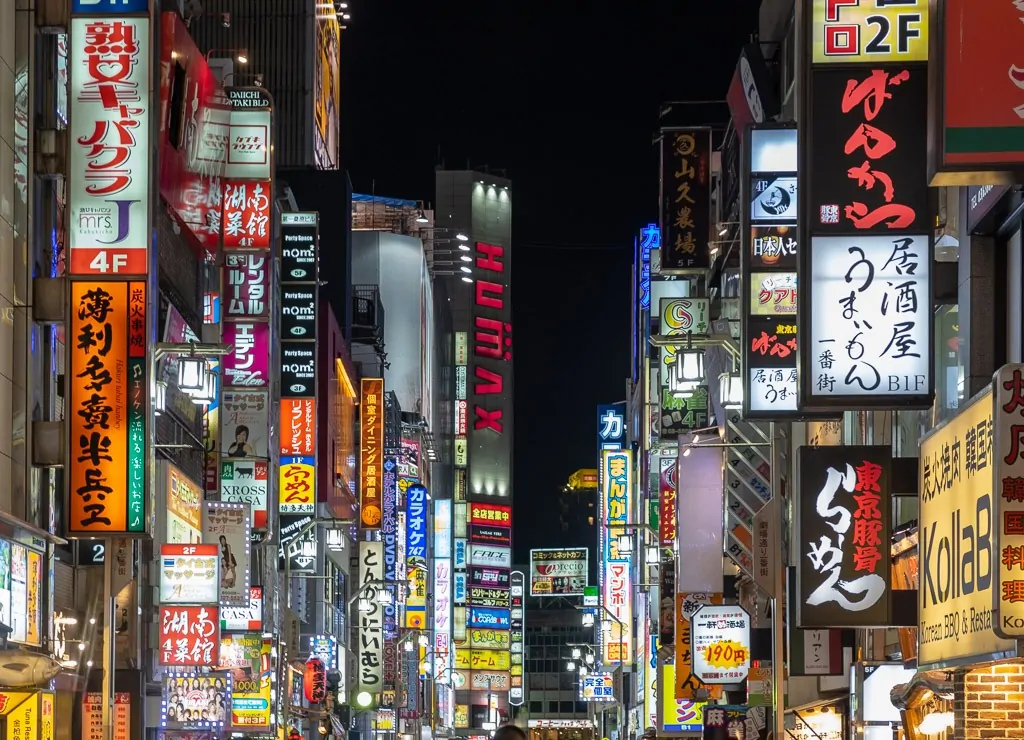
There is so much to do and see in Tokyo that it can be hard to plan a trip there. But at the same time, because there’s so much to see in the rest of Japan, you’ve got to limit your time in Tokyo. In this post, I’m going to help you squeeze everything you should see into a Tokyo itinerary of 4 days.
This Tokyo itinerary is great for those who want to explore Japan’s culture, history, and food. I’ve got tons of recommendations for places to eat, neighborhoods to explore, and museums to discover.
Let’s get started by learning what to see, where to eat, and how to get around this amazing city.
This 4-day Tokyo itinerary is also part of my 3 weeks in Japan itinerary . Check it out!
And if you’re looking for the perfect place to stay in Tokyo, you can find one in this article about how to find the best places to stay in Tokyo .
BONUS: I've created a FREE PDF version of my Japan itinerary guide . It includes detailed day-to-day itineraries for Tokyo, Kyoto, and 9 other destinations in Japan. You'll also get step-by-step instructions for buying and using your Japan Rail Pass.
Click here to get lots of great tips for traveling around Asia as well as my FREE Japan itinerary guide.
Disclosure: This post may contain affiliate links. As an Amazon Associate and a Bookshop.org Associate, I earn from qualifying purchases. Please see this website's Disclosure for more info.
Tokyo Itinerary 4 Days Overview
Click on the day to jump to that section of the itinerary. You can do this itinerary in any order.
Day 0 – Airport arrival, airport transfer, and hotel check-in
Day 1 – Historical Tokyo Itinerary – Asakusa (1) Ueno (2) Yanaka (3) Tokyo Sky Tree (4)
Day 2 – Modern Tokyo Itinerary – Harajuku (5), Shibuya (6)
Day 3 – Cultural Tokyo Itinerary – Tsukiji (7)- Ginza (8) – Akihabara (9)
Day 4 – Food and Fun Tokyo Itinerary – teamLab Borderless (11) – Shinjuku (12)
The above itinerary depends on where you’re staying. If your accommodation is in the Shinjuku area, I’d move (12) Shinjuku from Day 4 to Day 1.
You can add a fifth day to your Tokyo itinerary by taking a day trip to Mt. Fuji, Hakone , Kamakura, or Nikko. All 4 of these cities are just 1 to 2 hours by bus or train from Tokyo. Read how to visit them in this 4 Best Day Trips from Tokyo .
Tokyo Itinerary- Day 0 – Airport & hotel transfer
When you arrive at either the Narita Airport or the Haneda Airport , you’re going to need to take care of the following things before heading to your hotel/hostel:
1. Pick up Your Pocket WiFi or SIM Card
Order a pocket WiFi or a SIM card before your trip to Japan and pick it up at the airport. You’ll need Wi-Fi when you’re out and about trying to find your way or checking train times.
I bought my pocket wifi from Japan Experience.
Get an eSIM
A third way is even easier. You can get an eSIM and not worry about having to pick up anything at the airport. Before leaving your home country, you purchase an eSIM with Klook or Airalo.
2. Validate Your Japan Rail Pass
Don’t leave the airport without validating your Japan Rail Pass at the Japan Rail office.
When you validate your pass, you can choose which day it begins . You don’t have to start the ticket on the day you validate it.
I bought my Japan Rail pass from Japan Experience. You can also buy your pass through the very reliable Klook .
3. Make Seat Reservations for Future Trail Travel
If you have a Japan Rail Pass , make seat reservations for future train travels at the Japan Rail office. Seat reservations are free for Japan Rail Pass holders. You can cancel or change them free of charge.
4. Get Some Japanese Yen
Get some Japanese currency from the many ATMs around the airport .
You can also get Japanese yen from ATMs at convenience stores like Family Mart and 7/11 after you get to your hotel, but it’s good to have some yen right away.

5. Get a SUICA or PASMO Card or an Unlimited Train Ticket
There are 2 types of transportation cards you can get at the airport in Tokyo:
- Unlimited Metro Pass (1-day, 2-days, or 3-days)
- IC card – Suica or PASMO
Unlimited Metro Pass for Tokyo
I used an Unlimited Tokyo Metro Pass (US$10) both times I was in Japan. It’s very convenient and a good deal. You don’t have to buy a new subway ticket every time you ride the subway.
You can get a Pass for 1 day, 2 days, or 3 days.
The Pass gives you unlimited train travel on the Tokyo Metro Line and the Tokyo Toei Line. It doesn’t include JR trains like the Yamanote Line.
IC Card – Suica or PASMO
Your second option is to get a Welcome SUICA or PASMO Passport card at the airport. SUICA and PASMO cards are used for taking public transportation like the subway, trains, and buses around Japanese cities. To use the card, load money onto it at a subway station and tap it at the subway gate to get on the subway. You can also use the card to buy stuff at convenience stores or from vending machines. They are good for 28 days.
Unfortunately, it’s still hard to find Suica Cards in Japan. If you arrive at Haneda Airport , you can get a Welcome Suica card, but they are not available at Narita Airport. If you have an iPhone you can get a digital Suica card.
6. Stop at the Tourist Information Booth
At the Tourist Information desk at the airport, you can find out how to get to your hotel . I originally got my info from someone on Trip Advisor. They told me the wrong train line! The information desk was correct!
7. Find Your Transport to Your Accommodations
You have several options for getting to your accommodations from Narita Haneda. Most importantly, you arrive within walking distance of your hotel.
I recommend stopping by the airport’s Tourist Information Desk to find out your best option for getting to your accommodation.
Transport Options from Narita
1. Narita Expres s (¥4,070): buy tickets at the Japan Rail East Service Center office at the airport; a good option if staying in Shinjuku
2. Keisei train (¥2,570) has several train lines. Buy your ticket at the Keisei Skyliner office at Narita. Keisei has a line called the Toie Asakusa line that goes to Asakusa. You can also take the Keisei Skyliner train to Tokyo Station. Buy your ticket on the Skyliner ahead of time through Get Your Guide.
3. Airport Bus TYO-NRT (¥1,300 – 2,600) – The cheapest option is the airport bus. The bus goes to Ginza Station, Tokyo Station, Shinjuku and Disneyland. Purchase tickets at the ticket sales counter from 9:00 – 22:00 or at the bus stop outside of those hours. You can also purchase your bus ticket before your trip through Klook for US$9.15 .
Transport Options from Haneda
1. Keikyu Line – Buy tickets at the Keisei Skyliner ticket office.
2. Friendly Airport Limousine (¥950 – Asakusa; Shinjuku ¥1,250) connects to different hotels throughout Tokyo. Please see their website for information.
3 . Tokyo Monorail – Take the monorail to Hamamatsucho (¥500) where you then need to transfer to the JR Yamanote train line.
My Experience Getting to/from Narita
I flew into Narita and stayed in Asakusa for my first and second trips to Japan. To get to Asakusa, I took a Keisei train . Keisei trains have many lines, so it can be confusing. The wonderful people at the airport information desk told me to take the Toei Asakusa Line from Narita to Asakusa station (¥1290; over 1 hour) . On my first trip, I had to walk 15 minutes to my hotel. But I was too tired to walk, so I got a taxi for ¥960. On my second trip, my hotel was 5 minutes from the subway station.
When I left Tokyo , I was staying in Tsukiji . I took the Narita Express Bus from Ginza station (2 subway stops from Tsukiji; take exit C4 at Ginza) to Narita airport (¥1,000, 1 hour and 20 minutes). The bus ride was so much preferable to the train because I didn’t need to go up and down subway stairs, figure out the ticket machines, and navigate the subway’s maze-like and crowded subway stations.
The second time I was in Tokyo , I stayed in Shinjuku . My hotel recommended that I take the Airport Bus to Narita. The bus had a shuttle that picked me up from my hotel and took me to the bus stop in Shinjuku. It was convenient!
Just make sure to get to the bus stop early as these airport buses can fill up , and if you can’t get on one, you need to wait 30-60 minutes for the next one.
You can also buy your bus ticket online to ensure you can get a seat.
Tokyo Itinerary – Day 1 – Historic Tokyo
Asakusa – ueno – yanaka.
On day 1 of your 4 days in Tokyo, explore the traditional east side of Tokyo. Start off in Asakusa where Sensoji Temple, one of the most important Buddhist temples, is located, then head over to Ueno to visit the Tokyo National Museum before finishing your tour in Yanaka, a very traditional area of Tokyo.
1. Asakusa Area
Start off the day in Asakusa, an area that is famous for being the main temple, merchant, and entertainment area of old Tokyo.
How to Get to Asakusa:
There are two subway lines that get you to Asakusa Station: the Ginza and the Asakusa lines. When you’re inside Asakusa station, follow the signs for exit 1 to get to the temple district. You can also take exit 2 to get to the Asakusa Culture Tourist Center on Kaminarimon Street to pick up a map of the area.

Asakusa is where you’ll find the most important Buddhist temple in Tokyo, Sensoji Temple.
In old times, merchants and craftsmen set up their businesses outside the temple gate. The area near temples was safer than others because warlords would leave temples alone when attacking a community. These areas became known as the mon-zen machi (town in front of the temple gate). The merchant area in front of Sensojii Temple became particularly famous.
Asakusa was also well-known as the entertainment district of old Tokyo . There were many theaters in this area. Behind Sensoji temple was a famous prostitution area.
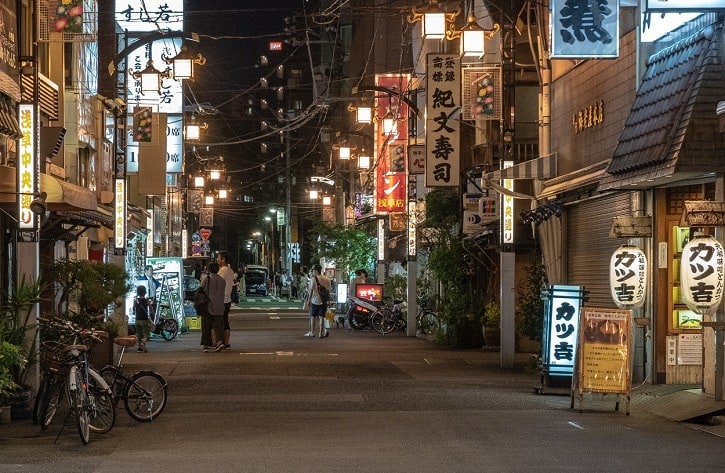
In the early morning , Asakusa is a wonderfully quiet and peaceful place . It’s so quiet that it’s hard to believe you’re in a city of 9 million people.
At night, just a few locals and tourists are out and about. Locals can drink and eat outside on tables set up in quiet alleyways. However, it’s nowhere near as crazy as Shibuya or Shinjuku.
Is it Safe to Walk Around Late at Night?
I felt completely safe walking back to my hotel from the subway station at around 10:00 pm.
Where to Eat in Asakusa:
- Ippudo – ramen chain restaurant
- Sometaro – Okonomiyaki; really hot inside and often long waits; not ideal for solo travelers as it’s more of a group experience.
- Sushi Zanmai – chain sushi restaurant; I think they have pretty good sushi; get the tuna set for ¥3200; always filled with locals whenever I ate there
- Ichiran – near Ginza station; their ramen is better than Ippudo’s
1.1 Kaminarimon Gate
Start your day off at the Kaminarimon Gate. This is the outer gate of Sensoji Temple.
The Kaminarimon is named after the two statues located on both sides of the gate. The left statue is the god of thunder and the right one is the god of wind . They protect the Sensoji temple from storms, floods, and fire.

1.2 Nakamise-Dori Street
After passing through Kaminarimon Gate, walk up Nakamise-Dori Street to Sensoji Temple.
You’ll see lots of souvenir shops along the way especially ones selling rice cakes and green tea-flavored snacks. Supposedly, this street along with Shin-Nakamise Dori are the best places to buy souvenirs in Toky o.

Nakamise-Dori Street helped Asakusa become one of the main entertainment areas of old Tokyo.
The story goes that tea shops opened up along the road that led to Sensoji. After the shogun made Edo his capital, more and more people visited Sensoji. They would visit the tea shops on their way to the temple. This increase in business made the tea shop owners quite wealthy .
Naturally, tea shop competition increased as more and more people saw the money-making potential of having a tea shop outside Sensoji. To stay competitive, the owners needed to think of other ways to attract customers , so they started offering other forms of entertainment, hiring young women to serve tea. Sometimes they would offer other services as well and that is how prostitution became part of Asakusa.
You can find out more info on the history of Tokyo from this wonderful website on the history of Tokyo and the history of Japan podcast.
1.3 Senso-ji Temple
- OPEN : 6:00/6:30 am – 5:00 pm
- SUBWAY STATION: Asakusa Station
- LOCATION: Google Maps
Finally, you’ll make it to Sensoji Shrine. The temple was first built in 628 . Like many structures in Tokyo, it burned down many times over the centuries, including during World War II.
Go through the bright red gate called Hozomon Gate , the inner gate of Sensoji Temple.

After you pass through the gate, look back at it and notice the two large straw sandals . The sandals are called o-waraji . People offer waraji to temples to pray for safe travels and healthy legs. Without healthy legs, one can’t work, and if one can’t work, one can’t eat.

Before going into the main hall, get an omikuji , which is a paper fortune.
To get your fortune told , put a 100 yen coin in a slot. Then shake a canister until a wooden stick falls out. The stick contains a number on it that's written in Kanji. Find the drawer that corresponds to the number on your stick. Pull out a paper fortune from the drawer. The fortunes can be both good and bad. Mine was good, but the person I was with got a bad fortune . If you get a bad one, you’re supposed to tie the paper fortune to a nearby rack.
When you enter the huge temple, you’ll notice that there are no Buddha statues even though this is a Buddhist temple.
You’re not allowed to take any pictures of the altar when inside the temple.
1.4 Shin-Nakimise Dori and/or Dembouin Dori Street
After visiting Senso Ji Temple, walk around Asakusa for a while walking under the covered pedestrian-only arcades . These are Shin-Nakimise Dori and Dembouin Doir Streets. They’re full of souvenir shops and restaurants.

If you walk east along one of these streets, you’ll eventually make it back to the subway station .
2. Ueno Area
The next stops on your Tokyo itinerary are the Ueno and Yanaka districts. To get to Ueno, hop on the subway and travel 3 stops on the Ginza line to Ueno station.
Ueno’s subway station was famous after the war for being the place where all the homeless (veterans, widows, and orphans) camped out.
A famous post-WWII black market was also located outside the subway station called Ameyokocho . Today the market is full of discount stores, souvenir shops, and restaurants.
The whole area is now known for a terrific park and several of Tokyo’s best museums.
Where to Eat in Ueno and Yanaka:
- Kamachiku – I ate here. They have delicious soba noodles in a beautiful old building
- Izuei Honten – it’s supposed to have good unagi
- Starbucks – This coffee shop is in a convenient location in Ueno Park
- Hantei – I’ve eaten here. The restaurant is in a beautiful traditional wooden building. Very delicious . It’s a set multi-course meal. A bit pricey. I felt comfortable eating here solo.
- Nagomi – They serve skewers
2.1 Tokyo National Museum
- COST: ¥1,000 (US$7.78 | €7.5 | £6.38); ¥500 for college students
- OPEN: 9:30 am – 5:00 pm (last entry is 30 minutes before closing)
- WEBSITE: https://www.tnm.jp/
- SUBWAY STATION: Ueno Station
When you get to Ueno, head to the Ueno-Koen park. There’s a lot to see in the park: a zoo, a lotus pond, and several museums . The park is huge and with such limited time, I suggest going straight to the museum.

Inside the park is the main museum of Tokyo: the Tokyo National Museum. The museum has five buildings with exhibits:
1. Honkan Gallery – Must-see: the “Highlights of Japanese Art” on the second floor . The second floor gives you an excellent overview of Japanese Art from the Jomon period (11,000 BCE – 5th Century BCE) to the Edo period (1603-1868). The first floor is organized by genre, which is also good but not as good as the 2nd floor. One painting not to miss is the Hakusai’s “Great Wave of Kanagawa.” It’s at the end of the tour on the 1st floor.
2. Heiseikan Gallery: This gallery focuses on Japanese archaeology . I’m into archaeology, so I enjoyed touring it. It’s connected to the Honkan by a passageway.
3. Hyokeikan Gallery: This gallery is closed unless there’s a special exhibition.
4. Toyokan Gallery: This gallery shows art and artifacts from Asia including China, Central Asia, and India. I didn’t get to visit this gallery.
5. The Gallery of Horyuji Treasures: This gallery exhibits 8th and 9th-century objects from Horyuji Temple . Lonely Planet highly recommends visiting this gallery. I did not have time. There is a restaurant on the 1st floor.
The one building that you must start with and go to if you’re limited on time is the Honkan Gallery . It’s the above picture.
You can pay one price ( ¥1,000 for adults; ¥500 for students and free for children ) for all regular exhibits in all galleries at the ticket booth on the right side of the main gate to the museum.
When you get inside the Honkan, you’ll see lockers where you can store your stuff.
Take the grand staircase in the lobby of the museum to the second floor. The second floor gives you an excellent overview of the art from different periods in Japan’s history.
Make sure to get the excellent written guide to the museum on the second floo r before you enter the first room.
3. Yanaka Area
After visiting the Tokyo National Museum, explore the lovely and tranquil Yanaka neighborhood .
It’s quite a long walk from the museum to this area. But it’s well worth it. In Yanaka, you’ll get to see a more traditional side of Tokyo . Historically, this area was where the artists of Tokyo lived . It is still home to many artisans making things like pottery, textiles, and traditional cuisine.

There are lots of temples and a cool cemetery in Yanaka .
The food is another highlight of Yanaka. I had some great udon noodles at a beautiful restaurant called Kamachiko and on another visit, I ate at the famous Hantai restaurant .
End your walk at Sendagi Station .
You might be interested in these Japan travel posts:
- Kyoto Itinerary 4 Days: A City of a Million Temples
- The Best Ever Guide to the Tateyama Kurobe Alpine Route
- Kamikochi Hiking: A Perfect Day Trip from Takayama
4. Tokyo Sky Tree
- COST: Floor 350 – ¥2060; Floor 450 – additional ¥1,030. You first need to go to the 350 th floor and then buy another ticket for the 450 th floor
- OPEN: 8:00-22:00
Finish your first day in Tokyo at the tallest building in the city, the Tokyo Sky Tree . You’ll get some memorable views of the city.

.You can buy tickets online for the Sky Tree to avoid the long lines, or you can buy tickets on the fourth floor at the Sky Tree . They might be sold out by the time you get there, though.
The photo above is from the 350th floor.
PRO TIP: If you are lucky to be in Tokyo in January, March, May, July, September, or November , you can watch a sumo tournament at Ryogoku Kokugikan Sumo Stadium . Check here for how to buy tickets. If you can’t make it to a sumo match, you can always watch the professional sumo wrestlers do their morning training exercises .
Tokyo Itinerary – Day 2 – Modern Tokyo
Harajuku – shibuya.
Spend the second day of your 4 days in Tokyo exploring the modern side of the city with its neon lights, skyscrapers, and hoards of fashion-crazy young people.
I lived in Asia for many years, but I’d never experienced any place as dynamic and as vibrant as Harajuku, Shibuya, and Shinjuku . I’m not into partying and shipping, yet these neighborhoods were two of my favorite areas of Tokyo .
1. Harajuku Area
Harajuku is one of the most fashionable areas of Tokyo with its designer stores and boutiques. However, there’s also a famous shrine , some charming museums , and a fun energetic street full of fashion, food, and young people.
Where to Eat in Harajuku
- Harajuku Gyoza-ro – ( Google Maps ) – This is where I ate. It’s a famous gyoza restaurant; they’re used to having foreign customers – 6 gyoza – ¥319 – ¥374 (US$2.45/£1.99/€2.32) – What a deal!
- Marion Crepes – ( Google Maps ) – You can find these crepes all over Tokyo; looking at the plastic replicas of the crepes is almost as fun as actually eating one
- A Happy Pancake – ( Google Maps ) – I had breakfast here; make sure to try Japan’s fluffy pancakes
- Kawaii Monster Café – They permanently closed as of January 31, 2021. It’s too bad as this was a fun restaurant.
- Afuri – ( Google Maps ) – I love the ramen here ; they charcoal grill the pork and add yuzu to the broth.
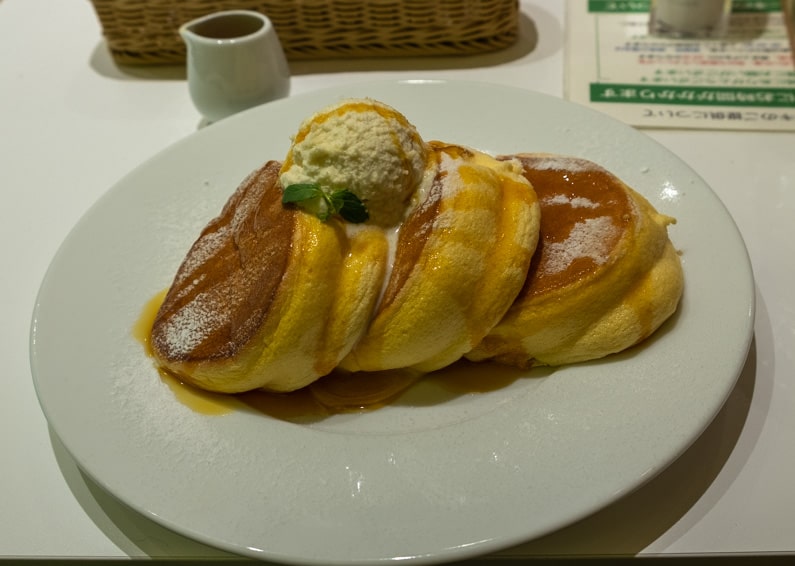
1.1 Meiji Shrine
- OPEN: sunrise to sunset
- SUBWAY STOP: Meiji-jingumae Station or the JR line to Harajuku Station.
- LOCATION OF ENTRANCE: Google Maps
Start day 2 of your 4-day Tokyo itinerary at Tokyo’s most popular shrine, the Meiji Shrine, in Harajuku.

Over 3 million people visit the shrine during the first few days of the New Year. To make the most of your visit, make sure to perform all the Shinto rituals. You can read about how to perform the rituals in my Meiji Shrine guide.

Don’t forget to write your wishes on the votive tablets under the big camphor tree. You can get detailed information about the Meiji Shrine here.
1.2 Omotesando Street
Take a stroll down Omotesando and window shop. You can see lots of designer-brand stores.
Make sure to stop at Kiddy La nd — ( Google Maps ) a 5-storey toy store .
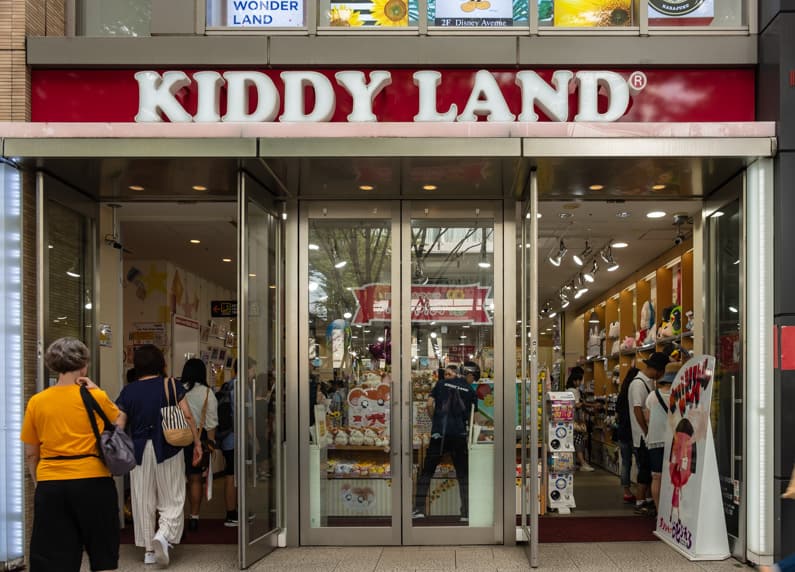
1.3 Explore the narrow side streets
Next, explore some of the side streets off of Omotesando. It’s easy to get lost (I did!), though.
The narrow winding streets are filled with beautiful boutiques, cafes, and restaurants.
Make sure to walk down Cat Street ( Google Maps ).
What stood out for me was how incredibly quiet i t was as if I wasn’t even in a big city. That’s Tokyo. One moment you’re on a street teeming with an ocean of people and cars and the next you are on a quiet street without a car or human being around you.
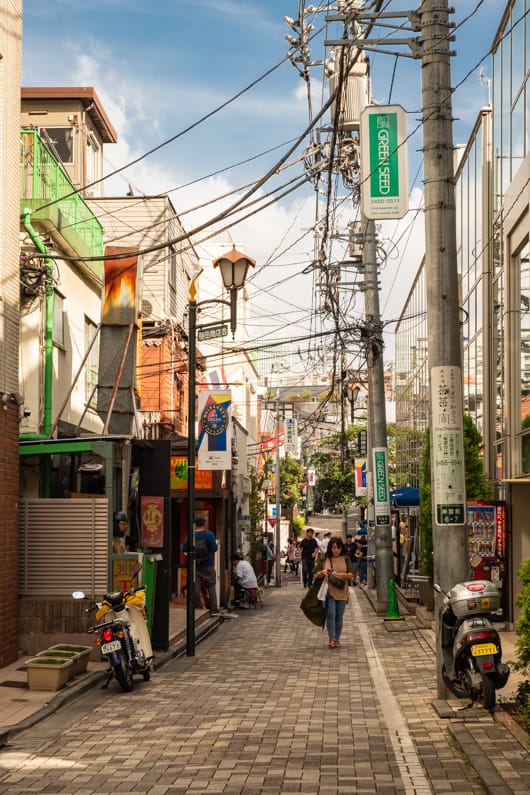
1.4 Ukiyo-e Ota Memorial Museum of Art
- COST : ¥800 – 1,200 depending on the exhibition (US$6-$9/£5-8/€6-9)
- OPEN : 10:30 am – 5:30 pm
- WEBSITE: http://www.ukiyoe-ota-muse.jp/eng
Visit the small Ukiyo-e Ota Museum, a museum devoted to beautiful ukiyo-e woodblock prints .
Ukiyo-e means the floating world in Japanese . This was the pleasure world of kabuki actors, geishas, and prostitutes (the outcasts of Edo society) during the Edo and Meiji periods in Japan.
The museum rotates its collection every month .
You could spend about 1 hour here.
1.5 Takeshita-dori

Your final stop on your Harajuku itinerary is a street called Takeshita-dori ( Google Maps ), which is not far from the museum.
This is Tokyo’s teenage fashion street where young people from all over Japan go to shop.
Be forewarned that the street is jam-packed with people . I loved it.
Looking for More Info on Japan...
- Japan Itinerary: The Perfect 3 Weeks in Japan
- How to Find the Perfect Place to Stay in Tokyo
- Hakone Itinerary: A Guide for 2 Fabulous Days in Hakone
2. Shibuya Area
The next stop on your Tokyo itinerary is a trip to Shibuya. You can take the subway or walk to get there from Harajuku .
Make sure to stay around the area until it gets dark , so you can see all the neon lights .
Check out the Shibuya Crossing, the famous Hachiko statue, wander around the pedestrian streets, and do a ramen food tour.
I was so tired after my day in Harajuka that I went all the way back to my hotel in Asakusa to rest and then went back to Shibuya later in the evening.

Where to Eat in Shibuya
- Starbucks – A great place to watch Shibuya crossing
- Kamakura – Great ramen restaurant – I ended up eating here both times I was in Shibuya. Decent. Lots of foreign tourists end up here.
- Ichiran – A chain ramen restaurant–for me, they have the best ramen
- 35 Steps Bistro – Izakaya with English menu – Tripadvisor reviews
- Food Show – Supermarket where the bento boxes are discounted after 5:00
- Sushi no midori – I tried finding this place, but no luck. The sushi is supposed to be really good.
- Kaikaya by the Sea – Good seafood
2.1 Hachiko Statue
The story goes that back in the 1920s, a professor had a dog named Hachiko who would meet him every day after work at Shibuya Station. The professor died, but the dog kept on showing up for the next 8 years to meet his owner at the station. Hachiko is a sign of loyalty in Japanese culture . It’s popular to take a photo of yourself with the statue .
2.2 Shibuya Crossing

Shibuya Crossing is famous for the scramble where cars are stopped at all intersections to let all of the pedestrians cross at the same time . Surrounding the crossing are buildings adorned with neon lights and large video screens. For me, it was one of my biggest OMG I can’t believe I’m in Japan! m oments in Tokyo.
You can take a rest at the Starbucks that overlooks the crossing and watch people walk back and forth.
2.3 Wander Around Shibuya

After you’ve done Shibuya Crossing a number of times and gotten your photo taken with Hachiko, walk around the back streets of Shibuya taking in the energy of all the people, food, bars, and neon lights.
2.4 Ramen Food Tour

One of the BEST ways to experience Shibuya and Tokyo in general is through its food . Shibuya has a very popular and highly rated food tour devoted solely to one of Tokyo’s most iconic dishes: ramen.
Do you know how many different types of ramen there are?
According to Tasting Table, there are 27 types of ramen . But others say there are 5 main types and 14 regional varieties . Who knows? It’s best to take the tour and find out from the experts . Or you can also visit the ramen museum in Yokohama/
Tokyo Ramen Tours takes you to 3 Tokyo neighborhoods including Shibuya. You’ll visit 3 ramen shops where you get to sample 6 different bowls of ramen as well as learn all about where the popular noodle soup comes from and how it’s made.
Tokyo Itinerary – Day 3 – Cultural Tokyo
Tsukiji – ginza – akihabara.
Your 3rd day on your 4-day Tokyo itinerary is spent sampling Tokyo street food and experiencing Japanese traditional culture at the Kabuki-za Theater and modern culture at Akihabara.

1. Tsukiji Area
The highlight of Tsukiji is the Tsukiji Food Market . If you have time, also check out the Namiyoke Shrine . The Hamarikyu Gardens are within walking distance of Tsukiji Market but they’re huge so you’ll need 2 or 3 hours to see much.
1.1 Tsukiji Outer Market
Start day 3 of your 4 days in Japan by visiting the Tsukiji Outer Marke t for some amazing sushi and street food . Make sure you get here before 9:00 am so that you can get to the next stop of your Japan itinerary on time.

Tsukiji Market used to consist of both the Inner Market and the Outer Market . The Inner Market was the wholesale market and it was where the tuna auction took place. That market moved to new facilities at Toyosu Market.
The Outer Market is all that is left. You can still sample street food (tamagoyaki, raw oysters, Kobe beef, sea urchins, and grilled seafood) at the many street vendors or have a sushi breakfast at the remaining sushi restaurants. Many of the famous restaurants moved to Toyosu but still have a branch in Tsukiji.
A great way to explore the market is with this VERY popular and VERY highly-rated guided food tour of Tsukiji ( RATED: 4.9/5). You get to learn all about the history of the market and local foods. Plus you get to try lots of different foods: fried fish cakes, a Japanese omelet, Japanese tea, katsuobushi, dashi stock, and a fish bowl (food is included in the price).
2. Ginza Area
Ginza is home to m any upscale shops, restaurants, and cafes . It’s considered one of the most expensive pieces of real estate in the world.
Historically during the Edo period, a silver coin mint was located there , hence the name Ginza , which means “silver mint.”
When Japan was opening up to the outside world, the buildings in Ginza became the first ones to be modernized . European-style brick buildings were constructed. The area also became the media center of Tokyo where there wee lots of newspaper and magazine publishers . Unfortunately, during the war, many of these buildings were destroyed by American bombs.
Where to Eat in Ginza:
- Mitsukoshi Department Store – buy some food in the basement and go to the 9th floor to eat it; this is where I ate
- Kyubey – sushi – very expensive but cheaper at lunch
- Sushizanmai – great sushi (¥3,000 for a set meal of tuna); picture menus; I ate at their restaurant in Tsukiji, Asakusa, and Shinjuku
2.1 Kabuki-za Theater
- COST FOR SINGLE ACT SEATS: ¥1,200-¥2,600 (US$9 – $18 | €8 – €17 | £7 – £15) depending on the length of the show
- SHOWTIMES: 6 – 7 acts/day; first act: 11:00 am; last act: 8:00 pm
- TICKET SALES : Online the day before the performance; 10:00 am on the day of the performance. Seats are limited.
- WEBSITE: Kabukiza Theater
- SUBWAY STATION: Higashi-Ginza station
The next stop after Tsukiji is the Kabuki-za Theater in Ginza.
Kabuki is Japan’s traditional dance-drama performance . The stories are historical dramas and comedies set in old Japan. They center around samurai, geisha, and the common people of Japan and involve tales of ambition, betrayal, revenge, and broken hearts.
Watching a kabuki performance was the highlight of my trip . I loved the story, costumes, and acting.
How to Get to the Kabuki-za Theater:
From the Tsukiji Market, it’s a 10-minute walk .
If you’re coming from outside the area, take the subway to the Higashi-Ginza station . The theater is right next to the subway station. Just follow the signs for Kabuki-za.
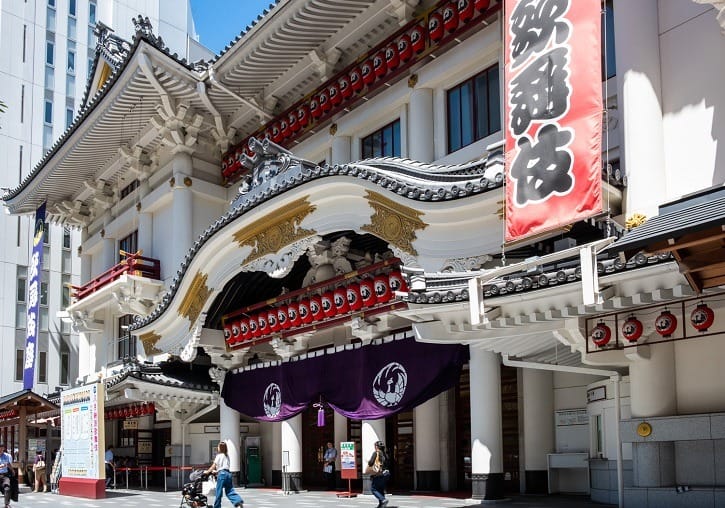
At the Kabukiza Theater , there are usually 2 Kabuki shows a day:
- Matinee – 11:00 am
- Evening – 4:00 pm
Each show consists of 3 – 4 acts and can last up to 4 hours . Tickets can also be quite expensive (up to ¥17,000)
However, the good news for tourists is this:
Kabukiza Theater has made kabuki more accessible for tourists by allowing them to buy tickets for just one act , meaning you don’t need to stay for the whole 4-hour show . These are called Single Act Tickets.
There are usually 6 to 7 acts per day . Some acts are 30 minutes, while others are 60 to 90 minutes. You can choose to go to any act.
The person who was managing the line for the tickets told me to avoid the 30-minute shows as they’re only dancing.

Shows change each month , and the number of acts per day and start times vary . Check the Kabukiza Theater website for that month’s performance.
To give you some idea of the start times and prices for each act, here they are for November 2023 :
Matinee Show
- Act 1 – 11:00 am – 12:32 pm – ¥1,400
- Act 2 – 1:07 pm – 2:07 pm – ¥1,300
- Act 3 – 2:27 pm – 3:30 pm – ¥1,300
Evening Show
- Act 1 – 4:30 pm — 5:35 pm – ¥1,400
- Act 2 – 6:20 pm – 7:40 pm – ¥1,300
- Act 3 – 8:00 pm – 8:59 pm – ¥1,300
How to Buy Single-Act Tickets:
There are 2 ways to buy the Single Act Tickets .
- Reserved Seats – Tickets go on sale at 12:00 pm (noon) the day before the performance. Buy online with credit card. You can buy up to 4 tickets per person.There are 70 reserved seats.
- Non-reserved Seats – Tickets go on sale at 10:00 am on the day of the performance. Cash only. You can only buy 1 ticket per person. There are 20 non-reserved seats.

Although the performances are in Japanese, you can rent a portable translator that translates the whole show . The translation machine didn’t distract me from the show.
Check Out These Hidden Gems:
- Takayama Itinerary: How to Spend 2 Days in Japan's "Little Kyoto"
- Travel Guide to Shirakawago: Enter a Japanese Fairy Tale
- Day Trip to Nara: A Suggested Itinerary
3. Akihabara Area
Day 3 of this 4-day Tokyo itinerary ends with a visit to Akihabara.

Akihabara is famous for its electronics, video games, and anime and manga shop s. If you want to see the famous maid cafes , then Akihabara is the perfect stop on your Tokyo itinerary.
To get the best experience of this area, take a stroll along Chuo Dori Street .
If you need to buy camera equipment, stop at Bic Camera or Yodobashi Camera.
If you spend at least ¥5000 in one store in one day , your purchase is tax-free . You will need your passport with you to not pay any taxes. You must leave Japan within 30 days.
Tokyo Itinerary – Day 4 – Fun Tokyo
Tokyo bay – shinjuku.
This is my favorite day of the itinerary because today you’re going to one of my favorite museums in the world and finally to my favorite area of Tokyo, Shinjuku.
1. Tokyo Bay
You’ll be crossing Tokyo Bay to Odaiba , a collection of islands of reclaimed land.
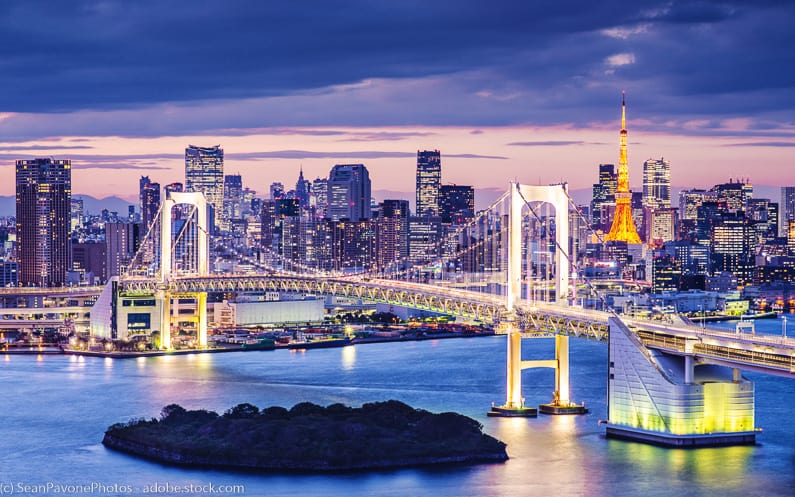
1.1 teamLab Planets or teamLab Borderless
- COST OF TEAMLAB PLANETS: ¥3,800 (US$27 | €24 | £21) for adults; ¥1,300-¥2,300 for children | ¥1,900 disabled person discount
- COST OF TEAMLAB BORDERLESS: Closed until Feb 9, 2024; tickets go on sale Jan 16, 2024 – check website for price
- TIMES FOR PLANETS: 9:00 am – 10:00 pm (every day)
- BUYING TICKETS: teamLab Planets with Get Your Guide ; teamLab Planets with Klook
- LOCATION: teamLab Planets ; the new teamLab Borderless in Azabudai
Day 4 of your 4-day Japan itinerary starts at teamLab Borderless, a digital art museum. Teamlab Borderless wasn’t in my guidebook when I first visited Japan. But I’d seen so many Instagram photos of it that I had to check it out on my next trip to Japan. Instagram didn’t do it justice .
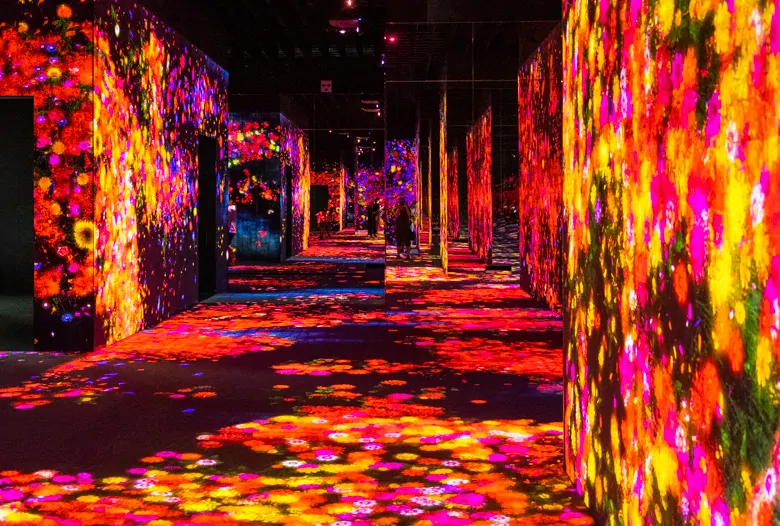
There are 2 teamLab museums in Tokyo :
- teamLab Borderless
- teamLab Planets
Both museums exhibit interactive digital art . Artwork is displayed digitally on the walls, ceilings, and floors and changes as you move barefoot from room to room. The concept is that there is no border between art, design, and technology and between humans and nature.
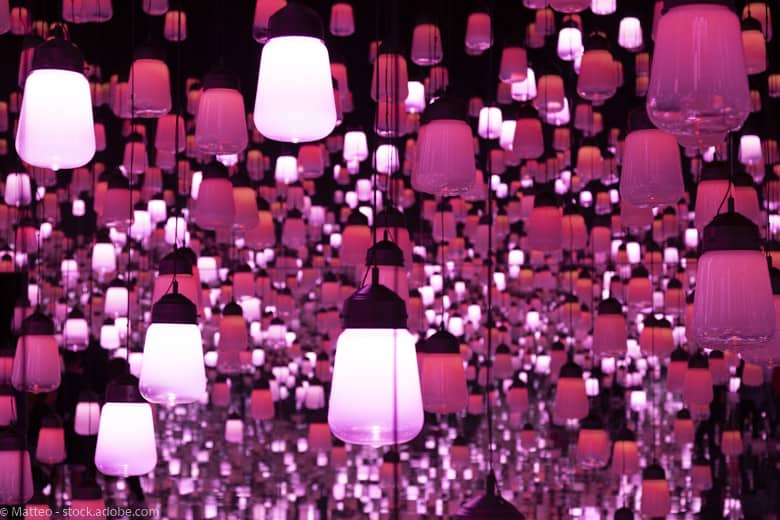
teamLab Planets is a temporary museum that focuses on water and flowers . It was supposed to close in 2020 but it proved to be so popular that the museum will remain open until 2027 . Wear shorts as you will need to walk through water but not a skirt as the floors have mirrors.
I have only visited teamLab Borderless and loved it! teamLab Planets also gets rave reviews.
Expect to stay between 2 and 3 hours.
It’s very popular so buy your tickets ahead of time . Get Your Guide also sells tickets for teamLab Planets .
Getting to teamLab Planets in Toyosu:
Toyosu is located in Odaiba and often takes 1 hour to get to from most popular tourist districts in Tokyo.
- Take the Yurakucho Line and get off at Shijo Mae Station. Then walk 5 minutes to teamLab Planets
- Take the Yurikamome Line and get off at Shin Toyosu Station. Then walk 1 minute to teamLab Planets or
- Take the Yurikamome Line and get off at Toyosu Station. Then walk 10 minutes to teamLab Planets.
I couldn’t use my 72-hour Unlimited Train Pass on the Yurikamome Line as the pass only works on the Tokyo Metro and Toei Subway Lines.
Getting to teamLab Borderless in Azabudai:
The good news is that teamLab Borderless’s new location is close to Roppongi District which makes it closer to Shinjuku and Asakusa Districts.
- Take the Tokyo Metro Hibaya Line to Kamiyacho Station and take Exit 5 to teamLab Borderless.
- Take the Tokyo Metro Namboku Line to Roppongi-Itchome Station . Take Exit 2 and walk 4 minutes to teamLab Borderless
2. Shinjuku Area
End day 4 of this Tokyo itinerary by touring Shinjuku . This is my favorite area in Tokyo.
The BEST time to experience Shinjuku is at night when the neon lights turn on, the crowds come out, the crazy cafes and izakayas fill with people, and the narrow alleyways with their tiny bars buzz with life.
Yes, you’ll see signs for sex shops, sex shows, host and hostess bars, love hotels, etc. But it doesn’t feel seedy or dangerous even walking alone at night.
The interesting thing is that Shinjuku has always had a shady reputation . It began as a post town on one of Edo’s main highways, where travelers stopped to rest.
Then it became one of Edo’s six licensed pleasure quarters , catering to a more working-class clientele . Soon Shinjuku grew into a bustling area of shops, inns, theaters, and teahouses.
In the late 1800s, its population began to grow when newly built railway lines began carrying passengers to Shinjuku. It grew even more after the 1923 earthquake destroyed much of the eastern part of the city. People started to live in Shinjuku and it lost a bit of its bad-boy reputation.
However, Shinjuku’s shady past came back with a vengeance when immediately after the war, the yakuza opened Tokyo’s largest black market in Shinjuku .
Starting in the 1950s, Shinjuku’s dark alleys with their tiny bars and izakayas have attracted intellectuals and student radicals . Nowadays add a whole bunch of tourists to the mix and you have Tokyo’s version of a red-light district.
Where to Eat in Shinjuku
- Sushi Zanmai
- Fuunji – ramen
- Tsunahachi Shinjuku – tempura
2.1 Kabukicho

Take a stroll around Kabukicho , the Red Light District. Don’t worry about walking around this area by yourself. The streets are packed with tourists. It may be seedier than most other parts of Tokyo, but I felt safe when I was there.
Take a look inside Don Quixote store . It’s a multi-storied store selling everything from food to maid costumes. The aisles are so narrow and jam-packed with goods that it’s difficult to walk down them. It’s not a great store if you’re claustrophobic.
2.2 Omoide Yokocho

The highlight of a tour of Shinjuku is a walk down Omoide Yokocho or Memories Lane . Another name for it is Piss Alley . It’s a very narrow alley lined with red lanterns and tiny bars and yakitori restaurants .
2.3 Shinjuku Golden Gai

Golden Gai is a seedy but atmospheric area of around 200 small bars . Just walk around and find one that seems open to tourists.

I went to Araku Golden Gai bar. Look for the red sign and the red staircase.
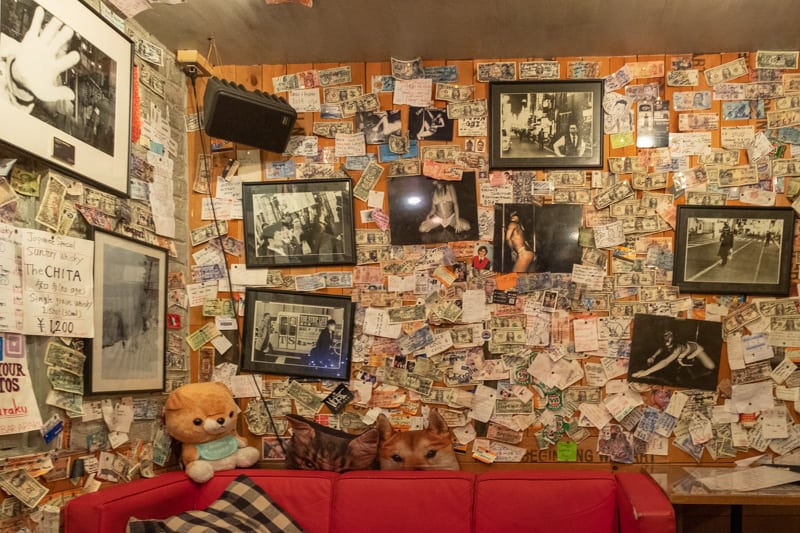
The bartender speaks English and there’s an English menu. When I was in Golden Gai, everyone was excited by the fact that Quentin Tarantino had just been there.
Visiting some of these tiny bars in Shinjuku as a foreigner can be intimidating. Some of the bars would rather you not visit as they’re more for locals. I went to all the tiny bars in Omoide Yokocho and Golden Gai on a guided tour .
More ideas for your trip to Japan:
- Matsumoto Itinerary: Exploring Japan's Coolest Castle
- Hiroshima and Miyajima Day Trip Itinerary
- Hiking in the Japan Alps: Perfect Day Trip from Takayama
Where to stay in Tokyo
One of the hardest decisions to make about Tokyo is where to stay . So, I wrote this post on how to find the best places to stay in Tokyo (even on a budget) .
I’ve stayed in three different areas of Tokyo: Asakusa, Tsukiji, and Shinjuku. All of them have their pros and cons. However, I prefer Asakusa for its price and the laid-back vibe of the neighborhood and Shinjuku for its excitement and energy .
My favorite hotel was the Hotel Gracery Shinjuku . It’s the one with the Godzilla head sticking out of it . A bit gimmicky, I know, but you can’t blame the hotel for trying. It’s in the perfect location: right in the heart of Kabukicho and just a five-minute walk from Shinjuku Station .

Grab a FREE Japan Itinerary Guide
Get all my great travel tips as well as this FREE Japan travel and itinerary guide sent to your email right away!
You have Successfully Subscribed!
Final thoughts: tokyo itinerary.
After you’ve explored Tokyo for 4 days, where should you go next?
I highly recommend taking a trip to Hakone for 1 or 2 days , where you can soak in a traditional onsen, see some fabulous art, delve into Tokyo’s history, take one of Japan’s most Instagram-worthy shots, and perhaps get a glimpse of Mt. Fuji.
Other amazing day trips or overnight trips close to Tokyo include Kamakura, Nikko, and Mt. Fuji.
If you’re following my 3-week Japan itinerary , your next stop is to visit the Japan Alps and the magical towns of Takayama and Shirakawa-go .
Best Resources for Your Trip to Japan
Book your flights for japan.
Use Skyscanner to find the cheapest flights to Japan. They will turn up results for all airlines including major ones and local airlines. You’re going to find EVERYTHING that’s available and thus get the cheapest price.
Book Your Accommodations for Japan:
The best hotel booking sites for Japan are Booking.com and Agoda . They have the biggest selection, and they consistently churn out hotels and hostels at the lowest prices of any other booking site. Another website for backpackers and budget travelers is Hostel World .
Book Your Tours for Japan:
The three best tour booking sites for Japan are Viator , Get Your Guide , and Klook . Viator has the biggest selection. Get Your Guide has terrific customer service. Klook specializes in tours in Asia.
Get Connected when in Japan:
You’ve got 3 options for staying connected in Japan: a pocket WiFi (what I used), a physical SIM card , or an eSIM . Several companies offer eSIMs for Japan. I recommend getting one through Klook or Airalo .
Book your Japan Rail Passes:
Japan has many different types of passes. The JR Pass is one of the most popular passes. Buy them through Klook before your trip to Japan. There are other passes as well like the Hakone Freepass .
Get Your Rail Pass for Tokyo
Get an unlimited train pass for most metro lines in Tokyo. They’re good for 1, 2, or 3 days. I always get the 3-day pass.
Are you on Pinterest?
Hey! How about saving one of these pins to Pinterest to read for later?
And feel free to follow me on Pinterest, where you'll find lots of travel articles for everywhere around the world.
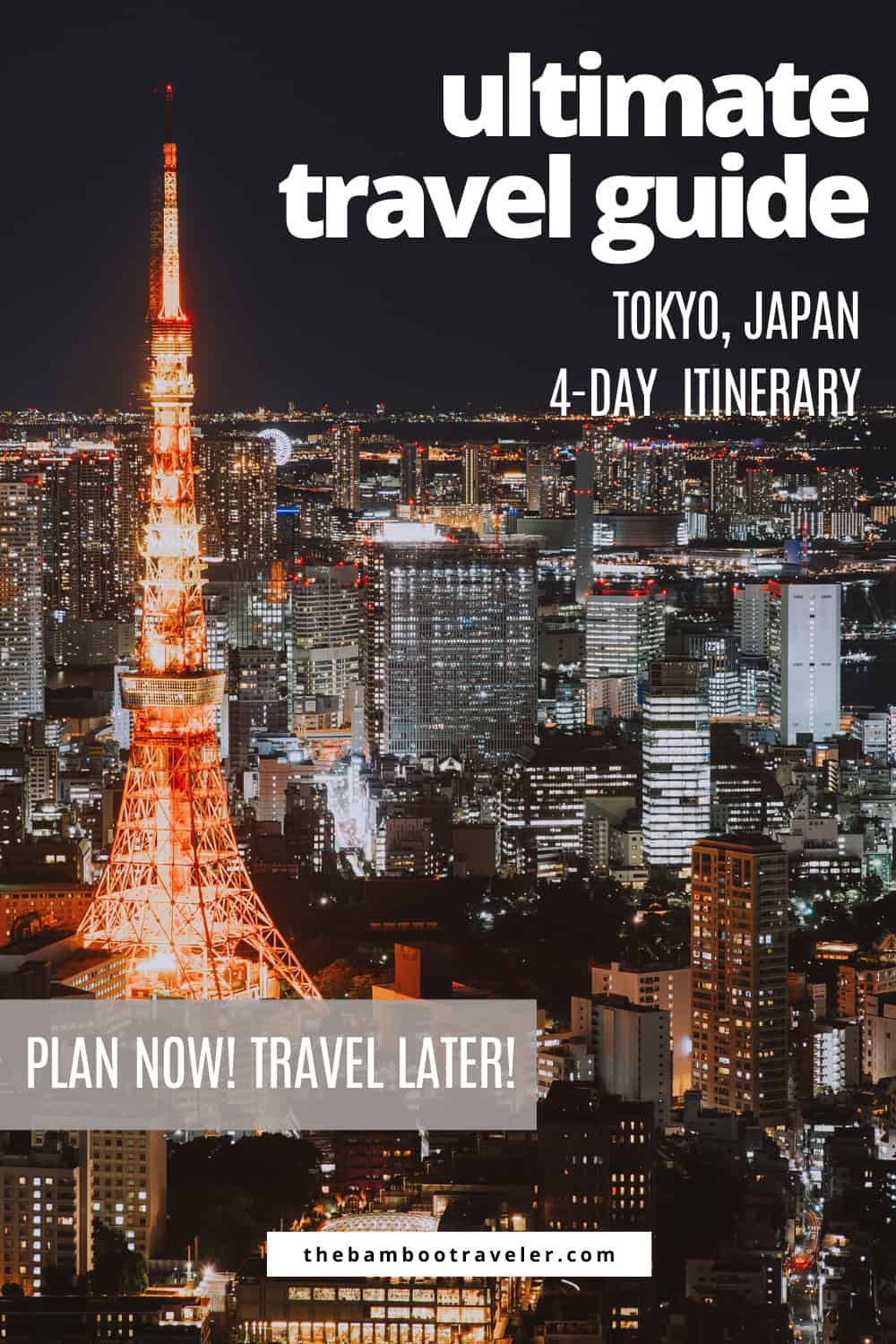
Looking for more info on Japan? Check out these posts:
- Tokyo Itinerary: How to Spend 4 Perfect Days in Tokyo
- Hakone Itinerary: How to Spend 2 Days in Hakone
- Kyoto Itinerary 4 Weeks: A City of a Million Temples
- Nara Itinerary: The Perfect Day Trip from Kyoto
- Matsumoto Itinerary: Exploring Japan’s Coolest Castle
- Shirakawago Itinerary: Enter a Japanese Fairytale
- The Ultimate Day Trip to Hiroshima and Miyajima
- Kamikochi Hiking: The Perfect Day Trip from Takayama
- Takayama Itinerary: Travel Back in Time to Old Japan
- The Best Ever Guide to Japan’s Tateyama Kurobe Alpine Route
- Top 10 Must-See Places to Visit in Kyoto
- 13 Things You Need to Know Before Going to Japan
- The 20 Best Novels to Read Before Visiting Japan
- A Foolproof Japan Packing List
26 Comments
I absolutely love that I sound this post! I have been planning to go in January but then I thought I might as well brave the tourists and go in March. I have been planning to spend exactly 4 days in Tokyo so I am saving this article. thanks for this.
I’m glad this will be helpful! Tokyo is such a great place!
What a great post, so extensive. I absolutely loved Tokyo and I definitely want to go back one day. Didn’t know the Tsukiji market changed location! Reason to go to Toyosu Market during my next visit.
I’m so sad that it has moved. Now it’s kind of out of the way and the new place I hear doesn’t have the character that Tsukiji had.
Thanks for writing such a super detailed post! I can’t wait to visit Tokyo one day and you’ve given me serious wanderlust!
You should definitely visit! For me, it was one of the most exciting cities that I’ve been to.
Tokyo is number one on my bucket list right now! I really appreciate the time you put into this itinerary– it’s super helpful as a starting point for my trip! I’m especially interested in Harajuku and all the fun cafes!!
Thanks! I hope you get a chance to go soon! It’s a great city!
Great blog. This has been on mutt bucket list for so long.
Thanks! I hope you get a chance to go to Tokyo soon! It’s a great city!
WOW! this is such an incredibly comprehensive and complete itinerary… I’m definitely saving it for when I go to Tokyo! You’ve got me craving ramen too! 🙂
Thanks! Ever since I went to Tokyo, I’ve been craving ramen like crazy! I hope you get a chance to go soon!
You made me miss Japan! I wish I had more time in Tokyo but with only 2 days, I just ate and relaxed. Ha! Saving your post for when I go back for some sightseeing 🙂
I also wish I had spent more time in Tokyo!
Thank you for the wonderful itinerary ideas…gives me a great idea how to plan for my upcoming 4 days in Tokyo! It looks like a great place to visit.
Thanks! I hope you have a fabulous trip to Tokyo! It’s an amazing, unforgettable city.
Tokyo is on our bucket list and your post want me to go and see it even more. Im pinning it for later
I hope you get a chance to travel there soon! It’s definitely worth it. I was surprised by how much I loved Japan.
I am staying in Shinjuku now and wondering how to spend a couple of days that are currently unplanned. This is extremely helpful and love that you included restaurants in each area. This is the best article I have found and am planning Kyoto solely from your recommendations also. One thing to include in Tokyo is information on attending baseball games. Can’t thank you enough!
Hi Jill, Thank you so much! I’m glad you found this useful. I’ll be back in Tokyo soon and will hopefully have time to research more places, especially restaurants. I’ll definitely look into including more information on attending a baseball game in Tokyo.
Wow what an amazing write up about Tokyo. Loved the Japan Rail pass, got to see so much more of Japan than I thought during my two weeks there.
Hi Patrick, Glad you found the JR Pass so useful!
“The wonderful people at the airport information desk told me to take the Toei Asakusa Line from Narita to Asakusa station (¥1290; over 1 hour)”
Hi, can you explain more on this? Because I can’t find the route for it. Does the Toei Asakusa Line included Narita in their map?
Hi Gee, The Tokyo train system is very confusing. Before my trip, I couldn’t find this route either, but it does exist. A few paragraphs above the quote is a link to the Keisei Electric Railway website that has information on the Keisei train that connects Narita and Asakusa Station. https://www.keisei.co.jp/keisei/tetudou/skyliner/us/traffic/index.php The people at the information desk called it the Toei Asakusa Line of Keisei Railway. The train arrives at the same station and same tracks as the normal Toei Asakusa Line that you see on the Tokyo subway maps.
Julie These guides look great. I very much would love a pdf of your Tokyo and Kyoto itineraries but can’t seem to download them. You also should get some kind of compensation for your hard work. Do you offer to guide any trips????? Thanks
Hi Robert, Thanks! I’m glad you you found the guides useful. I’m not sure how to download them. I don’t do any guided trips.
Submit a Comment Cancel reply
Your email address will not be published. Required fields are marked *
Submit Comment
This site uses Akismet to reduce spam. Learn how your comment data is processed .
What are you looking for?
About the bamboo traveler.

Welcome to The Bamboo Traveler, a travel blog dedicated to helping those travelers who want to dig deeply into the history, heritage, and culture of a place. Whether it’s through the pages of your passport or the pages of a book, I’ll help you travel the world and uncover the history, culture, food, architecture, and natural beauty of some of the world’s most fascinating places.

Traveling to Japan soon?
Japan itinerary posts.
- Japan Itinerary : The Perfect 3 Weeks in Japan
- Hakone Itinerary : How to Spend 2 Days in Hakone
- Kamikochi Hiking : The Perfect Day Trip from Takayama
- Kanazawa Itinerary: 2 Days in the City of Samurais
- Kyoto Itinerary 4 Weeks : A City of a Million Temples
- Matsumoto Itinerary : Exploring Japan’s Coolest Castle
- Nara Itinerary : The Perfect Day Trip from Kyoto
- Takayama Itinerary : Travel Back in Time to Old Japan
- Tokyo Itinerary : How to Spend 4 Perfect Days in Tokyo
Posts About Kyoto
- Kyoto Itinerary: A City of a Million Temples
- Top 10 Must-Visit Places in Kyoto
- The Best of Kyoto: Fushimi Inari Shrine
- The Best of Kyoto: The Bamboo Forest
- The Best of Kyoto: Kinkaku-ji Temple
- The Best of Kyoto: Tenryu-ji Temple
Preparing for a Trip to Japan
- Top 10 Must-Visit Places to Visit in Kyoto
- Traveling Solo in Japan: The Good, the Bad, and the Ugly
- Don’t Panic: What to do if you need a doctor in Japan

Get Your FREE Japan Itinerary Guide Here!
Subscribe to my newsletter to receive the latest travel tips for Asia and get a free 4-page PDF version of my 3-Week Japan Itinerary.
Pin It on Pinterest

The ULTIMATE Guide to Solo Travel Japan
By: Author Girl with the Passport
Posted on Last updated: February 3, 2024
Categories Asia , Solo Female Travel
HEEY-YOO! And welcome to the whimsical world of solo travel in Japan!
Are you SUPER stoked?
And, BTW, the only correct answer to that question is an emphatic yes since Japan is ALL things wonderful!
You’ve got hedgehog cafes, ramen, sushi, kimonos, REAL LIVE MARIO KART, arcade games, beyond quirky fashion, ancient Buddhist temples, ethereal mountain ranges, capsule hotels , and SO MUCH MORE. Just be sure to learn exactly how to take solo travel photos before you go.
This way you have ample photographic evidence of the wicked awesome time you had.
But to REALLY seal the deal:
You’ll be beyond delighted to know that yes, Japan really does have it’s very own, Wizarding World of Harry Potter!
All my fellow Potterheads out there, feel free to rejoice, and give praise to all things Japanese.
Let’s slowly move away from my slightly random obsession with all things Harry Potter, and towards something slightly more helpful.
Like this SUPER awesome guide to all things Japan solo travel, which you can use to help you plan the perfect Japan 2 week itinerary and introduce you to some of the best places to visit in Japan .
Because in this post, not only will you find a ton of tips on how to stay safe in Japan, but you’ll also learn how to use public transportation in Japan, discover the best time to visit Japan, find out where to go in Japan, and even get a TOTALLY FREE, 7 day Japan itinerary!
Because yes, I too love all things free (Minus diseases, those are never lovely).
So, let’s make like a piece of sushi and ROLL our way into this post about all things Japan solo travel.
Sorry, but for me, wickedly lame puns never go out of style.
This post may contain affiliate links. Please see my disclosure for more information. As an Amazon Associate, I earn a small commission from qualifying purchases.
Solo Travel Japan 101: How to Stay Safe During Your Solo Trip to Japan
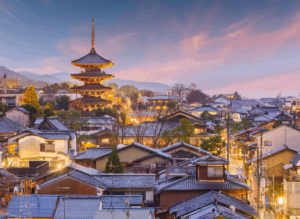
Learn how to stay safe as you solo travel Japan!
Thinking of embarking on some Japan solo travel and planning a 2 week Japan itinerary in Autumn ? Excellent! Because Japan really is one of the safest countries in the world for solo travel (#winning).
BUT it’s not 100% perfect….
Sure, Japan is known for its low crime rates, its next level organization (at the bureaucratic level since nothing is late here…EVER) and polite, friendly people,
That doesn’t mean that you shouldn’t remain vigilant as you solo travel Japan.
Use all of that awesome common sense that I know you have and take the same precautions that you would in any country.
Continue to do super obvious things like avoid walking down dark alleyways alone late at night, keep an eye on your personal belongings, don’t get too intoxicated, etc.
You know, all the usual stuff.
Because like basically every other country on the planet, Japan definitely isn’t immune to organized crime.
Yeah, I had no idea either. But apparently:
The ‘Yakuza’ is well known in Japan and is involved in murder, corruption, petty crime, and overall, high levels of not-so-nice mayhem.
And while it is unlikely that they’ll ever target a group of selfie stick-wielding tourists, it’s still a good idea to be aware of their presence, especially as you do some Japan solo travel in big cities, like Tokyo.
1) Be Prepared…You Won’t Be Able to Read Anything
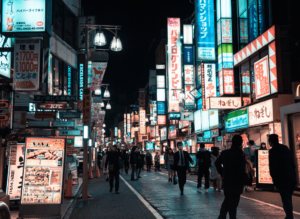
As you solo travel Japan, you’ll quickly see that there is a distinct lack of English signage.
‘It’s cool I’ll just follow the signs’… said no one in Japan.
Well, unless of course, you can actually read Japanese. OBVS.
In general though:
English is NOT universally used throughout Japan, a fact that can make getting around more than a little bit tricky.
Have your Google maps app handy and be prepared to get lost, more than once, during your solo trip to Japan.
Always have the address of your hotel handy (in both English and Japanese), just in case you get lost and need to share this information with a super helpful local.
This should help with that awkward language ‘what the hell are they saying’ barrier.
Always take the directions you are given with a pinch of salt.
Traditional, Japanese culture dictates that it’s better to give wrong directions than admit you are unable to help.
To avoid this mildly annoying possibility, try and ask for directions at a nearby hotel, where it’s highly likely that staff members speak English fluently.
And remember:
In Japan, hotel curfews are actually a THING.
That’s why:
Smaller, family-run accommodations may lockup between 10:00 pm and midnight.
Definitely research those policies BEFORE enjoying a wild night out on the town (Excuse me while I trade in my granny panties for a pair of ultra-rad glow sticks and a Monster energy drink. Because yes, staying up past 10:00 pm really isn’t my “thing”).
When traveling solo at night, always have your route back “home” planned out BEFORE you down some Sake and sing your heart out at a Japanese karaoke joint.
You really don’t want to be doing any serious travel planning when you’re inebriated AF in a foreign country.
And if you do decide to drink:
Never leave your drink unattended since it could easily be spiked while you’re not looking; a trend that is, sadly, becoming all too common in the Tokyo and Kyoto bar scene.
2) Cash is King
Well, you might expect a tech hub like Japan to be card crazy, Am I right?
Surprising though, that is actually NOT the case.
It’s actually quite the opposite.
Do yourself a solid favor and grab some cash before you head out for the day, at least if you wanna avoid being penniless and having to frantically search for an ATM that accepts foreign cards.
Thankfully though:
Most hotels, 7-Elevens, and restaurants all accept cards.
A lot of smaller places won’t.
Be prepared and ALWAYS have a bit of cash handy.
3) You WILL Experience Culture Shock
Because if you’re not, then you better be.
See, things in Japan are done a whole lot differently then they are in the Western world.
From toilets (Take my word on this one, because you will see what I mean) to local taboos like answering a phone call while riding public transportation (Yeah, don’t do this), there are a lot of things about Japan solo travel that you’ll need to get used to.
Don’t freak yourself out about these taboos since Japanese people are really considerate and will take the fact that you’re a visitor into account.
It’s still a good idea to brush up on your Japanese customs/etiquette BEFORE your visit, just so that you don’t cause unnecessary offense.
And if you can:
Always try and avoid doing anything that will draw too much attention to yourself since this is a big no-no in Japan.
4) Unwanted Male Attention
Oh, h ell to the no!
Don’t panic though because it’s really not that bad.
Because thankfully:
Catcalling is not a thing here. Thank f*cking God.
That being said:
And Ladies out there should try and avoid using public transportation during peak hours since instances of sexual harassment and groping are quite common on crowded trains.
To resolve this issue, some cities have started using ladies-only carriages during rush hour, which can be found by following signage along various train platforms.
5) Avoid Common Scams
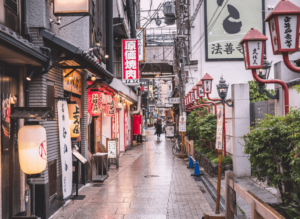
Japan is an incredibly safe country for solo travelers. However, there are some common scams that you’ll need to watch out for.
Well, the main one to watch out for is the ‘Japanese nightclub scam’, especially when visiting well-known nightlife hotspots, like Tokyo’s Kabukicho.
What happens is, a street tout will invite you into a club and shower you with attention and drinks…before swiftly presenting you with a not-so-awesome bill for a few thousand yen.
You will be expected to foot the bill for all those drinks (and for your “new found friend’s” precious time).
And if you refuse to pay?
Well, then things could get a bit dangerous and threats could be made.
To avoid this scam, just walk away. Don’t even respond to anyone who invites you into a club.
Because even the most well-trained touts will take the hint and leave you alone.
You also don’t have to be rude either. Just politely decline and move on.
And when in doubt:
Always remember the age-old adage that if it seems too good to be true, then it definitely is.
6) Watch the Weather
And I’m not talking about the rain.
See, unfortunately, Japan can be prone to freak weather conditions, like typhoons and earthquakes.
Before doing any solo Japan travel, it’s always a good idea to be aware of the seasons and know what to expect from the weather.
So, just a little FYI for you.
Typhoon season usually falls between May and October and peaks in either August or September.
Because earthquakes are quite common in Japan, it’ s a good idea to prepare yourself for an earthquake emergency.
And no, not by practicing hiding under tables (lol).
Just try and familiarize yourself with your hotel’s evacuation policy and always follow locals to designated safe areas if the worst should happen (Because yes, you guessed it. All public safety announcements will be in…Japanese.)
And the rain?
Well, it’s slightly less catastrophic, but sudden downpours are fairly common.
Grab a cheap umbrella from the nearest konbini to keep yourself dry and avoid wandering around like a drowned street rat (Anyone else reminded of Aladdin right now? No? Just me? Right, swiftly moving on).
SOLO TRAVEL JAPAN: EVERYTHING YOU NEED TO KNOW ABOUT PUBLIC TRANSPORTATION!
Japanese trains are known for being some of the most efficient in the world. Yup, just one of many things to look forward to when planning your Japan itinerary .
They can also resemble an unsolvable puzzle if you’re from out of town.
Here are some general transportation tips to help you make the most out of your time in Japan.
1) Getting to the Center of Tokyo from the Airport
Whatever you do:
Do NOT take a taxi from the airport to your hotel.
Not only are they very UN-cheap:
But many taxi drivers actually can’t speak or read English, making communication more than a little difficult (Hello? Google Translate?).
Whenever possible, try and use the city’s monorail system, which connects directly to the subway.
You can quickly, easily, and somewhat cheaply get anywhere in the city that you need to go (You can also take the Keikyu Line directly to central Tokyo).
But, what if I wanna catch an Uber?
Well, Japan has technically had Uber since May 2018.
I still wouldn’t use it as your “go-to” mode of public transportation since it’s not really widely used by locals.
Things may be changing!
Because In 2020:
Tokyo will be hosting the summer Olympics.
And to ensure that spectators can easily move throughout the city, both Uber and Didi (A Chinese rideshare app) will be providing Tokyo with extra transportation services.
As a result:
Uber may become a viable transportation option when traveling to and from the airport.
I wouldn’t bother using it for inter-city travel since the Tokyo metro is WAY cheaper.
But, until Uber becomes more popular:
You can always just download the ‘Japan Taxi app” before you go to Japan.
It has over 60,000 taxis that cover all 47 prefectures of Japan.
You should definitely be able to find a decently priced taxi, no matter where you are in the country!
Standard taxis in Japan really aren’t THAT bad, especially when traveling within cities since using a taxi over short distances is pretty affordable.
And added bonus?
Not only are they EVERYWHERE, but most of them also accept credit cards as a form of payment.
Which is great since I for one am all about minimizing my cash withdrawals and the foreign transaction fees associated with them.
***When traveling in Tokyo, be sure to download the ‘Takkun Tokyo Taxi’ app since most Tokyo-based cabs are on here. However, when using this app, you will be charged a small pickup fee.***
2) Platform Trickery
Just to amp up your level of Japan solo travel confusion:
Transportation services with similar-sounding names tend to be grouped together on the same platform.
Many platforms will have several different categories of trains (e.g. local and rapid trains) arriving within a minute or two of each other.
Which can be insanely confusing since the names of all these trains SOUND EXACTLY THE SAME!!
You should definitely do your research BEFORE you arrive and know the difference between various train services.
Because while informational displays DO indicate the category of the next arriving train, they aren’t always in English!
Making them slightly impossible to read if you don’t speak Japanese.
If you can, try and identify different services using their Japanese names to avoid getting on the wrong train and ending up in some beyond random part of town.
3) The Great JR Rail-Pass Debate
Well, it’s not actually that great, but still.
Because a question that I often get is, “Should I get a JR rail-pass?”
And the not so straightforward answer is that, well, it depends.
JR passes are great for Japan solo travel since they allow you to be flexible with your itinerary.
If you’re not sure where you’re headed or when, then the JR pass is your new best friend, especially if you wanna take a ride on a bullet train.
If you purchase a JR rail-pass , what do you actually get?
- Unlimited use of all JR trains from Kagoshima in the south to Hokkaido in the north.
- This includes the Shinkansen (bullet train) but not the Nozomi or Mizuho bullet trains. And while these trains are technically faster than the Shinkansen, I doubt you’ll actually notice the difference.
- You can also use local JR commuter trains, JR buses, and JR ferries.
- The JR rail pass is also valid on all five of Tokyo’s main railway lines!
The JR Pass is costly, so definitely make sure that you plan on doing at least a few long-distance train journeys, on premium trains, if you want to get the most out of the money that you spent on this pass.
But wait, how much does a JR Pass actually cost? Well, as of winter 2019:
A 7- Day pass costs $273.83
A 14- Day pass costs $436.37
A 21-Day pass costs $558.29
And this is all PER PERSON. So yeah, NOT cheap.
For many travelers though:
Riding on a long-distance bullet train (Shinkansen) is kind of like a right of passage.
So, if this sounds like you:
Then plan on taking at least two different trains per week.
It would actually be cheaper for you to buy individual tickets and not a 7-day JR pass.
Some other JR-Pass tips:
- If you are just staying in Tokyo, then this isn’t the pass for you since local trains in Tokyo are pretty cheap (around $1 per journey).
- You can pay more for a ‘Green pass’ (a first-class pass), but it’s not really necessary since the standard trains in Japan are immaculate.
- Don’t be late!! In fact, be EARLY since Japan takes time management VERY seriously.
If you do decide to get a JR rail-pass, then save yourself some time and buy it in advance ( GET YOUR JR PASS RIGHT HERE, RIGHT NOW! )
You actually HAVE to get your Japan Rail Pass BEFORE you arrive in Japan (AGAIN, to be SUPER CLEAR. You CANNOT get a Japan Rail Pass within Japan!!)
Definitely order it online, prior to the start of your trip, and then just have it delivered to an address outside of Japan.
And once you finally arrive in the country:
You can easily get it validated at any local ticket office.
Tell me more about this ticket validation process.
Before you board a train, you will first need to trade in the voucher that you received in the mail for your actual JR Pass.
And once you have your JR Pass:
Do try and reserve your JR pass train tickets in advance, especially on busy days/peak seasons/weekends since no one wants to get to the station, only to find out that their train is completely sold out!
To do this:
Just write down all the trains that you want to take (or bring a Hyperdia print out with you) and then bring this info to the JR Office at the station.
To make life easy:
Just make your train reservations when you exchange your online voucher for an actual JR pass.
If you don’t have it all figured out, not to worry.
Because the official JR pass website ONLY recommends reservations when traveling between April 27th- May 6th, August 11th- 20th, and December 28th- January 6th.
And the rest of the time?
Well, you can easily board a train without a reserved seat since the designated, JR Pass seats will be clearly marked on the train.
And if you’re still not sure whether the JR rail-pass is right for you, then just run your route through hyperdia.com and compare the cost of one-way tickets with the cost of a JR Pass.
And just go with whichever option is cheaper.
Bonus tip #1!
Most Japanese trains have limited storage space. Therefore, travel light and DO NOT pack everything except the kitchen sink.
Bonus tip #2!
Looking for that Insta-perfect shot of Mount Fuji?
Yeah, I feel you.
If so, then when traveling from Tokyo to Kyoto, ask for a seat on the right-hand side of the train.
Sit here and you are guaranteed to have the best seats for maximum camera snapping action.
And yes, feel free to thank me later.
Other Ways to Get Around as you Solo Travel JAPAN
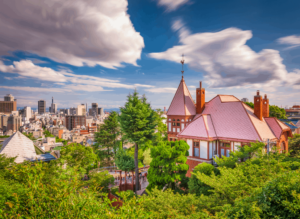
Japan is an amazing country. But sometimes using its transportation system can be more than just a little tricky.
1. TOKYO METRO (THE BEST WAY TO GET AROUND TOKYO)
The Tokyo subway system consists of two interconnected networks, the Tokyo Metro and Toei Subway .
Trains and subways in Tokyo also run between 5:00 am and 1:00 am daily, are religiously on time, and arrive every 3 mins during peak hours (Peak hours are on weekdays between 8:00 am and 9:00 am and shortly after 5:00 pm. Morning rush hours also tend to be more concentrated and heavier than evening rush hours).
Oh, and girl, (and guys) don’t forget…
- Swipe your passcards both on the way in AND on the way out. The digital screen is awesome and will display the remaining balance on your card.
- Most train stations have multiple exits- so remember to take the right one!
- Consider the “Tokyo Subway Ticket“ which provides unlimited use of all subway lines. Pick it up at either Narita Airport or Haneda Airport for the ultimate freedom during your Japan solo travels.
- Queuing is an art form here and you will be expected to do so on the platform. Just be prepared because there will be a mad dash to nab a seat during rush hour.
- The most useful line in Tokyo is the JR Yamanote Line, which is commonly referred to as the “Tokyo Loop Line” or just the “Loop Line.” You can use your Japan Rail Pass on this line.
- Another great way to pay for trains and subways in Tokyo is with a prepaid Pasmo or Suica card since it is WAY cheaper than buying individual tickets.
Thought trains were complicated?
Well, think again!
Because Japanese buses are a little bonkers!
- You need to board the bus from the middle and not the front
- You will collect a plain, slip of paper as you board the bus. This piece of paper will have a number on it. And…TADA, this is your bus ticket
- The electronic board displaying ever-changing numbers at the front of the bus may confuse you! But, please use it before you hop off the bus since the cost of your bus fare will be displayed under your seat number, AKA the number that is printed on your ticket
- The driver will expect you to deposit both your bus fare and your ticket, into a designated collection box BEFORE you leave the bus.
You could always just skip all this confusion and get a Pasmo card instead.
Remember though:
This card is only valid in the Tokyo/Yokohama region and is sort of like a Metro/Travelcard/Oystercard for Tokyo’s metro/buses.
Now, if you do purchase one:
Try and put at least $30 on the card since this will cover quite a few journies.
All you need to do is tap your card when you board a bus (or metro), and then again when you get off.
See! Super simple!
And while buses are great to use in small cities and in the countryside, I would avoid using them in major cities, like Tokyo, since there’s a lot of traffic and it will take you forever to get anywhere.
I would also avoid using buses over long distances.
EXCEPT IN KYOTO!
Yeah, don’t ask me why but it’s actually cheaper to use the bus than the train in Kyoto.
Some of the different types of buses that you’ll find in Japan are:
- Route buses (which operate within cities and towns),
- Highway buses (which operate between large cities),
- Limousine bus (which operate between the airport and a major bus station)
And out of all of these different types of buses, you’ll probably end up using route buses the most.
But, are they really worth using?
Well, like with all forms of public transportation, they have their own set of pros and cons!
A major pro is cost.
Because you can definitely use buses as a low-cost alternative to the train.
For example:
You can catch a bus from Tokyo to Kyoto, for just 1,599 JYP ($15) which is WAY cheaper than the train.
Buses are also insanely comfortable and come with wicked awesome, reclining seats (Some ever have full-on SALONS!!).
However, one GIANT con is time!
Because the above journey will take you over 7 hours by bus and just 2 hours and 15 minutes by train.
A lot of long-distance bus journeys also take place overnight, which is great for saving money, at least if you’re comfortable doing this alone.
If you wanna save money, take the bus.
If you wanna save time, take the train.
Because it really just depends on which one of those things is more important to you.
***PSST: Don’t discount sightseeing buses since The Chuo Bus from Sapporo to Shikotsu and the Toya Lakes is a great way to see some of Japan’s most amazing scenery.***
3) Plane Travel
Thinking of cutting down on your travel time by flying across Japan?
While it is doable, it’s definitely not the most cost-effective way of traveling through Japan.
When traveling between cities, I’d still recommend the train.
For longer journeys, like the one between Fukuoka and Sapporo, I’d consider flying since it’s the fastest way to travel.
And if you do decide to fly:
Try using smaller, domestic airlines, like Skymark and Jetstar Japan, which usually have cheaper fares.
You can also check with the airline operator of your international flight (BEFORE you arrive in Japan) and see if they offer discounted domestic fares to passengers who fly on their international routes to Japan.
Yup, something that is definitely worth checking out.
We all know that Japan is an archipelago.
And as such:
Ferries are a constant form of transportation between islands.
- Some smaller islands, like Naoshima can only be reached by ferry
- Ferries can be useful for traveling among Japan’s four major islands. But, information on ferry routes (including schedules and fares) is almost always in Japanese ONLY!
- If you ‘re interested in traveling by ferry, instead of train, then the ‘Japan Ferry Pass 21’ is the sea equivalent of the JR Rail pass. Covering 14 routes over 21 days, it’s about a third of the cost of the rail pass is just $192 per person.
But is it right for me?
Well, if your route/time schedule allows for ferry travel, then this can be a viable transportation option.
Just plan on making at least two trips to some of Japan’s other islands if you want the Japan Ferry Pass 21 to be cost-effective.
I would ONLY recommend this option if you’re looking for a slower form of transportation.
Because if getting to your final destination QUICKLY is more important than the journey itself, then this isn’t the option for you.
***Another added benefit of traveling by ferry is that you can save money on overnight accommodations, something that is never cheap in Japan! Plus, ferry cabins are usually relatively comfortable, modern, and clean.***
WHEN IS THE BEST TIME OF YEAR TO SOLO TRAVEL JAPAN?
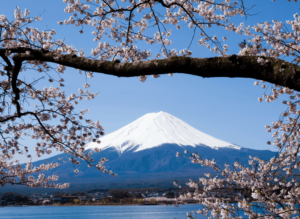
Any time between March and May (minus Cherry Blossom season) or between September and November is probably the best time to solo travel Japan.
It’s never really a bad time to do a bit of Japan solo travel.
You will definitely get a very different vibe from the country, depending on when you visit.
If at all possible, try and plan your visit between March and May (Minus cherry blossom season, which varies depending on where you are in the country) or between September and November, when weather is mild, prices are at their lowest, and when crowds are not as crushingly huge.
If you do decide to visit during the spring, psych yourself up for it because this is THE most famous (and busiest) time to visit Japan.
Why?
Two words. Cherry blossoms. Obvs.
Travel to Japan during this time of year and expect to be bombarded by hordes of tourists and locals who are all out celebrating the beautiful blossoms during hanami (blossom viewing) picnics.
If you’re not fazed by epic levels of heat and humidity, then summer is a great time to visit Japan.
That’s because:
There are a ton of festivities that take place during this time of year.
From dazzling fireworks displays to al fresco munching on street food, summer is definitely a fun time to visit Japan.
Can’t deal with the crushing crowds of spring but still want to experience some of Japan’s insane, natural beauty?
Then considering visiting during autumn, AKA the season of red and gold leaves.
Japan’s countryside will come alive with vibrant colors, making it the perfect time to get outside and do a bit of hiking.
What if you’re really a snow bunny at heart?
Then Japan totally has you covered!
Just head up to Hokkaido in the North and enjoy some beyond epic mountain ranges that will make any snow-loving traveler drool.
Because yes my friends.
Hokkaido really is known as the ‘Swiss Alps of Asia’ for a reason and is the perfect place for any solo traveler who is desperately searching for ALL the Christmas feels (which are sometimes lacking in other parts of Asia TBH).
WHAT TO SEE IN JAPAN: 10 AMAZING PLACES TO VISIT
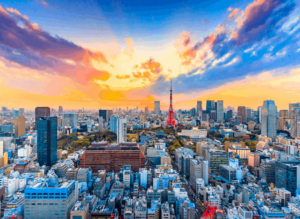
Tokyo Tower and the iconic skyline of Japan’s amazing, capital city.
You know those images that you have in your head of futuristic skyscrapers, neon lights, quirky fashionistas, video-game obsessed individuals, and over-the-top, one-of-kind activities?
I’m 100% referring to owl, goat, and hedgehog cafes, as well as a real-life version of Mario Kart (FYI: You can also do this in Osaka AND Kyoto).
You’ll find all that and more in Tokyo since this modern AF city really does sit at the beating heart of contemporary Japan
That being said though:
There are also a ton of surprisingly traditional aspects of this city too, like sumo wrestling in Tokyo .
Tokyo really is a place full of contradictions.
When you visit Tokyo, be prepared to battle your way through crazy busy pedestrian crossings, to be overwhelmed by the sheer size of this place (Tokyo is truly MASSIVE), and fall in love with the city’s beyond divine 7-Eleven egg sandwiches (strange but true).
If you swan dive headfirst into Tokyo’s fast-paced lifestyle, all this awesomeness can result in total sensory overload.
From robot restaurants to amazing, panoramic city views atop the Tokyo Metropolitan Government Building in Shinjuku (free and deffo worth it!), this crazy busy city really does have it all.
Try and take it easy while enjoying all the sights, sounds, and flavors that this vibrant metropolis has to offer.
You are forbidden (do you hear me? LOL) from leaving this city without doing the following.
- Visit the Akihabara district for arcade games, ‘cute’ cafes, and delicious ramen.
- Walk across the famous Shibuya Crossing- if you dare!
- Wear some of the city’s fashions in Takeshita Street, Harajuku (Gwen Stefani eat your heart out)
- Try the soup dumplings and espresso tonic in Yokohama Chinatown (SO GOOD!!)
- Visit the CupNoodle Museum and make your own.
- Get your real-life Mario Kart on while driving through the crazy streets of Tokyo, in a go-cart, and dressed as your favorite Mario character. Slightly mental but hilarious. You also will need an international driver’s license for this so plan accordingly because they are strict about this.
- Explore the colorful Digital Arts Museum TeamLab Borderless.
Tokyo also gets extra brownie points from me since eating alone here is easy and uber-tasty too!
Solo diners can happily, and not-so-awkwardly, eat at the bar of any Sushi, Tempura, and ramen joint in the city.
Yes, my friends, we call this living the dream.
And if you really want to live it up, you could even take an amazing Mt. Fuji tour from Tokyo .
Nine Hours Woman Kanda (Budget) – The Shinjuku and Ginza neighborhoods are perfect areas for solo travelers to stay. However, If you’re not careful, accommodations here can be pricey. And that’s where Nine Hours Woman Kanda comes in. With quirky, fun, and totally bonkers rooms, that start at $55 per night, this capsule hotel is the perfect place to stay in Tokyo. And while these establishments are traditionally for men only, many capsule hotels are now opening their doors to women (sorry but no men allowed), making this a fantastic, extra-safe, budget hotel option for any of my fellow, solo female travelers out there. I also love that this place has a cozy, minimalist vibe about it and is conveniently located near both Tokyo Station and the popular, Akihabara area.
Shibuya Granbell Hotel (Mid-range) – Want a stylish, boutique hotel that is also affordable? Then check out Shibuya Granbell Hotel near Shibuya station. Rooms here start at $110 per night and have this incredible, pop-art, minimalist design that is beyond cool. All rooms here also include free WIFI, flat-screen TVs, complimentary breakfast, and bike rentals, for an additional fee.
Want your Japan solo travel to be served to you with a side of geishas, temples, zen gardens, and cobblestone streets?
If so t hen Kyoto is for you!
Sure, Kyoto has its fair share of ugly high rise buildings, like any other major city.
It won’t take long for an intrepid solo traveler like yourself to venture past those less than stellar buildings and discover vast mountain ranges, as well as various aspects of traditional Japanese culture.
While you’re here, you cannot miss out on:
- Temples. Kyoto is brimming over with temples!! So, choose the temples that you visit wisely. Also, try and visit first thing in the morning to avoid large crowds. My personal faves include Kinkaku-ji (Golden Temple), where you can actually get your fortune from a vending machine (SO Japan), and Kiyomizu-Dera Temple .
- Visit the iconic red torii gates of the Fushimi Inari Shrine.
- Take a morning stroll through the Arashiyama Bamboo Grove .
- Visit the home of a geisha in Gion and partake in a traditional tea ceremony/learn how to make matcha tea.
- Explore the beauty of Yasaka-jinja at night.
And if you’re hungry (because we all know that I always am):
Then be sure to try some of Kyoto’s famous ‘ okonomiyaki’, a crispy, made-to-order pancake that is served to you with your choice of fillings.
Simple, yet oh so tasty!
And if you really want to get your foodie swerve on, then stop by Menya Gokkei (Northern district) for some authentic, beyond delicious, Japanese-style ramen.
You can also hit up any I chrian (AKA 24 hour booths where you can consume ramen totally by yourself) in town since this is basically any ramen loving, introverted traveler’s dream.
Slurp away my friend because you totally deserve it!
Now, for the best gyozas in town, visit the one and only Sukemasa . Not only is the food here delicious, but you can get a couple of gyozas, miso soup, rice, and pickles for less than $7.
Talk about an epic steal!
Tanaka-ya (budget) – With rooms that start at $52 per night, T anaka-ya is a cute, budget-friendly, traditional, Japanese-style homestay that features tatami-mat flooring, paper sliding doors, and Japanese futon bedding. It is also conveniently located in Gion Miyagawa-Cho, making this the perfect home base for which to explore Kyoto’s iconic old town.
The Sekura Terrace (Mid-range) – Conveniently located near Kyoto Station, Sakura Terrace is an awesome place for any solo female travelers out there to stay. I mean, not only do they offer a comprehensive ‘ladies plan’ that includes meals, but rooms here are bright, start at just $84 per night, and feature floor-to-ceiling windows, flat-screen TVs, and free WIFI. There’s also an on-site, coin-operated laundry facility, just in case your clothes are starting to look a bit dingy.
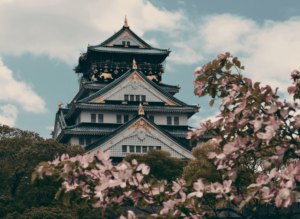
The old-world charm of Osaka Castle, one of the best places to solo travel Japan.
Another sprawling neon city:
Osaka is a mass of bright lights, amazing food, and affordable prices, at least when compared to its big brother. Tokyo.
So where to begin?
Well, food is ALWAYS a good place to start. Especially since I like eating just as much as I like breathing.
Osaka is home to some SERIOUSLY amazing vegetarian cuisine.
It was so good that I basically wept tears of joy.
If you’re looking to get your foodie swerve on, then devour some udon noodles at Azuma Udon, the city’s oldest udon restaurant.
If you’re total veg like me, then hit up Green Earth, a delicious vegan-friendly eatery with a set lunch menu, that features rice, a main dish, salad, a vegetable side dish, and soup, for just $8.
If you actually wanna do something other than eat ALL of your feelings, then definitely:
- Ride the Ferris wheel on top of the Don Quixote store in central Osaka/. Trust me on this, it is the very definition of a one of a kind experience!
- Check out the bright lights of Namba. In particular, Dōtonbori is the most popular street in Osaka for viewing neon lights and animated signs, with the Glico Running Man being an Instagram fan fave (#justsayin’).
- Discover the quirkier side of the city in Shinsekai District, which is filled with arcade games and food halls. You can also enjoy some epic, panoramic city views from the top of Tsutenkaku Tower .
- Visit Osaka-jo castle . Nestled inside the city walls, this building is one of the oldest structures in the area and sits within a picturesque park (It’s also an extra stunning place to visit during cherry blossom season).
Toyoko Inn Osaka Umeda Higashi (budget) – If you’re on a budget, then business hotels can be a great option for you while you solo travel Japan. And one of the best in the area is Toyoko Inn Osaka Umeda Higash i . Now, while luxury it most certainly ain’t, it’s still clean, well equipped, and centrally located (It’s literally a 4-minute walk to the subway). Rooms here also start at just $30 per night and feature super snazzy things like WIFI, flat-screen TVs, mini-fridges, and tea/coffeemakers (Talk about the posh life! LOL). Complimentary breakfast is also available, as is access to a coin-operated laundry facility since, I mean, well, who doesn’t like clean clothes?
Hotel Monterey La Soeur Osaka (Mid-range) – Perched atop a high-rise building that overlooks the O River, this contemporary hotel has an American, art deco style to it. Yet, it somehow retains a distinctly Japanese vibe with warm rooms that start at $89 per night. This hotel is also just a 7-minute walk from the train station, and features an on-site French restaurant, tea room, bar, and gorgeous, next level divine, spa!
So, why should Nara be on every solo traveler’s bucket list?
Because of the local deer that bow for food!
In truth though, Nara definitely has way more to offer visitors than a chance to feed cute little deer.
Nara is full of historic, Japanese treasures, making it the perfect place from which to indulge your inner culture vulture.
Because, believe it or not:
Nara was actually Japan’s first capital city and is home to a wealth of charming, ancient buildings that stand as a remnant of the city’s high profile past.
This also includes a variety of different UNESCO world heritage sites like the Hall of the Great Buddha (But, more on him later.).
This historic city is easily accessible from both Kyoto and Osaka and makes the perfect day trip from either city since both places are just an hour away from Nara by train.
While you’re in this ultra-fab metropolis, do not miss out on:
- The Daibutsu-den (Hall of the Great Buddha) at Todaiji. It’s arguably one of Nara’s most famous sights (besides the deer of course.) and features a 15-meter tall, golden Buddha that sits inside the world’s largest wooden building. Impressive much? I think so!
- Feeding some local deer in Nara deer park. Yeah, they are pretty friendly and will wait until the food is offered to them. So don’t worry about them stealing your lunch (The monkeys of Asia should take note!)!
- Eating some ‘Nakatanidou’, a famous Japanese rice cake. And while the ‘yomogi-mochi’ may sound gross, it’s flavored with mugwort plant and is actually super tasty.
- The Kofuku-ji Temple, which was established in 669 AD and has a great deal of cultural significance due to its links to the Fujiwara family.
Guest House Oku (budget) – For the ultimate trip down nostalgia lane, book a stay at the small, but cute, Guest House Oku. This charming little boutique hotel has spotless rooms, which start at $30 per night. And while bathrooms here are shared, the real appeal of this place lies with the friendliness of the hostess, Yoko, who goes out of her way to make guests feel truly at home and like they are having an authentic, Japanese experience. This hotel also serves amazing food, is incredibly safe, and is conveniently located near the center of the city.
Centurion Hotel Classic Nara Station (Mid-range) – Hallelujah! Finally, a hotel with a reasonably sized room that doesn’t inadvertently feel like a tomb. Because let’s be honest, spacious hotel rooms are a rarity in Japan. But, somehow, Centurion manages to deliver spacious, warmly decorated, comfortable rooms that are all still just a 5-minute walk from the nearest train station. Rooms here also start at $97 per night and include sofas (feel free to “oh” and “ah” at will), flat-screen TVs, tea makers, mini-fridges, WIFI, and air purifiers. And for an added dose of Japanese quirkiness, try using their coin-operated laundromat to freshen up your clothes before you leave the city.
PSST: Kyoto and Osaka are both a short distance from Nara and have WAY more options when is comes to accommodations. So, if you’re struggling to find what you’re looking for, then you can always book a stay in either city and just visit Nara as part of a day trip.
5. Takayama
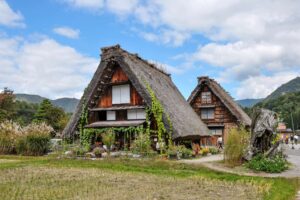
Some of the quaint, Japanese-style architecture that you’ll find in Takayama, Japan, at the base of the Japanese Alps.
Takayama might just win my award for the prettiest place EVER and is easily one of the best hidden gems in Japan .
Because no doubt:
This city if flippin’ gorgeous!
Well, it’s located on the edge of the Japanese Alps and is far less touristy than many other places in Japan.
And you know what I say to that?
Crowd free is the way to be! Because Takayama is basically THIS introverted traveler’s idea of a total dream!
Throw in some exquisite, traditional wooden houses, signature red bridges, and brightly colored shrines, and you may never wanna leave!
Other things that you MUST do while you’re here include:
- Go for a morning stroll around Sanmachi Stree t. It’s located at the center of Takayama Old Town and is where you’ll find many of the city’s lovely, traditional wooden buildings (perfect for the insta feed of awesome).
- Explore local, morning markets like Jinya-Mae ( a small market that is located in front of the Takayama Jinya building ) and Miyagawa ( a market that sits alongside the Miyagawa River).
- Eat some ‘mitarashi-dango’ , or rice balls grilled in soy.
- Cycle through Shiroyama Park , a part of the Japanese countryside that sits just five minutes outside the city. Also, be sure to hike to the Takayama Castle Ruins and admire the incredible mountain top views from here.
- Visit Cafe DON for Coffee and Cake!
The Country Hotel (Budget) – At just $35 per night, this hotel is definitely no-frills. But, The Country Hotel still has everything you need for a comfortable stay (Think comfy beds, WIFI, air conditioning, etc.). They’ll even provide you with complimentary green tea and cozy slippers, both of which are clearly essential items for any wicked awesome hotel stay. This place also gets bonus points for its primo location since it sits right across the street from JR Takayama Train Station .
Takayama Olan Hotel (Mid-range) – This modern meets traditional, Japanese-style hotel has a fantastic, central location (Just three minutes from Takayama train station) and offers guests comfortably designed rooms that start at $123 per night (think luxe seating areas, posh dark wood furniture, free WIFI, tatami floors, futons, etc.). There’s also a buffet-style, onsite, restaurant where you can enjoy a delicious breakfast, for a small fee. However, the real highlight of any stay at the Takayama Olan Hotel is their stunning, open-air, roof-top, hot spring, which provides you awe-inspiring, panoramic views of the nearby, Hida Mountains.
So, you’ve probably seen all of those amazing photos of a beyond colorful ship that is gently gliding past Japan’s immortal, Mount Fuji.
And if not:
Well then, feel free to look it up on Insta right now. I mean, I can wait…not-so-patiently since a climb up Mt. Fuji Japan is the stuff that travel dreams are made of.
The mountainous town of Hakone actually overlooks this picture-perfect lake, which is locally known as Lake Ashi.
This town is also located inside the Fuji-Hakone-Izu National Park and is just a short (ish), 1.5-hour bullet train ride away from Tokyo.
Additionally:
This place is known, the world over, for its picturesque, hot springs resorts (AKA onsens in Japanese).
In addition to its wealth of onsens, Hakone is also home to various world-class art museums, historic Shinto shrines (like the aptly named, Hakone Shrine), and expansive mountain ranges.
This tiny town makes for the perfect, weekend escape from the chaos of Tokyo.
You CANNOT leave this place without trying the black eggs!
They’re black because they’ve been infected with some rare strain of Bubonic Plague.
This local delicacy, kuro tamago (black eggs), is created by cooking chicken eggs in the sulphuric hot springs of Owakudani – a volcanic crater that was formed over 3,000 years ago.
Apparently:
Legend says that eating just one black egg will extend your life by more than seven years.
To procure these little fountains of youth for yourself, just stop by Kurotama Shop , in Owakudani, for some of the best black eggs around!
***While many people tend to visit Hakone as part of a day trip from Tokyo, I would advise against this. I mean, it’s doable but it just makes for a really LONG, really RUSHED day. So, if you have the time, definitely stay overnight in Hakone and enjoy your visit at a more relaxed pace.***
Hakone Tent (Budget) – If you’re looking for a unique hostel that is both reasonably priced and cozy, then this rustic guest house is for you. Once a Japanese ryokan in its former life, this building has long since been transformed into a comfortable, light, airy, and modern hostel that is just a stone’s throw away from Gora Station. Beds here sit inside six-person, single-sex dormitories, start at $30 per night and include tatami mats and futons. Private rooms with wood floors are also available here, as is WIFI, towels/sheets (for a fee), and access to an onsite cafe/bar. While staying at Hakone Tent, you’ll also get full access to their on-site, gender-segregated, hot spring facilities (Can I get a whoop, whoop? No? Okay, swiftly moving on).
Hakone Honbako (Mid-range) – Set along a quiet, tree-lined street is Honbako Honbako, the hotel of your literary loving dreams. See, ’honbako’ literally means ‘bookcase’ in Japanese. Which is a perfect name for this boutique hotel since It is brimming over with books, books, and, oh yeah, more books! I mean, the library here is outfitted with floor-to-ceiling bookcases that contain more than 12,000 different titles. Add in comfortable, modern rooms (which start at $173 per night) with hardwood floors, spacious beds, private outdoor baths (with geothermal water), minifridges, and tea/coffee makers, and you have the perfect place to stay in Hakone. Breakfast is also included with the price of your stay, as is access to an on-site cinema and the hotel’s gender-segregated hot springs.
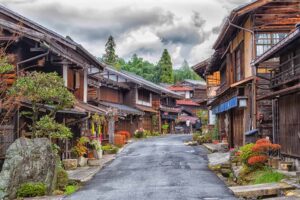
Some of the historic, Edo period houses that line the Nakasendo trail between Magome and Tsumago in Japan.
Why do I love Tsumago with my whole heart?
Because it’s basically like this perfect little, tiny AF village (it’s so small that you can literally walk from one end of town to the other, in about fifteen minutes flat), that feels like a total blast from the past.
And I mean that in the BEST possible way.
Because while you’re here, you’ll find no cars during the day, no phone lines, and no power cables.
You’ll discover a charming, Edo Era village that is overflowing with historic ambiance from the area’s wealth of traditional, dark-wood, lattice-front homes. All of which are particularly amazing at either dusk or dawn.
While you’re here though:
Also, be sure to visit the Tsumago Castle grounds for some amazing views of the city.
The castle itself was actually demolished hundreds of years ago, but the panoramas remain and are truly spectacular to behold.
And while the scenery here is truly next-level amazing:
You just cannot leave without visiting the Kotoku Temple , a traditional Buddhist temple built in 1500, and Wakihonjin, a charming history museum that showcases various artifacts from the area.
But enough about Tsumago’s ambiance already!
Because we need to talk about the REALLY important things in life…like FOOD (glorious food)!,
While I myself am not a meat eater, Tsumago is actually known for a traditional, local delicacy, that is supposedly a “must try” if you’re a real carnivore at heart.
Head on over to Ryokan Fujioto and enjoy some local beef, which is served inside a magnolia leaf and cooked right in front of you, on a table-side, hibachi grill.
Shimosagaya (Budget) – Nestled in the mountains, small, private rooms at this charming Minshuku (AKA family-owned guest house) all start at $63 per night. And while it’s a simple building, accommodations here are comfortable, quiet, and basically all things zen. Guests here can also enjoy some made to order, home-style, Japanese cuisine, as well as access to private, on-site hot springs, making this the perfect retreat for any weary solo traveler.
Hotel Green Plaza Karuizawa (mid-range) – Unlike the budget option above, this hotel has a more contemporary feel about it. It also sits adjacent to a trendy shopping mall and is just a short walk away from Karuizawa Toy Kingdom (A perfect place to visit if you’re missing the distinctly Western vibes of home). Rooms here also have casual decor and include wood-framed beds, as well as a traditional, Japanese-style dining area with tatami mats and short-legged tables. Breakfast and dinner are also included with the price of your room (they start at $168 per night), as is access to the hotel’s free train shuttle, indoor/outdoor bathhouses, a chapel, a tea room, and various on-site restaurants.
8. Hiroshima
Ask nine out of ten people about Hiroshima, and they will immediately think of August 6, 1945; that horrific day when this Japanese city became the site of the world’s very first atomic bomb attack.
In spite of this city’s devastatingly sad past, it has become a vibrant, cosmopolitan place that is brimming over with wonderfully beautiful messages of hope and peace.
As a solo traveler, you should definitely spend at least a few nights here, wandering through the area’s many idyllic, tree-lined boulevards and chatting with some of Hiroshima’s friendly, laid back locals.
No trip to Hiroshima would be complete without a visit to Hiroshima Peace Memorial Park.
It’s a hauntingly beautiful, sprawling green space that is filled with various fountains, statues, memorials, and ruins, all of which stand in memoriam of the 146,000 people who tragically lost their lives on that fateful day.
And of particular note here is Genbaku Dome.
Once the Hiroshima Prefectural Industrial Promotional Hall (originally built in 1914), this abandoned building is now all that remains of the site where the first atomic bomb was dropped.
This edifice stands, exactly as it did after the bombing, as a powerful reminder of the devastating effects of nuclear weapons, and as a symbol of hope for a future that is free of this type of technology.
Hiroshima is also home to several other, slightly less, incredibly heartbreaking attractions, like the Shukkei-en Japanese garden, and Hiroshima Castle , a beautiful, historic fortress that was built in 1590 and that is surrounded by a moat.
And for some of the best eats in the city:
Head down to Hiroshima Station and explore downtown Hiroshima, where you can try everything from okonomiyaki (PSST: Okonomi-mura is the best place in the COUNTRY to try this s avory, Japanese-style pancake) to oysters (Yakigaki-no-hayashi is a great, local seafood restaurant where you enjoy some great udon sets as well as raw oysters) to Gelato (Okay, I know this isn’t a traditional Japanese food, but Polar Bear really is the best place to go for gloriously fresh and delicious gelato).
Hotel S-Plus Hiroshima Peace Park (Budget) – Sitting near the Hiroshima Peace Park, (the clue’s in the name guys!), this well-located hotel has functional, single rooms that come fully equipped with WIFI, a TV, a mini-fridge, and a tea/coffeemaker. Starting at just $31 per night stays here also include a complimentary, continental breakfast, as well as access to, YOU GUESSED IT, a coin-operated laundry facility.
Top Hiroshima Condominium 2 (Mid-Range) – This super snazzy hotel is less than three years old and is a mere 20-minute walk away from Hiroshima Peace Memorial Park (Which is good because the more you walk, the more calories you burn, and then the more you can eat! HOORAY!). Rooms here also start at $130 per night and include a private balcony (For prime city views here people), a queen-sized bed, a sofa, a TV, and a full kitchen, as well as an ensuite bathroom with free toiletries! Yup, nothing but the sweet, sweet, luxe life for me.
9. Kanazawa
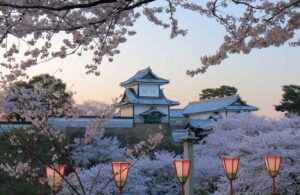
Beautiful Kanazawa Castle in Japan, amidst a sea of cherry blossoms.
Often nicknamed “ little Kyoto” (and for all the right reasons):
Kanazawa is jam-packed full of fun things to do, activities that you can easily add to any, Japan solo travel itinerary.
But, don’t just take my word for it.
I mean, Kanazawa Castle and Kenroku-en Garden alone are considered to be some of the country’s top attractions!
Kanazawa isn’t JUST about iconic castles and ethereal green spaces.
Walk through this city’s various Edo-era districts (like the Higashi Chaya district, which is where you’ll find many historic teahouses with geisha performances) and you’ll discover a multitude of fascinating museums (like the 21st Century Contemporary Art Museum ), ancient Japanese buildings (like Seisenkaku Villa), charming local markets (check out Omicho Ichiba Market , which is just as good as the one in Tokyo, only A LOT less crowded), historic temples (like Ninjadera with all its secret doors and hidden traps), and quaint little handicraft shops.
And while we’re on the subject of markets:
Just around the corner from Omicho is Curio Espresso & Vintage Design , a great little coffee shop that sells fab espresso and delicious sandwiches.
A trip here is absolutely ESSENTIAL to your overall wellbeing and happiness while in Kanazawa.
The owners here are SUPER friendly, and just an overall great source of local information about the city.
Sharin (Budget) – Complete with vintage bicycles out front, Sharin is just a 10-minute walk from Kanazawa Railway Station and offers guests easy access to the 21st Century Museum of Contemporary Art. And while this hotel does have several dormitories for you to stay in, there’s really no need. Because f or a mere $23 per night, you can have your very own, private room, complete with an uber-spacious double bed (Can you say bargain, party of one?). See, dreams really do come true!
Libre Hosai Kanazawa (mid-range) – You want space? Then I’ll give you space! 42m² of space to be exact! Because believe it or not, Libre Hosai Stay Kanazawa lets you rent out an entire apartment for just $132 per night. So, think private shower, a spacious bathtub, and a snazzy AF little kitchenette where you can pretend like you “cook”. Now THAT’S what I call the LUXE life indeed. This place also conveniently located just 800 meters away from Omi-cho Market and Oyama Shrine.
10. Koyasan
Tucked away, to the south of Osaka, is Koyasan, a huge Buddhist temple settlement that lies (both figuratively and literally) at the very heart of Japanese Buddhism.
More commonly known as Mount Kōya:
This small, secluded, temple town was first developed around the Shingon Buddhism headquarters here.
And lest you think I’ve started speaking in tongues:
Shingon Buddhism is actually an important sect of the religion that was first brought to Japan in 805 AD, by Kobo Daish.
You’ll find a wealth of Buddhist temples within this tranquil, heavily forested, mountain town, as well as the site of Kobo Daishi’s mausoleum and the start/endpoint for the Shikoku 88 Temple Pilgrimage.
To really get the most out of your visit, I’d HIGHLY recommend doing an overnight stay in a local, Japanese Temple.
Known in Japan as Shukubo, which literally translates to ‘sleeping with the monks’, this is a fantastic way for any solo traveler out there to really engage with Japanese culture and get an authentic, Japanese Buddhist experience.
Live the dream and feel free to eat, pray, and love your way through the day, just like a local monk.
And if you get a sudden attack of the late-night munchies:
Then stroll on over to Kameya for some udon noodles and seaweed in vinegar.
I pinkie promise, both of these dishes are absolutely TO DIE FOR!
Guesthouse Fuki Juku (Budget) – Honestly, the location of Guesthouse Fuki Juki could not be any better since this place is literally SURROUNDED by local temples! There’s also a traditional Japanese garden on-site, as well as comfortable rooms that include both free Wifi and a delicious, complimentary, American-style breakfast. And while rooms here are a bit sparse (You’ll also have to use a shared bathroom, which I hate), it’s all good when you’re spending just $51 per night.
Yochi-in (Mid-range) – Yochi-in is the perfect place for visitors to engage in various, temple-related activities like meditation, morning prayers, sutra copying, and tracing of Buddhist deities. All Japanese-style rooms here also start at $143 per night and feature tatami (woven-straw) floors, futon bedding, a TV, fan, and heater. And while bathrooms are shared with other guests, the hotel’s central location more than makes up for this fact since this place is within easy walking distance of both Koyasan Reihokan Museum and Koyasan Choishimichi ( two must-see attractions while you’re in the area). Plus, their on-site restaurant really is the very definition of amazing.
A 7 Day, Japan Solo Travel Itinerary!
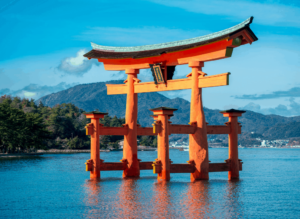
Use this 7 day Japan itinerary to explore some of Japan’s top attractions, like the Itsukushima Shrine pictured here.
So, per usual, I’m just gonna start by being totally honest here.
And honestly:
There is just no way in HELL that you’ll be able to see all of Japan in 7 days.
Yeah. Sorry, but it’s just not possible.
At least, not without totally burning yourself out or getting approximately NO sleep.
But, t hat being said:
Thanks to Japan’s nifty railway system/JR pass, there are still LOADS of different places that you can see during a 7 day Japan itinerary.
If you’re down and r eady to get started, then let’s start with the bustling city life of Japan’s one and only…Tokyo!
Toyko (3 Nights)
Day 1 – west tokyo.
I would recommend spending at least 4 nights in Tokyo, just so that you can really experience everything this city has to offer.
Remember before when I said that Tokyo was HUGE?
Well, I was NOT lying.
Which is why 4 days in Tokyo is definitely ideal.
But, if you’re short on time:
Then two days is still a decent amount of time to spend in this city and it will help you get a feel for this amazing place.
To start your whirlwind trip through Tokyo, head to the famous Shibuya district.
Because once you’re here:
You’ll be able to cross the street, just outside of Shibuya Station, at one of the busiest intersections in the WORLD!
It’s beyond chaotic and crazy, but it’s also definitely all things Tokyo.
While you’re here, do try and visit some of the insanely quirky shops that can be found in this area.
A trip to the vibrant Harajuku neighborhood, which is brimming over with colorful street art, quirky vintage clothing stores, young people who are wearing only the FUNKIEST of fashions, and fun cosplay shops along Takeshita Street .
And while there are a ton of different things to see and do here:
No trip to Harajuku would be complete without stopping for a giant cotton candy at Totti Candy Factory and visiting the world-famous, Meiji Shrine.
Don’t forget to do as the locals do and snap some pics in a local ‘Purikura. AKA, a popular Japanese-style photo booth where you can take photos, decorate them as you like, and then print them off on sticker paper.
You should also probably stop by Kawaii Monster Café while you’re here, which is a wonderfully weird, themed cafe that features colorful, themed rooms, casual eats, fun cocktails, and regular, live performances.
Head back to the Metropolitan Government Building for an amazing FREE view of the city, but not before stopping at Ramen Road for a quick dinner.
Then finally:
Finish your evening off with a trip to Park Hyatt Tokyo, where you can create your very own ‘Lost in Translation’ moment.
You can always skip the serenity of the park and just straight up, live la vida loca at ’ Timeout ’ instead; a jazz/blues bar where the music never really stops.
Because once the live music ends, that’s when the karaoke begins…
Day 2 – East Tokyo
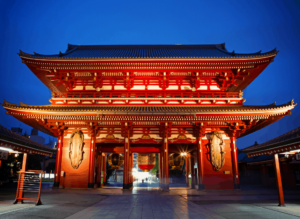
On day two, you’ll see the more traditional side of Tokyo and visit Sensoji Temple, an ancient Buddhist temple in Asakusa.
We want ultra-modern yesterday.
Let’s switch things up and go a bit more traditional today.
And the best place to do that?
Why East Tokyo of course! It’s a bit more historic and slightly less chaotic than the other side of the city.
Once you’re here, feel free to explore top, Tokyo attractions like Sensoji Temple (it’s the super famous, ancient Buddhist temple in Asakusa), Tsukiji (there’s even a viewing area here for the popular tuna auction. LOL) and Toyosu Fish Markets and Ueno Park ’ s Museum District.
Now, once you’ve done ALL OF THAT:
Finish the day off on a more modern note in Akihabara, a Tokyo neighborhood that is known for its plethora of awesome arcade games.
You can also get some rather delicious ramen here, and enjoy some gorgeous, panoramic views from atop Tokyo Sky Tree (and sorry, but the views here are VERY un-free).
Day 3- Tokyo Day Trip To Mount Fuji or DisneySea
Today there are two different options available to you, depending on what you’re into.
Take a train from Tokyo Station to Hakone, for some beyond STELLAR views of Mount Fiji (The awesomeness of the views largely depends on the weather, so make sure that you visit on a nice, clear day).
Along the way:
You should also visit the exquisite floating torii gate at Hakone shrine, explore the many walking trails here, and indulge your inner Jack Sparrow with a boat ride across the lake.
You could always go for option two and check out the iconic, DisneySea theme park ,
BEFORE you start violently screaming at me and throwing your laptop across the room in disgust, hear me out.
Because in truth:
DisneySea isn’t just ANY theme park. It’s actually one of the most lavish theme parks in the entire world.
Which is why it’s a super fun, super safe place for solo travelers to go.
It’s also strangely Japanese, making it at least a mildly cultural experience.
Locals adore it. Like, it’s a national treasure level adore it.
A day spent here will not only elevate your inner child to near euphoric states of happiness, but you’ll also get to experience a more modern side of Japanese culture.
Which is a total win-win, at least in my humble opinion.
***For the love of God and all that is HOLY, if you do decide to visit DisneySea, then do yourself a favor and PLEASE BUY YOUR TICKETS IN ADVANCE ! LIKE RIGHT NOW! Trust me on this. You do not want to get there, just to spend hours waiting in line for a ticket. This is a very un-fun way to solo travel Japan.***
Kyoto (3 Nights)
Day 4 – kyoto.
Is riding in a bullet train on your Japan bucket list?
Then prepare to tick that item right off your list. Because you’re about to jump aboard the Shinkansen and travel all the way to Kyoto.
If you can:
Try and catch an early morning train since the trip will take around two hours.
AND REMEMBER:
Be sure to sit on the right side of the train so that you can get that iconic shot of Mount Fiji!
While you may be tempted to rest after your early morning train ride, let’s be honest here.
You really DON’T have time for that.
So, embrace the mildly exhausted explorer within and get out there!
If you’re not exactly sure where to start, then you can always try a walking tour , which is a great way to quickly and easily experience all that Kyoto has to offer..
If walking tours are SOOO NOT your thing, then you can always visit Nijo Castle and Kyoto Imperial Palace instead, both of which are incredibly impressive attractions(to say the very least).
And if you’re hungry:
Be sure to stop by both Nishiki Market and Pontocho Alley for some of the best food in the city.
Whatever you do though:
Do not leave without devouring an uber-yummy, ‘okonomiyaki’ pancake!
NOM, NOM, NOM.
Day 5 – East Kyoto
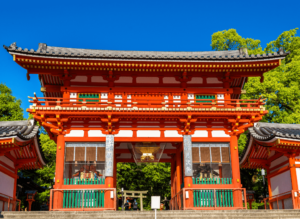
Beautiful Yasaka Shrine in Kyoto, Japan.
Like with Tokyo:
You could easily spend more than 3 days in Kyoto as you solo travel Japan.
With this Japan 7 day itinerary, you’ll easily be able to see most of Kyoto’s top attractions.
Start your day off right, with a visit to some of the city’s most spectacular shrines.
And while Yasaka Shrine and Maruyama Park are ALWAYS beautiful, they are exceptionally stunning during cherry blossom season and autumn, when you have the vibrant, fall foliage in the background.
You can always embrace your inner tourist instead (make sure to have those selfie sticks and fanny packs handy) and follow the popular “temple route” through Kyoto.
This path starts at Kiyomizudera Templ e , follows a GIANT, straight-line through the foothills of Kyoto’s Higashiyama Mountains, and takes you to some of the most stunning temples in the area .
And once you’re totally templed out:
Head to Kyoto’s Gion district for some evening Geisha spotting (PSST: Kyoto also has a seriously awesome night walk through picturesque Gion, Kyoto’s geisha district. But the best part? This tour costs only $12 per person! Yup, money well spent as you learn all about kimonos and the unique history of geishas)!
You could even p artake in a traditional tea ceremony or have dinner at Sukemasa, which is known for serving some of the BEST gyozas in Japan!
Day 6 – Kyoto West
It’s time to head west and visit the city’s famous Arashiyama and Sagano districts.
And I know it sounds totally weird:
But, you MUST start your day with a 7-Eleven egg breakfast sandwich.
Because yes:
They really are THAT good!
Once the HANGRY beast within is properly satiated:
Head to the Arashiyama Monkey Forest.
You REALLY will want to get here EXTRA early, just to avoid the crowds.
Because this ultra-famous bamboo grove really is a total tourist hotspot.
But, if you’re someone who is prone to crowd phobia:
Then you can always visit Okochi Sanso Villa and Jojakkoji Temple instead, both of which are great off-the-beaten-path attractions.
If this is your first solo trip to Japan, then you may want to stick with some of the area’s more well-known attractions.
End your day at Fushimi Inari Shrine, which features over 4 kilometers of winding walking paths that are filled with quaint AF torii gates.
This is definitely one of Japan’s most popular attractions (AKA crowded as hell), but so beautiful and totally worth a visit.
Try and arrive around dusk so that you can experience the beautiful sunset amidst slightly less enormous hordes of tourists.
Day 7 – Leave Kyoto and Head Home
I f you can afford it:
Save yourself some time and fly home from Kansai International Airport in Osaka and not Narita or Haneda in Tokyo.
This airport is infinitely closer to you and will help you maximize your short time in Japan.
If this option isn’t cost-effective, then you can always explore the local food and shopping scene right around Osaka Station, before boarding your train to Tokyo
The train ride takes AT LEAST two and a half hours.
And once you do arrive in Tokyo:
You’ll want to give yourself plenty of time since it will take you about an hour to get from the train station to Narita Airport when using the Narita Express (tickets also cost about $36 per person).
Conversely:
If you’re flying out of Haneda Airport, you could always take the Keihin-Tōhoku Line of the subway, towards Kamata, and then transfer to the Airport Monorail at Hamamatsuchō Station.
It should take you about thirty minutes to get from Tokyo Station to Haneda Airport.
And there you have it!
You have just concluded your awesome, chaotic, whirlwind, once-in-a-lifetime trip to Japan.
BRAVO (insert copious amounts of jazz hands here)!
AND NOW…SOME FINAL THOUGHTS ON SOLO TRAVEL IN JAPAN (JERRY SPRINGER, EAT YOUR HEART OUT!)
So while this Japan solo travel guide is basically OVER, there are just a few more things I want to remind you of, before we say a fond farewell.
First rule of Japan solo travel? Always book your hotels WELL IN ADVANCE since accommodations tend to fill up CRAZY QUICKLY!
Do NOT, I repeat, DO NOT wait until the last minute to book all of your hotels.I know you may think that you’ll score some wicked awesome, last-minute hotel deals.
But I promise you won’t. In fact:
Do this and you’ll have a hard time finding ANYWHERE to stay. Like at all. Especially during peak travel seasons.
Okay, now it’s time for some good news!
Because SURPRISE! The power outlets in Japan are EXACTLY the same as the ones in North America.
No need to add any annoying power adapters to your Japan packing list!
Oh, and if you’re a theme park addict, you’ll definitely want to book your tickets to Disneyland Tokyo and Universal Studios (featuring the Wizarding World of Harry Potter, for all my fellow Potterheads out there!), WELL in advance.
You’ll also want to do a bit of research and look at some crowd calendars on Google, just to figure out what time and day to visit (And since you’re alone, feel free to skip all of those ridiculously long lines and just hop on the single rider line instead).
Alright cool kids:
That’s enough from me! I am so blowing this popsicle stand of solo travel awesome.
In all seriousness, that really is all she wrote!
So, until next time:
Continue to live the solo travel dream like the TOTAL rockstar that I know you are!
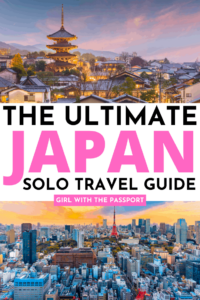
Micamyx|Senyorita
Saturday 11th of January 2020
Solo Travelers who will come across this post are lucky! So comprehensive!
I've been to Japan twice - Tokyo in 2014 to visit my best friend who was based there at that time and Nagoya side in 2015. I plan to go back this year to do a bit of solo backpacking. This is a good guide. Cheers!
girlwiththepassport
Monday 13th of January 2020
Thanks so much for reading Mica and have an AMAZING trip!
Just waiting for the Olympics year to end so I can visit Japan! Super handy and detailed post and as always I love your small details! Super curious to try out these black eggs for which I had never heard anything!!
YES! When you get to Hakone give them a try and let me know what you think. Thanks for reading!
This was so helpful + informative! I’m planning to visit Japan solo soon so this was amazing to read!
So happy to hear that and thank you so much for reading!
Privacy Overview

Four Days in Tokyo: The Ultimate Solo Itinerary
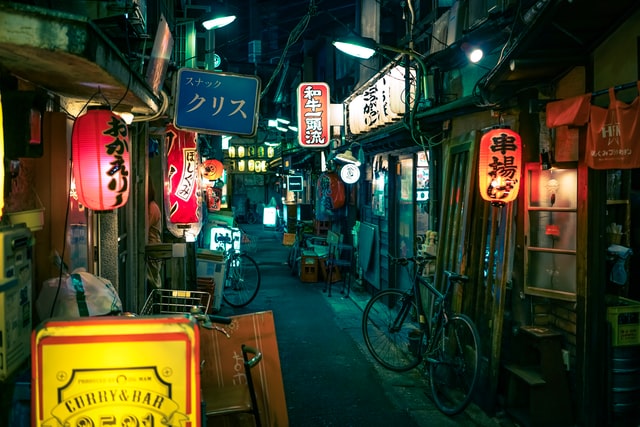
As I prepared for my four days in Tokyo, I could feel excitement building over the fact that I was traveling solo, so could make a travel itinerary that didn’t have to fit with anyone else’s needs. I could erase, edit, and add destinations to my heart’s desire, and there would be no shame in purposely taking a wrong turn or stopping to take too many pictures. While four days in a mega metropolis like Tokyo isn’t a lot of time, it’s enough to explore some slices of the city’s complex culture. Planning a solo trip can be intimidating, so here are some of my tips and recommendations for Tokyo .
Day 1 tips: Relax first, then explore the neighborhood
Ikebukuro, home to the second largest subway stop in Tokyo, is located near Shinjuku and Shibuya. This neighborhood was extremely close to my AirBnb, only a ten minute subway ride. After asking some locals for a dinner recommendation, I found myself at a quaint ramen stop, perfect for a dinner for one. Without even speaking to the wait staff, I ordered my meal with the touch of button on the vending machine menu.
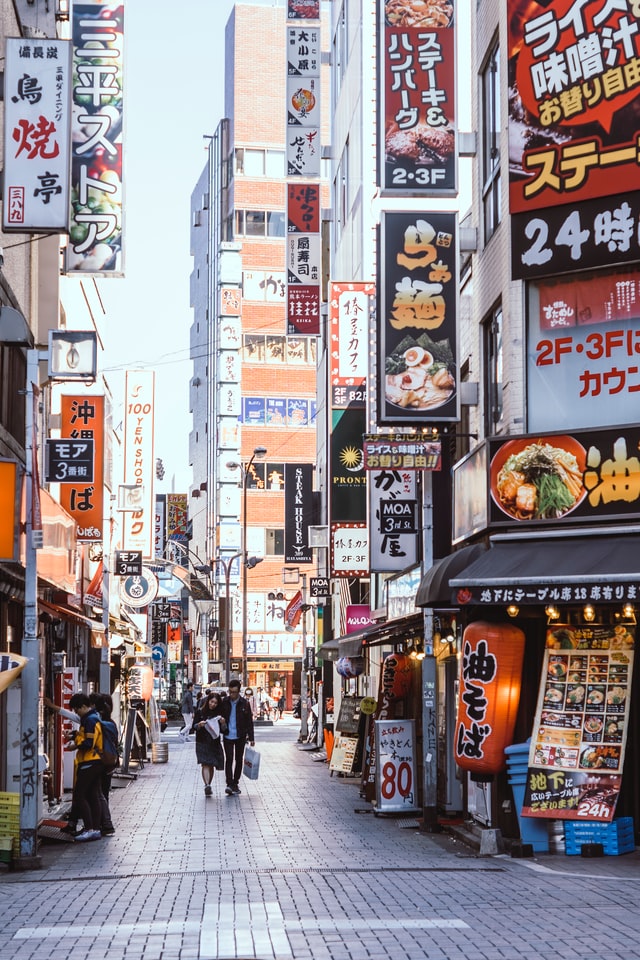
Okay, so maybe I did make some gestures to the wait staff when I couldn’t read the Japanese to order, but nonetheless, this is a great dining experience for the solo traveler in Japan. Enjoying a delicious dinner alone doesn’t feel so lonely when the fellow Japanese customers are having the same dinner for one.
After seeing pictures of starlit, neon Shinjuku, I couldn’t wait to explore it by night. For a female traveler on her own, this is a place in Tokyo to heed caution. As I walked through the bar-lined side streets, people asked me where I was going, and to come into their nightclub. Silently rejecting and making limited eye contact warded them off, and in general, I didn’t feel at risk. Shinjuku is totally worth exploring during the early nighttime, but I would suggest that women be observant if alone around the bar areas.
Day 2-3 tips: Soak in the culture
From rickshaw rides to kitschy souvenir shops, the Asakusa district offers the modern traveler a taste of the old Japan. At the end of the street majestically stands Sensoji Temple. Known to be the oldest Buddhist temple in Tokyo, Sensoji gives a glimpse of 7th century Japan and its traditions. In front of the temple, I soaked in the ancient architecture, breathed in sacred incense and observed hundreds of people paying their respects. This area is full of energy and tranquility, perfect for spending a late morning on your own.
Within walkable distance to Asakusa is the SkyTree observation tower, one of the newest attractions in Tokyo. At a soaring 634 meters, SkyTree is the highest structure in Japan, and the second highest structure in the world. Saturday night draws a high volume of people, but the line is well worth the breathtaking views once you reach the top. I recommend bypassing the fast pass option since the regular admission costs about $20.
I found this to be expensive at first, but once I stepped off the elevator and saw the gorgeous panoramic view of Tokyo, I had absolutely no regrets. Even though most people were in a group, I found it relaxing to spend some solo time above the sprawling city.
When I was planning my itinerary, I knew Harajuku had to be at the top of the list. Maybe it’s thanks to the Gwen Stefani throwback ‘Harajuku Girls’, but I imagined the neighborhood would be overrun with pastel-colored hair, doll-like costumes, and all things Hello Kitty.
While it didn’t immediately live up to the song’s impression, the famous street fashion vibe started to show as I explored deeper into the streets. It called upon my inner-child as I explored the sidewalks dotted with ice-cream stands, accessory stores, and famous crepe shops left and right. It’s the perfect place to indulge a sweet tooth, people watch, and observe youthful subculture.
Meji Shrine
Next to Harajuku’s trendy shopping district, the Meji Shrine sits peacefully within a stretch of forest. After passing through the tall wooden gate, the noise of the city faded away into a tranquil green space. A couple of hours could be easily spent walking on the paths, viewing the gardens, and writing wishes on the special tiles in front of the shrine. Since my original plan to hike a mountain on the outskirts of Tokyo fell through, the Meji Shrine was the perfect place to connect with nature and relax.
D ay 4 tips : Have a night on the town
Robot restaurant.
Giant robots, drumlines, fairy sword fights… was this real life? Dinner at the famous Robot Restaurant left me speechless and wondering if I had been transported from Planet Earth. It’s a dazzling hour-long show complete with an explosion of electricity, dance numbers, and all around zaniness.
I was intimidated to go to the show alone, but being without company was no problem at all. During the intermission, I chit-chatted with people around me (the majority were travelers) and I was too engaged and entertained to notice that I was alone during the actual show. While the price-tag is a little expensive, I found the experience to be completely worth it.
Tucked away in Shinjuku lies Golden Gai, alleyways of tiny old-school bars reminiscent of another time. While some bars are foreigner-friendly, others cater to regular clientele or those who can speak some Japanese. I was fortunate to be invited by my AirBnB host to have some dinner and drinks in this iconic spot.
Without some company or knowledge of Japanese, Golden Gai may be difficult for a solo traveler to explore. Having a kind and hospitable AirBnB host can open doors and give a local’s perspective of a place. This was easily my favorite night in the city, and a great ending to my trip.
Sign up for a FREE online writing workshop here.
Tips for getting around:, avoid taxis if you can help it.
The base rate is around $7.00 and goes up quick. Taking the subway and walking off all the sushi and ramen is a better option.
Download a metro app
Tokyo has many different subways lines, but I found that the Tokyo Metro could get me to most desired places. I downloaded the app and it provided me with me all transfer and distance information.
Have you spent four days in Tokyo? Comment below to share your advice! Photos by Unsplash.

About Kirsti Reese
View all posts by Kirsti Reese
Related Posts
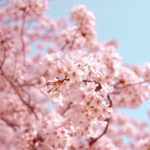
Leave a Reply Cancel reply
Your email address will not be published. Required fields are marked *
© Copyright 2009-2024 Pink Pangea, All Rights Reserved.
JOIN THE NEWSLETTER

The Ultimate Tokyo 5-Day Itinerary

When it comes to deciding how much time to spend in Tokyo, my number one tip is a minimum of 5 days. This ultimate Tokyo itinerary will help you plan your time throughout Japan’s incredible city, giving you the very best experiences.
Over the years I have had the pleasure of visiting Tokyo a handful of times. It’s a vibrant and expansive city — you could easily spend a few weeks here winding through the neighborhoods. From incredible dining and bustling coffee shops to amazing day trips, Tokyo offers a one-of-a-kind cosmopolitan experience.

Tokyo may feel overwhelming to plan for. I remember my first trip trying to narrow down just exactly what to do. There is a lot to choose from but the best part is that you don’t have to do it all. And I’ve narrowed down the very best highlights in a practical itinerary to follow.
If you’re traveling more in Japan, consider including this 5-days as part of a larger Two Week Itinerary in Japan . It’s a wonderful start to any trip here.

The fast-paced city is much more than city culture. You’ll find traditional arts, green spaces, unique dining experiences, and much more. I hope this itinerary guide to visiting Tokyo will help you plan your dream trip. I’m food-focused, inspired by design, and live for local experiences — so this itinerary is all of that and more.
Short on Time? Here Are My Top Picks for the Best Hotels in Tokyo:
- JR-East Hotel Mets Shibuya , for the best location
- Shibuya Granbell Hotel , for the best location
- Hotel Emit , for the best boutique hotel
- Mustard Hotel , for the best modern hotel
Tokyo Travel Tips Before You Arrive

After my last two recent trips, I’ve narrowed down some do’s and don’ts that you’ll want to consider before you arrive in Tokyo. Give this a read to get a sense of what will help plan your Tokyo itinerary.
Consider Booking Your Trip Over a Weekend
Many of the places included below are best visited on the weekends. This itinerary can be done in any order, just be sure to confirm opening times as they may change seasonally. I’ve pulled together day itineraries here in pockets of Tokyo to cut down on travel time.
Make Sure Your Google Maps Are Downloaded Offline
One of the most helpful things you can do is to have your Google Maps downloaded offline for the Tokyo region. In addition to having Google Maps on your phone, there is a feature for offline maps that allows you to have the map accessible without data.
Pre-Purchase Your JR Rail Pass
Odds are you will want a JR Rail Pass for your trip if you plan to do any hopping around, like Tokyo to Kyoto. You have to apply and purchase your JR Rail Pass prior to arrival in Japan . While in Tokyo you can use this JR pass for the JR Lines only across the city and it is even good for the Narita Express Line which takes you from Narita Airport into Shibuya/Shinjuku area.
To be eligible, you have to enter Japan as a temporary visitor (typical visa entry) and be sure to have the entry stamp on your passport. You purchase the JR Rail Pass prior to arriving in Japan, it is sent to your home, and then upon arrival, you go to a JR office (at most stations/airports) and exchange it for your pass.
Read Transportation Tips for Japan for a more in-depth guide on getting around Japan.
Get a Prepaid SIM Card
Wi-Fi is your best friend in Tokyo and I highly recommend getting a Prepaid SIM Card before arrival. The last time I went, we had to do a more complicated SIM Card purchase at a 7/11 store, but now you can pre-purchase this highly reviewed data card on Amazon (which is what I’d do now).
Where to Stay in Tokyo

I highly recommend basing yourself in a single location for your time in Tokyo. Switching accommodations can be a headache with the trains, so picking a home base is helpful. I recommend being based in either Shinjuku or Shibuya . When you pick your accommodations, make sure there is a train station within 10 minutes of walking distance — you’ll use it a lot.
Throughout my trips, I’ve stayed at:
Best Location ($): JR-East Hotel Mets Shibuya

There is absolutely nothing fancy about this hotel. Hotel Mets is purely a logistic choice for accommodations and the location is one of the best. You’re practically inside the Shibuya Train Station, making it very easy to explore Tokyo. The rooms are clean and simple, providing everything you need for a visit. Book the best rates here .
Address: 3 Chome-29-17 Shibuya, Shibuya City, Tokyo 150-0002, Japan
Best Location ($$): Shibuya Granbell Hotel

I have stayed twice at the Shibuya Granbell Hotel , one incredible location again inside the Shibuya Train Station. The rooms are a bit more elevated than the Hotel Mets but not by much. It’s a great second option pending on which style you prefer. Book the best rates here .
Address: 15-17 Sakuragaokacho, Shibuya City, Tokyo 150-0031, Japan
Best Apartment Rental ($$): Designer Flat in Shibuya

One of my favorite stays in Tokyo was this Designer Flat in Shibuya . Sleek, cement walls in a modern building, this was a great stay. It was a bit further from the train station however, we had a more “neighborhood” experience which I personally enjoyed. Book the best rates here .
Other Shibuya Hotels to Consider
- TRUNK HOTEL , for an eco-chic stay
Day 1: Yoyogi Park, Harajuku, & Omotesando/Aoyama
Yoyogi park & area.

There is no better place to start your trip than Yoyogi Park . It is Tokyo’s large green space and home to zen gardens and Shinto shrines. I find it really relaxing to stretch my legs out after a long travel day. Before entering the park, I’d stop into CAMELBACK Sandwich & Espresso for one of their creative sandwiches and grab a coffee to go. If they’re not open yet, go to Coffee Supreme Tokyo around the corner.

Stroll up into the park, and make your way to Meiji Jingu , the stunning Shinto Shrine. You can partake in the water purification ritual, where you ladle water from the fountain into your hands to wash your mouth. As you walk out of the Meiji Torii gates towards Harajuku, don’t forget to stop by the picturesque Meiji Jingue Consecrated Sake Barrels .

Harajuku is a whirlwind of a neighborhood. It really doesn’t come to life until after 10 am, but when it does, it gets jammed packed. The famous Takeshita Dori street runs right through it and you’ll start to see the crowds line up for various food shops. Pop into one of the famous Japanese crepe stores while here for a Tokyo classic.

For lunch, continue through the neighborhood to Sakura-tei Restaurant where you can make your own okonomiyaki. These savory Japanese pancakes are my absolute favorite, made of cabbage and your protein of choice, and it’s so fun to make it yourself. (make reservations.)
Omotesando + Aoyama
Ometesando is arguably the most upscale neighborhood in Tokyo. This is where you’ll find all of your high-end shopping, boutiques, cafe, and restaurants. You can continue into Omotesando right from Harajuku. Stop at Tokyu Plaza Omotesando Harajuku for the famous escalator that is built with geometric mirrors (such a trip).

There are many stores in the neighborhood, like the famous AMORE Vintage for vintage luxury handbags. I love going into B-Side Label for all of the fun stickers you can collect. This whole neighborhood warrants 2-3 hours of just perusing. For caffeine needs, stop into the beautiful Blue bottle in Aoyama or Cafe Kitsune.

To end the day, make your way to Nezu Museum in Aoyama (open Tues-Sunday, 10 am to 5 pm). This is my favorite museum in all of Tokyo — the collection of pre-modern art and the gardens are wonderful. For dinner this night, pre-reserve the best tonkatsu meal in Tokyo at Butagumi . It’s a life-changing meal, and well worth the price.
Day 2: Nakameguro, Shimokitazawa, & Shibuya
Nakameguro to meguro.

In the morning, hop on the train to Naka-Meguro Station. You’ll pop out and walk over to Onibus Coffee for one of the best cups of coffee in town, it’s a peaceful start to the day. From there, make your way to the Meguro River which cuts through the scenic Meguro Neighborhood.

If you time it right, you’ll be treated to the best cherry blossom trees around. (Direction: Sakura Bridge .) This neighborhood is scenic and makes for just a good stroll and look around during the mid-morning to afternoon, I like to grab something quick at a 7/11 like Onigiri.
Shimokitazawa

I’ve included Shimokitazawa on this day as I find you’ll go through Nakameguro and Meguro quite quickly and Shimokitazawa is almost always a bit out of the way to get to anyways. From Nakameguro, it is most convenient to go by car or consider the train which is 1 switch.
Once in Shimokitazawa, I love how quaint and local this neighborhood feels. A few favorites from our past trips have been Bear Pond Espresso for coffee to start our time. Afterward, I love to stroll through the main shopping area called Shimokitazawa Ichibangai Shopping Street which is pedestrian-only (right out of the train station). And do make sure to stop into Fog Linen Work for the best home goods store around!

Late afternoon into evening, head to Shibuya for the bustle of Tokyo city life. It’s so much fun to be here for sunset and into the evening as the lights come on and the city bursts with life. You’ll want to see the famous Shibuya Scramble Crossing , where hundreds of people cross at the same time.
If you’re looking for a view, the newest observation deck to open in Tokyo is the Shibuya SKY Observation Deck , which could be worth adding to the itinerary if you have time. Shibuya is also known for shopping. My must-see store is always Shibuya Loft .

For dinner, there are a few choices. The first is to stay right in the area and get soba noodles at Sagatani Shibuya Dogenzaka . You use a vending machine to purchase your meal choice (ask for help) and they make your noodles right there. It’s in Dogenzaka which is a bustling neighborhood for ramen, gyoza, bars, and nightlife.

If I were to pick, I would head up to FUKU Yakitori for the best meal (in my opinion) in Tokyo. It’s a traditional yakitori-style meal that you’ll need your accommodations to call in to reserve (trust me). I’ve eaten here about a half dozen times. I start and end every Japan trip with a meal here.
Day 3: Tsukiji Fish Market, teamLab Planets, & Ramen
Tsukiji outer market.

The early bird gets the worm here or in this case the best tuna. If you’re looking to watch the tuna auctions, you need to go to the new Toyosu Market (I haven’t been, really for only watching the auctions at 5 am). But if you’re not doing that, the Tsukiji market is where it’s at (train to Tsukiji Station).

You’ll stroll through the markets, shopping for various items from food to cookware. The thing to do here is to eat sushi for breakfast — there are several famous stalls, but my favorite is Sushizanmai Main Branch . It’s a bit hard to find but use Google Maps to find this dozen-seat sushi bar tucked inside for a set menu.
If it’s too busy, really most sushi stalls will be just fine. I’d allot 2 hours or so to peruse around here.
Visit teamLab Planets
One of my favorite things was visiting teamLab’s exhibit and it’s not terribly hard to get to from Tsukiji. The current exhibit open is teamLab Planets , and you’ll need tickets to get in. As of now, the exhibit is set to be open through 2023, and try to avoid peak hours for a visit. Get tickets here .

Late Ramen Lunch
One of our favorite meals in Tokyo is to go for ramen. There are so many spots to choose from and we typically do this the same day as our morning at Tsukiji. You could head into Ginza which is close by to Tsukiji, and our favorite there is Hashigo Ginza Hon-Ten . It will put you in the Ginza neighborhood which is great for a stroll.
If you’re open to going further, Ramen Jiro Mita Honten has been a regular pilgrimage for us. Their hopping bowls of ramen topped with garlic in fatty pork broth are a favorite. The lines are always long, so make sure to get there at least an hour before closing. We’ve never found much to do afterward, but you could go up to Tokyo Tower afterward.
Day 4: Shinjuku & Beyond

There is so much to do in Shinjuku, one of the major hubs in Tokyo for business and dining. When you go is up to you, some like to start in the afternoon and stay through the night. One of my first stops is always Omoide Yokocho , a small alley with several izakaya stalls for food.
Another thing to see in Shinjuku is to see the Shinjuku Gyoen National Garden , great for Sakura season as well. It has 144 acres of botanical gardens, so you could block out an hour or two here.
Come nighttime, the action is all in Shinjuku’s Golden Gai . Four blocks of narrow alleys are filled with bars, pubs, and taverns. It’s a bit wild come night, so be mindful when you visit.
Day 5: Take a Day Trip
There are several wonderful day trips to consider from Tokyo which is quite easy as the trains are so well connected. On the final day, you could consider taking one or add a few things from the bottom list. I always leave the final day to be open pending what we want to do.
Some popular day trips:
- Hakone , for the lake, museums, and nature (1.5-2 hours)
- Odawara Castle (40 minutes)
- Nikko National Park , for time in nature (2 hours)
- Kawagoe , for traditional Edo-period town (1 hour)
Other Things to Consider Adding to Your Itinerary

- Akihabara , for all the famous arcade game stores, cat cafes, and more.
- Asakusa , for cheap eats
- Sensō-ji , for Tokyo’s oldest temple
- Ueno Park , for a beautiful green park
- Imperial Palace , for scenic gardens and residence of the emperor of Japan
More Helpful Japan Posts
The Ultimate Two Weeks in Japan Itinerary: Where to Visit Top Tips Before Visiting Japan The Alternative Guide to Tokyo Visiting the Kiso Valley The Ultimate Guide to Kyoto 20 Best Restaurants in Kyoto
Save This Post for Later on Pinterest

PS — Are You Booking a Trip Soon? Use My Booking Checklist!
These are the sites I use most to book my own trips. Using the links below is a great way to support Bon Traveler’s travel journalism at no extra cost to you . If you need help organizing your itinerary, get my free travel itinerary template here .
1. Book Your Flights
I use Skyscanner to find the best flights. It searches 100s of airlines and websites across the globe to ensure you’re not missing out on any route options or deals.
2. Book Your Accommodations
I use Booking.com for hotels and guest houses. They have the biggest inventory and consistently offer the best rates.
3. Book Your Tours & Experiences
I use Viator or Get Your Guide to find the best tours and experiences. They are my favorite tour search engines. I always check both as their inventory varies depending on the destination.
4. Book Your Rental Car
Self-driving is the best way to explore most destinations. I use Discover Cars for our rental cars, select full coverage insurance, and opt for a reputable company like Alamo, Hertz, or Sixt.
5. Don’t Forget Airport Lounge Access
I use Priority Pass to gain access to 1,400+ VIP lounges and airport experiences worldwide. The Priority Pass app is the first thing I check when I have a layover. I’ve been a member for over a decade, and having a comfortable place to relax before and between flights makes air travel so much more enjoyable.
6. Don’t Forget Travel Insurance
I never leave the country without travel insurance. It provides comprehensive protection in case anything goes wrong (ie. illness, injury, theft, and cancelations, etc.). I use it frequently for my travels to stay protected.
My favorite companies that offer the best coverage and rates are:
- World Nomads (best for all-around)
- Safety Wing (best for frequent travelers)
Xx, Jessica
Related Posts

A Road Trip Guide to California’s Wild North Coast

The Ultimate 7-Day French Riviera Itinerary

The Ultimate London 3-Day Itinerary
When you say ‘stay within 10 minutes of a train station’ do you mean a local’metro station’ or a ‘normal’ train station ?
Great Itinerary, Thanks for sharing!!!
Write A Comment Cancel Reply
Save my name, email, and website in this browser for the next time I comment.
- Cayman Islands
- Dominican Republic
- Puerto Rico
- South Dakota
- Washington DC
- Czech Republic
- Netherlands
- Switzerland
- French Polynesia
- Travel Tips
- Family Travel
- Accommodations
- Packing Lists
- Photography Tips
- Northern California Guide
- San Francisco
- Lightroom Presets
- Rent Our Home For Photoshoots
- California Map
Type above and press Enter to search. Press Esc to cancel.
- Search Please fill out this field.
- Manage Your Subscription
- Give a Gift Subscription
- Newsletters
- Sweepstakes
- Destinations
How a 2-week Trip to Tokyo Changed My Mind About Solo Travel
As an extroverted traveler, I learned to appreciate sitting in silence.
:max_bytes(150000):strip_icc():format(webp)/SophieDodd-29f8105329084ddbafdf19974fa43b45.jpg)
Courtesy of TeamLab Planets Tokyo
I’m sitting alone at a record bar in Tokyo , sipping a dirty martini and willing someone to talk to me. It’s been more than 24 hours since I’ve spoken out loud; body language and the bizarre magic of Google Translate have been my only modes of conversation. As a hyper-extrovert, I’m going a little wild — and it’s more than just the 'tinis talking (if only they would).
"I really like the music," I type on my phone, watching my words reappear in Japanese and wishing my personality translated as easily. I slide my screen across to the bartender with a pitifully earnest facial expression, clearly craving human interaction. He offers me a smile and quickly returns to garnishing a cocktail. I want to say, "Where do I go to make friends?" I want to say, "This is my first time traveling alone and I’m a little lonely, but mostly awestruck by this kaleidoscopic city, and I wish I could talk about it in a non-computer generated voice." Instead, I open my mouth and tip back the last of my drink, crossing my fingers into an X because the internet told me that’s how to signal for the check here. In Japan, my words and gestures are not my own, and yet I feel closer to myself than I have in months.
I set out on my first-ever solo trip a week ago — 12 days in Tokyo and Kyoto , where I know no one and can’t speak a word of the language — in a bid to push myself as far out of my comfort zone as possible. I’ve been traveling full-time for a year, primarily with friends and family in French- or Spanish-speaking places where I have some linguistic leeway. Most of my trips have been with a parent , partner, or close friends, meaning I’ve rarely found myself alone.
That hasn’t bothered me much: I’ve always preferred my alone time in brackets. I’m glad to spend the day writing or wandering on my own, so long as I know I’ll meet a friend that evening. So when I decided on nearly two weeks alone in Tokyo to celebrate my 29th birthday, I worried about the open-endedness of all that me time. What if I don’t like myself as much as I like my friends? What if I’m a less savvy traveler when I don’t have someone to explore with? And worst of all, what if I get overwhelmed by all the restaurants I’ve starred on Google Maps and don’t have someone to help decide where we should eat? The responsibility of being entirely in charge of my own itinerary seemed daunting.
Sophie Dodd/Travel + Leisure
But traveling alone ended up being one of the most fulfilling, empowering experiences I’ve had during this nomadic year. Alone in a country and in a language I had absolutely no bearings in, I started to reconnect with myself. The endless sprawl of Tokyo meant I could never "see it all," so I quickly gave up on the instinct to pack things in and instead let myself be carried along by the current, taking long, meditative walks through old-school neighborhoods like Yanaka and along the river in Nakameguro. Moments of loneliness were overshadowed by unexpected sparks of connection, like swapping travel stories at a sushi counter or hopping through wine bars with local friends I met on my last night.
For all the ways solo travel intimidated me — and for all the moments I wished I had someone to talk to and process the experience with — it ultimately gave me more confidence in myself as a traveler, helping me feel simultaneously more self-sufficient and open to relying on the kindness of strangers. It taught me that certain things — like an umami-packed first bite of uni or the musical creaks of 400-year-old floorboards in a Kyoto castle — can’t be translated, so sometimes it’s best to put down your phone and just appreciate them in silence.
If you’re planning a trip to Japan , here are some of the places in Tokyo and Kyoto that changed the way I think about dining, sleeping, and wandering on my own.
After touching down in Tokyo in the evening, I headed straight to Aman Tokyo , a secluded oasis tucked away from the city’s bustle. After crashing early, I woke the next day at sunrise and made a choice I would never have dared to with a travel companion: I didn’t leave the hotel. That’s right, I flew 14 hours to spend an entire day inside. Hear me out: A few too many recent attempts at overextending myself at the start of a trip had convinced me to take it easy on day one, allowing myself to adjust to the jet lag and get ahead of some deadlines. And it wasn’t exactly a chore to hole up in my sun-drenched, 1,517-square-foot suite with beautiful blonde wood, delicate washi paper doors, heated bathroom floors, and panoramic views of the glittering city from the bathtub.
After knocking out some work, I made my way to the hotel’s heated pool, where I had tantalizing skyline views entirely to myself. Already starting to relax, I indulged in a restorative Signature Spa Journey — a full-body scrub and massage that erased any damage my flight had done — before taking full advantage of Aman’s luxurious spa amenities , including an onsen-style hot bath and a steam room. It was the best thing I could have done for myself to start the trip on a positive note, and it taught me an important lesson from the get-go: Listen to your body. I knew I needed a day to reset, despite the voice in my head telling me I should be exploring immediately. When you’re traveling with others, compromise is the name of the game; alone, there’s no need to people please.
The Tokyo Edition, Toranomon
Nikolas Koenig
There’s perhaps no better view of Tokyo than from one of the 206 guest rooms and suites at The Tokyo Edition, Toranomon . Designed by Japanese architect Kengo Kuma, the Ian Schrager hotel is as dazzling to look at as it is to look out of: Rooms are elegant and understated, with minimalist furnishings in natural wood tones and luxuriously comfortable beds. Suites on the upper levels boast their own private terraces, all the better to admire the stunning skyline. I spent my last night here, wrapped in a plush bathrobe and gazing out at the Tokyo Tower as I reluctantly packed my bags.
OK, I lied — I know exactly one person in Tokyo, and they happen to be the chef of one of the coolest farm-to-table restaurants in the city. I met California native Katy Cole in France last fall, when we worked the wine harvest in Chablis together. When she suggested I look her up if I were ever in Tokyo, the idea sounded so far-fetched that I immediately put it out of my mind — until a few days before my trip, when I asked if she’d be free to get together and, ideally, eat. We ended up spending several days together, including a night at her charming, intimate restaurant in Tokyo’s Meguro neighborhood.
It’s hard to overstate Locale 's cozy and convivial atmosphere: Sitting at the counter around her open kitchen, it felt like pulling up a stool at a friend’s home — one who has excellent taste and an extensive knowledge of local Japanese produce, which is front and center on the rotating chalkboard menu. Alongside a solid selection of natural wines, I tried everything on the menu that night, from an avocado and French lentil dish spread atop a shock of pink yogurt (colored by the Japanese pickle shibazuke ) to roasted pork with local cabbage. The meal ended with a homemade buttermilk pecan cake drizzled with a crème anglaise so good that it brought tears to my eyes — or maybe that was just my delight at having found such a wonderful new friend in Katy. (But seriously, the cake was fantastic.)
Ginza Sushi Ojima
One of the worst parts of traveling alone is not having someone to share food with. I love eating by myself, but as just one person, I can’t try as many dishes as I would with a companion. This dilemma was solved entirely by my first-ever omakase experience, a meal built entirely around single-bite courses. Walking into Sushi Ojima in Ginza, which is hidden in a nondescript office building, I felt like I’d found my way into a secret club. I hardly knew what to expect: I’d pre-paid for a 13-course nigiri lunch at the intimate 12-seat counter and I’d brought a book, thinking I’d want to keep myself entertained, utterly unaware that I was about to witness one of the most beautiful works of culinary theater I’d ever seen.
With fluid movements, the chef sliced fresh cuts of fish into sculptural perfection, dabbing on freshly grated wasabi or sprinkling sakura salt before pressing them into mounds of rice. I was mesmerized. I was drooling. I was unsubtly eyeing the Japanese couple next to me each time we received a new course, trying to gauge if I was meant to use chopsticks or my fingers. It was one of the moments I most wished I could communicate out loud about what a life-altering moment my taste buds were having, as my mouth closed around a sunset-colored squid and I ate a veritable school of tiny white fish with pink eyes.
Afternoon Tea at Four Seasons Hotel Tokyo at Otemachi
Tea is an indelible part of Japanese culture, and getting to taste a variety during Sakura Afternoon Tea at the Four Seasons Hotel Tokyo at Otemachi was a palate-expanding experience. While the sweet and savory sampler was delicious — raspberry and pistachio opera cakes and tiny bites of duck breast wrapped in a cucumber crepe with maple cream — it was the tea that delighted me the most. That, and the view of Mount Fuji in the distance.
Curry Spice Gelateria Kalpasi
Almost impossible to find, this curry shop and gelateria (a culinary combination I was thrilled to discover existed) sits at the end of a small alley in the ultra-hip Shimokitazawa neighborhood. To order, you warily eye a vending machine labeled with the Japanese menu, then look positively helpless until someone comes and kindly points out that you select the top row to order either two or three of the daily-rotating curries and a fragrant mound of jasmine rice; the next row includes can’t-miss sides like Japanese pickles and coconut sambol ; the third is to add on gelato. While the curries are mouthwatering, the gelato is what’s truly worth writing home about: They’re pepped up with various curry spices, so you can expect flavors like coconut with charred mustard seeds and kaffir lime, chocolate and Sichuan pepper, or mascarpone with cardamom and lassi.
TeamLab Planets Tokyo
There are few places that combine culture with unbridled childlike joy like TeamLab Planets . The interactive museum — a favorite of celebrities like Justin Bieber and Dua Lipa — is a full-body experience that begins by removing your shoes and shuffling up a vertical waterfall. Making my way through the exhibits, I was struck by how much fun everyone was having. Sure, it’s an Instagram hot spot, but in between snapping curated photos, every single person was grinning and looking around the space with wonder.
It was invigorating to watch adults be so, well, silly — and how could you not be when you’re asked to crawl alongside a group of strangers on a mirrored floor as a ballet of fragrant orchids dances overhead? Or, when you’re told to bump into enormous color-changing globes? Each room holds new visual and tactile surprises, be it the Infinite Crystal Universe — a dazzling, Kusama-esque mirrored room of LED lights — or the shin-deep pond of warm water, where vibrantly projected koi fish interact with bodies in real time. The museum is a memorable experience that’s a must-see in Tokyo.
After picking up a Japan Rail Pass at Tokyo Station — which allows unlimited travel on the Shinkansen, the high-speed bullet train, to just about anywhere in Japan for a set duration of seven, 14, or 28 days — I snagged a seat on the next train to Kyoto (be sure to ask for a seat with a view of Mount Fuji).
Two hours later, I was met by a driver from Aman Kyoto , who whisked me 30 minutes north to the meditative retreat set in a lush, secluded garden that’s been extraordinarily maintained for decades. The property is a natural marvel, carved out with mossy stone paths studded with tall trees and lit by candles at night. The ryokan-inspired rooms are a striking marriage of modern design and ancient tradition, with floor-to-ceiling windows that give way to a view of the green glades. With two restaurants and an indoor-outdoor onsen, I found it hard to tear myself away.
Minimalist and peaceful, my room — in particular, the enormous hinoki bathtub — was the perfect place to rest and reset after long days of touring temples in Kyoto. While I was mesmerized by all of the famous sites — Nijō Castle, Daitoku-ji Temple, Arashiyama Bamboo Grove, and Fushimi Inari were a few favorites — I was most moved by the private temple tour and tea ceremony the hotel organized for me. This offered unparalleled access to a centuries-old tea room and a one-on-one lesson with a Japanese tea master.
Sake Bar Yoramu
For a crash course in sake, make a pilgrimage to Yoram Ofer’s exceptional eight-seat bar in downtown Kyoto. As a natural wine lover with no knowledge whatsoever of the fermented rice beverage, I was enthralled when I walked in and found him patient and passionate in his explanation of flavor profiles and producers.
He opened the bar back in 2000 and has been aging much of his sake since then, serving his vibrant, invigorating beverages by the glass so that you can taste a wide variety — everything from fruity, unpasteurized styles to ambered vintages — a number of which he heated up for me to try side by side.
Related Articles

The Perfect 3 Days in Tokyo Itinerary
- Last Updated: March 30, 2024
Headed to the Land of the Rising Sun and looking for an itinerary for the capital? Read on for a jam-packed guide on how to spend 3 days in Tokyo!
Planning a trip to Tokyo can be a bit intimidating. With over 38 million people in the metro area, this is the most populous city in the world.
You know those videos of people being packed like sardines onto a subway car? Yeah, they were probably taken in Tokyo!
The Japanese capital is more like 23 cities, as each of the special wards offers something different. While Asakusa is very traditional, Harajuku is the place to be if you want to take in Japan’s youth culture.
In such a massive city, you won’t be able to see it all in just 72 hours. That being said, you can cover a lot of ground on a Tokyo itinerary if you have a solid plan.
READ MORE: Check out our list of the best things to do in Tokyo !
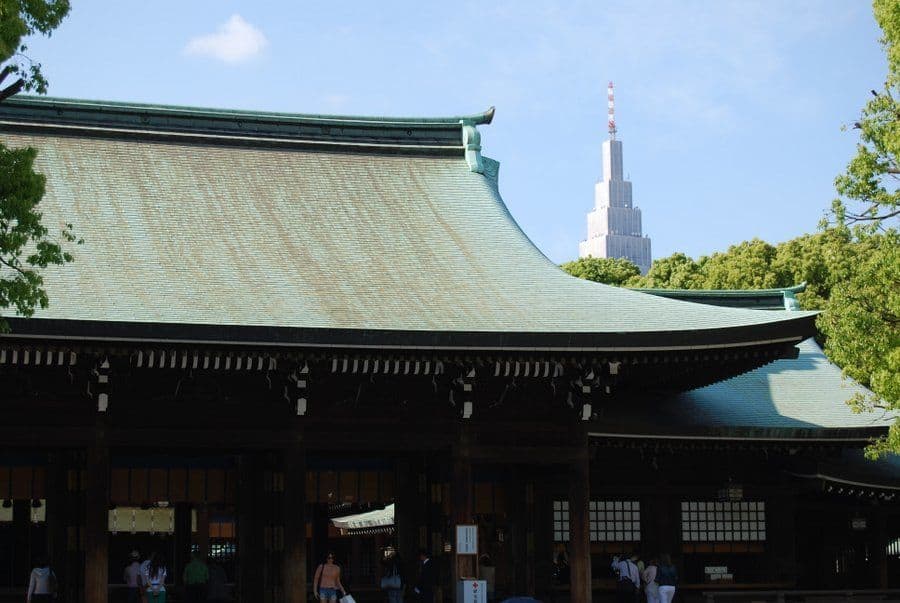
Table of Contents
Nakamise Shopping Street
Senso-ji temple, choose your own adventure, museum of your choice, otaku culture, toyosu fish market, yoyogi park, meiji shrine, takeshita street, tokyo metropolitan government building, imperial palace, roppongi hills, tokyo tower, shibuya crossing, mario kart irl, best hostel in tokyo – grids, best mid range hotel – hotel ryumeikan, best luxury hotel – mandarin oriental.
The first thing you’ll want to do when figuring out what to do in Tokyo in 3 days is which wards you’re most interested in.
You can visit a couple of them on each day but there’s no way you’re hitting them all in such a short time!
Thankfully Tokyo has a vast and efficient public transportation system to help you get around. You can even take day trips to various cities around the Tokyo Bay area.
The underground network is so expansive here that the map looks like some kind of multi-tentacled anime creature.
You can really go anywhere in the city on the Tokyo metro subway lines.
READ MORE: Here’s our brand new guide to travelling in Japan to help you plan your next big trip!
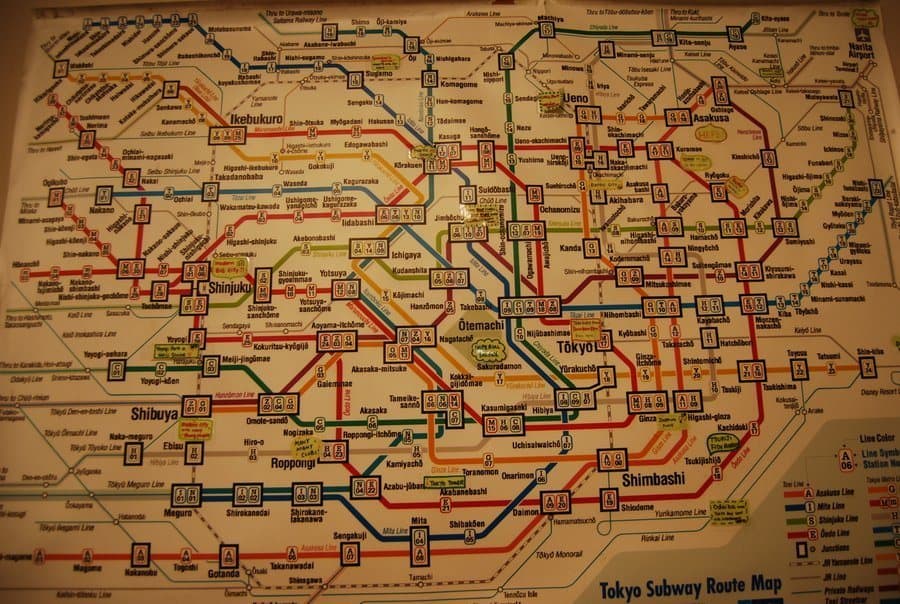
Unfortunately, there are several different rail systems operating here. For a 3 days in Tokyo itinerary, your best bet is picking up one of the 72-hour Tokyo metro tickets .
The Klook website is the cheapest place to buy these, a bit cheaper than buying them at the station.
Another good tip is to pick up a Suica IC card . These are what all the locals use to pay for, well, just about anything.
Buses, metros, vending machines, 7/11, these little pre-paid cards are essential to making your time in Tokyo much less complicated, so you’re not constantly trying to find correct change.
Do yourself a favour and buy one. You’ll thank me later.
BONUS – Booking ahead of time ensures you won’t miss out on the tour, and get the best price too! And just for NOMADasaurus readers, if you use the Klook discount code “NOMADS10” on the website when checking out, you’ll get $10 off your first booking!
Now it’s time to decide what to do in Tokyo in 3 days. In my humble opinion, it’s good to have a list of places you want to check out but also remain flexible.
You will most definitely get lost in Tokyo. Chances are you’ll see, hear, or smell something interesting and take a detour. It’s best to go with the flow, people!
I’m going to provide you with some ideas on what to see in Tokyo in 3 days, but I’m also going to let you choose your own adventure by offering multiple options.
If you’re ready to get lost in translation, read on for an epic 3 days in Tokyo itinerary.
This trip assumes you’re visiting Tokyo on the weekend, so you’ll want to double-check the opening days and hours of the attractions listed if you’re headed there during the week.
READ MORE: Don’t miss out on these best day trips from Tokyo !
Day 1 – Morning
While you may be tempted to dive off the deep end and crush a massive sushi breakfast on your first day, I suggest saving that for day two.
If you’re wondering what a traditional Japanese breakfast is, people usually eat rice, miso soup, fermented soy beans (known as natto), grilled fish, and some pickled vegetables.
People usually wash it down with green tea rather than coffee.
Once you’re full and caffeinated, it’s time to get on with your busy Tokyo itinerary.
READ MORE: Don’t miss our list of the best places to visit in Japan .
On my first visit to Tokyo, I started out in Asakusa. That’s exactly where I’m sending you to begin your 3 days in Tokyo itinerary.
Take the tube to Asakusa station and drop into the tourist information centre if you want to have a look around there first.
Not only are the staff here super friendly and helpful, but you can also head up to the 8th floor to enjoy an amazing (and free!) view.
Heading north, the first thing you’ll see is the Kaminarimon Gate (Thunder Gate).
The traditional gate has a massive lantern in the middle and two guardian statues on either side.
This is one of the most popular places to snap a photo in all of Tokyo, so get your camera ready!
Next up, take a walk up Nakamise Shopping Street. This bustling outdoor market is full of vendors selling traditional snacks as well as souvenirs.
If you wanted to pick up a kimono or some ningyo yaki – a sweet cake filled with red bean paste – this is the place to do it.
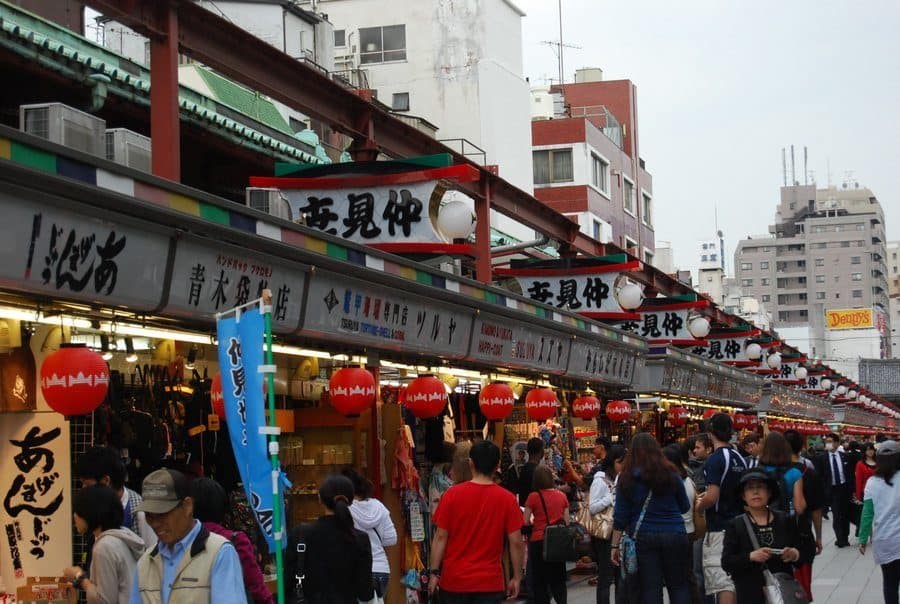
When you walk to the end of the shopping street you’ll find Senso-ji, Tokyo’s oldest temple.
Built way back in the 7th century, this Buddhist temple is an important piece of the city’s history.
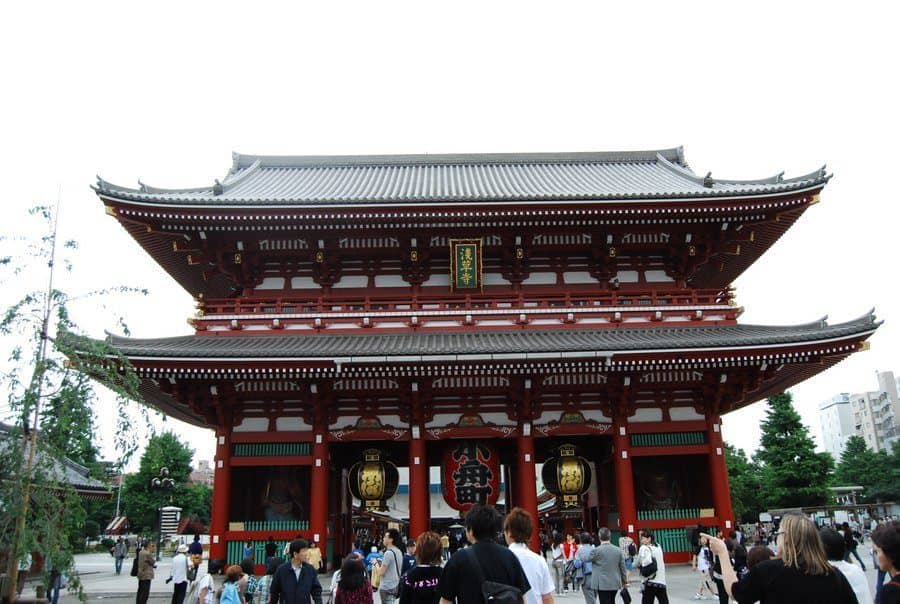
It’s definitely one of the top things to see in Tokyo in 3 days, and more than 30 million people visit each year.
Go ahead and linger a bit to take it all in all of the sights of the temple, but don’t forget that you’ve got a busy 3 days in Tokyo ahead of you!
Remember how I said I’d let you choose your own adventure for your 3 days in Tokyo?
Well my friends, you’ve got quite a few options once you leave the temple. Here’s a quick recap of what you can do in the area:
- Take a rickshaw tour of Asakusa
- Walk around the riverside Sumida Park
- Take a Sumida river cruise
- Head to the top of the Tokyo SkyTree (cheapest tickets for this is on Klook)
- Visit the Asahi Beer Hall (it’s not too early for a cheeky brew, is it?)
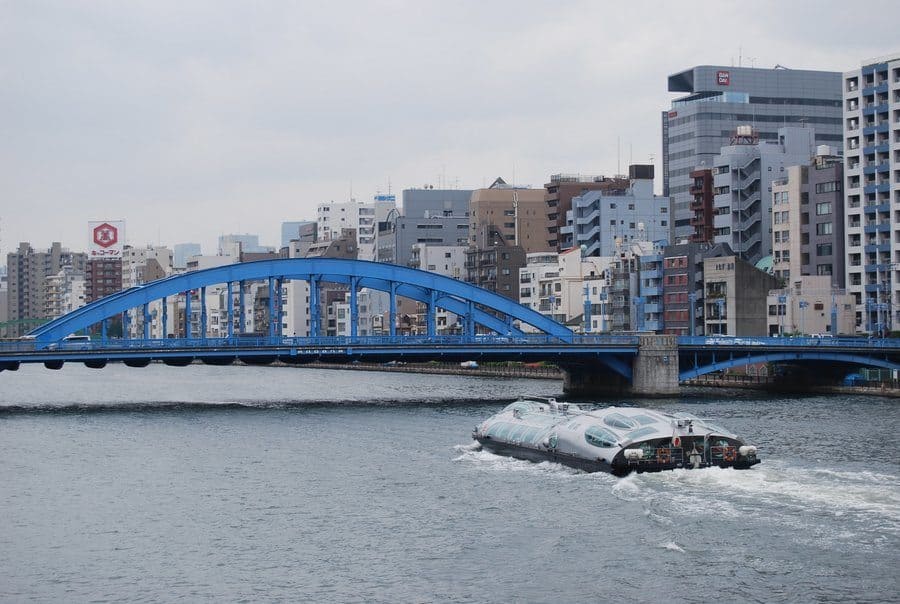
Before we move this 3 days in Tokyo party along, you’ll want to grab some lunch.
There are tons of options in Asakusa, including plenty of excellent ramen shops.
Day 1 – Afternoon
After some lunch – and maybe a cup of coffee with feline friends in a cat cafe – it’s time to move along with your Tokyo in 3 days itinerary. Hop back on the train and cruise over to Ueno Station for our next stop.
There’s perhaps no better place to be on a nice day in Tokyo than Ueno Park.
The park is especially lovely during the cherry blossom season, which happens from late March to early April.
Ueno Park has so much going on that you could honestly spend your entire 3 days in Tokyo here.
Obviously, you’re not going to do that, so you’ll have to be a bit picky about what you choose to do.
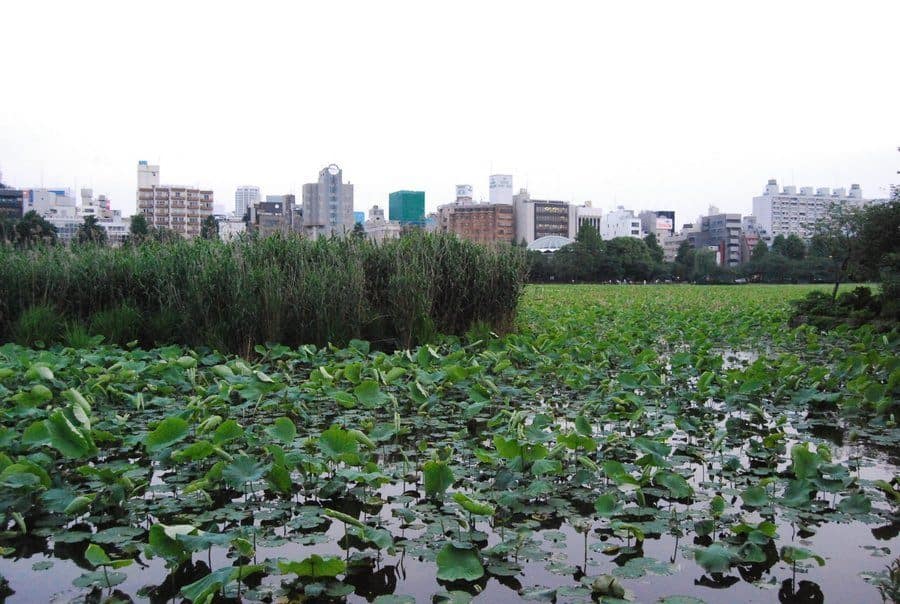
Here are just a few of the options:
- Take a boat around Shinobazu Pond
- Visit the Ueno Zoo
- See the statue of Saigo Takamori (a famous general)
- Check out the Toshogu Shrine
- Drop in the Tokyo Culture Hall
- Hit one of the many museums
- Book a guided tour of the park if it’s cherry blossom season!
Ueno Park is home to several fantastic museums. With just 3 days in Tokyo, you’ll probably have to choose just one.
In my humble opinion, I recommend going to the Tokyo National Museum.
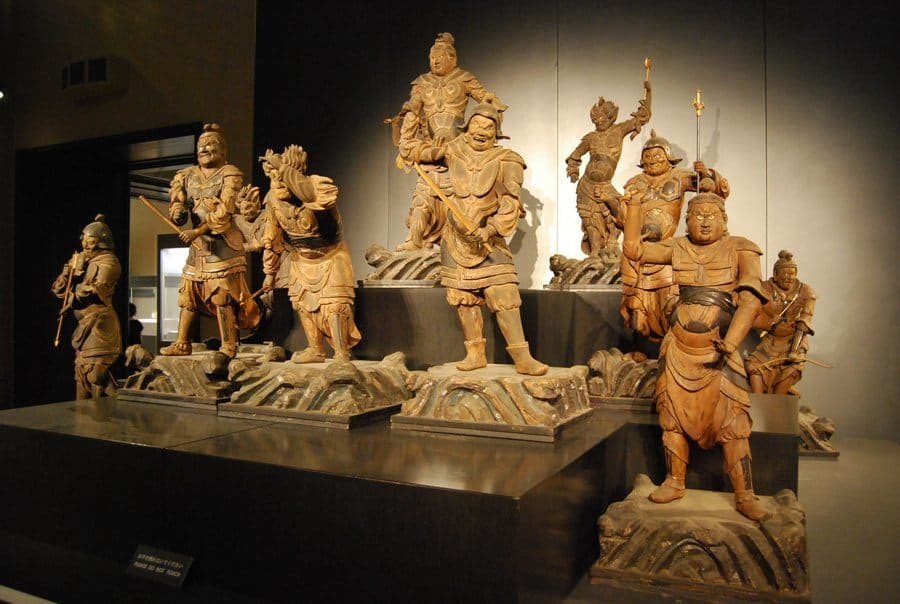
This museum has an impressive collection of over 100,000 pieces spread across several buildings.
It’s the largest and oldest museum in Japan and definitely a must-see in Tokyo in 3 days.
The Tokyo National Museum costs 620 yen to enter.
There are a few art and science museums to see when you visit Tokyo if you’re more into those than history.
You can check out the Tokyo Metropolitan Art Museum, the National Science Museum, the teamLab Borderless digital art museum, or several others.
Day 1 – Evening
As I’m sure you’re realizing by now, this Tokyo in 3 days itinerary is a doozy! Make sure you take some time here and there to kick back on a park bench.
Once you’ve caught your breath, get back out there and keep this 3 days in Tokyo train rolling.
After taking in a bit of traditional Tokyo, it’s time to check out the modern side of the city.
The perfect place to do that is Akihabara, which is just a short walk or train ride from Ueno Park.
This area was named after Akiba, a deity that can control fires. After a fire destroyed the area in the 1800s, the people here built a shrine dedicated to Akiba in hopes of preventing future fires.
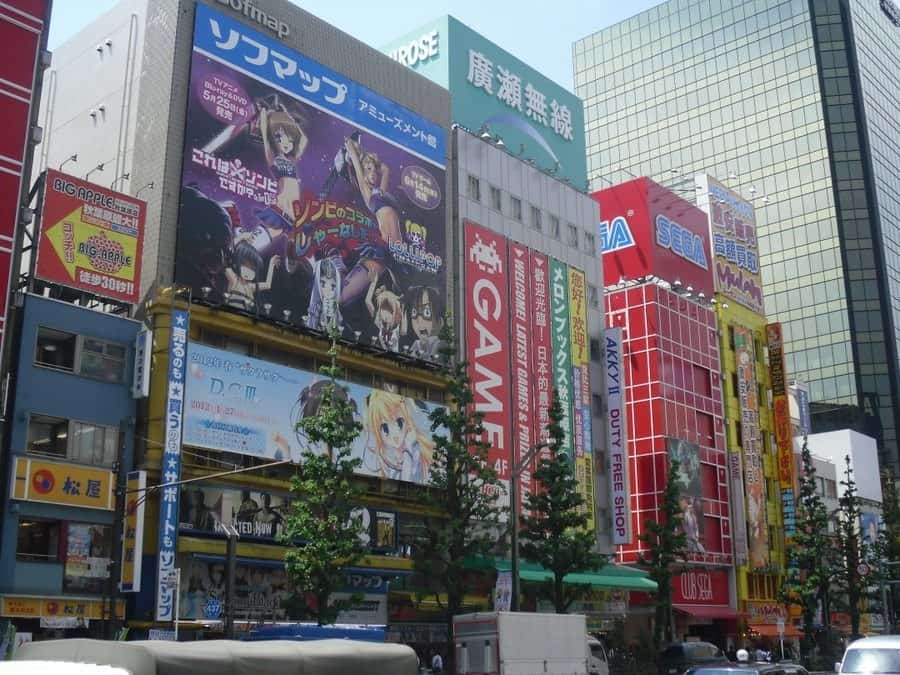
You won’t find the shrine here anymore, but you will find a dizzying array of electronic shops.
Here you can peruse computers, phones, cameras, TVs, and much more. Akihabara has definitely earned its nickname – “Electric Town.”
Even if you’re not shopping for electronics, it’s worth visiting Akihabara over your 3 days in Tokyo just to experience the unique otaku culture.
In Japanese, otaku is a somewhat derogatory term used to refer to someone who is a huge nerd. We’re not talking just any kind of nerd, though. Otaku are people who are obsessed with anime and manga.
People have come to embrace their otaku status and wear it proudly. This part of Tokyo is basically a mecca for otaku and very much caters to them.
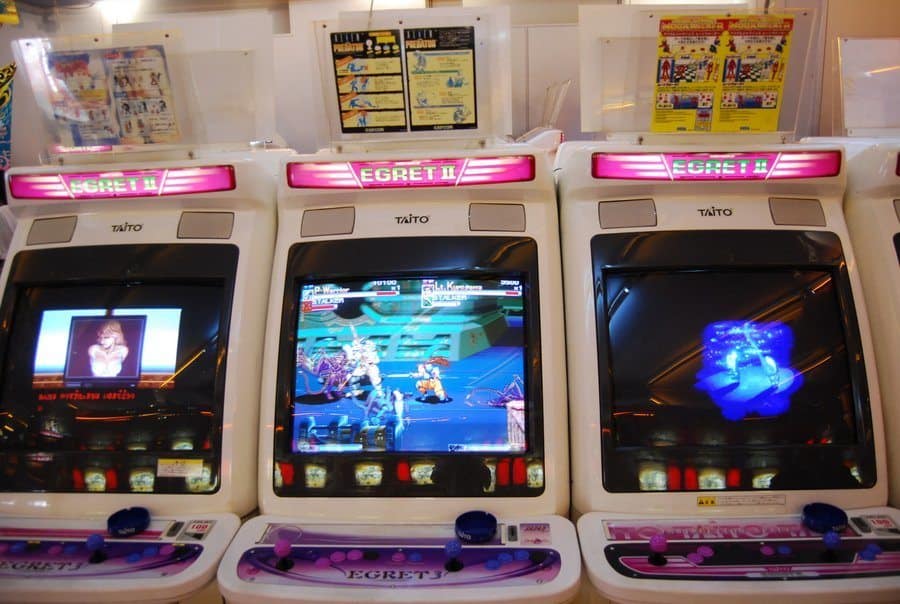
Walking around the streets of Akihabara is like being inside of a video game or comic book.
There are anime and manga shops and images all over the place, as well as tons of cosplayers handing out flyers for places like maid cafes.
“What is a maid cafe?” you may be asking yourself. It’s pretty simple – it’s a cafe where girls dress up like maids and treat customers like their masters.
If it sounds weird, that’s because it is. Embrace the odd during your 3 days in Tokyo, people!
READ MORE: Travelling elsewhere? Check out our list of the best things to do in Japan .
While you’re in the area, you’ve got to drop into a pachinko parlour. Pachinko is basically Japan’s answer to the slot machine, and it’s all the rage here.
These machines function as gambling devices, even though gambling for money in Japan is illegal.
The way they skirt the law is by having players win pachinko balls that are then exchanged for prizes.
There’s an exchange separate from the parlour where you can then swap your prize for some cold hard cash.
Trying your hand at a game of pachinko is for sure one of the top things to do in Tokyo for 3 days.
It’s time once again to choose your own adventure! After an exhausting first of 3 days in Tokyo, it all depends on how much gas you’ve got left in the tank and what your priorities are for day two.
Your options for dinner in Tokyo are basically endless. You might want to try out one of the fun conveyor belt sushi joints, find a place to chow down on wagyu beef , or search for some of the city’s best street food.
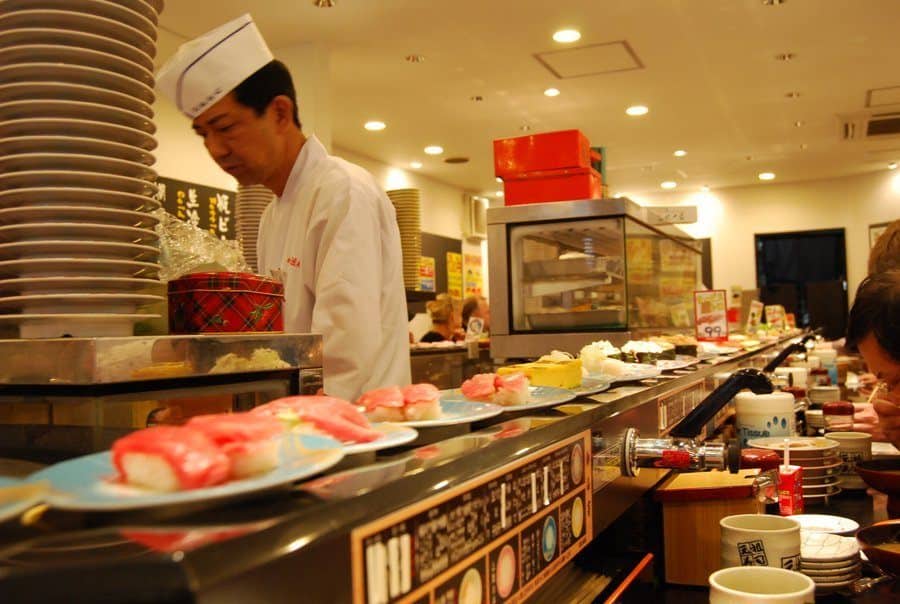
Whether or not you dabble in Tokyo’s nightlife by going on an epic pub crawl is really up to you. If you hope to catch the auction at the Tsukiji Fish Market, you’ll probably want to call it an early night.
That’s because you have to get there around 5 in the morning if you want to grab a spot!
If you could care less about watching people throw fish around, then get out there and rip it up on a night out in Tokyo!
I honestly haven’t experienced much of the nightlife there yet, but this is an excellent guide to drinking in Tokyo .
Day 2 – Morning
If the Toyosu Fish Market is on your list of things to see in Tokyo in 3 days, then day two starts really early for you!
Should you go this route, you might want to make sure you’ve got a coffee and a snack ready to get you going.
I should note that Toyosu is relatively new. Many guides to Tokyo list the Tsukiji Fish Market, but the wholesale market relocated in October 2018 for a variety of reasons.
These days, the tuna auction takes place between 5:30-6: 30 AM.
If you’re cool watching from the upper-level observation area, just show up a few minutes early. Just be warned that you might not see very much from here.
Those who want to watch from the lower floor need to apply in advance. To do so, head to the official website and scroll to the bottom for the English option.
Applying doesn’t guarantee you a spot, as it’s a lottery system. If you’re lucky, you’ll get notified about a week in advance.
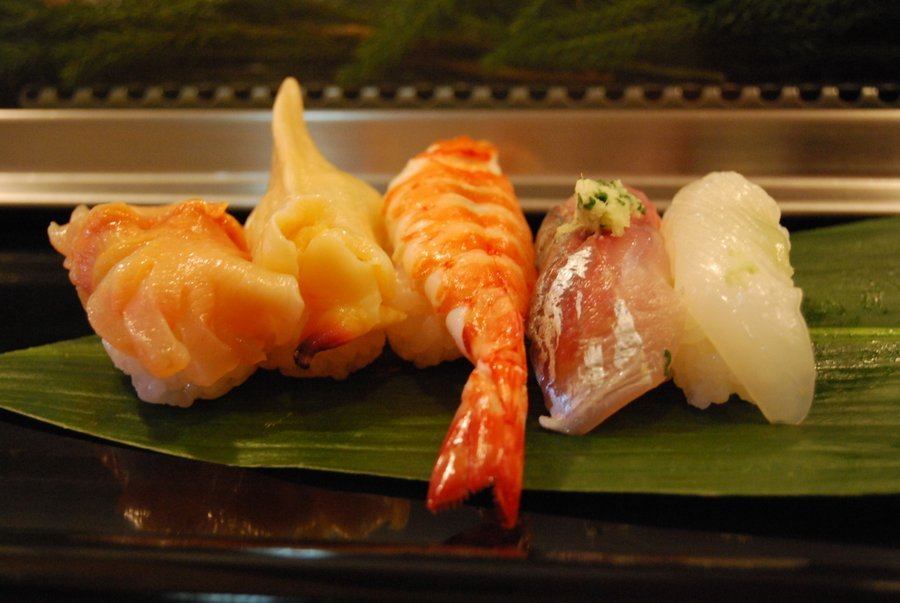
You don’t have to see the auction to enjoy a visit to the fish market. It’s interesting just walking around there for a bit and worth the trip just to smash a massive sushi breakfast in one of the many restaurants.
This is definitely one of the top things to do in Tokyo in 3 days!
For all the relevant information about visiting the new fish market and the changes that have happened since the move, I highly recommend reading this article .
Day 2 – Afternoon
After walking around a fish market, you’ll probably want to swing back to your accommodations for a shower.
If a sushi breakfast isn’t your thing, now is the time to grab some food and fuel up for the second of 3 days in Tokyo.
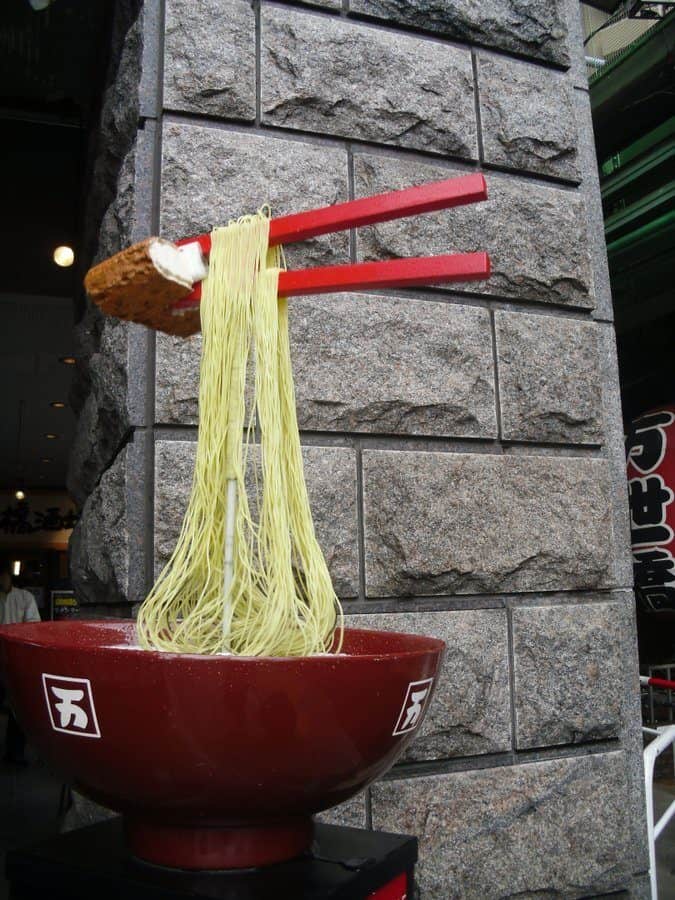
When you’re ready to rock, hop on the tube and head to Harajuku Station. This part of Tokyo is a centre of Japanese youth fashion and culture and a really fun place to explore.
If you need a snack or a pick-me up, there are a few cafes right around the tube station, including yet another cat cafe. They’re kind of a big deal here…
Before you check out the trendy side of Harajuku, head into Yoyogi Park.
Yoyogi Park is one of the largest parks in the city, full of ponds, fountains, and wide open green spaces.
The highlight of visiting Yoyogi Park is the Meiji Shrine. It was built back in 1920 to honour Emperor Meiji.
He passed away in 1920 after seeing Japan through a time of great change. It’s actually Emperor Meiji who is credited with opening the Land of the Rising Sun to the west.
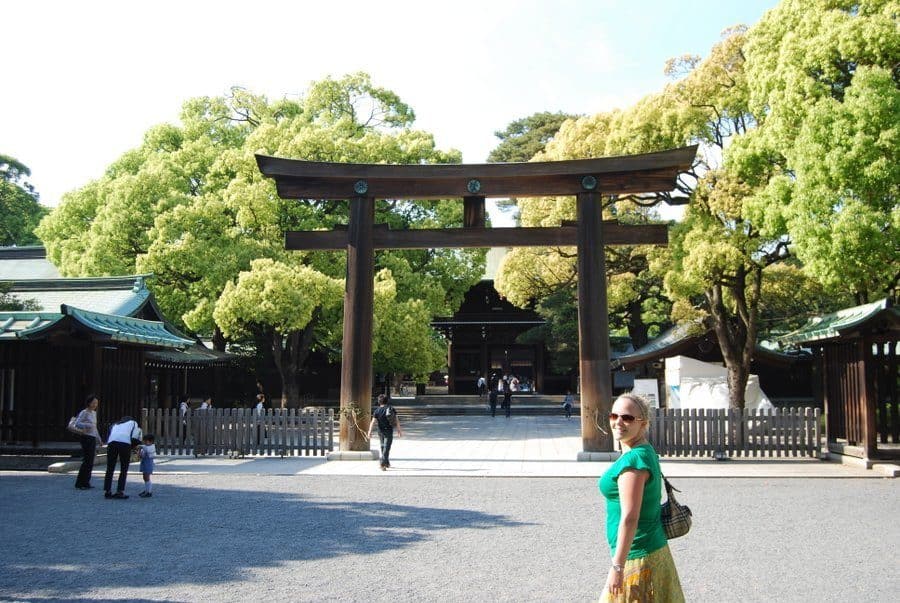
Meiji Shrine is a peaceful, beautiful place to spend some time. To access the shrine, you walk up a tranquil path and through the traditional torii gate.
In a city as big and bustling as Tokyo, it’s amazing how easy it is to escape into nature.
After visiting the shrine, head out of the park to nearby Takeshita Street.
This narrow street is the epicentre of Tokyo’s youth culture and is full of boutique shops, cafes, fast food joints, and all the things teenagers love.
Takeshita is bumping on the weekends with trendy teens who come here to show off their unique fashion sense and do some shopping with friends.
It’s a great place for some people watching, window shopping, and snacking.
Day 2 – Evening
Our 3 days in Tokyo itinerary has now officially passed the halfway point. Congratulations!
I’m sure you’re pretty spent by now, but you’ve got to push on as there’s a lot more to see and do.
For the evening portion of your 2nd day, head just a few stops north on the tube to Shinjuku Station.
At this point in the trip, you may have noticed that a hole has been burned in your wallet.
Tokyo isn’t a cheap city to visit, that’s for sure. That’s why this next stop is such a good one – it’s totally free!
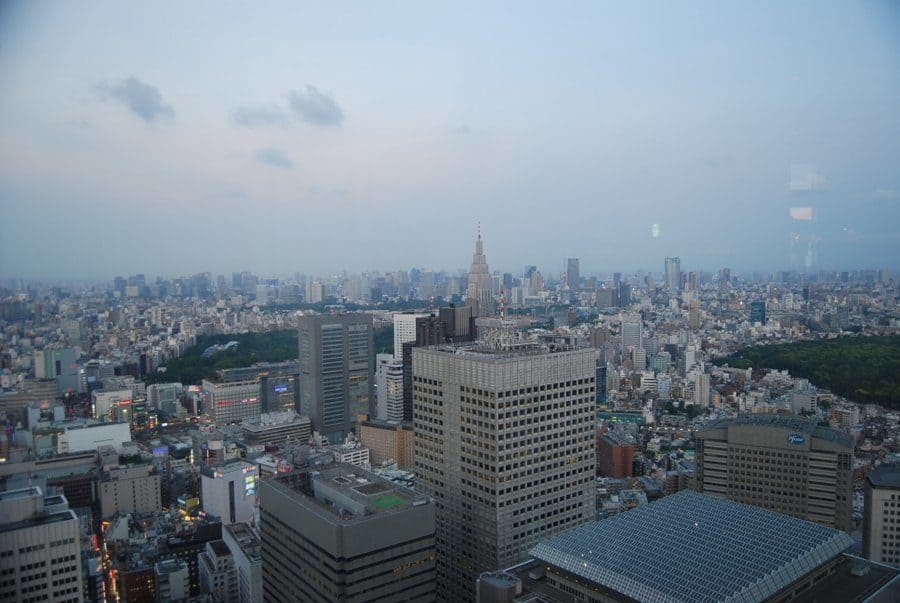
The Tokyo Metropolitan Government Building has an observatory that’s 202 metres above the city streets.
It’s the best place to go for panoramic views of Tokyo and it doesn’t even cost you anything.
Be sure to add a stop here to your list of things to see in Tokyo in 3 days.
It’s been a long day in Tokyo, so how you choose to spend the rest of your night is up to you at this point.
Some people might just want to grab a quick bite to eat and call it a night, and that’s totally understandable.
You’ve only got 3 days in Tokyo, though, so I recommend digging down deep, summoning your 3rd wind, and powering through to check at least one or two more things off your list.
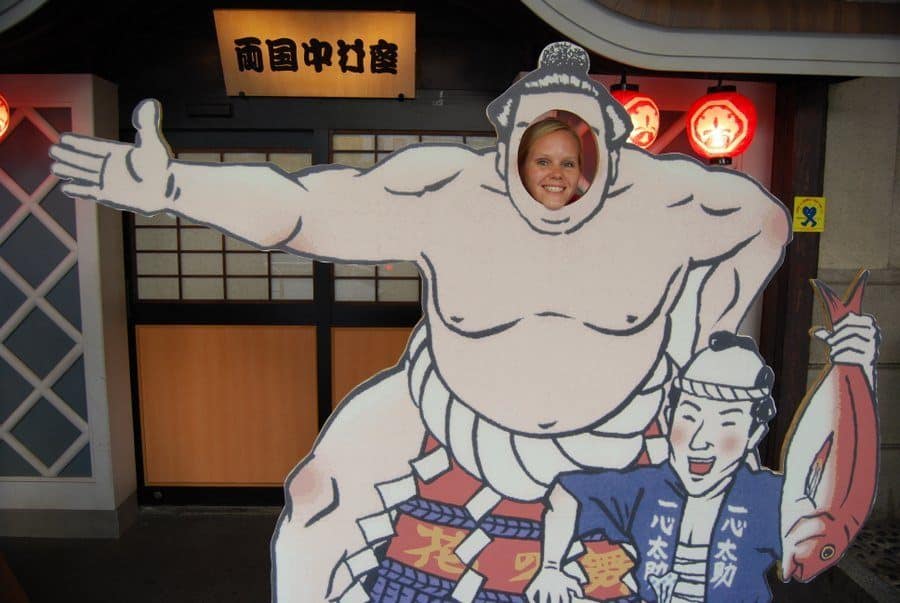
One cool thing to do in this area is visiting the Samurai Museum. It’s open until 9 PM and is worth checking out, if only just to snap a pic of you in a badass Samurai costume. Or you could go to sumo tournaments and see the famous sport in action if you’re a sport fan!
If you’re interested in experiencing a bit of sensory overload along with your dinner, be sure to check out the Robot Restaurant.
It’s basically the dinner show version of an acid trip.
NOMADasaurus Note – The Robot Restaurant was perhaps the BEST thing we did in Tokyo on our recent trip! Trust us, do it. – Alesha and Jarryd
As you might expect, the Robot Restaurant is quite popular. Tickets sell out well in advance, so be sure to book them early .
The price tag is a bit steep, but when else are you going to have such a wild dinner experience?
By booking through Klook you get the cheapest price possible (they have a special deal with the Robot Restaurant), and you get VIP entry and a souvenir.
If lasers and robots aren’t your style, there are plenty of other options for dinner around here.
Whatever you do for dinner, it’s worth it to cruise over to Golden Gai for a nightcap.
This area is full of narrow, winding alleys that are home to some very cozy bars. Some of them can only hold a handful of people.
This makes for a very authentic Japanese drinking experience and is a great addition to your 3 days in Tokyo itinerary.
Day 3 – Morning
Hopefully you didn’t do too many sake bombs in Golden Gai, but if you did that’s cool, too!
Go ahead and sleep in, get yourself a leisurely breakfast, and get ready to tackle the last of 3 days in Tokyo.
When you’re ready to rock, hop on the train and head over to Tokyo Station. Just a short walk from here, you’ll find the Imperial Palace.
It’s located at the former site of the Edo Castle and remains home to the imperial family.
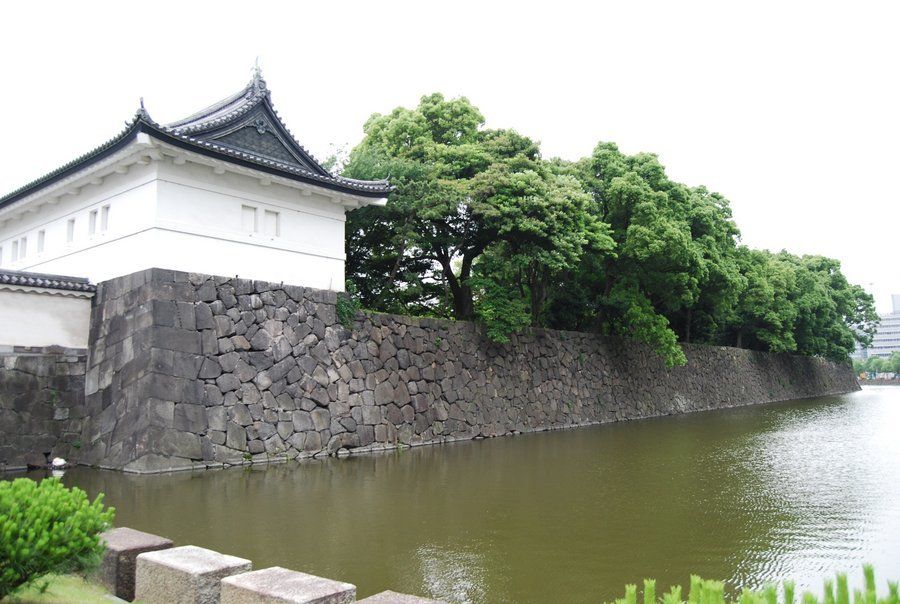
You can sign up to join a free tour of the Imperial Palace, but you’ll want to make sure to do so in advance.
Head to their website up to one month in advance to secure your spot.
Even if you don’t score a spot on a tour, it’s worth visiting the palace grounds.
The Imperial Palace East Gardens are stunning and definitely one of the best things to see in Tokyo in 3 days.
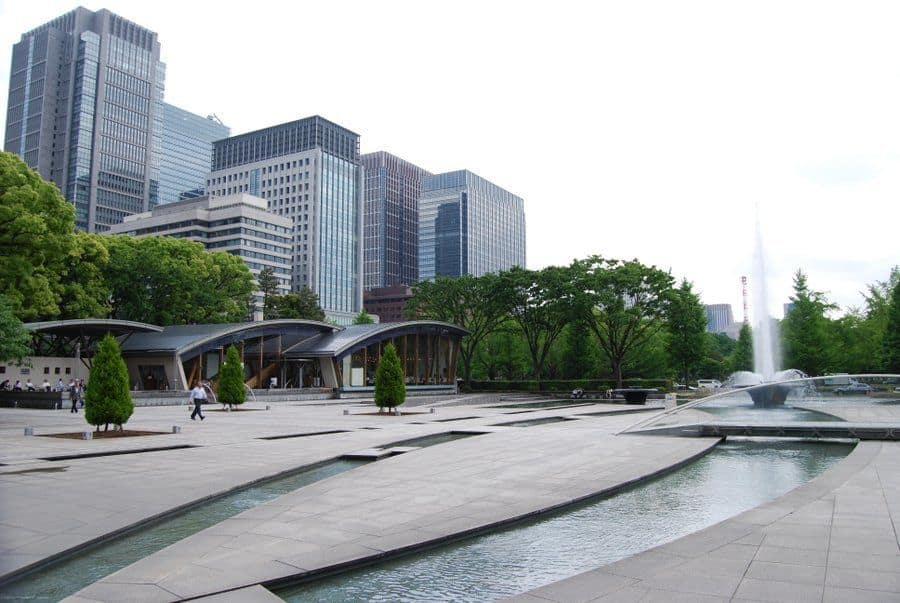
Another thing to check out near the Imperial Palace is the Wadakura Fountain Park. It’s a scenic place to sit down for a quick breather and grab a cheeky cup of coffee if you need some fuel for the rest of the day.
After exploring the palace grounds for a while, head out the southeast corner and cross the moat to access Hibiya Park.
It’s a pleasant little park and a good spot for a quick stroll.
The main reason to walk through this park, though, is to snap a photo of the Godzilla statue that’s right around the corner.
Put Blue Oyster Cult’s “Godzilla” on and sing along – “Oh, no, there goes Tokyo! Go, go Godzilla!”
To be honest, the statue is kind of small and underwhelming, but the novelty alone makes it worth the quick stop.
Plus, there are lots of restaurants and cafes around here and you’re probably ready for lunch at this point in the day.
Day 3 – Afternoon
It’s been a whirlwind 3 days in Tokyo so far, and we’re almost to the finish line.
For the afternoon on your final day in the city, cruise over to the Ginza district.
Ginza is the place in Tokyo to see and be seen. It’s the premier shopping district for the Japanese capital and is home to countless luxury stores, cafes, and restaurants.
During the warmer months (April-September), the central Chuo Dori street is shut down to traffic and becomes a bustling pedestrian zone.
Other cool things to do in Ginza include seeing a kabuki show at the Kabukiza Theatre or visiting the Nissan and Sony showrooms at Ginza Place.
If you didn’t make it to the new fish market on day two, you can swing by the old one today.
The Tsukiji Fish Market isn’t home to the auctions anymore, but it’s still open and there are plenty of places to munch on fresh sushi here.
Day 3 – Evening
It’s time once again to choose your own adventure! For your final night of 3 days in Tokyo, you’ll want to be sure to get some nice sunset views.
Here are a few options including the famous Tokyo Tower, Shibuya Crossing, and more.
This is a massive development project and the brainchild of building tycoon Minoru Mori.
It has apartments, office spaces, restaurants, movie theatres, shops, and more.
The idea was to create a place where people can live, work, and play, thus basically eliminating the need to commute.
Here you’ll find the Tokyo City View observatory. Tickets are a bit steep at 1,800 yen, but they also include admission to the Mori Art Museum.
If you don’t mind splurging a bit, the views here are pretty incredible.
If you want some epic views of the city but don’t want to fork over so much yen, you can head to the Tokyo Tower instead.
The Tokyo Tower is like the Japanese capital’s answer to the Eiffel Tower. The top of the Tokyo Tower also has a nice observation deck and it only costs 900 yen.
Standing at 333 meters tall, Tokyo Tower serves as a symbol of rebirth after World War II.
Book tickets to the Tokyo Tower on Klook!
We wrap up 3 perfect days in Tokyo in Shibuya. Coming out of the Shibuya Station, you’ll see the famous statue of Hachinko.
There’s a beautiful story behind this loyal dog, so be sure to read it before your trip!
Hopefully, you can handle crowds because our next stop is the Shibuya crossing.
Famed to be the busiest pedestrian crossing in the world, over 2,500 people crisscross the street here on each light.
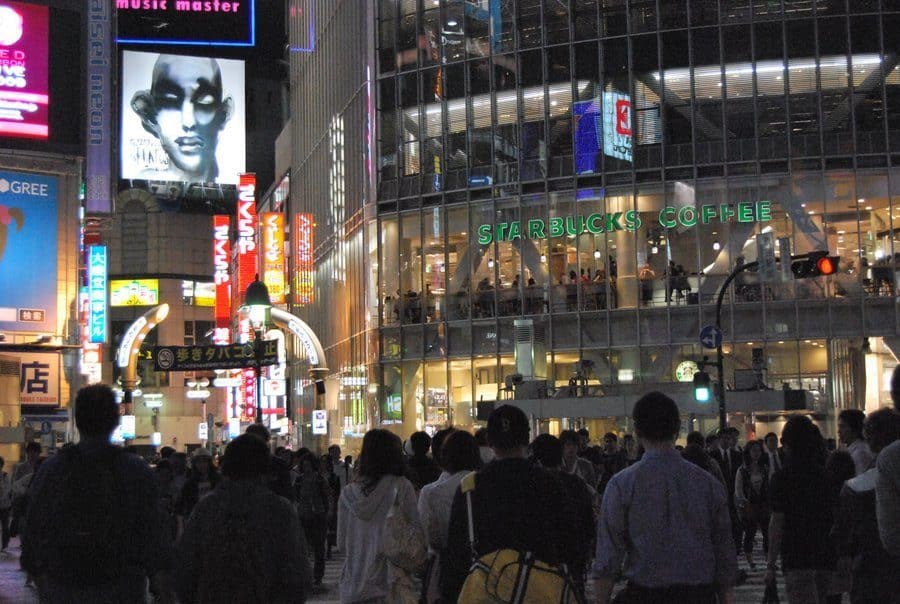
If you want to see the view of the crossing from above, your best bet is to pop into the Starbucks.
There’s no sneaking a free peak here, though, as they ensure that you buy something before you can approach the window. Grab a cup of joe and sit down to watch the madness below.
Hands down, one of the coolest things to do in Tokyo in 3 days is playing real-life Mario Kart.
MariCAR allows you to dress up as famous characters like Yoshi and ride a go-kart through the busy streets of Tokyo.
Just don’t go tossing any banana peels off to the side – that’s dangerous!
You have to book it ahead of time , and you must have your International Drivers Permit with you in order to do the activity.
If you’ve got any energy left, there are plenty of cool bars and music venues in Shibuya.
There you have it, my friends – an awesome plan for how to spend 3 days in Tokyo!
Where to Stay in Tokyo
Now that you’ve got a badass itinerary for 3 days in Tokyo, you’re probably wondering where you should say in this sprawling metropolis.
Honestly, as long as you’re in the city proper and are near an underground station, you’re good to go.
Some of the most popular areas to stay in Tokyo include Shinjuku, Shibuya, Ginza, and Asakusa.
Here are a few options for some accommodation in Tokyo to suit all budgets:
There are plenty of excellent hostels in Tokyo, which is great news for budget travellers.
If you’re balling on a budget, a solid choice is Grids . They’re so popular that they have three locations in the city with a fourth on the way.
You can choose between their Asakusa-Bashi, Akihabara, and Nihombashi locations.
Whichever one you go with, you’ll find a comfortable hostel in a great location.
Dorm beds go for under $25 a night here. They have a nice cafe and bar on-site here as well and serve a buffet breakfast for a reasonable price.
All of their properties have awesome reviews, so they’re clearly doing something right!
If you’re the type of traveller who appreciates a good deal, you’ll love the Hotel Ryumeikan. It’s just a stone’s throw away from the central Tokyo Station and double rooms go for $200 or less here.
The rooms here are well-appointed and, while they seem a bit small, are actually pretty big for Tokyo. They also have tea and a Nespresso machine, plus some super comfy pajamas you can use.
You can start your day off here with a fully-stocked breakfast buffet featuring both Japanese and western cuisine. Other amenities here include a laundry service and coin-operated machines if you’d rather just do your own.
When it comes to luxury accommodations in Tokyo, it’s hard to top the Mandarin Oriental.
This 5-star hotel is centrally located near Tokyo Station in the city center on the top nine floors of the Nihonbashi Mitsui Tower.
This swanky hotel has it all – a spa, gym, business centre, event space, and more. It also boasts a whopping 12 restaurants, 3 of which are Michelin-star.
Of course, all this luxury comes at a price. Even the cheapest option here runs close to $700 a night even in low season.
Then again, this place always comes up in lists of the “best hotels in the world,” so it’s worth the splurge for this one!
Sasha and Rachel
Hi, We’re Alesha and Jarryd!

We’ve been traveling the world together since 2008, searching for the planet’s best destinations and adventures.
Love Travel?
Sign up for our free weekly newsletter for the best travel tips, ideas and deals!
We respect your privacy. Unsubscribe at any time.
READ MORE...
19 BEST Things to Do in Osaka, Japan [2024 Edition]
The Best Day Trips from Every City in Japan [2024]
18 Amazing Things to Do in Kyoto at Night (2024 Guide)
Related Posts
How to plan your perfect hokkaido itinerary in 2024, 18 amazing things to do in nara, japan (2024 edition), the ultimate travel guide to oita, japan (2024 edition), the tohoku earthquake – a region's revival after the tsunami, 6 thoughts on “the perfect 3 days in tokyo itinerary”.
I’m traveling to Tokyo at the end of Oct. Which company in Tokyo helped you get a ENFS visa?
Hi Chase, sorry we are not too sure. We did not have to get a visa to enter Japan as a tourist. Sorry we can not help. All the best.
Many thanks for this very good travel guide about 3 days in Tokyo. I’ve visited Tokyo several times and I can highly recomment a trip to this metropole.
Good ideas for the 5 days I’m in Tokyo (lazy) tnx
Glad to help. Have a great trip.
Thanks so much! This has been so helpful in my query for the upcoming trip hopefully when the pandemic is over. I get so excited waching the pics and learning about your adventure. My flight was actually cancelled and was given an option to rebook for a year to choose from so I was wondering when is the best time to go there with a weather suitable to my tolerance 🙂 I dont want too cold nor too humid…Cn you give suggestion please 🙂 I appreciate it so much! Godspeed to you both and more adventures to come !
Leave a comment Cancel reply
Save my name, email, and website in this browser for the next time I comment.

A Fun 7 Day Tokyo Itinerary: Complete 1 Week in Tokyo Guide
Without a doubt, Tokyo is one of my favourite cities I’ve ever visited. The unique blend of ultra-modern and traditional, the exhilarating experiences and of course, the incredible food are just some of the reasons I keep coming back to Tokyo again and again.
After my recent fifth visit to Tokyo, I can truly attest that there is no shortage of remarkable things to do, see and eat in Tokyo. Packing it all into a Tokyo 1 week itinerary is still a challenge, as each visit I find something new and fun to do every time!
Whether it’s your first time in Tokyo or a return visit, this comprehensive 7 days itinerary in Tokyo offers a perfect blend of iconic sights, lesser-known gems and amazing food experiences to ensure a memorable one week in Tokyo.
Table of Contents
Quick Overview: Itinerary for Tokyo 7 Days
Tokyo is a sprawling metropolis that covers over 2,000 square kilometres. This itinerary has been designed to cover specific sections of the city and groups attractions on each day to reduce travel time and backtracking.
Here’s a summary breakdown of this Tokyo Itinerary:
- Day 1: Harajuku and Shibuya
Day 2: Gotokuji Temple, Shimokitazawa and Shinjuku
Day 3: asakusa & akihabara.
- Day 4: Tsukiji Market, TeamLab Planets & Ginza
- Day 5: Hie Shrine, Imperial Palace, Tokyo Station & Ikebukuro
- Day 6: Disneyland or DisneySea
Day 7: Day Trip to Mount Fuji
Useful resources & tips for first timers.
Before getting into the details of this Tokyo 7 days itinerary, here are a few quick tips and useful things to know for first-timers in Tokyo.
- Cash: Japan is a very cash-reliant society. On my most recent trip in April 2023, we were pleased to see that many more places accept cards (most likely a result of COVID-19 accelerating change for businesses). However, there are still many small bars, restaurants and even shops that might only take cash. We use the 7/11 ATMs to withdraw cash, as there is no international ATM fee and they accept most foreign cards. Plus, they are super accessible as there are 7/11’s everywhere!
- Suica: Make sure to grab a Suica (prepaid transport card) for use on the subways, trains and buses across Tokyo. It saves you so much time not having to purchase paper tickets as you’ll be relying on the subway system a lot! (more of this soon).
Note: Due to a chip shortage, physical cards are no longer being issued. You have two options for alternatives. Firstly, Apple users can easily add a free Suica to Apple iPhones (unfortunately this doesn’t work for foreign Android devices just yet). Here are the instructions for doing this for Apple users. Tourists can still purchase the Welcome Suica card upon arrival at either of Tokyo’s airports. More information on Welcome Suica here .
- eSims: I recommend getting phone data while in Japan as you will be relying on Google Maps a LOT! Pocket wifi rental used to be a popular option for getting phone data in Japan. I’ve tried pocket wifi , purchasing a tourist prepaid sim that you collect at the airport and on my most recent trip, an eSim that I set up at home before I even leave. Of the three options, using an eSim is my preferred option for convenience and was very easy to set up on my iPhone. Check out eSIM plans & pricing for Japan here .
- Airports: Tokyo has two international airports, Haneda and Narita. If you have a choice, try to fly into Haneda as it is a lot closer to downtown Tokyo. However, the majority of flights do fly into Narita, which is still very accessible to get to/from with public transport – it just takes longer and is more expensive.
- Queues: Queuing is very much a part of culture in Japan – you know a restaurant is good when there is a queue! Especially for ramen restaurants, the queues move quickly so don’t despair if you see a giant line.
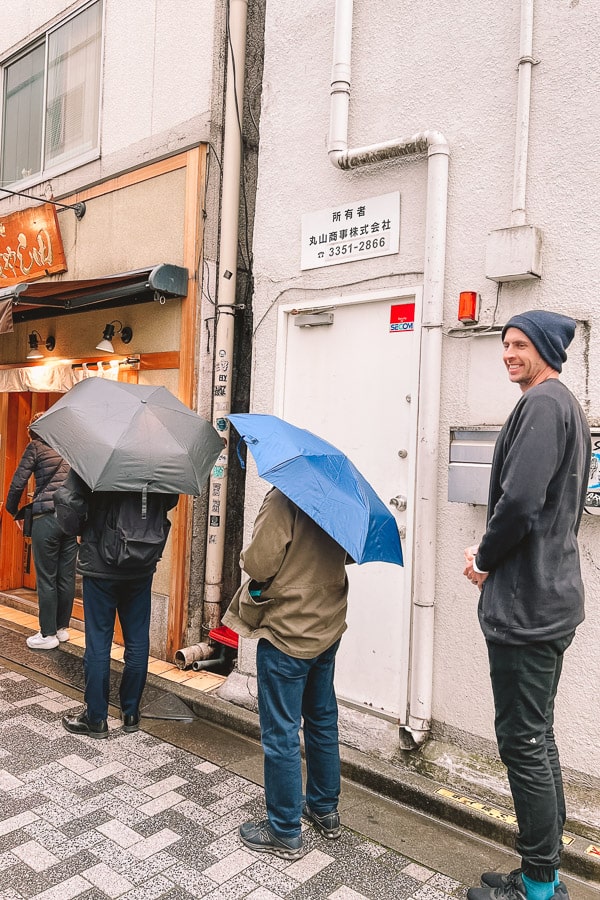
- Convenience Stores: one of my favourite things about Japanese culture is the convenience stores (konbini). You’ll see a 7/11, Lawsons or Family Mart on just above every corner, and these well-stocked shops sell fantastic ready-to-eat meals. We’ve had many onigiri (rice triangle sandwiches) for breakfast from the konbini, as well as great takeaway dinners on those days when we are just too exhausted to go out after exploring the city all day. The quality and range are excellent, and trying random new Japanese snacks from the local konbini is a personal tradition of mine!
- Book tickets in advance: For many popular tourist attractions, such as TeamLab Planets, Disneyland and ShibuyaSky, you need to purchase tickets in advance. In my 1 week Tokyo itinerary below, I include links to these to help make booking tickets in advance a breeze. For many of the attractions, it is easiest to book through a 3rd party like Klook or GetYourGuide . If you aren’t familiar with Klook, they are a large tour company with a strong Asian presence (and Japan in particular). Because of their size, they often offer discounted tickets to many of the popular experiences in Tokyo, so I recommend using them for most of your tickets and tours in Japan.
- JR Pass: You do NOT need a JR Pass to get around Tokyo – it would be a terrible waste of money if you did! Consider getting a JR Pass for long-distance Shinkansen rides, although with the 2023 price increase, JR Passes no longer offer as much value to tourists as they used to.
- Google Translate: I highly recommend downloading Google Translate on your phone. Many restaurants do not have an English menu, so we found ourselves using Google Translate almost daily – you can take a photo of a menu or sign in Japanese and it quickly translates it to English.
For more tips, check out my guide with 15 Things to Know Before Visiting Japan for the First Time
How to Get Around Tokyo
Tokyo’s vast metro and public transportation system can be pretty overwhelming and confusing. Luckily, Google Maps makes getting around in Tokyo (and Japan in general) a breeze.
All the schedules are synced with Google Maps, telling you real-time information on train times, prices, connections and transfers and even the best carriage to board to be closest to your planned station exit!
This is why I highly recommend getting an eSim, or at the very least pocket WiFi to help make getting around Tokyo easy.
The Suica card is a useful tool to save time on buying paper tickets, however, recent chip shortages have made getting these a bit trickier.
Apple iPhone users can easily add digital cards to their phones, but Android users for the meantime will need to purchase a WelcomeSuica card at the airport upon arrival or consider getting a subway pass.
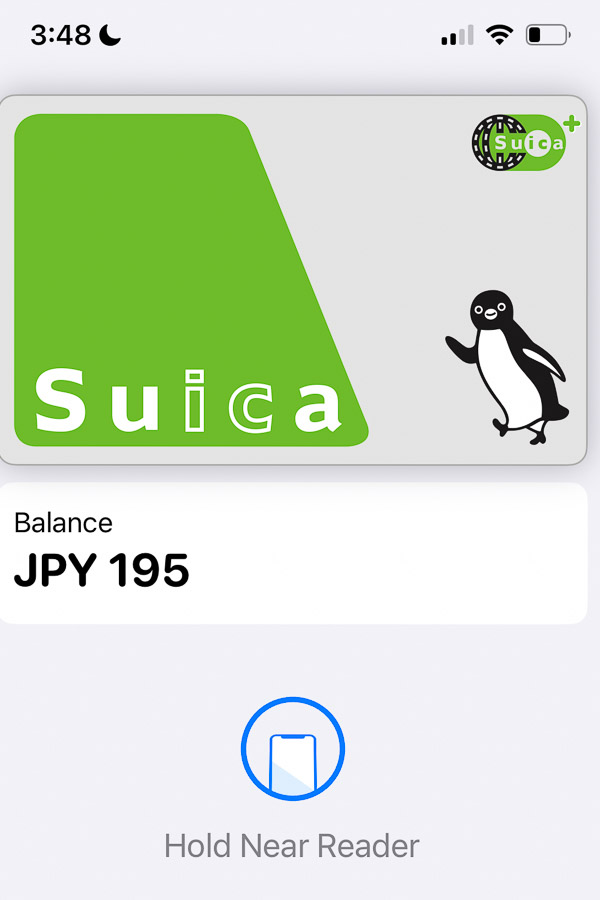
Even if you have a Suica, the subway pass can still be good value if you are making lots of trips on the subway in a certain period. Travel conveniently around Tokyo through Tokyo Metro and Toei Subway lines for 1-3 days with this Unlimited Pass .
While I recommend using the subway to get around Tokyo, if you’d prefer to keep things simple, Hop-On Hop-Off buses are plentiful around the main attractions in Tokyo.
Where to Stay in Tokyo
Generally, I recommend staying in or near Shinjuku (west side of Tokyo), or in the central area of Tokyo Station. However, as long as you are within walking distance of one or two subway stations/lines you will be fine!
I’ve suggested a few accommodation options below for different budgets in these areas.
Accommodation in or near Shinjuku (West Tokyo):
- Budget – Kimi Ryokan : I almost don’t want to share this in case it gets too popular, but Kimi Ryokan in Ikebukuro is my go-to budget accommodation in Tokyo. With traditional tatami mat bedding, this guesthouse is extremely clean, has shared bathrooms and lovely common areas.
- Mid-Range – Hotel Sunroute Plaza Shinjuku : You can’t beat the location of this centrally located hotel a short walk from Shinjuku Station. I prefer this hotel to similar-priced hotels in the busier Kabukicho nightlife area.
- Luxury – Park Hyatt Tokyo : We had a splurge night here to celebrate my husband’s birthday – the hotel’s New York Grill and Bar on the 52nd floor was featured in the movie Lost in Translation
Accommodation in or near Central Tokyo:
- Budget – the b ochanomizu : We stayed in this basic but clean hotel in Kanda, which was within walking distance to Akihabara and close to the subway. The rooms are small but modern and functional.
- Mid-Range – Via Inn Prime Nihonbashi Ningyocho : I was pleasantly surprised by the size of the rooms in this new, modern hotel. The location was within walking distance of two different subway lines.
- Luxury – The Gate Hotel : This trendy hotel is in the heart of Ginza, within walking distance to Tokyo Station and the Imperial Palace.
Explore all accommodation options in Tokyo
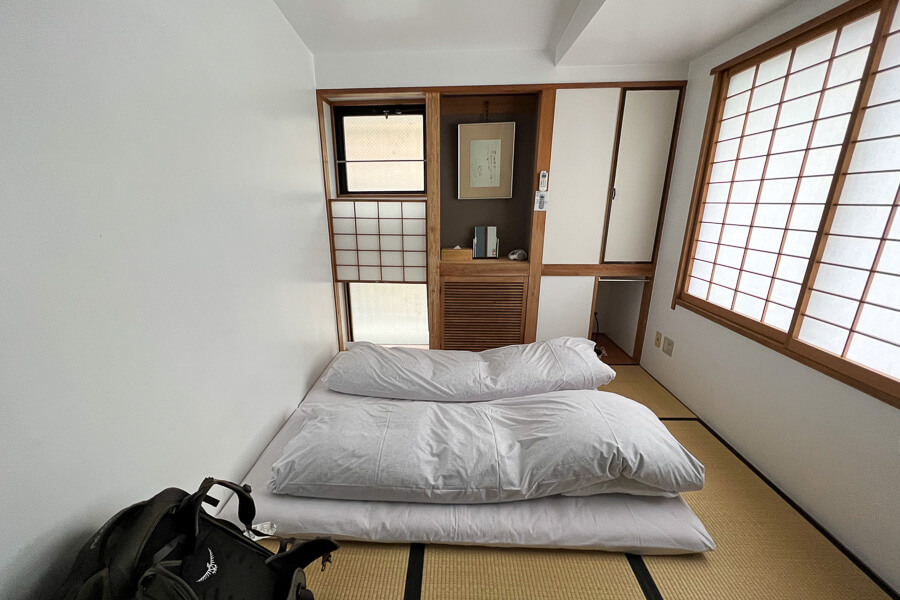
Tokyo Itinerary 7 Days
One week in tokyo itinerary map.
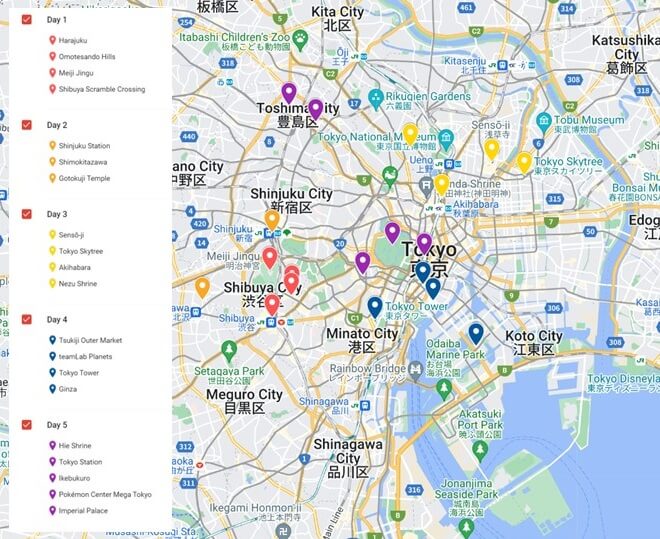
Day 1: Harajuku and Shibuya
Welcome to Tokyo! Begin your Tokyo 7 Day itinerary by immersing yourself in the vibrant, colourful and quirky streets of the Harajuku district.
Conveniently located on the Yamanote line, when you get off the subway at Harajuku Station you’ll find yourself at the top of the main street of Harajuku, Takeshita Street .
This bustling street is lined with hip fashion boutiques, crepe stands, food shops, themed cafes and more. You’ll likely see young people dressed in quirky and unique street fashion, including some very kawaii (cute) outfits or punk hip-hop styles.
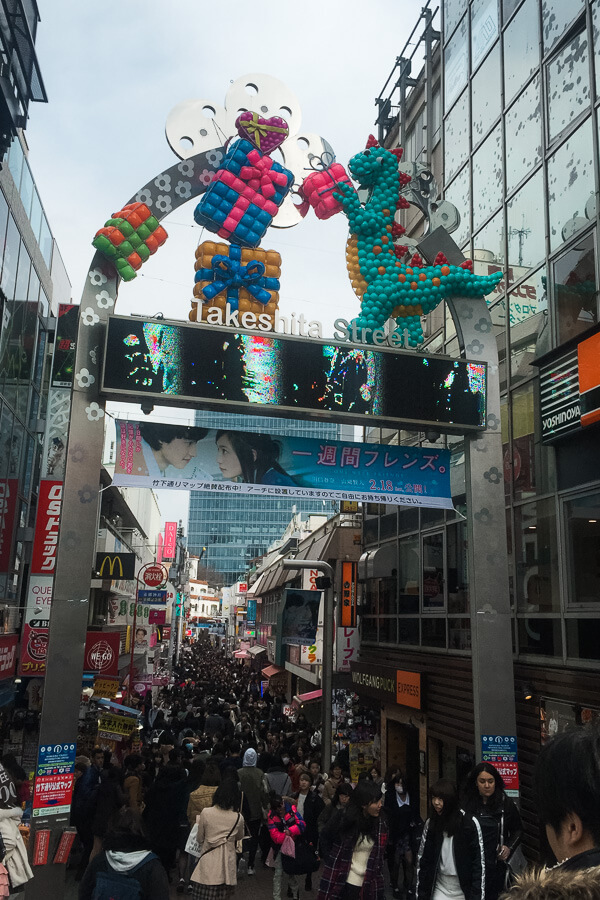
It can be overwhelming, particularly if you visit on the weekend!
My recommendation is to walk down Takeshita Street first before it gets too crowded, and then head to the quieter Omotesando Hills area. The Omotesando Hills consists of manicured streets with trendy boutiques and hip cafes, and is likened to the “Beverley Hills of Tokyo.”
Walk to Tokyu Plaza Omotesando, and make sure to check out the mirror entrance for a cool photo spot! You’ll also pass by Kinji Used Clothing, a massive second-hand clothing store that is a favourite of mine for high-quality, affordable used clothing.
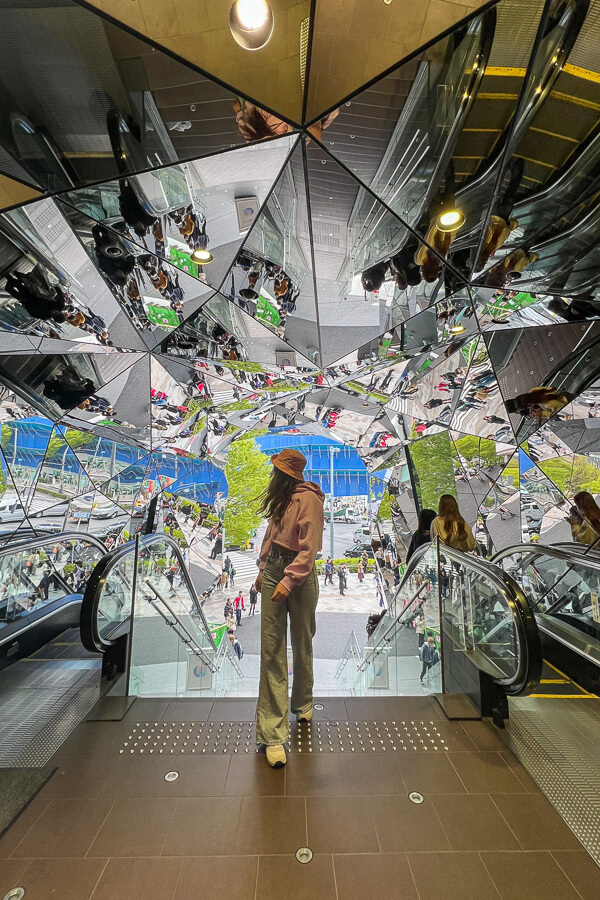
Continue exploring the trendy shopping streets – Cat Street is relatively quiet when compared to Takeshita Street, and you’ll find many trendy clothing stores and cute cafes.
If you need a snack stop or lunch, around the corner you’ll find Harajuku Gyozaro , a popular restaurant that specialises in dumplings. You’ll often see a line out the front (not an uncommon sight in Japan), but it moves quickly and is worth it!
Cross over the Jingumae Pedestrian Bridge .
In these picturesque streets, you’ll find Koffee Mameya, a cult specialty coffee store as well as the popular Tonkatsu Maisen Aoyama – one of the best-regarded tonkatsu (breaded pork cutlet) restaurants in the city.
We once got here before it opened for the chance to try their “Tokyo X” black pig pork katsu which is so exclusive it is only served to 5 customers a day! While it was delicious, I’m not sure we noticed enough of a difference to be worth the extra price.
If you need a coffee stop, another of our favourites in the area is Streamer Coffee Company . They have two coffee locations, but the one north of Omotesando is unique in its design with its multi-storied, narrow building made out of shipping containers.
Meiji Jingu Shrine
Cross the train line and meander towards the Meiji Jingu Shrine .
Open every day of the year, entrance to Meiji Jingu is free. You’ll pass the wall of sake barrels before passing under a large torii gate and entering the shrine. Nestled amongst nature, a visit to this 100-year-old shrine is a peaceful and tranquil experience compared to the hustle and bustle of the streets of Harajuku.
Open: Daily (times vary, check here ) Entrance: Free
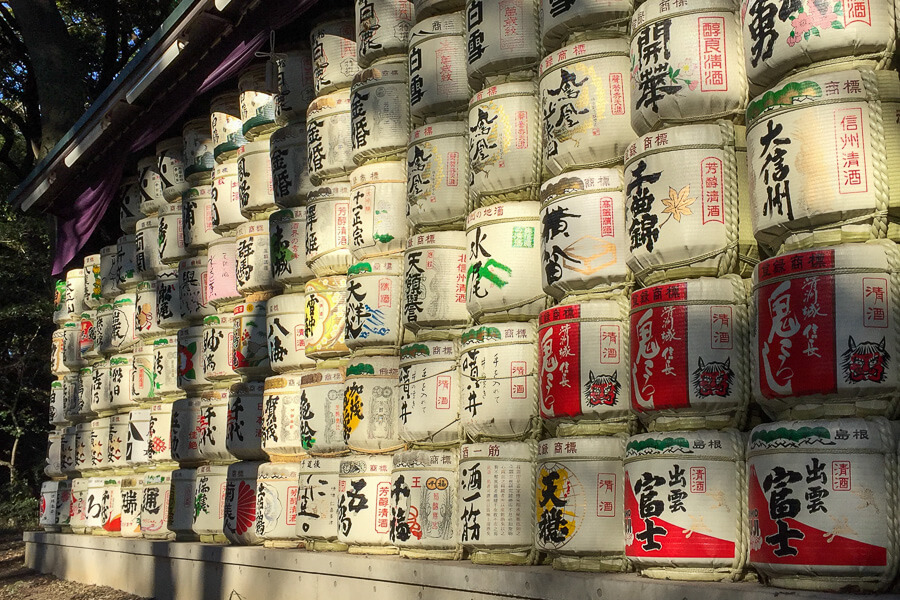
Shibuya
Walk or catch the subway one stop to Shibuya Station, spending the rest of your afternoon and evening exploring this iconic hub of Tokyo.
Near the station, make sure to stop by the Hachiko statue , the heartwarming memorial of the loyal dog who waited for his owner by the station each day – even after his death. These days, it’s used as a meeting point for groups of friends before exploring or dining in Shibuya.
Right next to the station and the Hachiko statue is the world-famous Shibuya Scramble Crossing, which is considered the world’s busiest pedestrian crossing – an estimated over 2.4 million people cross Shibuya every day ! An estimated 2,500 – 3,000 people are crossing this particular spot at a time.
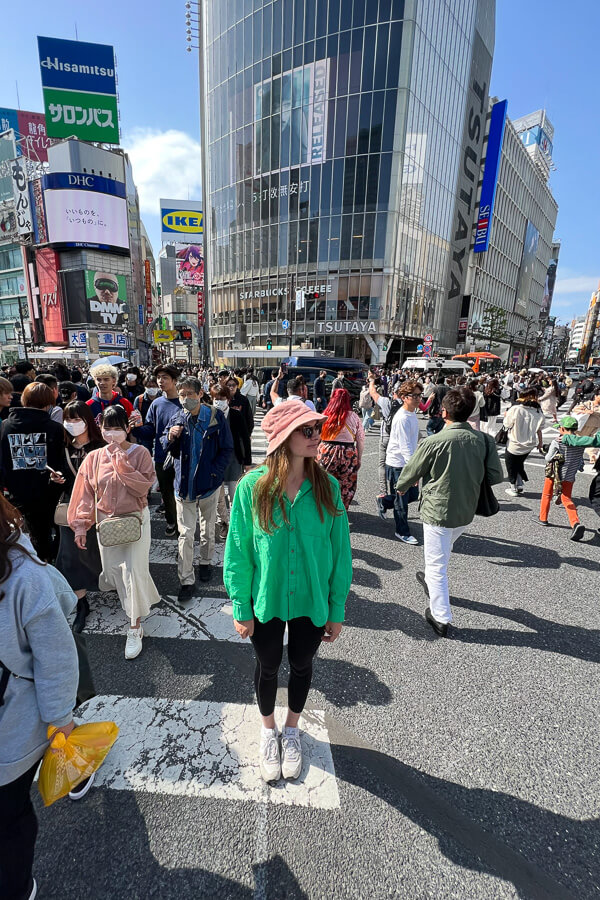
The crossing is best viewed from above – on our first visit, we headed to the Starbucks across the road and sipped on lattes while watching the thousands cross below.
On our most recent visit, we bought tickets to the new Shibuya Sky attraction. This popular spot offers insane 360-degree views of Shibuya and the endless sprawl metropolitan sprawl of Tokyo from an open-air observation deck on the rooftop of the Shibuya Scramble Square (47 floors high!).
Tickets are available 4 weeks in advance, and sunset sessions book out very quickly. So make sure to book your ticket ahead of time here.
Open: Daily 10am – 10.30pm Entrance: ¥2200 – purchase online tickets easily with Klook (bookings available 4 weeks in advance)
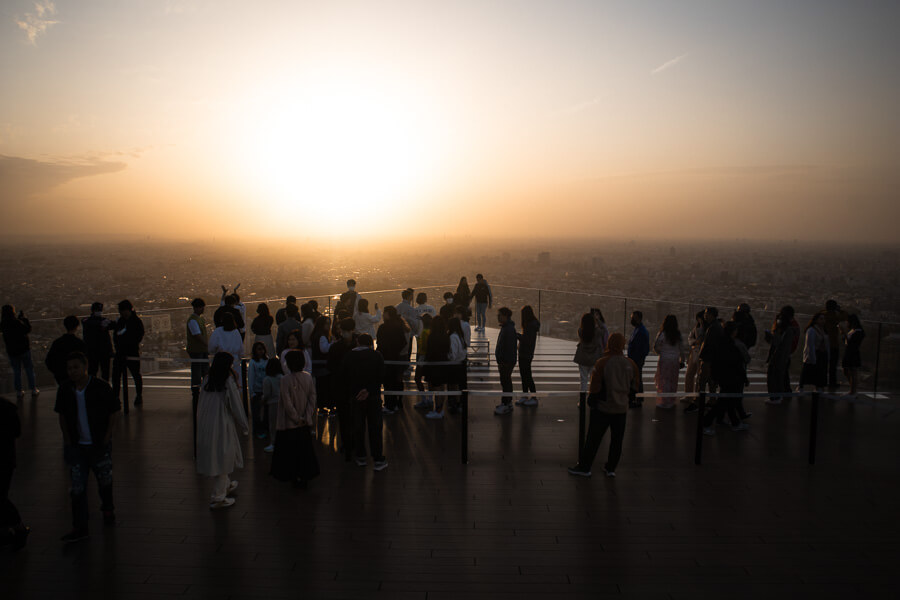
For food, we wandered the Dogenzaka-dori and found a small izakaya in a basement. You’ll find lots of spots like this, or head to the ever-popular Ichiran ramen restaurant chain for a must-try bowl of noodles.
For a local perspective, explore Shibuya with a local guide – you’ll visit some lesser-known spots while learning about the history, sights and local recommendations from your guide.
Gotokuji Temple
Start your second day in Tokyo by catching the Odakyu Line to Gotokuji Station. From here, it is a 15-minute walk through the local neighbourhood to Gotokuji Temple, otherwise known as the Lucky Cat Shrine .
Open: Daily 6am-5pm Entrance: Free
This Buddhist temple doesn’t appear to be anything unique until you get to a small section in the back corner which is filled with hundreds (if not thousands) of Maneki Neko lucky cat figurines. As cat lovers and big Japanese culture fans, this was a must-visit attraction for us!
This is definitely an underrated and lesser touristed attraction in Tokyo, we loved walking through the temple grounds, admiring all the maneki neko statues and taking photos around the temple and grounds.
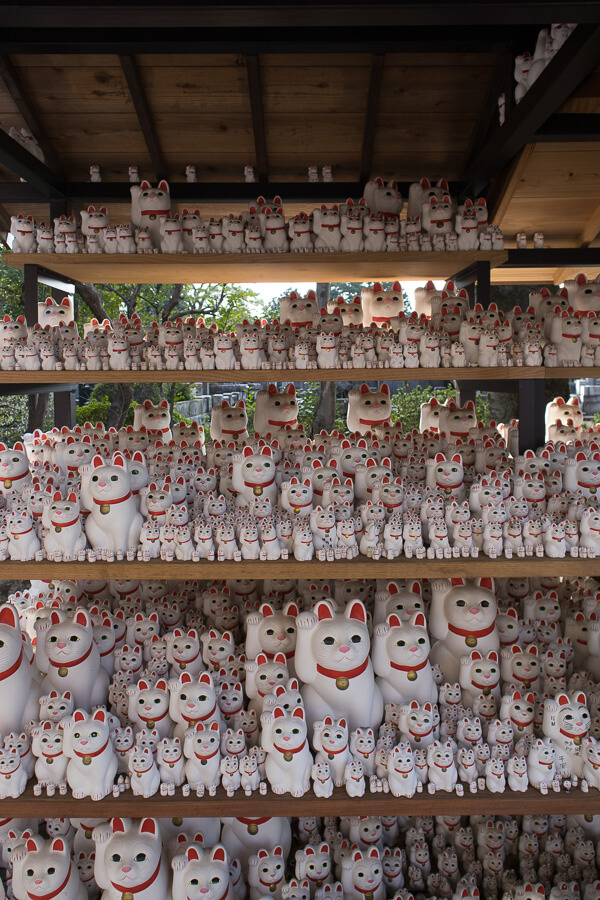
Shimokitazawa
After a visit to the Gotokuji Temple, it was easy to jump back on the Odakyu Line at Gotokuji Station and travel one stop to Shimo-Kitazawa Station.
Shimokitazawa is a trendy neighbourhood best known for its large range of vintage and second-hand clothing boutiques. The stores are generally more upmarket and include vintage designer items and one-of-a-kind items.
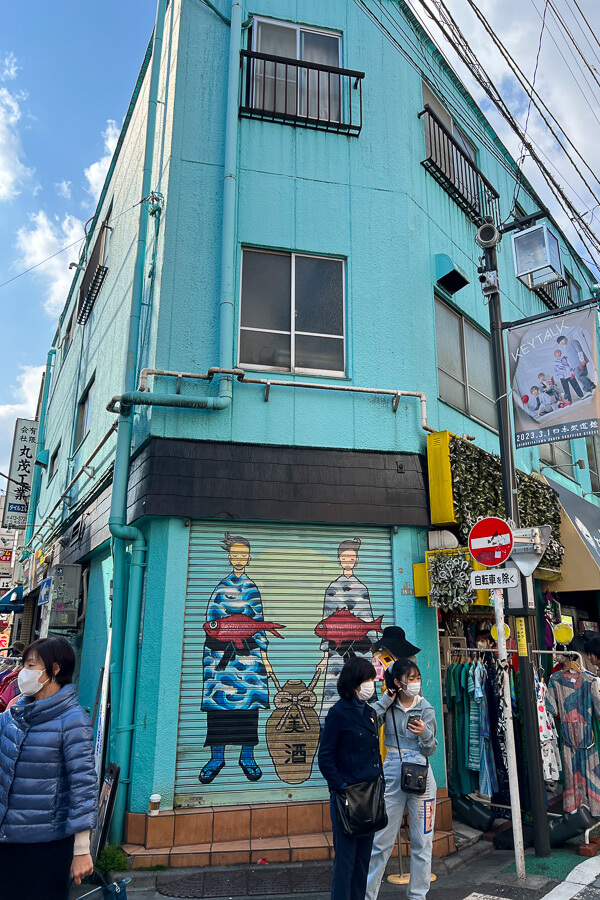
There are also many cosy, hip cafes, and many specialty coffee stores (perfect for the coffee-lovers like us!). We enjoyed a unique coffee experience at the trendy, minimalistic-designed Ogawa Coffee Laboratory .
You choose your beans at the counter from a large list based on your flavour and roast preferences, before watching your coffee be prepared in front of you. We also tried their house specialty, square scones.
You’ll find the largest concentration of vintage stores in the area north of the station, whereas east of the station is more boutiques and quirky stores. You’ll find you can easily spend a few hours wandering the streets and browsing the boutiques.
Spend the rest of your afternoon and evening exploring the bright lights of Shinjuku.
If you need a break from the fast-paced city vibes, Shinjuku Gyoen National Garden is stunning, especially when we visited during cherry blossom season .
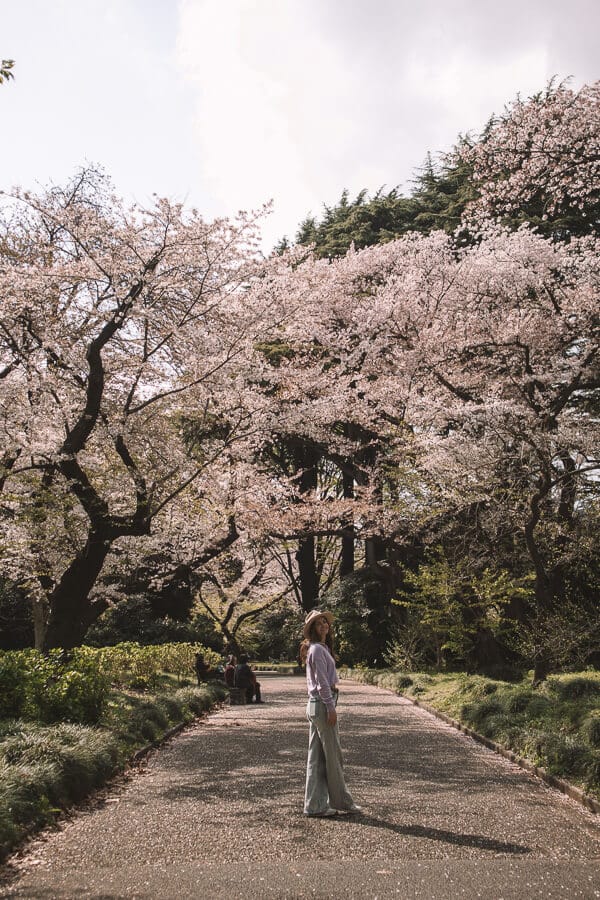
With over 144-acres of expansive grassed areas, serene lakes, tranquil greenhouses and landscaped Japanese gardens. Great to visit in spring (cherry blossoms) or autumn (autumn colours).
Open: Daily except for Mondays. Special opening times apply in April and November Entrance: ¥500
Shinjuku is another shopping haven – we went to our first Don Quijote here in Shinjuku.
Don Quijote is an overwhelming and somewhat chaotic shopping experience, but also a haven for tourists wanting to get unique Japanese snacks, gifts or nick-nacks. I also love the affordable Japanese skincare here!
If you need a coffee break and rest stop, the pudding at All Seasons Coffee blew our mind!
My favourite things to do in Shinjuku at night include eating, drinking and visiting the massive game arcades. A favourite dinner spot for tourists and locals alike is the Standing Sushi Bar to the west of Shinjuku at Uogashi Nihon-ichi. We come here every time we visit Tokyo and it never disappoints!
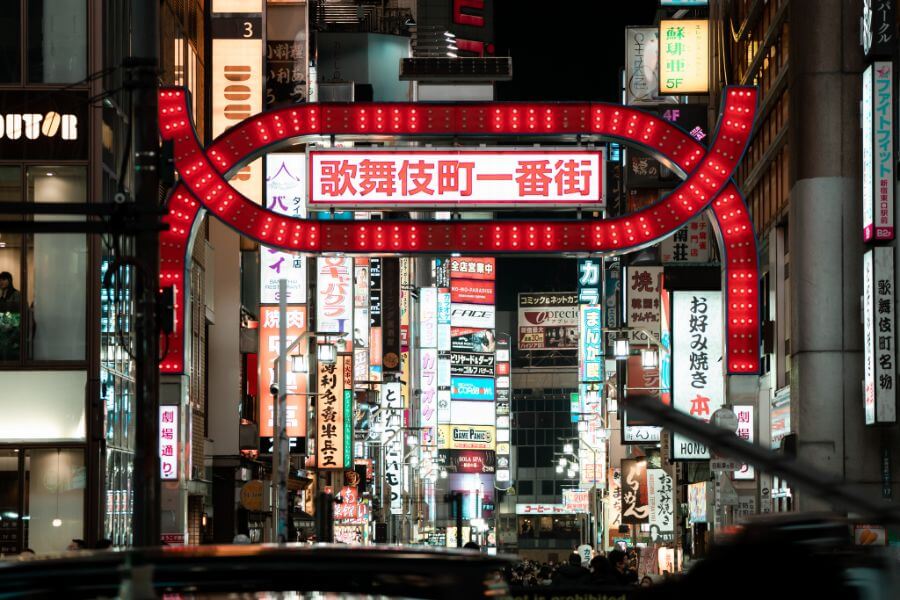
You’ll find a large SEGA game arcade around the corner, making it a great spot for some after-dinner entertainment.
On our most recent Tokyo trip in 2023, I discovered an amazing sake bar in Shinjuku hidden away on the upper floor of a nondescript building. We learnt so much about the different styles of sake at Yata Yata while taking in the bright lights of Shinjuku for the window on the 10th floor – highly recommend!
Shinjuku is also home to a few sake markets . At these popular bars, you pay a fixed price for all-you-can-drink sake that you serve yourself. You can buy a few snacks from the bar, or bring your own food from the local convenience store. This is our favourite way to try new and different sake styles!
Reserve your sake market experience in advance here .
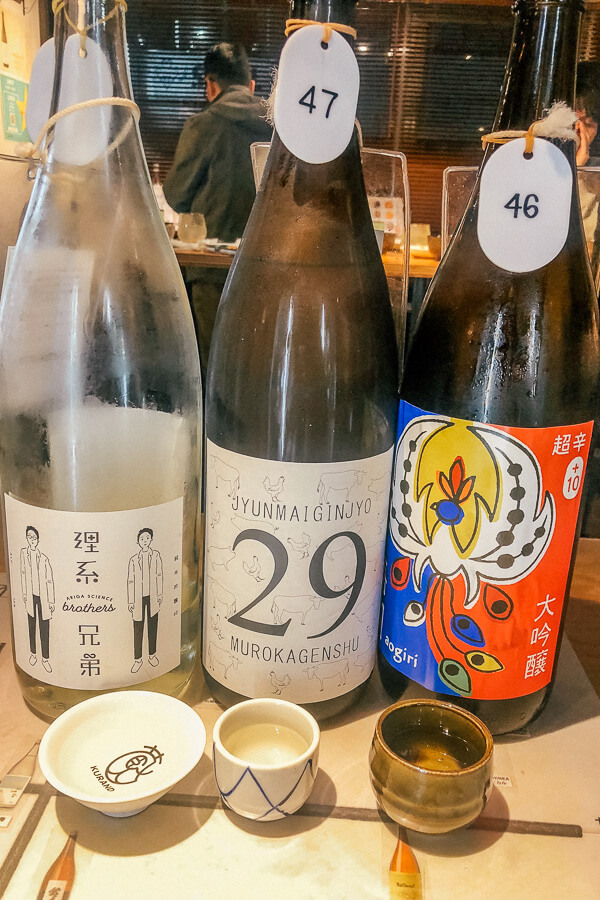
It’s also worth strolling the Kabukicho red-light district – you’ll know you are in the right place when you see the giant Godzilla head peeking over the top of Toho Cinema and Hotel Gracery!
We came here on our very first visit to Japan in 2013 to visit the famous Robot Restaurant, which unfortunately closed during COVID.
Nearby you’ll discover the Shinjuku Golden Gai , a maze-like area of small alleyways with little bars and local izakayas scattered around.
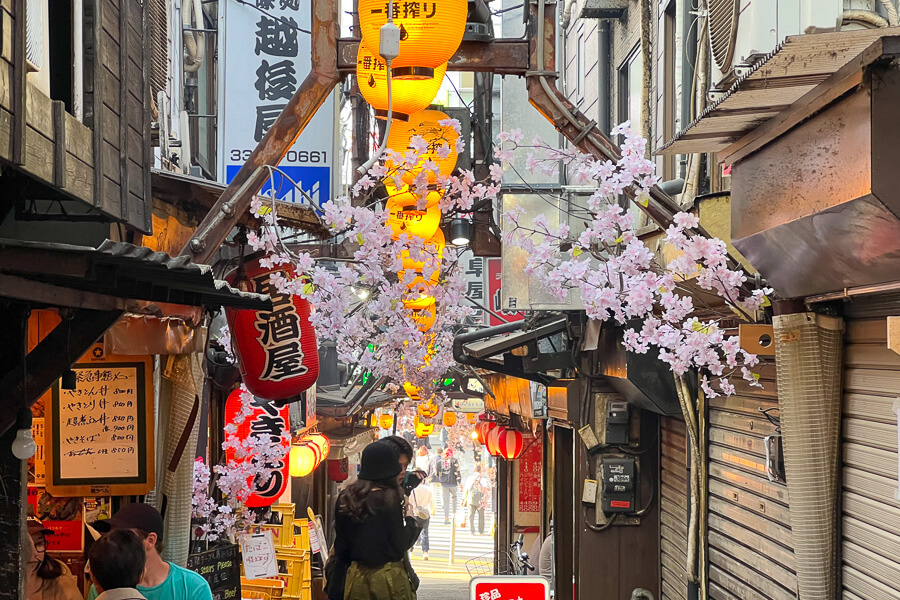
Another popular izakaya street is found near the train tracks at Omoide Yokocho – or Piss Alley as it is affectionately known! This small alleyway comprises local eateries where you sit shoulder to shoulder with Japanese businessmen, eating grilled skewers of meat and drinking beer.
Lastly, don’t miss the famous Shinjuku 3D cat billboard ! I stood here for at least 15 minutes watching the lifelike animated cat on the giant billboard above. You’ll find it around the corner from Omoide Yokocho here .
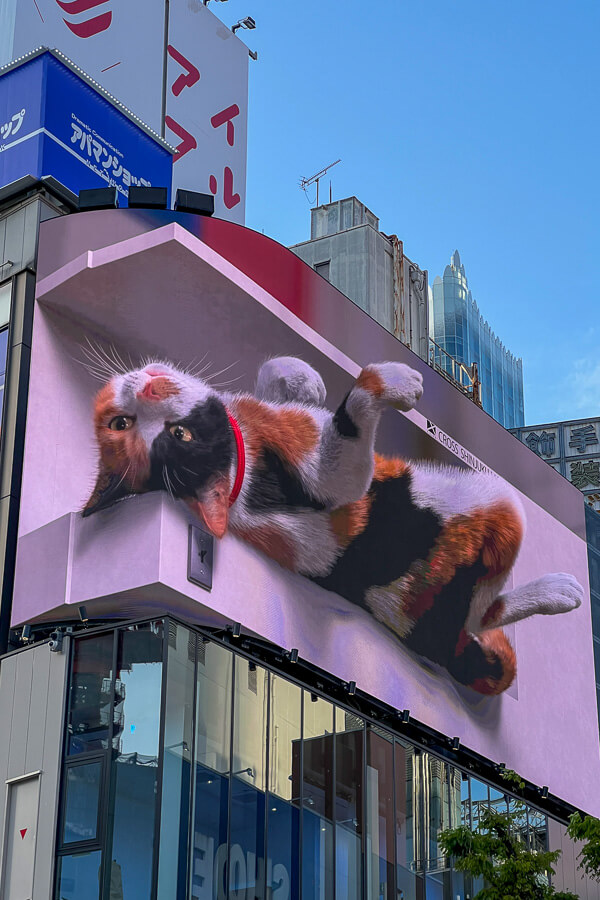
Asakusa, Senso-ji and Tokyo Skytree
In the morning, make your way to the traditional Asakusa district and one of Tokyo’s most famous temples, Senso-ji. As one of the main tourist areas in Tokyo, this area gets busy! So it’s a good activity to do earlier in the day, although many of the shops won’t open until 10am.
You’ll begin by stepping through the large Kaminarimon lantern gate, marking the entrance to Senso-ji temple and leading into Nakamise Shopping Street.

This bustling street is lined with numerous souvenir shops, food stalls and other treats. Sample local food while browsing the different shops, but please note that in Japan it is considered rude to walk and eat (you might see signs asking you to stand outside the food vendors to eat in many food markets around the country).
Continuing along the street, you’ll soon reach Senso-ji – Tokyo’s oldest Buddhist temple.
Open: Daily 6am – 5pm Entrance: Free
Explore Asakusa on an informative rickshaw tour . Pass temples and shrines, explore quirky neighbourhoods, venture through Sumida Park and traverse historic streets with a local guide.
If you’re interested in visiting a cat cafe, near Senso-ji you’ll find a great ethical option at Cat Cafe Asakusa Neko-en . Here, the cats are all rescues and available for adoption. Please re-consider visiting any other animal cafes, particularly exotic animal cafes such as owl cafes or hedgehog cafes – these aren’t ethical or sustainable places.
After exploring the temple grounds, you can head to the Tokyo Skytree . Until the opening of Shibuya Sky, Tokyo Skytree was the most popular observation deck in Tokyo!
Standing at 634 metres tall, it is Tokyo and Japan’s tallest tower! It has the highest observation decks in Japan – the lower deck (Tembo Deck, 350 metres) and upper deck (Tembo Galleria, 450 metres). Unlike Shibuya Sky, both decks are enclosed and protected from inclement weather.
It is recommended to buy tickets in advance, to avoid long queues for tickets (particularly on weekends).You can buy a ticket just for the lower Tembo Deck, or a combined ticket for both the Tembo Deck and Tembo Galleria. Prices are cheaper for tickets bought before the day of visit. You can check prices and book here.
Open: Daily (opening times vary, usually from 10am – 9pm but check first) Entrance: Varies based on ticket type – official prices start from ¥1800 but you can usually get cheaper tickets during non-peak periods by booking in advance with Klook .
Akihabara
Akihabara is one of my favourite places in Tokyo. The minute I step out of the train station and onto the vibrant streets, surrounded by flashing neon billboards on every possible building surface, I always get the biggest buzz.
Akihabara Electric Town, or “Aki” as it is affectionately called, is famous for its electronic shops and pop culture fans. Here you will find all kinds of electronics and gadgets, Japanese pop culture anime including anime, manga, video games and toys, maid cafes and other themed restaurants as well as many video arcades and game centres.
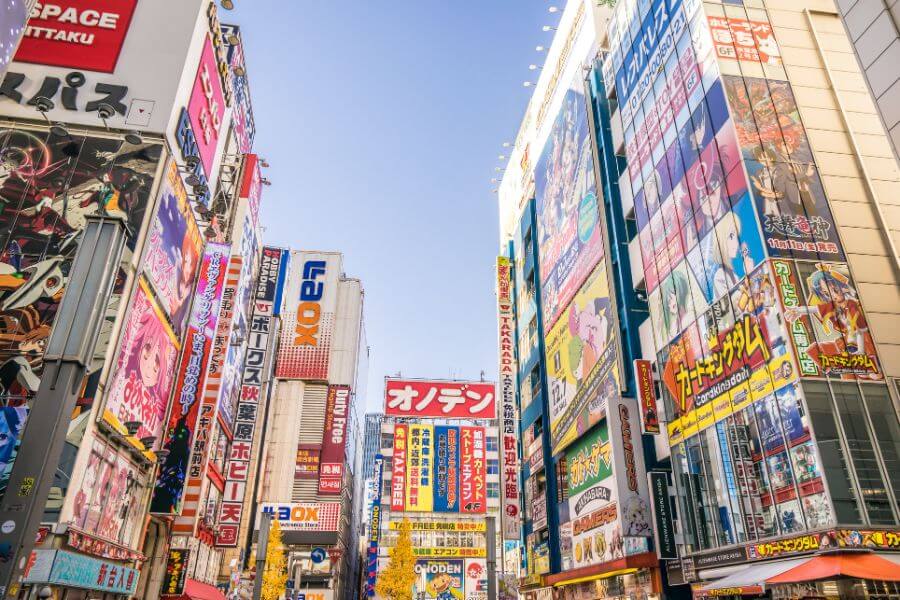
Spend most of your time here exploring the many, many stores. Some of my favourites include Mandarake, Super Potato and Book Off. Akihabara is also the place in Tokyo to visit a cosplay maid cafe. You can pre-book this experience here.
For a fun activity, zoom around the streets of Akihabara on this go-kart tour . 1 or 2-hour experiences are available, and you’ll need to bring an International driver’s licence.
Get more information on this highly-rated memorable experience .
For lunch, we decided to try the Akihabara location of Gyukatsu Motomura . This bustling restaurant was one of my favourites on our most recent trip. The concept here is beef katsu, but you cook it yourself on a stone plate to your liking. It comes as a set meal with rice, miso soup, cabbage and a few sauces, and it was the tastiest katsu I’ve EVER had!
We had to line up for nearly 30 minutes even at 2pm, but it was SO worth it!
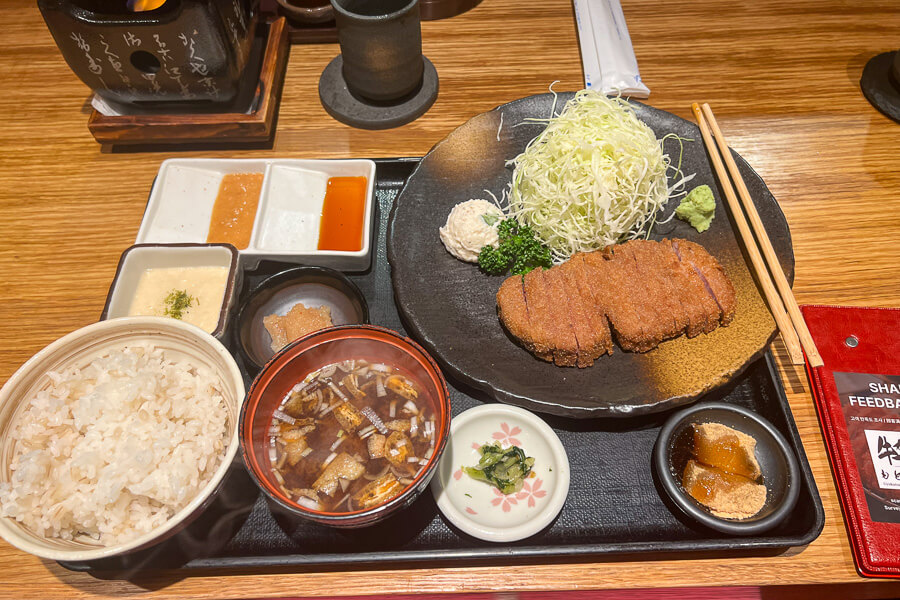
If you are looking for a nearby dinner spot, we had a great local izakaya experience at Darumasakaba in Kanda.
We were the only foreigners in this downstairs restaurant packed with locals, but the friendly owner found us a seat at the bar, and with his help and Google translate we worked our way through the menu in Japanese. One of those nights that was an experience we won’t forget anytime soon!
Bonus: Nezu Shrine
If you have daylight time remaining, a short train ride away will take you to Nezu Shrine . This is one of Tokyo’s underrated gems, off the beaten path for the majority of tourists when we last visited.
At Nezu shrine, you can wander through numerous orange torii gates leading to a small, tranquil shrine, reminiscent of the popular Fushimi Inari in Kyoto.
Open: Daily 5am – 6pm Entrance: Free
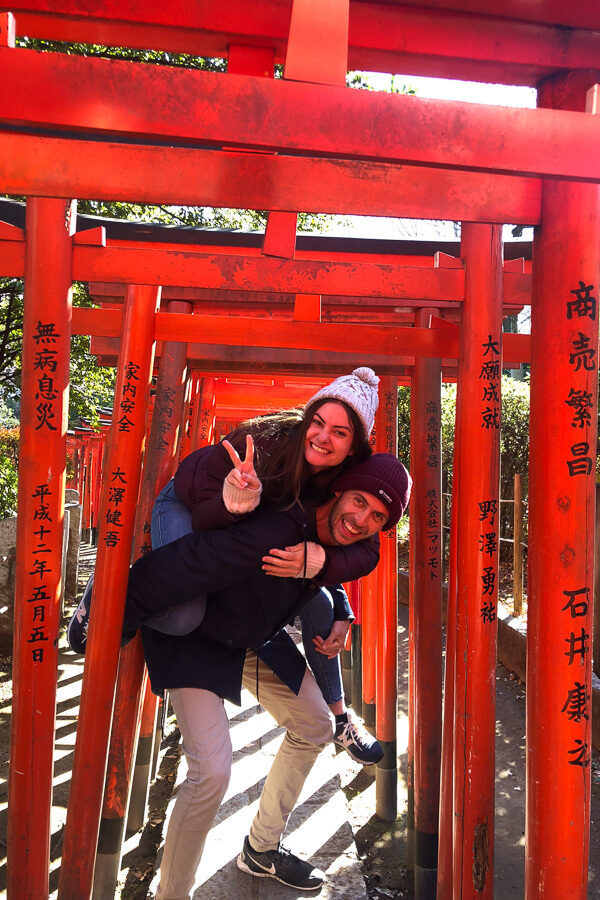
Day 4: Tsukiji Market, TeamLab Planets & Ginza
Tsukiji market.
A quintessential Tokyo experience I highly recommend is passing up on a hotel breakfast one morning in favour of a fresh sushi breakfast instead at Tsukiji Outer Market.
Tsukiji, the biggest fish market in the world, moved its wholesale operations to the new Toyosu Market in 2018. However, the iconic Tsukiji Outer Market, consisting of restaurants and small market stalls, remains in its original location in the Chuo City district.
Here you can sample some of the freshest sushi and seafood in the world for breakfast.
On my most recent visit in April 2023, we enjoyed fresh tuna and salmon donburi (rice bowl) at Tsukiji Donburi Ichiba . This tiny shop has counter seating for just 5 customers at a time, making it an intimate affair.
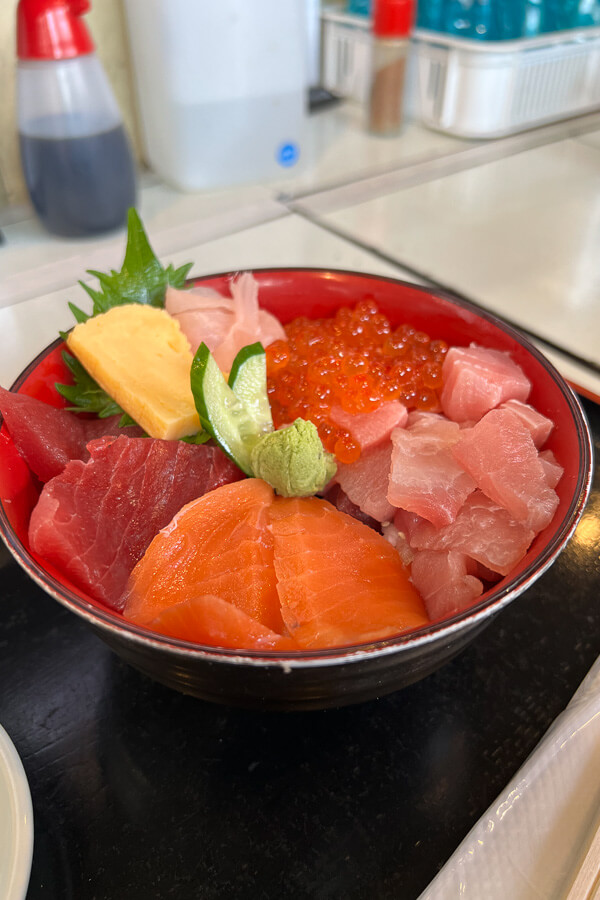
Popular sushi restaurants at Tsukiji Markets include Tsumugi, Tsukijiro, Motodane and Sushizanmai (a chain store across Tokyo, but this is their Main Branch). You’re also guaranteed to find a perpetual queue lining up outside Sushi Dai.
You can also try a variety of snacks from the various market stalls – we tried tomago (egg) on a stick, grilled unagi (eel), delightful strawberry mochi and my all-time favourite, delicious taiyaki (steaming hot custard-filled pastries in the shape of a fish) served by a lovely old lady at Tsukiji Sanokiya.
I’m drooling just thinking about those taiyaki – they were the best we had during our one month trip to Japan!
Wander the markets at your own pace, or join a local guide on a food tour .
TeamLab Planets
After eating way too many delicious things, we caught the bus a short ride down the road to TeamLab Planets. This was my second visit to a TeamLab exhibition, after visiting TeamLab Borderless a few years ago.
The TeamLab interactive displays are truly mesmerising and a work of art, so it’s highly worth visiting one of their displays.
At the time of writing in November 2023, TeamLab have exhibitions in Tokyo at TeamLab Planets and in Osaka at TeamLab Botanical Garden. In February 2024, TeamLab Borderless is due to reopen at a new location in Azabudai Hills.
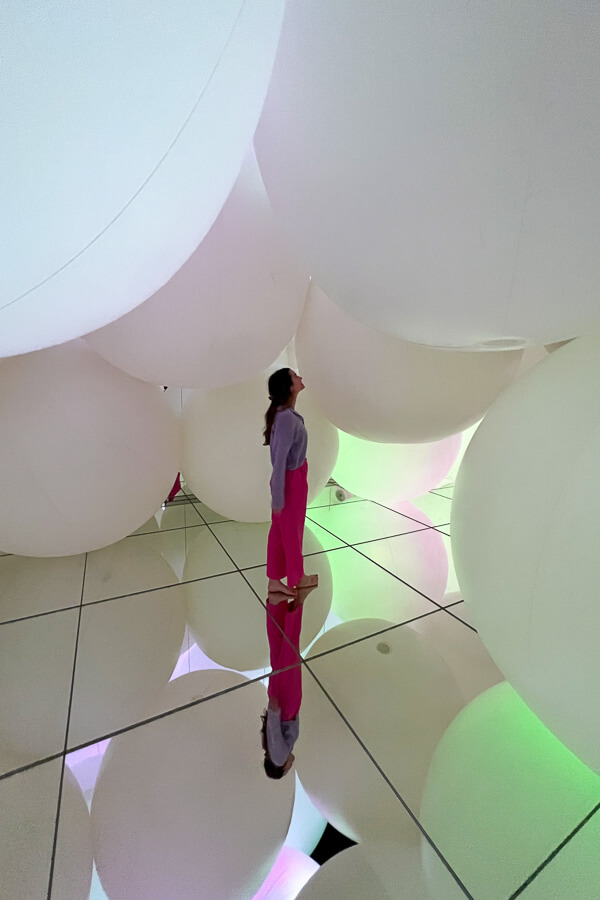
At TeamLab Planets , you walk through water, rooms full of sparkling floor-to-ceiling lights and giant colourful balls, and sit beneath a garden of flowers. It’s a surreal experience, and worth visiting at least one of the TeamLab exhibitions while in Japan.
You will need to book a specific time slot for your visit, and tickets sell out in advance – so make sure to book at least a few weeks ahead! I found it easier to book with GetYourGuide , as it was easier to select time slots, however, Klook also has tickets for sale.
Open: Daily 9am – 10pm Entrance: ¥3,800 – timed entry tickets need to be purchased in advance
Make your way to the high-end, glamorous shopping district of Ginza.
Considered the mecca of luxury shopping in Tokyo, we spent most of our time wandering around the posh streets and admiring the lavish store displays. Make sure to walk past the Bulgari flagship store to see the glittering serpent wrapped around the building.
Other fun things to do in Ginza include visiting the Art Aquarium Museum (a museum of goldfish!), visit UNIQLO’s biggest flagship shop or watch a kabuki play and the Kabukiza Theatre.
After window browsing or shopping up a storm, you can try Michelin Bib Gourmand rated tempura at Tempura Abe Honten – but be prepared to queue! Another recommended spot is Ginza Hanadaikon, which serves delicious wagyu beef.
Day 5: Hie Shrine, Imperial Palace, Tokyo Station & Ikebukuro
Start your day with a morning visit to Hie Shrine , another spot in Tokyo with the famed orange torii gates.
The entrance to Hie Shrine is impressive, with a large torii gate standing tall before the long flight of steps leading to the top of the hill. Here you will find the Hie-jinja shrine, a guardian shrine of the Imperial Palace (which you’ll also be visiting later today).
On the western entrance, you’ll find a tunnel of torii gates lining the steps leading to the back of the temple.
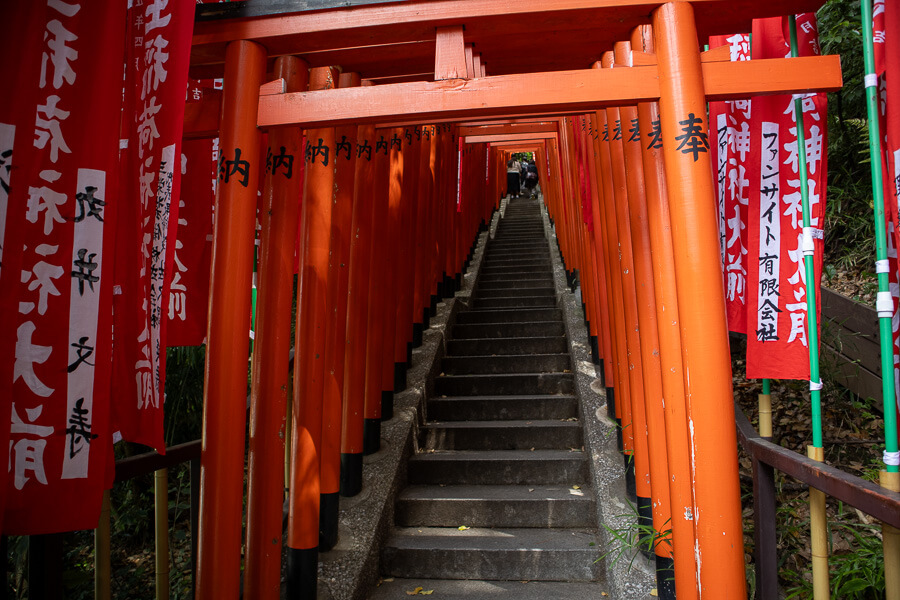
Imperial Palace Gardens
Hop on the Chiyoda line at nearby Kokkai-gijidomae Station and travel 3 stops to Nijubashimae Station. You’ll surface at the entrance of the Kokyo Gaien National Garden plaza and views of the Imperial Palace.
Located on the site of the former Edo Castle, the Imperial Palace is home to the Emperor of Japan. The palace is surrounded by impressive gardens, massive moats and towering stone walls.
The inner grounds and palace are closed to tourists, but you can explore the expansive and picturesque East Gardens for free most days of the week.
Open: Generally 9am-5pm but varies seasonally. Closed Mondays and Fridays. Check official opening times and dates here Entrance: Free
Tokyo Station
The next attraction on your Tokyo itinerary for today is the massive Tokyo Station . Much more than just a train station, Tokyo Station is a historic landmark and bustling hub of shops, restaurants and more.
Walk from the East Gardens to the Marunouchi Square entrance of the station. Admire the classical red-brick facade that has been carefully restored to its original state, standing out from its neighbours of modern skyscrapers.

Head underground and explore the maze-like streets below the station. Tokyo Station has unique themed sections. Make sure to visit Character Street, with shops selling Japanese anime goods, including a small Pokemon store.
Grab lunch from one of the many restaurants on Ramen Street, where you can find all kinds of ramen styles from across Japan.
Ikebukuro
Spend the rest of your day exploring Ikebukuro , which I best describe as a smaller but still vibrant version of Shinjuku. On our last two trips to Tokyo, we stayed in Ikebukuro at one of our favourite budget accommodations in Tokyo, Kimi Ryokan.
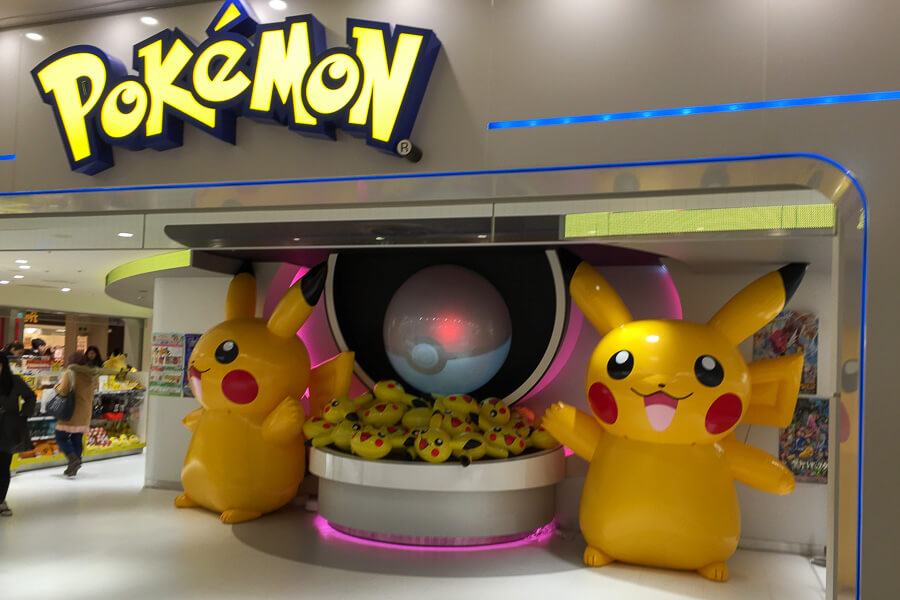
In Ikebukuro, you’ll find many electronic stores and department stores, some great coffee shops (like Mermaid Coffee Roasters) and brilliant ramen restaurants (hello, Kikanbos).
Head to Sunshine City Mall, home of the mega Pokemon Center, and the world’s largest gashapon (gacha gacha) capsule toy store at Gashapon Ikebukuro.
Day 6: Experience the Magic of Disneyland or DisneySea
Get ready for a magical day at Tokyo Disneyland ! This was the first Disney theme park outside of the United States when it opened in 1983. Today, Tokyo Disneyland has seven different themed worlds.
Tokyo Disneyland is easily accessed through public transport. Get off at JR Maihama Station on the JR Keiyo/Musashino Line and jump on the Disney-themed monorail to arrive at Tokyo Disneyland Station.
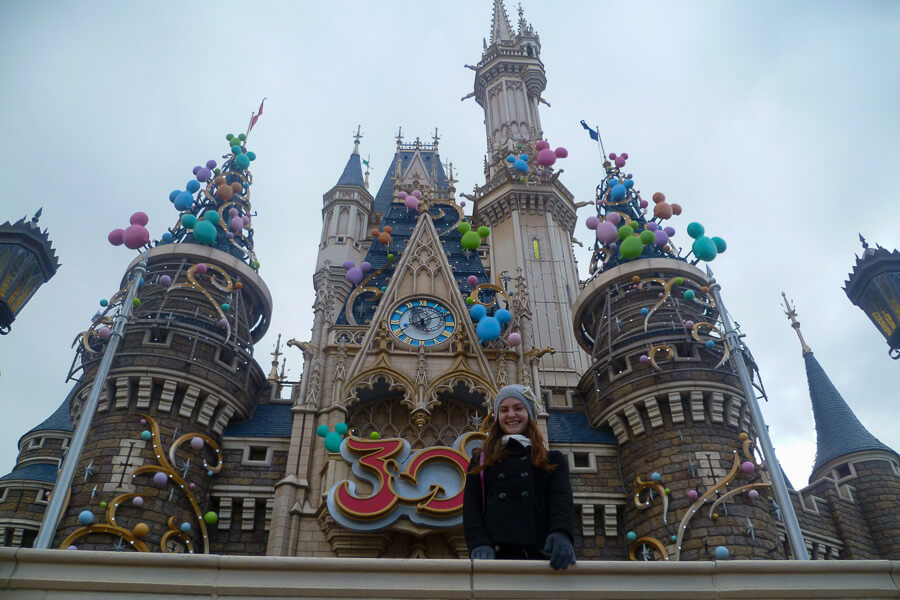
Tokyo is also home to the only DisneySea in the world!! On our second visit to Tokyo, we chose to spend the day at DisneySea after doing Disneyland on our first trip. DisneySea was spectacular, and many argue that its rides are better than Disneyland
I think if you haven’t been to Disneyland anywhere else before, you should stick with Disneyland Tokyo, otherwise seriously consider visiting DisneySea while in Tokyo as it is arguably the better theme park, and you can’t visit one anywhere else in the world!
- 1 Day Pass (Disneyland or DisneySea)
- 2 Day Pass (Disneyland, DisneySea or both)
Open: Daily, usually from 8am to 10pm Entrance: From ¥8,900
There are some incredible day trips from Tokyo that you should consider adding to your 7 days in Tokyo itinerary.
Hakone is a picturesque hot spring town that is a lovely day or overnight trip from Tokyo. It’s worth spending a night at a traditional ryokan if your schedule and budget permits, otherwise a day trip is a great way to soak in the incredible scenery and unique attractions in this mountainous area.
I visited Hakone on my very first trip to Japan in 2013. It is possible to do a self-guided tour of Hakone using the Hakone Freepass. We followed the popular Hakone Round Course itinerary which takes you through a loop of Hakone’s main attractions using a range of different modes of transport.
We caught the Hakone Ropeway where we crossed over the Owakudani Valley, famous for its volcanic activity and sulphur vents. You can even get views of Mt Fuji on a clear day! From here, you jump on a scenic boat cruise across Lake Ashi, where you’ll spot the large red torii gate of the Hakone Shrine on the lake’s edge.
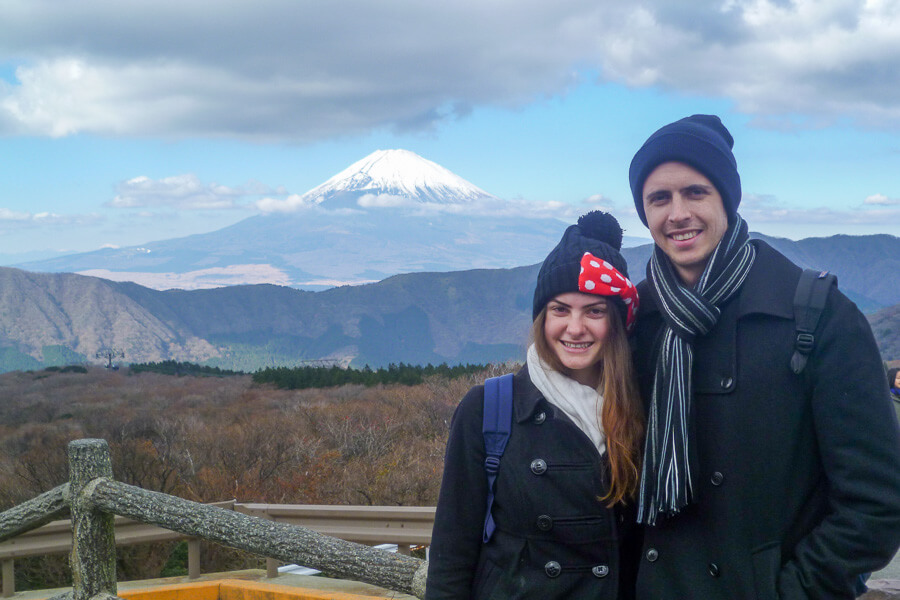
You can easily purchase a Hakone Freepass online which includes unlimited public transport (including the boat cruise across Lake Ashi). This 2-day pass is worthwhile even for a day trip if you are doing the full loop course in one day as a day trip from Tokyo.
If you prefer to join a guided tour with convenient bus transport included, consider this Hakone One Day Trip from Tokyo .
It includes a visit to the panoramic Mt Fuji Fifth Station, shopping at Gotemba Premium Outlets, riding the Hakone Ropeway, exploring the Owakudani Valley and a scenic cruise across Lake Ashi.
Lake Kawaguchi (Fuji Five Lakes area)
I recommend spending a few nights in Fuji Five Lakes if possible, otherwise to visit the best viewpoints of Mt Fuji , a day trip to Lake Kawaguchi is the way to go!
To visit Lake Kawaguchi on a day trip, joining an organised bus tour is the easiest and most convenient way to do so. Public transport in Lake Kawaguchi is limited and the main sights are spread across the town, making it hard to get to without your own transport in a day.
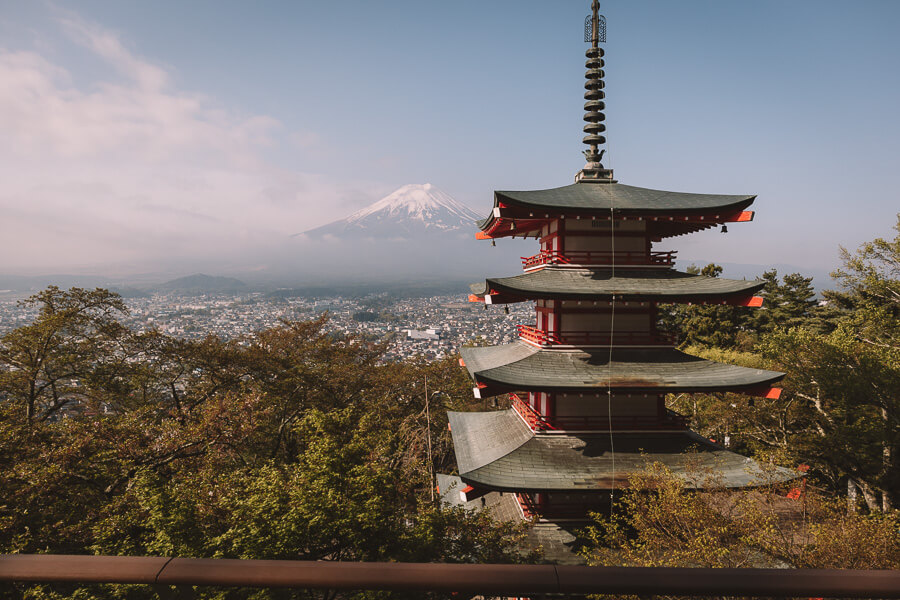
This tour takes you to the best Mt Fuji viewpoints in Kawaguchiko, including the beautiful Chureito Pagoda , Oishi Park and a visit to a traditional village on an easy and affordable day trip from Tokyo.
Another very popular Mt Fuji tour is the Mt Fuji Classic Route Day Tour .
This tour includes a stop at the Mt Fuji 5th Station, a visit to Oshino Hakkai, a series of pools thought to have been formed by erupting Mt Fuji and a shopping trip to Gotemba Premium Outlets, one of Japan’s largest outlets.
Final Thoughts – 7 Day Itinerary Tokyo
That wraps up this itinerary for Tokyo, 7 days of exploring the vibrant, cultural and quirky neighbourhoods that make up the sprawling metropolitan oasis that is uniquely Tokyo.
Whether it’s your first time exploring Tokyo, or even your fifth like me, this 7 days Tokyo itinerary will ensure there is never a dull moment!
If you have any questions about this 1 week in Tokyo itinerary, please feel free to include them in the comments below. Don’t forget to check out my other Japan guides to help plan your trip!
Japan Itineraries:
- A Perfect 4 Weeks in Japan Itinerary: Ultimate Travel Guide
- The Perfect 3 Day Kyoto Itinerary: How to Avoid the Crowds
- An Exciting 4 Days in Osaka Itinerary for First-Timers
- 2 Days in Takayama: Discover Traditional Japan
- Exploring Fuji Five Lakes: 3 Days in Kawaguchiko Guide
More Japan Guides:
- 15 Things to Know Before Visiting Japan for the First Time
- Is Japan Expensive? My EXACT Japan Trip Cost Breakdown Revealed
- 30 Unmissable Experiences for Your Japan Bucket List
- How to Easily Visit the Chureito Pagoda from Tokyo
- Koyasan Temple Stay: Essential Travel Guide & Tips
- 10 Most Mesmerising Views of Mt Fuji from Kawaguchuiko
- Cool Stuff to Buy in Japan: 20 Souvenirs Actually Worth Buying
TRAVEL PLANNING RESOURCES My tried and tested recommendations to make your next trip easier
🛡️ Travel Insurance: For my fellow Aussies, I use CoverMore for domestic and overseas travel insurance and they've been great to deal with. Travel with peace of mind knowing you're covered for unexpected events, ensuring a worry-free journey.
🌐 Stay Connected: After trying an eSim for the first time when travelling Japan & Europe for over 4 months in 2023, I'm officially converted! Thanks to Airalo , gone are the days of needing to physically swap plastic sim cards every time you enter a new country. Stay connected wherever you go by easily and affordably purchasing an eSim for all your travel destinations.
🚗 Easy Car Rental : Enjoy hassle-free car rentals on DiscoverCars with a wide range of options, competitive prices, and excellent customer service. I often find it's cheaper than booking direct, and I can compare a large range of suppliers to make sure I'm getting the best price.
💱 Access Local Currency: I've been using Wise in my business and on my travels to save on currency exchange and it's been a game changer! Wise provide a transparent and cost-effective way to access and manage local currency, with minimal fees and the best exchange rates compared to the traditional travel cards which sneakily charge extra fees and usually give you a poor exchange rate. Find out more here .
🏨 Accommodation: I book all my accommodation through booking.com . Discover their vast selection of accommodations worldwide, with great deals and flexible booking options. Plus, if you join their Genius Loyalty program, you get special benefits and discounts on selected stays.
🌟 Attractions & Tours: GetYourGuide is my preferred platform as they make it super easy to compare different tours, book experiences and get the best prices for tours across the world. I've downloaded their mobile app to have all my bookings in one place to easily pull up details when I've got multiple tours booked.
📸If you're wondering what I've used to capture the photos in this article, you can see what's in my camera bag here .
☕ Finally, if you found this free guide useful, you can buy me a coffee to say thanks :)
Just a quick note to let you know this post may contain affiliate links . At no extra cost to you, I receive a small commission on purchases made through these links. By doing so, you are supporting this blog and allowing me to continue providing you with free high-quality travel guides. Thank you!
8 thoughts on “A Fun 7 Day Tokyo Itinerary: Complete 1 Week in Tokyo Guide”
Hi, your post is very informative and I liked that you included some budget friendly options. We’re planning a 7 day trip to Tokyo in August for 3 people. I wanna ask how much is your recommended budget? Thanks in advance!
Hi Trixie! In April 2023, we averaged AUD $183 per person per day for our 4 weeks in Japan, including accommodation. You can see the detailed breakdown here: https://tessomewhere.com/4-weeks-in-japan-itinerary/#1_Month_in_Japan_Cost
If you are staying in Tokyo and not travelling to the cities, your cost might be a bit lower due not to catching the shinkansen. We tend to spend a lot on eating out too, and not as much on activities 🙂
Hi, your post is really helpful and very informative. I’m planning to visit Tokyo in December. I wanna ask if the itinerary will be the same like one you post here? Thanks in advance!
Thanks! Yes, you can follow a similar itinerary. December is a great time to visit, it will be very festive with lots of Christmas light displays and themed displays in shops etc 🙂 Just remember to check for public holidays etc when planning your itinerary (especially for visits to places like Disneyland etc as these will be even busier than normal)
Hi Tess, I very much appreciated finding your Tokyo itinerary. I’m enquiring if you can advise the best way to visit the Snow Monkeys and Snow Resort Yeti. I’d like the family to experience snow & skiing without the travel to Hakuba and the like. Thank you for any advice x
Hi Mich, I’m not familiar with Snow Resort Yeti but for the Snow Monkeys, I recommend spending a night or two in Nagano (1.5 hours on the shinkansen from Tokyo) and then doing a day tour to see the Snow Monkeys – probably the easiest option for the family!
Klook offer a day tour with transfers from Nagano Station that might suit – see here: https://klook.tp.st/JDuROpZD
I’ll also be departing from Perth, do you have any advice on air travel? Thank you
Hi Mich! Sure, what would you like to know? I usually fly to Japan via a stopover in Singapore or Kuala Lumpur, but the ANA direct flight from Perth to Tokyo is restarting in October if you’re interested in the fastest and most direct journey to Japan from Perth. Use Google Flights or Skyscanner to compare the cheapest and best flight options for your travel dates, and then book directly with your chosen airline 🙂
Leave a Comment Cancel reply
Save my name, email, and website in this browser for the next time I comment.

TOKYO ITINERARIES (with Budget)
by thepinay solobackpacker | Jan 2, 2023 | Itinerary , Japan , Tokyo , Travel Guide | 0 comments
Tokyo exudes with timeless appeal. This lively capital of Japan is more than just the towering skyscrapers, blinding neon-lights, giant video screens and surreal sci-fi streets. It’s a massive city packed with character and heritage where the old and the new blissfully blend – from age-old forests and garden to ancients temples and shrines. And ooh, Tokyo is a food haven, do not leave the city without indulging in local dishes. In fact, Tokyo savors the title of “City with Most Michelin-Star Restaurants”. But if you think Tokyo is pretty expensive, I say, it is manageable. It is possible to travel to Tokyo without breaking the bank. Here are my sample Tokyo itineraries with budget, good for 3 days to 6 days trip.
TRAVEL BLOG CONTENTS
TOKYO ITINERARY #1 : TOKYO + DISNEYLAND + FUJI 5 LAKES (LAKE KAWAGUCHIKO GROUP TOUR) + ODAIBA
Here’s a sample Tokyo itinerary , good for a 6 days 5 nights trip that includes a visit to Disneyland + Fuji Five Lakes. Feel free to tweak this depending on your schedule and budget. I’ve listed the estimated expenses if you’ll be staying in a dorm/capsule or bunk bed, this is good for a solo budget traveler. I also included the possible expenses if you are a party of two and you’ll be staying in a double room.
Hotel Bookings:
Double room (6days/5 nights): JPY 4,372/PHP 2,000 (USD 39/ EURO 33/SGD 53/MYR 164) x 5 = JPY 21,860/PHP 10,000 (USD 195/EURO 165/SGD 265/MYR 820)
Dorm/bunk/capsule (6days/5 nights): JPY 3,486/PHP 1,600 (USD 31/EURO 26/SGD 42/MYR 131) X 5= JPY 17,430/PHP 8,000 (USD 155/EURO 130/SGD 210/MYR 655).
So supposing you’ll be staying in a double room in Tokyo for 6 days 5 nights and follow the above itinerary, estimated total expenses is roughly : JPY 54,160/PHP 24,774 (USD 484.34/EURO 410/SGD 654/MYR 2,037)
On the other hand, if you’ll be staying in a dorm/bunk bed or capsule hotel for 6 days 5 nights, if you follow the itinerary mentioned above, estimated total cost is about JPY 49,730/PHP 22,748 (USD 445/EURO 376/SGD 600/MYR 1,871).
TOKYO DISNEYLAND
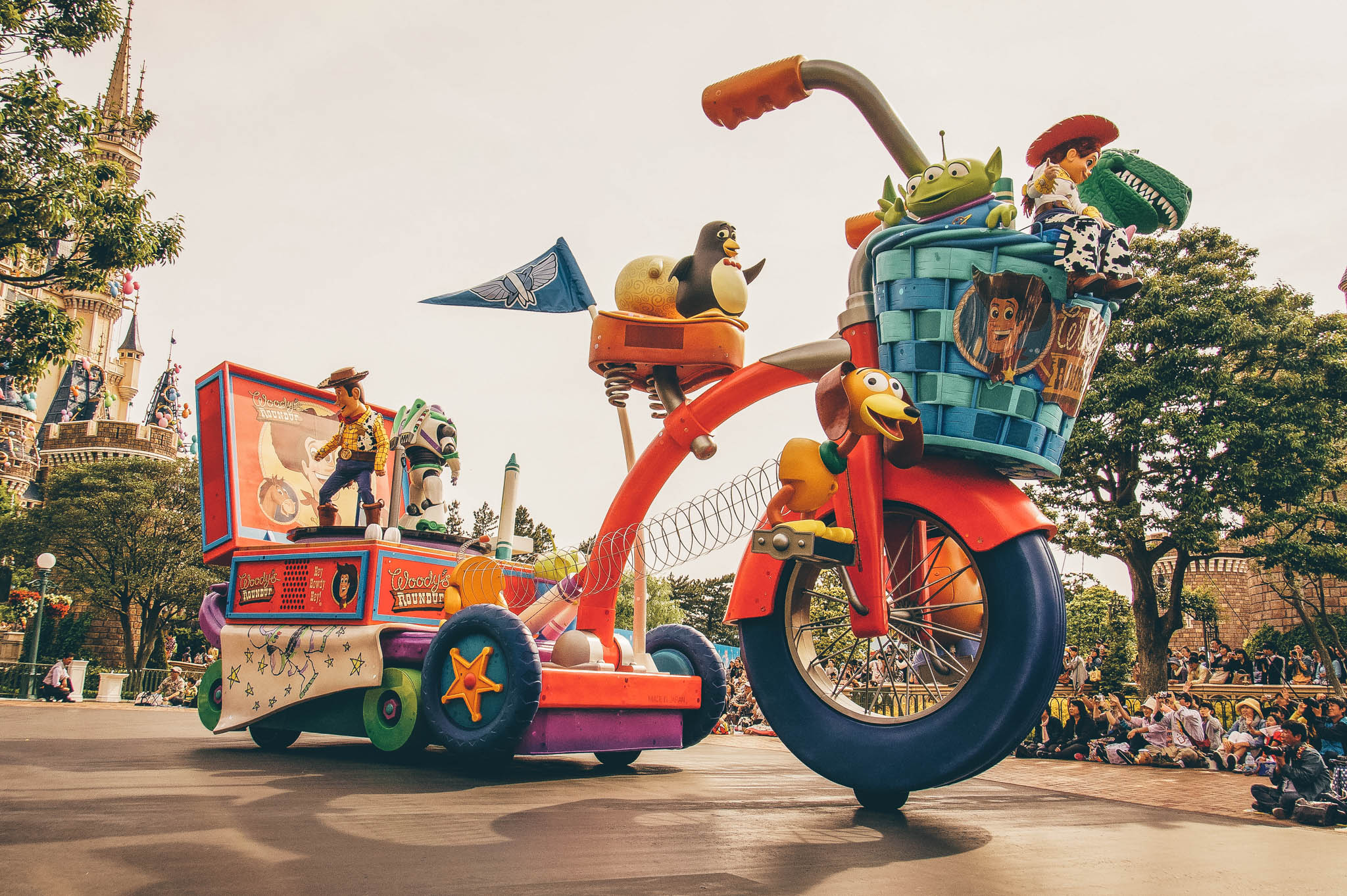
TOKYO DISNEY SEA
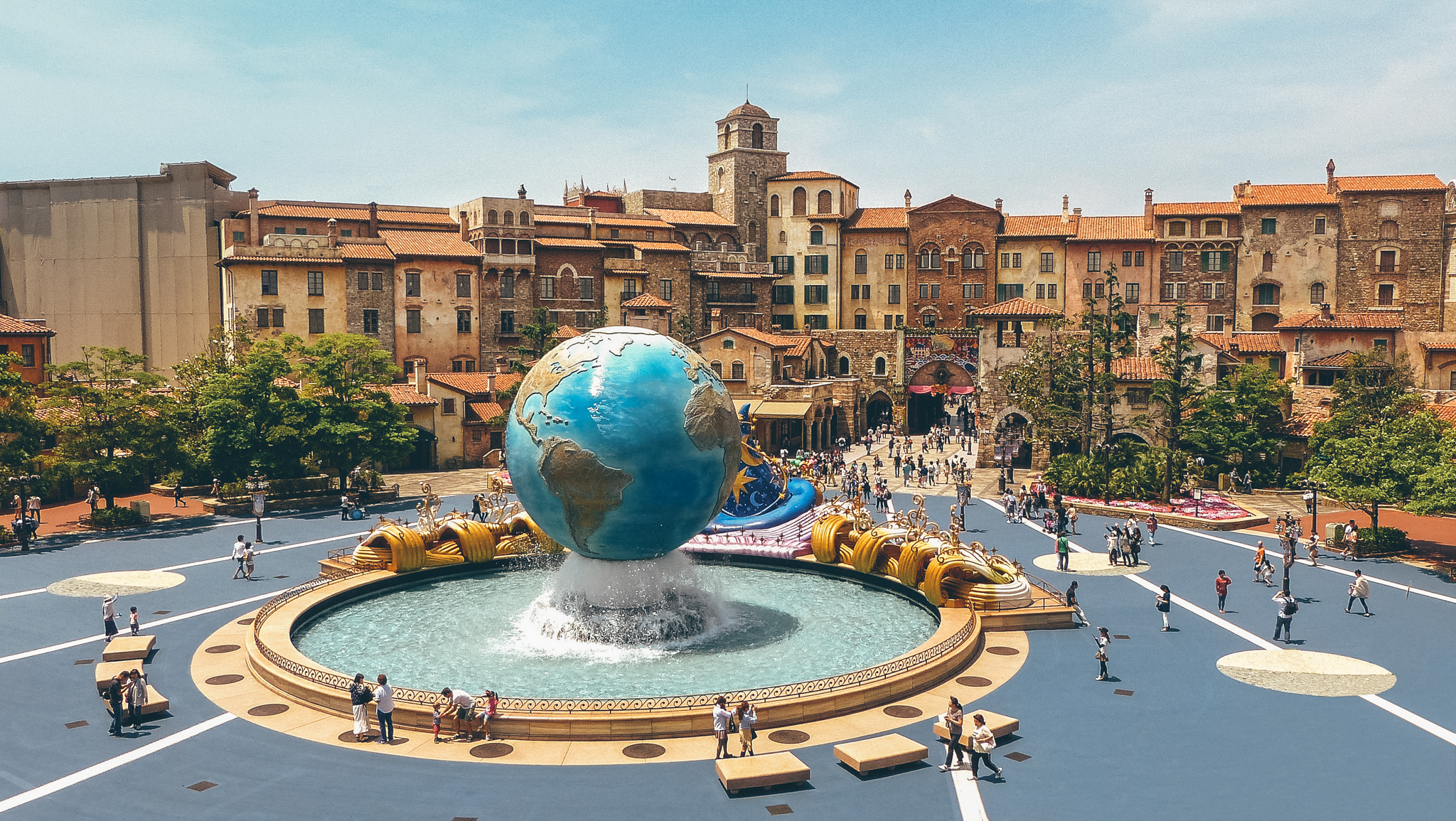
If you want to do the Fuji Five Lakes tour on your own, here’s a suggested itinerary. Take note though that the DIY tour is more expensive than joining the group tour above (see Day 3 itinerary above).
Mount Fuji Classic Route Day Tour from Tokyo
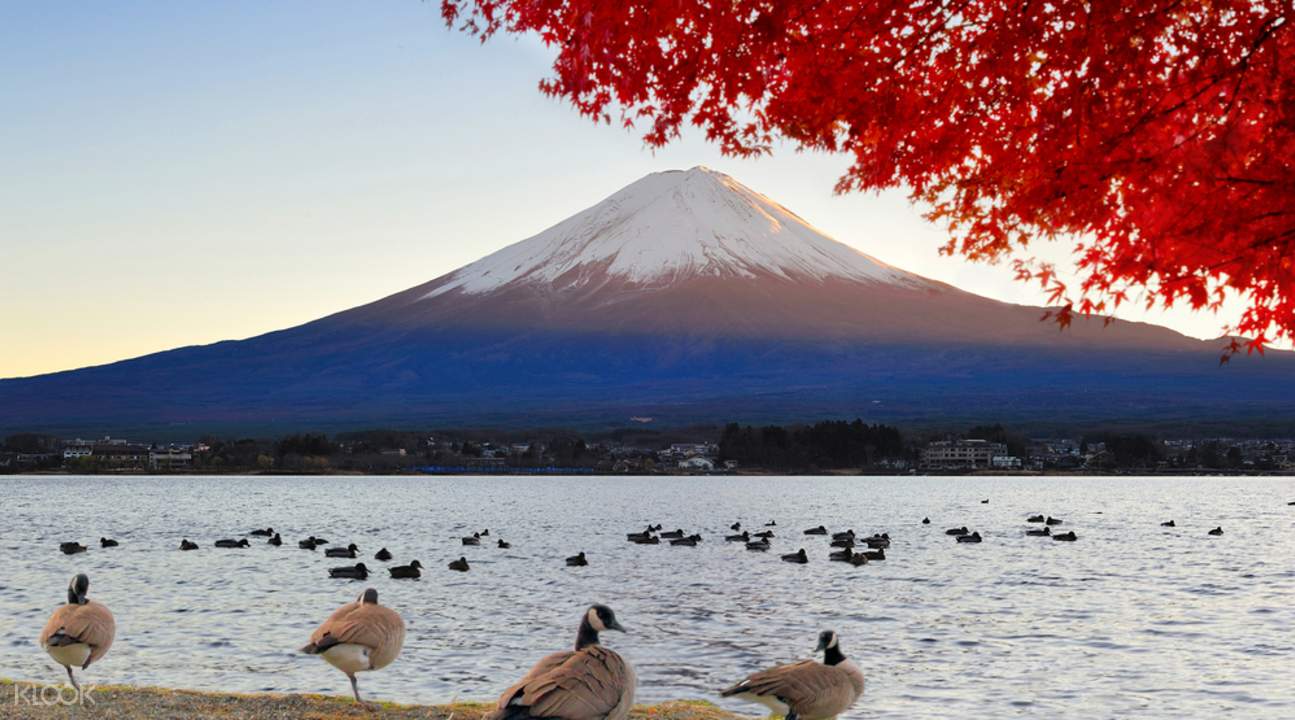
- Marvel at the natural wonders surrounding Mount Fuji and enjoy splendid views on this day tour
- Enjoy the sight of eight ponds formed from the melted snow of Mount Fuji at Oshino Hakkai!
- See the summit of Fuji and the scenery at the foot of the mountain
- Visit the Gotemba premium outlets, the biggest in Japan, and stop at Takashimaya in Shinjuku!

FUJI FIVE LAKES DIY TOUR ITINERARY
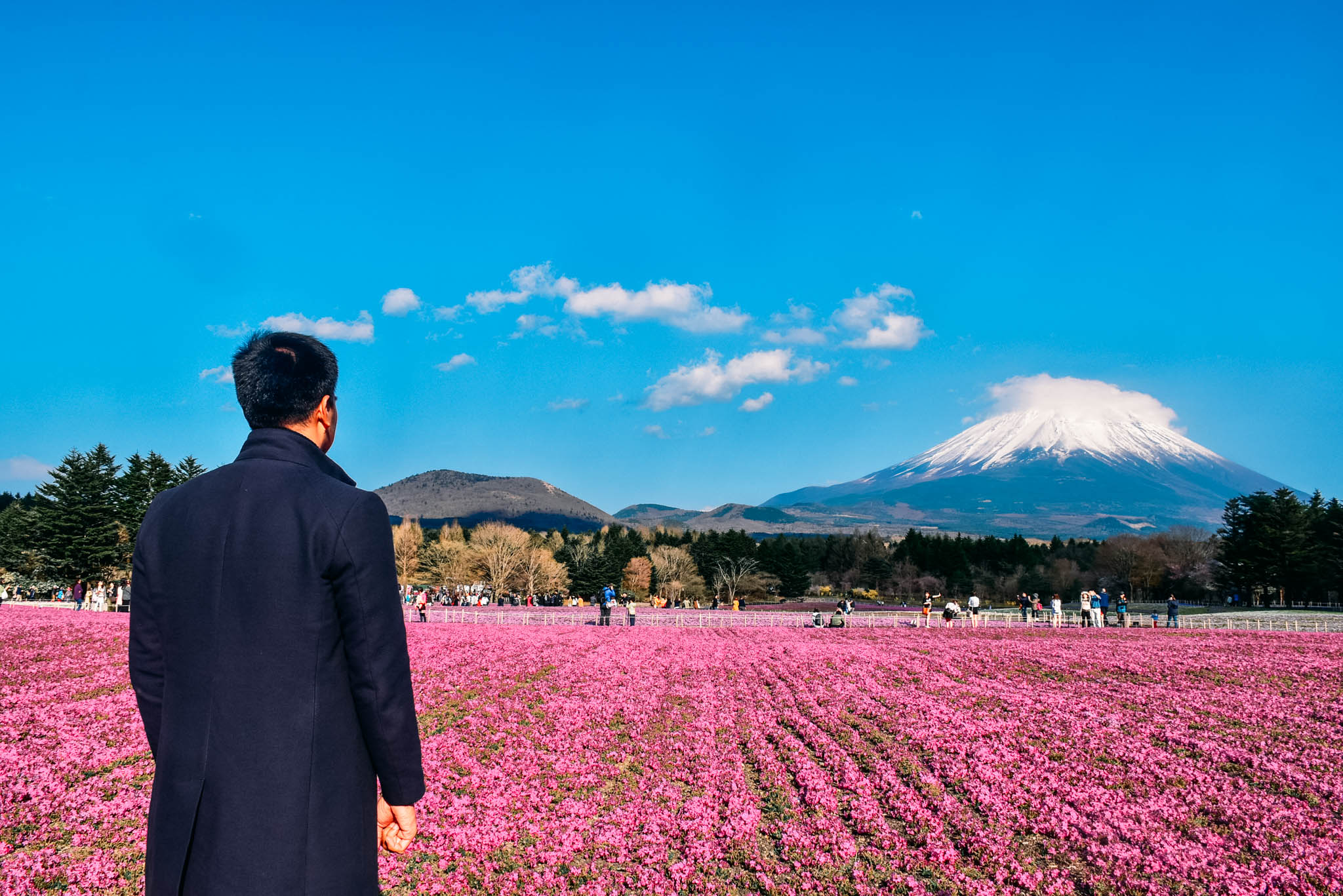
TOKYO ITINERARY # 2: TOKYO + HITACHI SEASIDE PARK + FUJI FIVE LAKES (GROUP TOUR)

I’ve listed the estimated expenses if you’ll be staying in a dorm/capsule or bunk bed, this is good for a solo budget traveler. I also included the possible expenses if you are a party of two and you’ll be staying in a double room.
WHERE TO BOOK HITACHI SEASIDE PARK TOUR
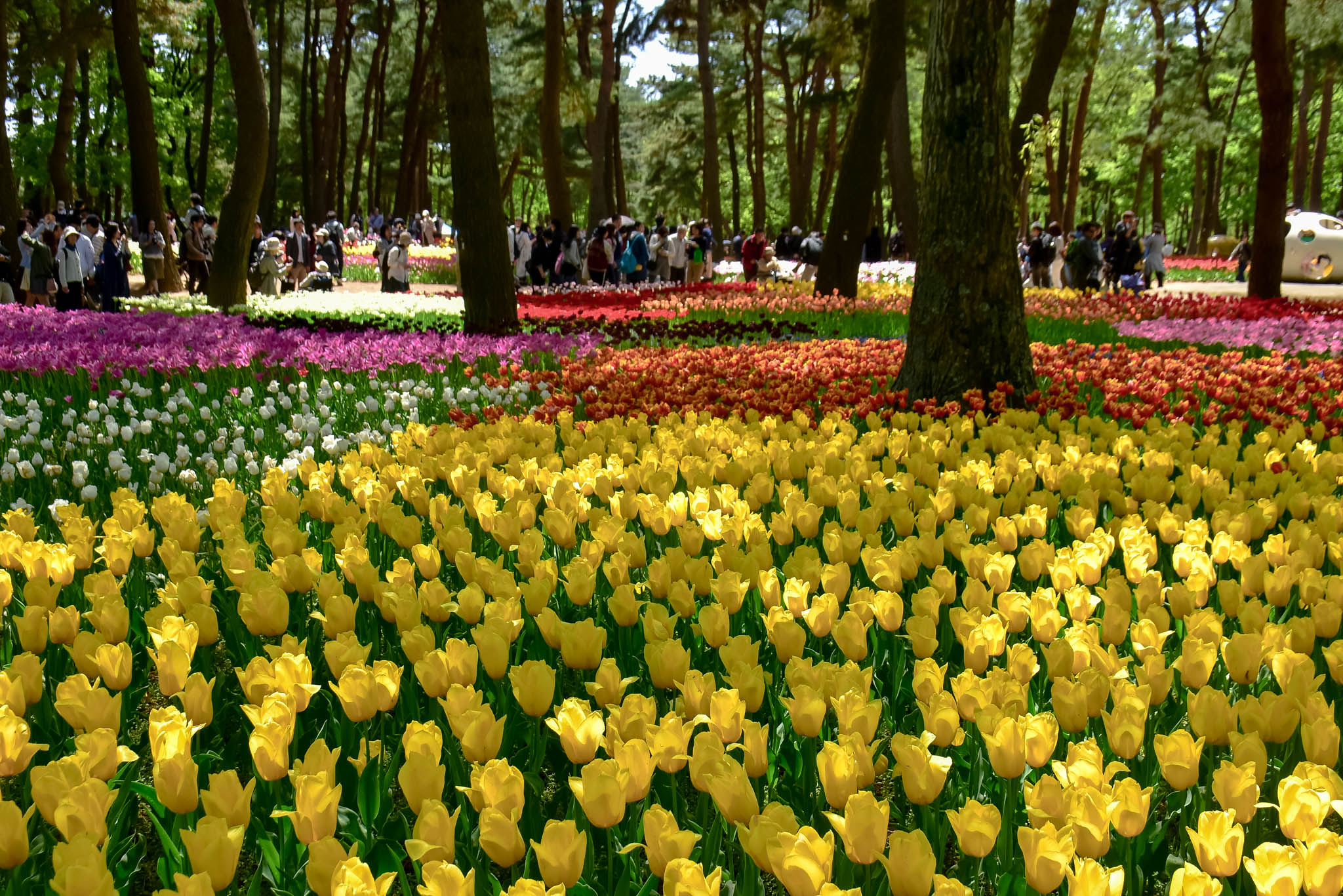
HITACHI TOUR FROM TOKYO (Kochia Hill Sightseeing Day Tour)
- Go on a trip from Tokyo to Ibaraki Prefecture to enjoy endless seafood and flowers with an English, Chinese, or Japanese speaking guide!
- More than 32,000 kochia plants can be seen for the ‘Kochia Carnival’ held every year from late September to mid-October
- See numerous varieties of beautiful, seasonal flowers blossoming over Miharashi Hill
- Enjoy a filling sushi lunch at Yamasa Seafood Restaurant, located in Nakaminato seafood market, with unlimited crab soup!
- Get a taste of autumn with pear and chestnut picking experiences, so you can try Ibaraki’s famous sweet pears
- Visit the famous spicy cod roe making factory “Kanefuku” and taste some of the products
TOKYO ITINERARY #3: (BUDGET) TOKYO + ODAIBA
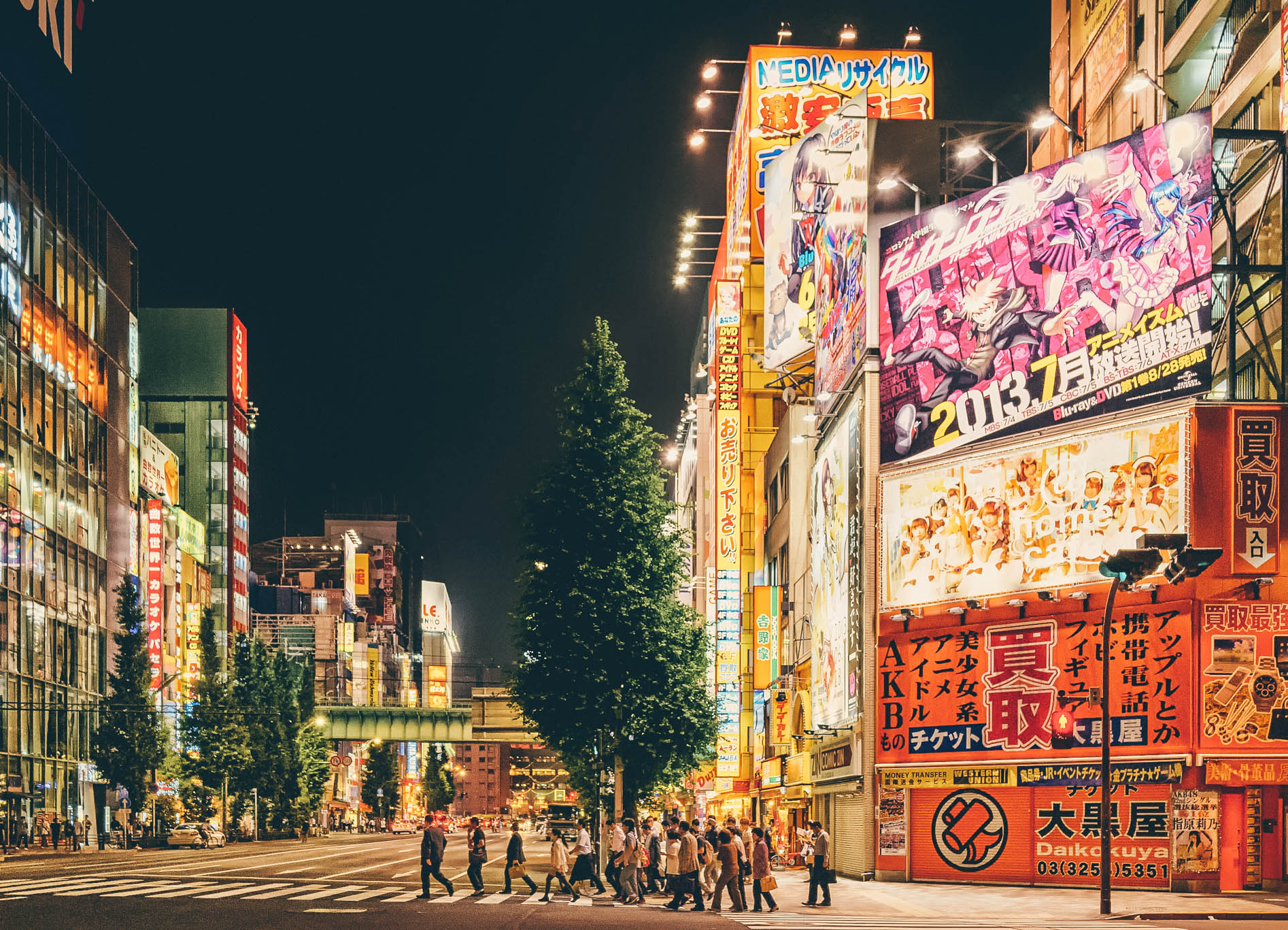
This sample Tokyo Itinerary for 4 days 3 nights is recommended for solo budget travelers. Feel free to amend this depending on your budget and schedule.
If you follow the above itinerary and you’ll be staying in a double room for about JPY 4,372/PHP 2,000 (USD 39/ EURO 33/SGD 53/MYR 164) per day, estimated total expenses is: JPY 27,027/PHP 12,296 (USD 239/EURO 203/SGD 325/MYR 1,010) for a 4 days 3 nights Tokyo trip. If for example, you’re able to book a PHP 7,000/JPY 15,387 (USD 136/EURO 115/SGD 185/MYR 5775) roundtrip ticket via Jetstar during seat sale, this itinerary will cost you around JPY 42,414/PHP 19,296 (USD 375/EURO 318/SGD 509/MYR 1,585).
If you follow the above itinerary and you’ll be staying in a dorm/bunk bed or capsule hotel, prepare around: JPY 24,548/PHP 11,168(USD 217/EURO 184/SGD 295/MYR 918) for a Tokyo 4 days 3 nights trip. If you’re able to snag a PHP 7,000/JPY 15,387 (USD 136/EURO 115/SGD).
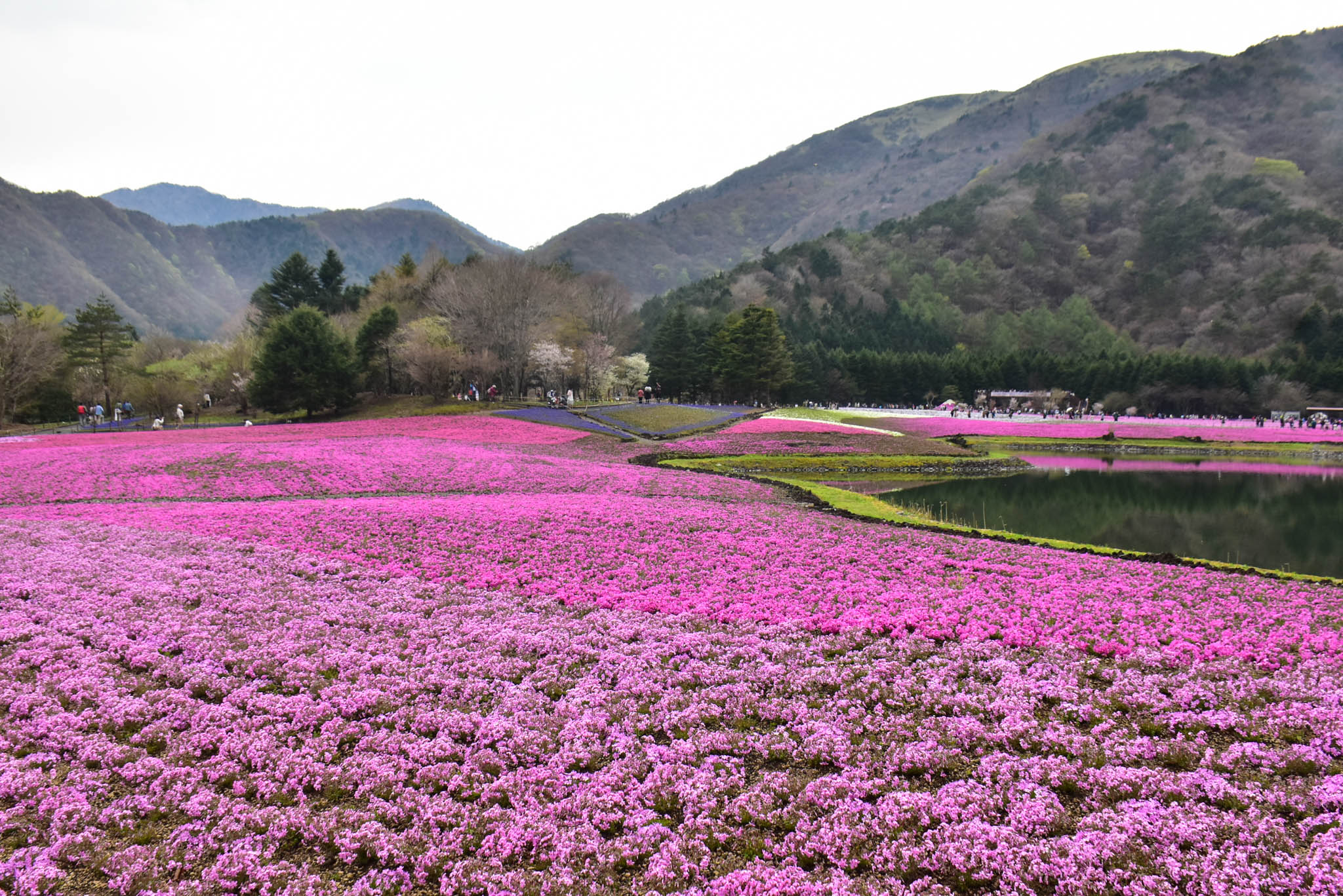
HOW GET AROUND TOKYO:
First off, Google Maps and Hyperdia.com are your best friends in Tokyo. Both of them will make your life easier when touring Tokyo DIY style, so always consult them.
TOKYO HOP ON HOP OFF BUS TOUR

TOKYO SUBWAY TICKET
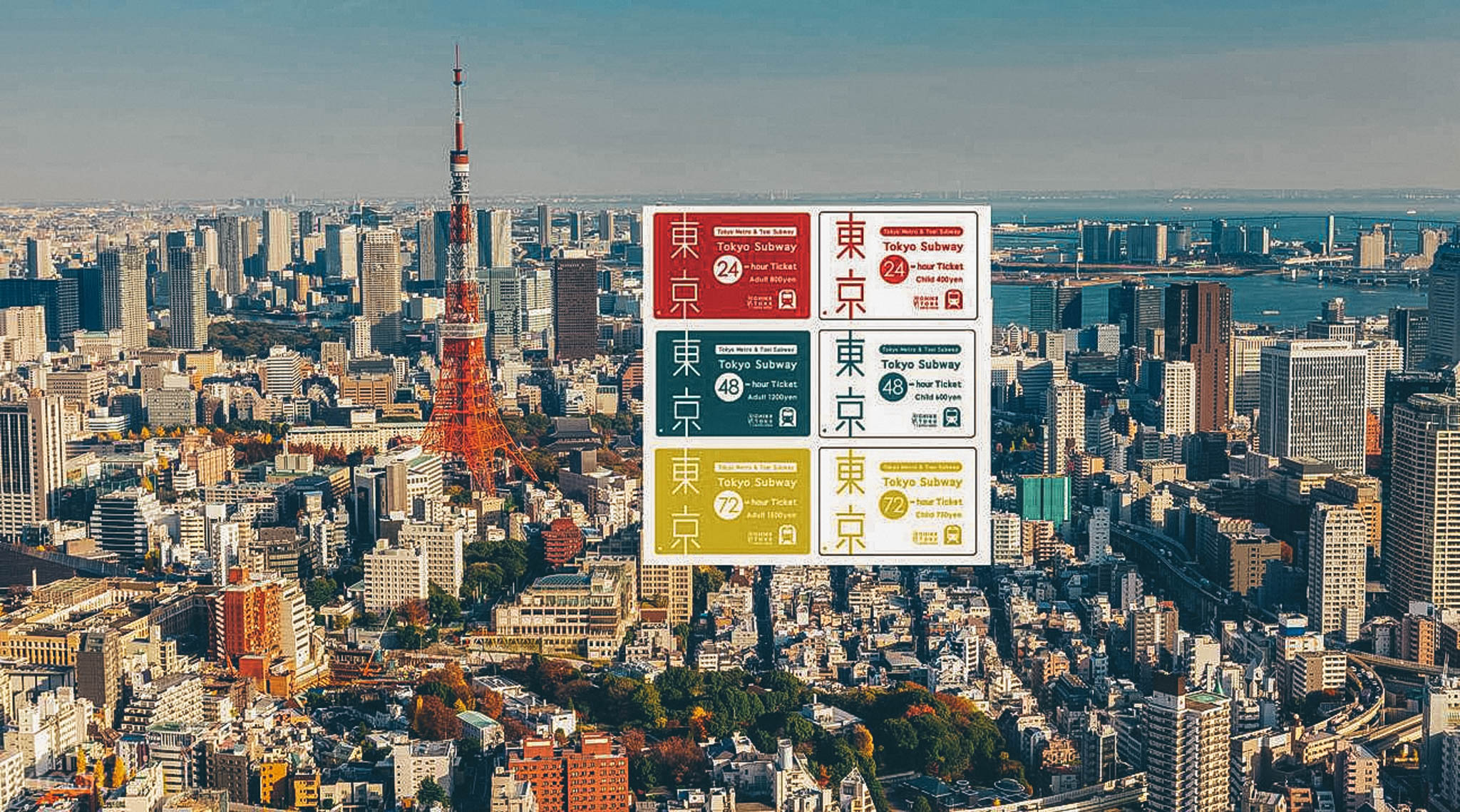
HOW TO GET TO TOKYO CITY FROM TOKYO AIRPORT (NARITA AIRPORT)
Tokyo sky liner.

TOKYO NARITA AIRPORT LIMOUSINE BUS

TOKYO WI-FI
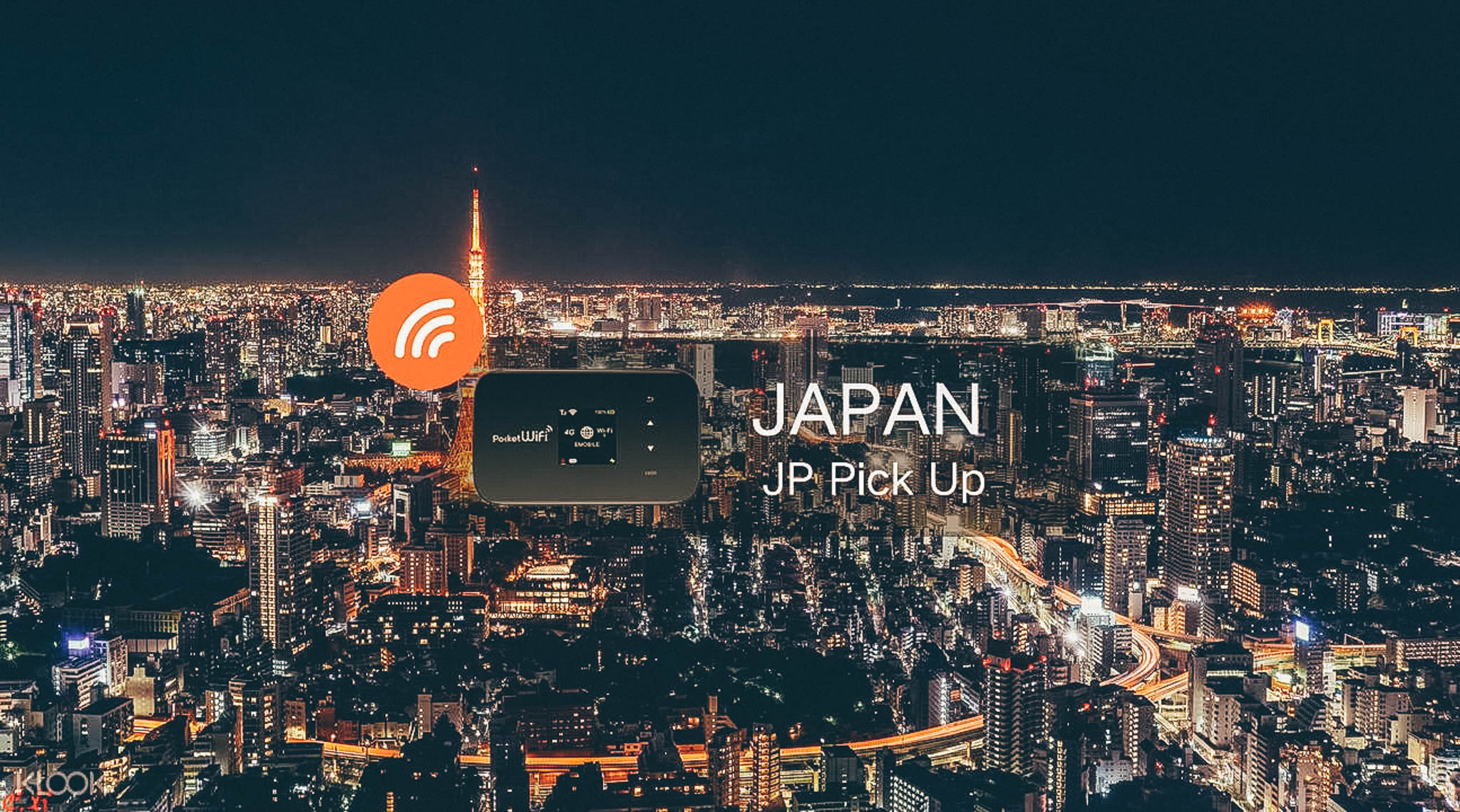
TOKYO SIMCARD

WHERE TO GET DISCOUNTED TOKYO TICKETS:
Tokyo tower main observatory.
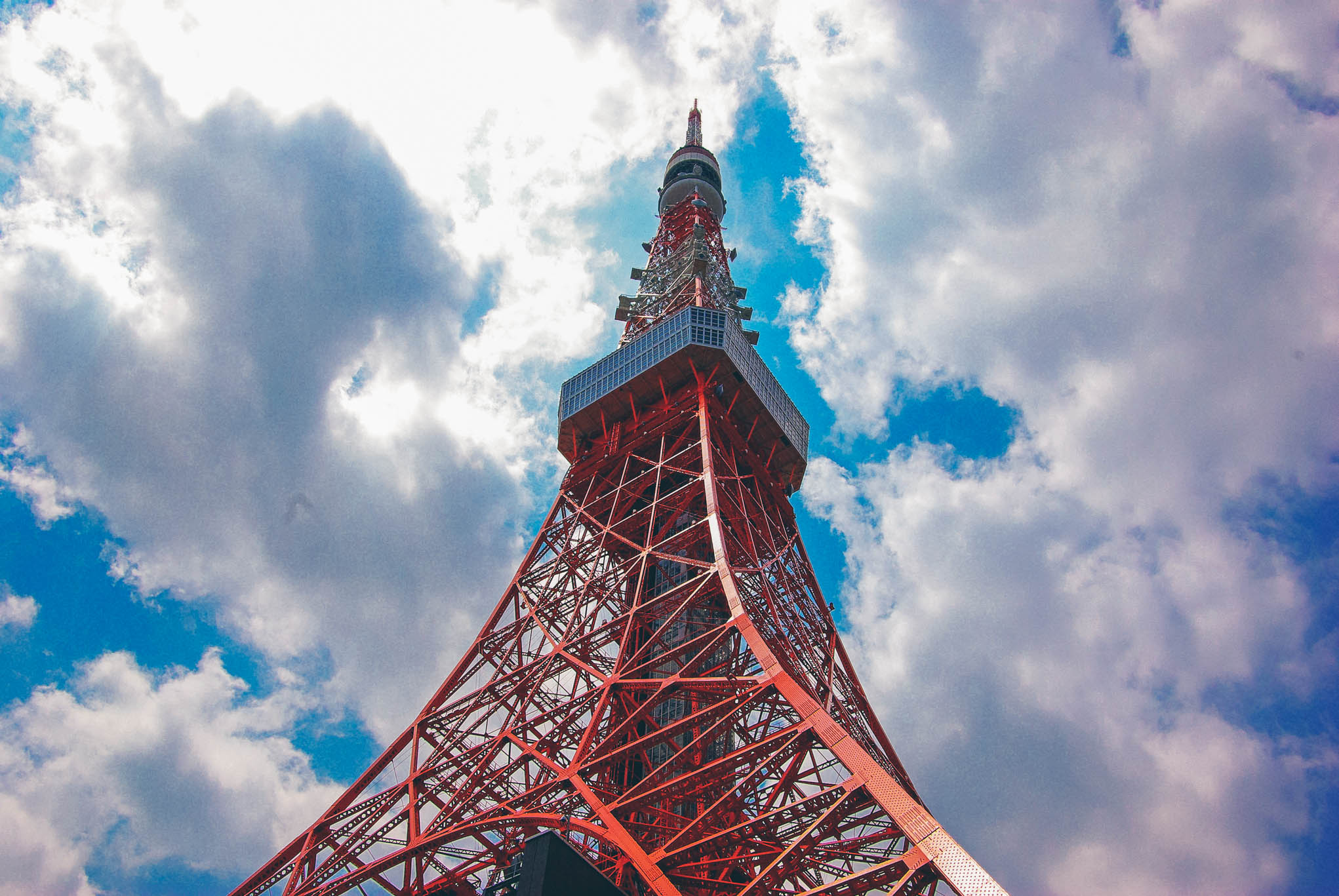
Sanrio Puroland Admission Ticket
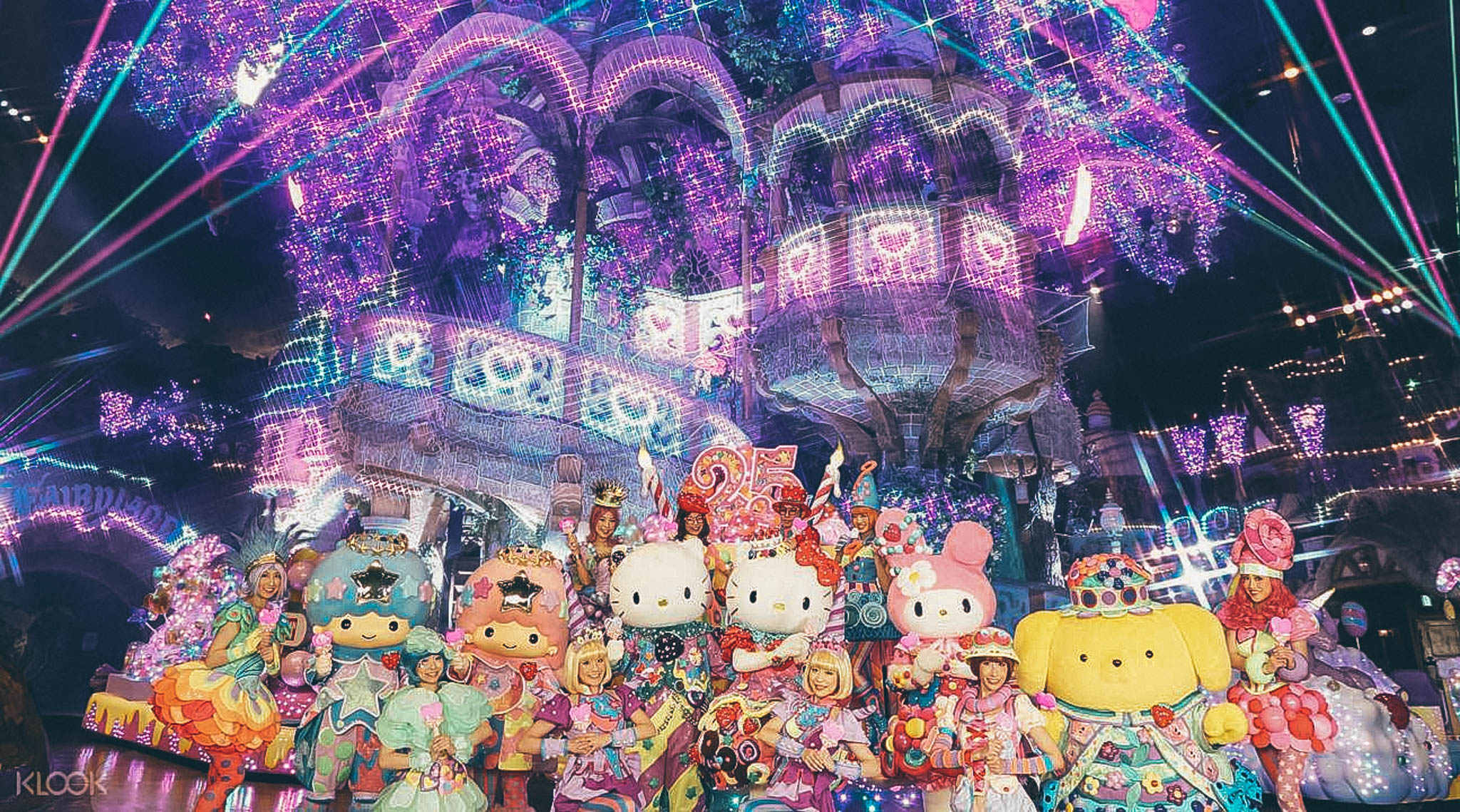
ROBOT RESTAURANT
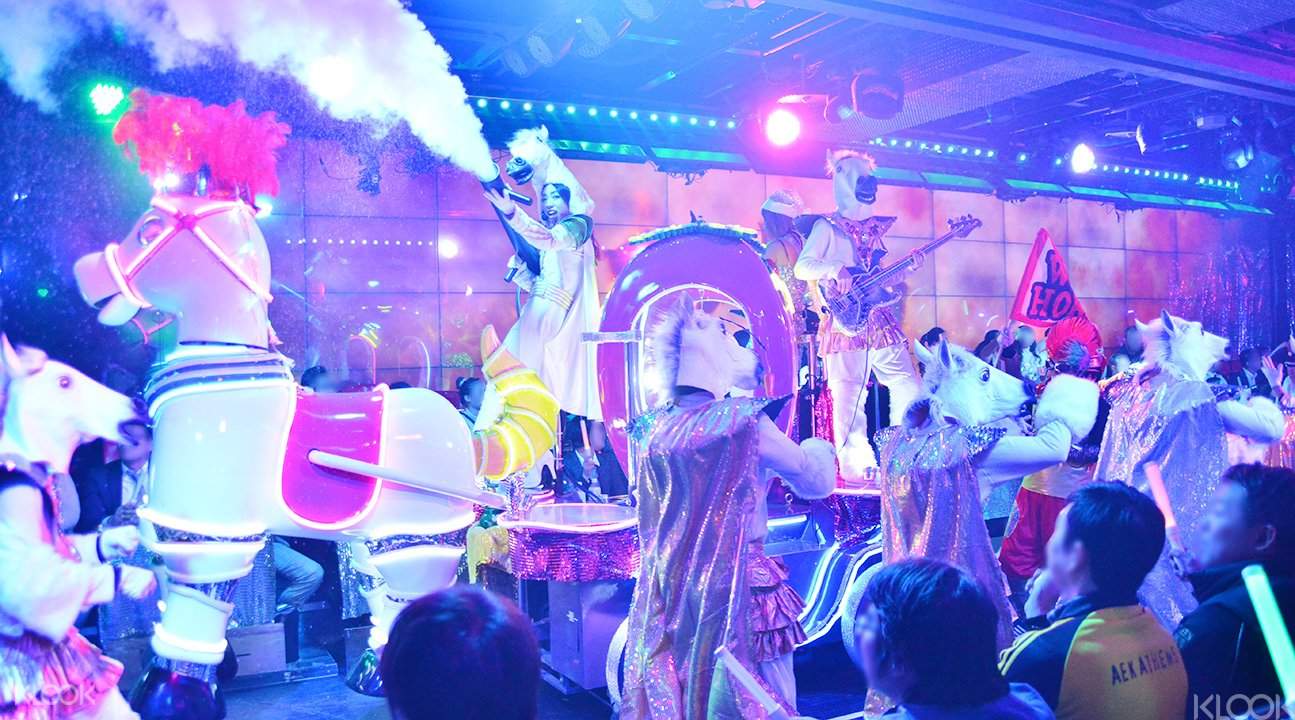
TOKYO KIMONO EXPERIENCE
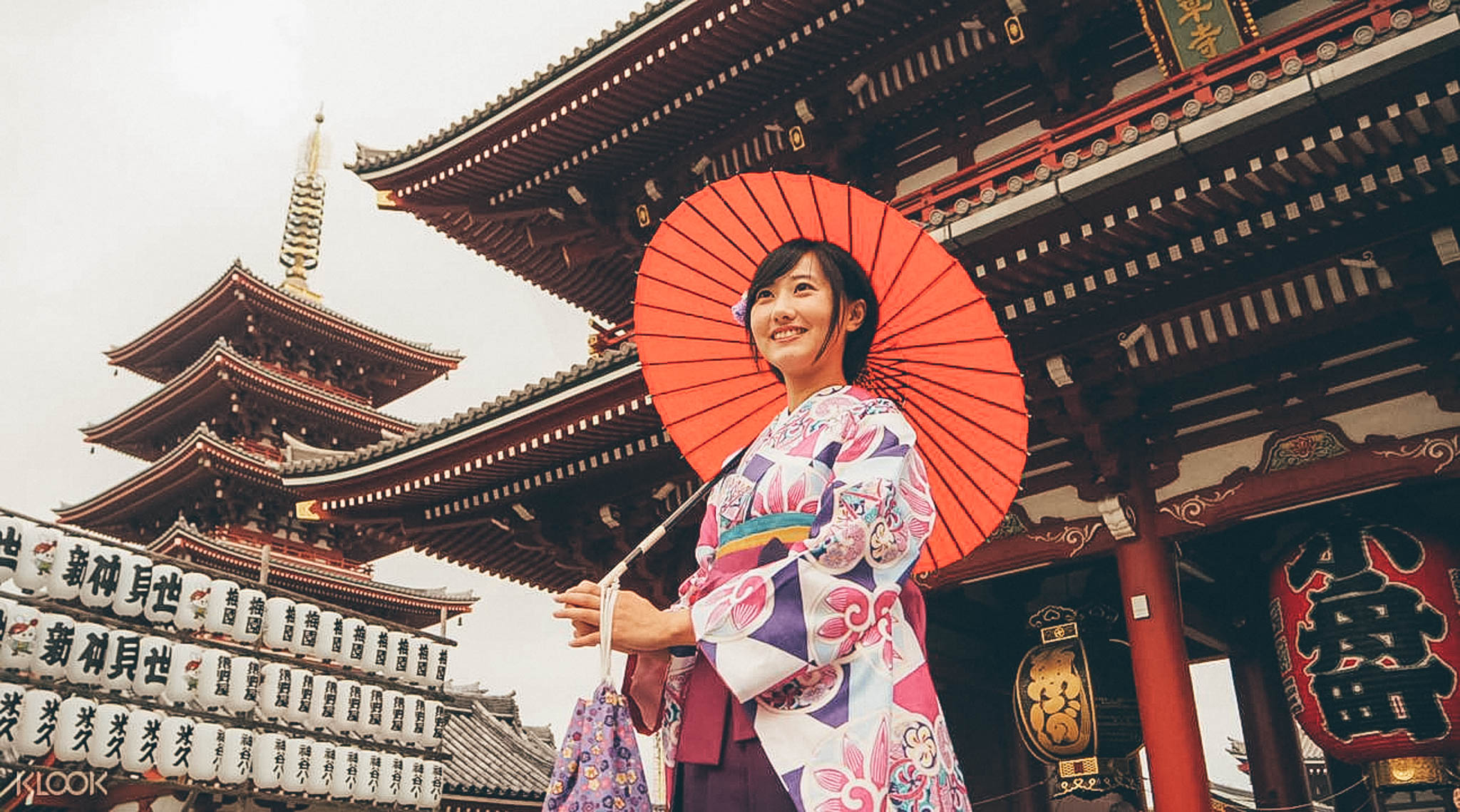
TOKYO SKYTREE
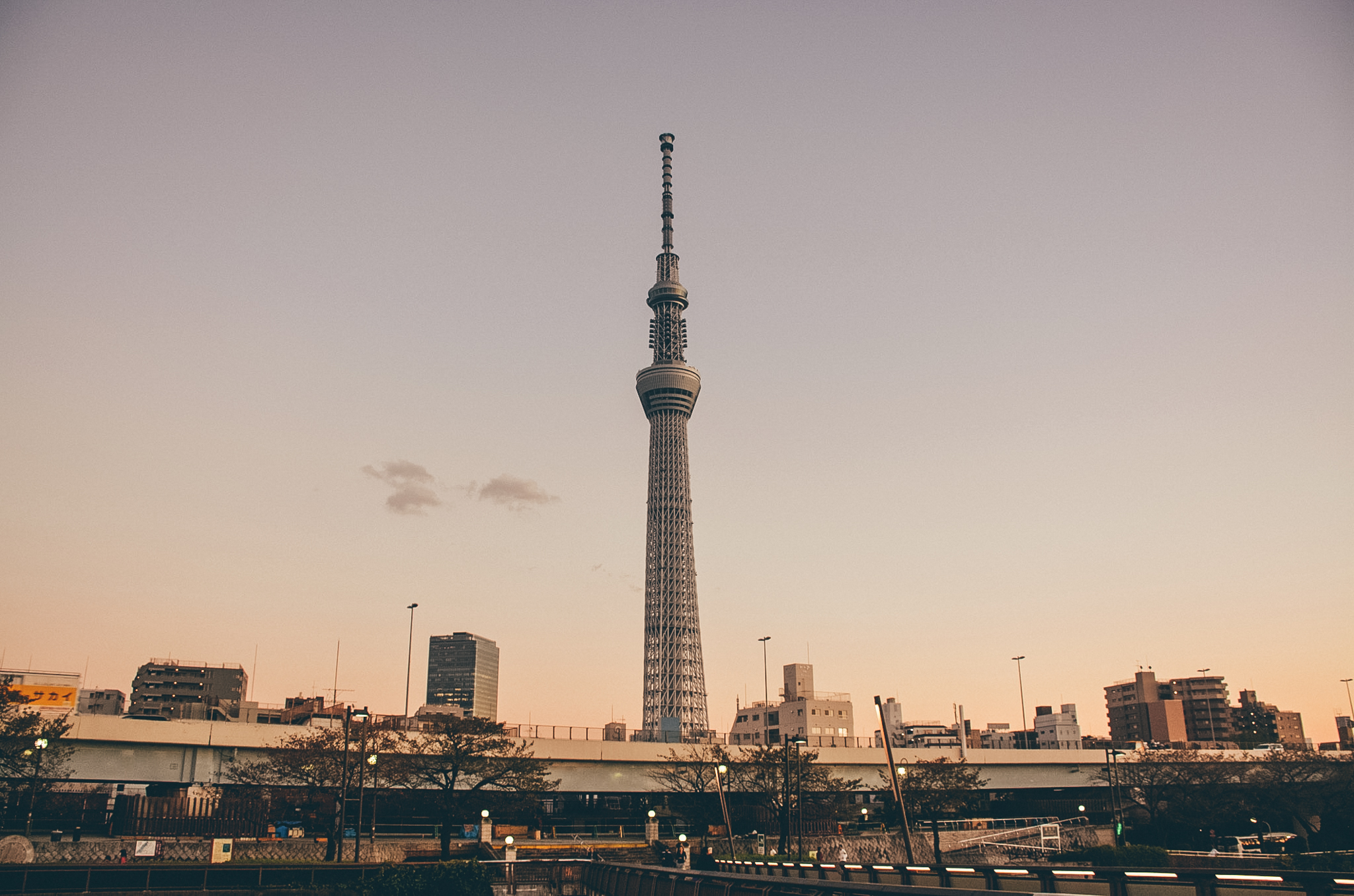
AFFORDABLE TOKYO TOURS:
Tokyo morning tour.

Tour includes a visit to the following: Tokyo Tower, Imperial Palace Plaza Sensoji Temple and Nakamise Shopping Center, Ueno and Akihabara. Tour package is inclusive of entrance fees, hotel pick up, Enlish speaking guide and transportation.
Tokyo Afternoon Tour
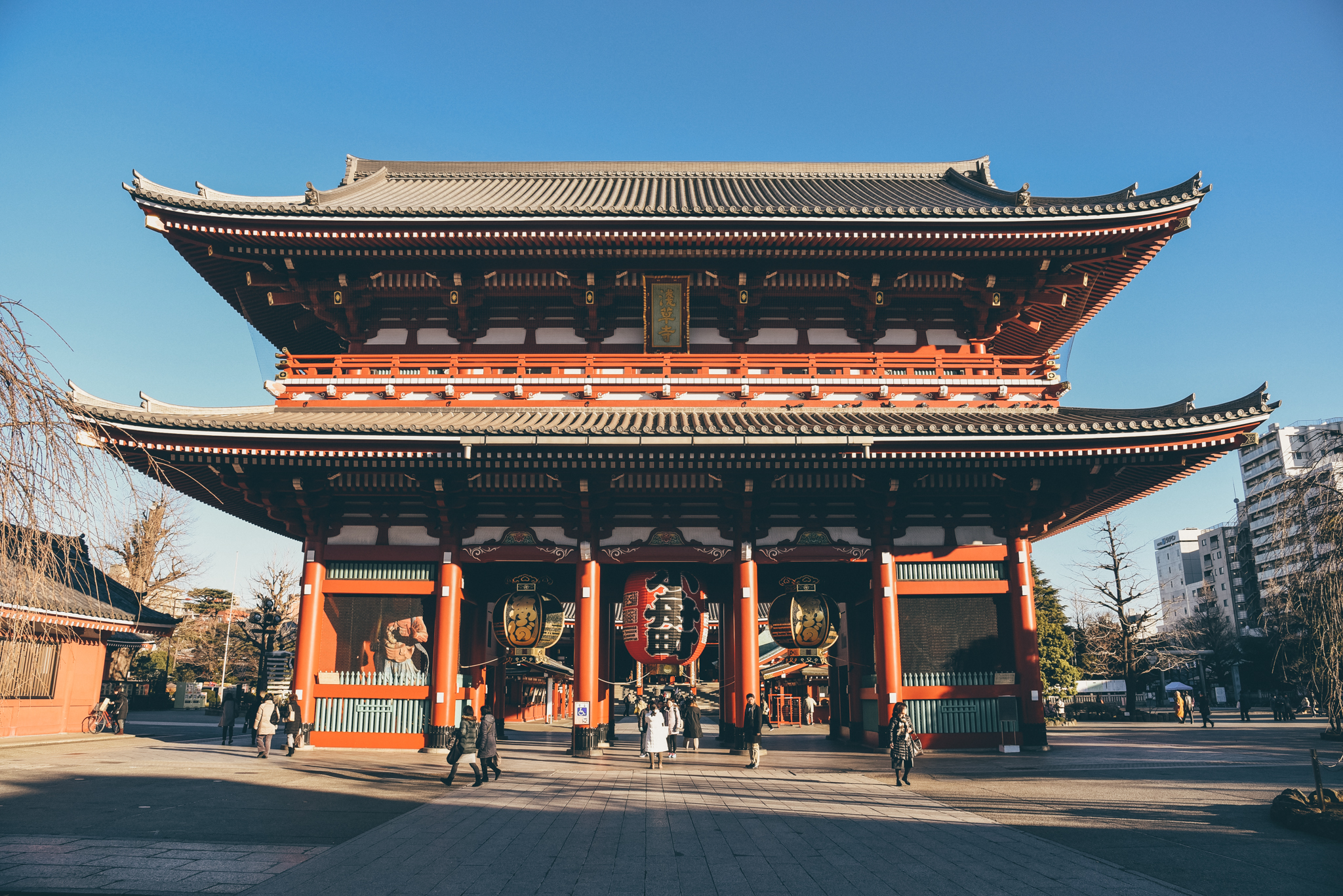
TOKYO WALKING TOUR
Tokyo dynamic tour.
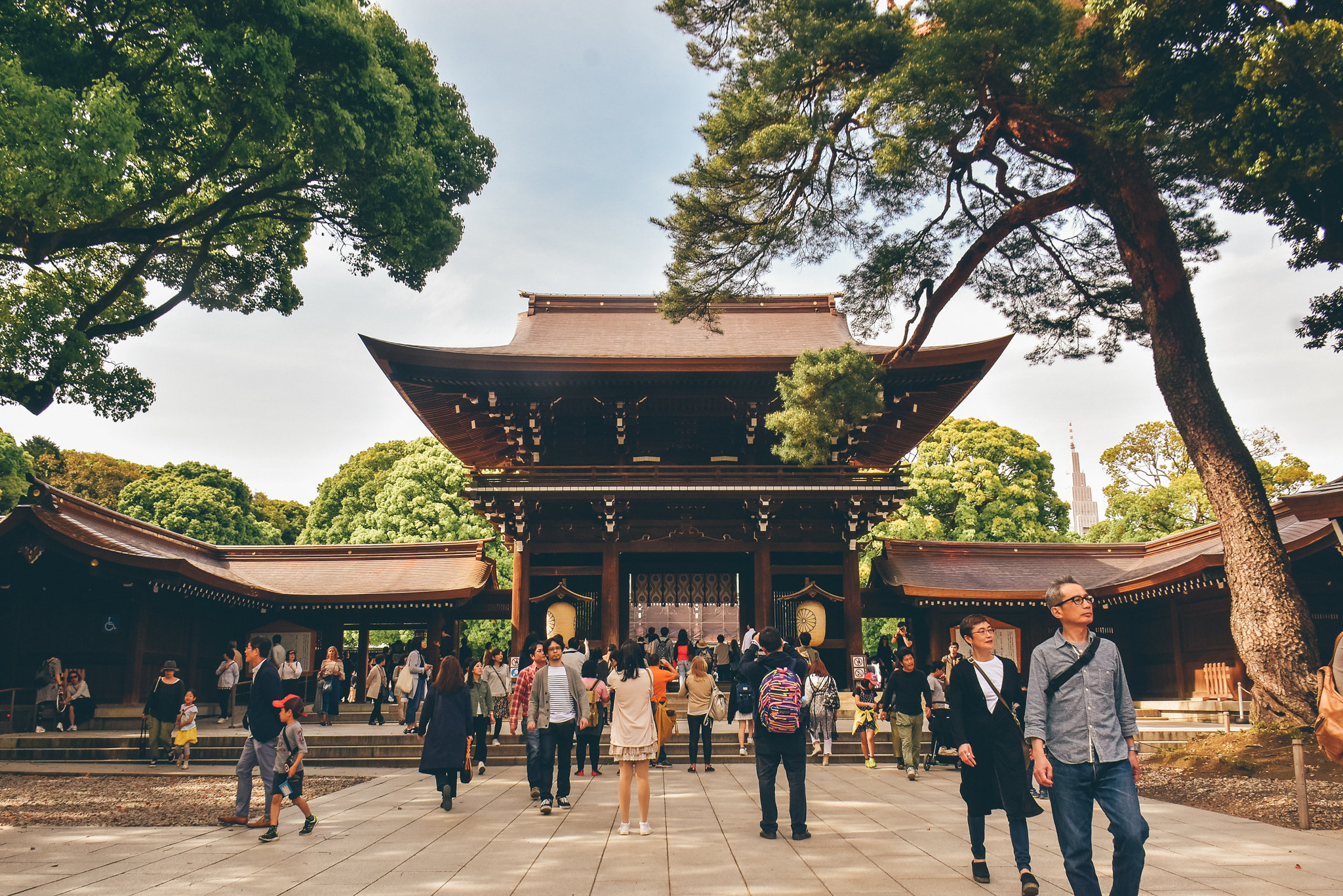
Tokyo Asakusa Rickshaw Tour
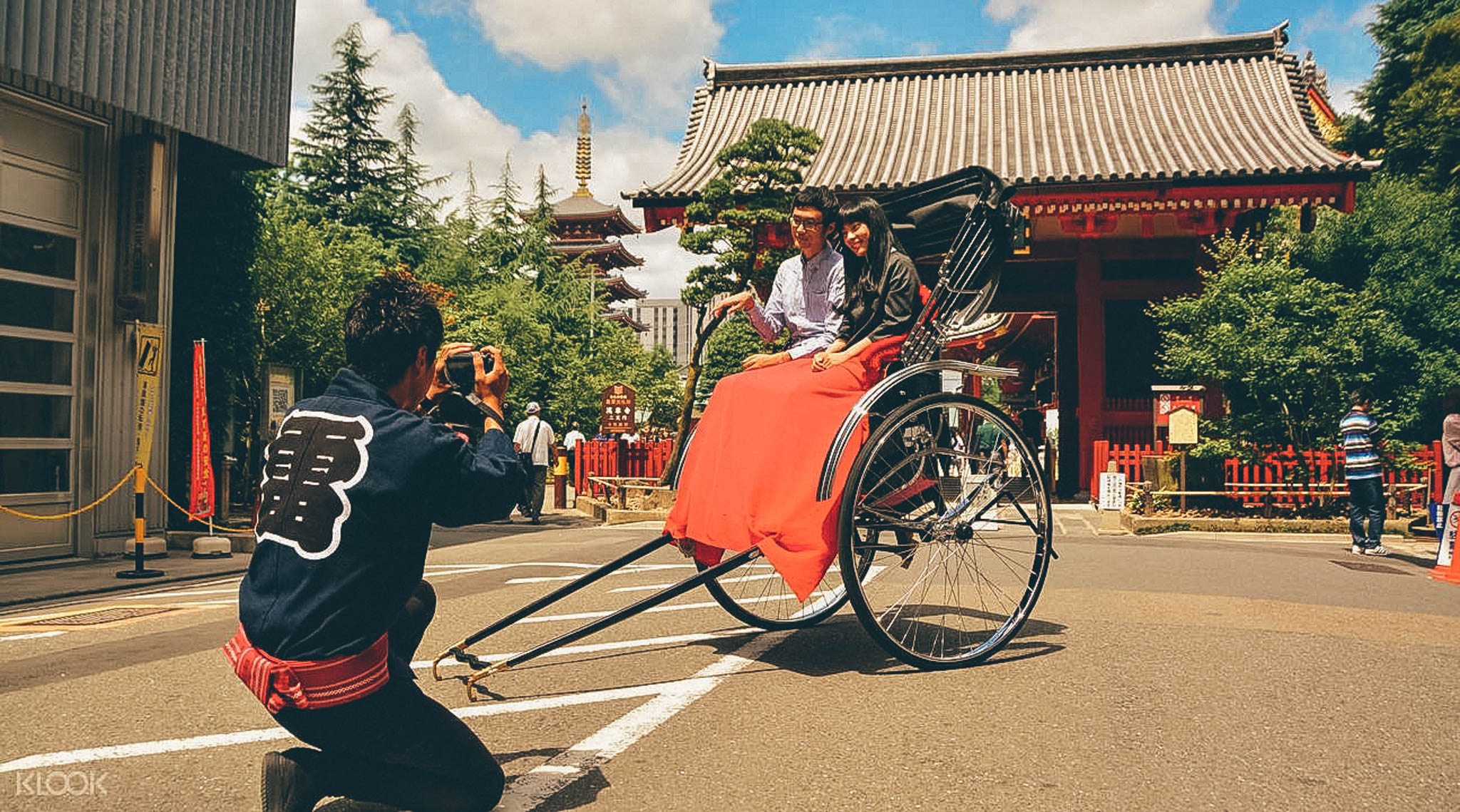
WHERE TO STAY IN TOKYO
If you are looking budget hotels in Tokyo, Ueno has a good number of budget options and they are situated in quiet neighborhoods. It’s also near the airport.
Centurion Hotel Ueno
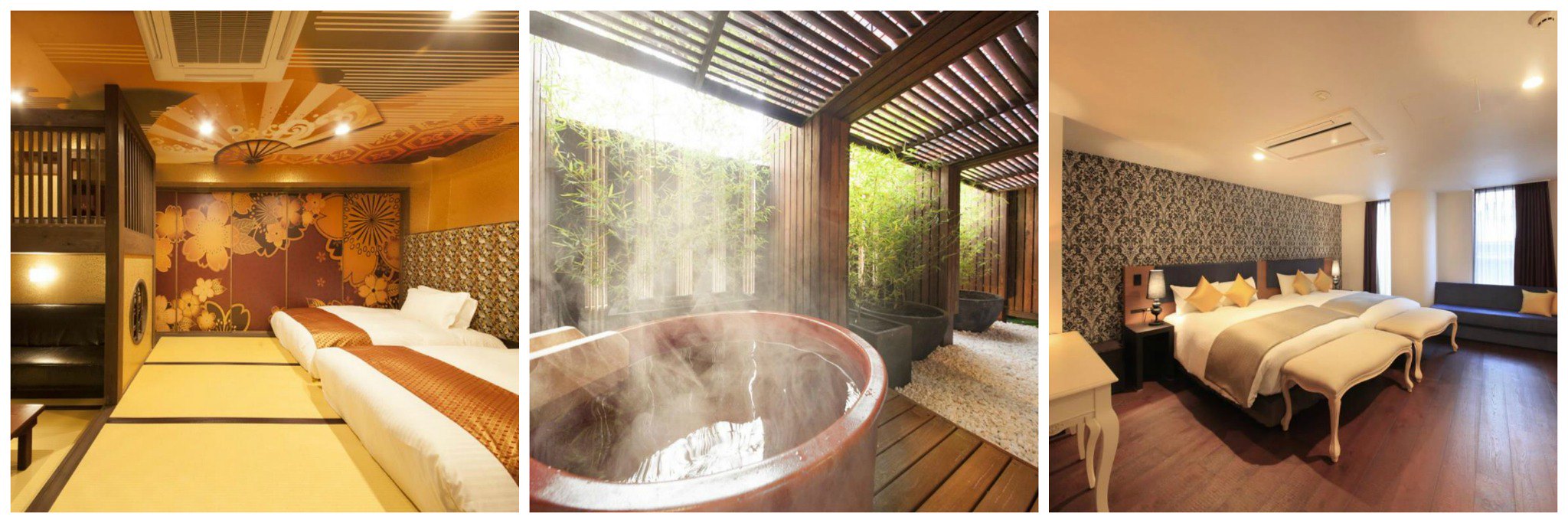
2-3-4 Taito-ku, Ueno, Tokyo, Japan

1-5-7, Matsugaya, Taito-ku, Ueno, Tokyo, Japan
This is where we stayed.

Hotel Sardonyx Ueno
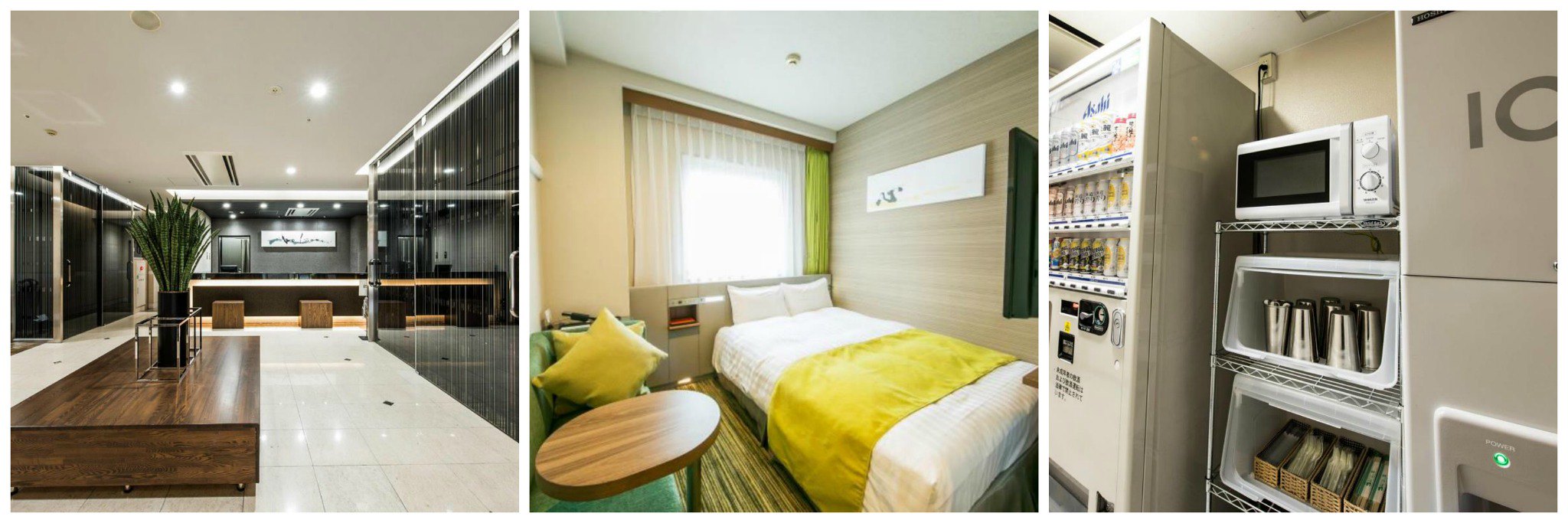
6-6-7 Ueno Taito-ku, Ueno, Tokyo, Japan

HOTEL MYSTAYS Ueno-Iriyaguchi
5-5-13, Higashi-ueno, Taito-ku, Ueno, Tokyo, Japan
This is where we stayed at.
JAPAN VISA REQUIREMENTS
Top tokyo attractions and how to get there, osaka travel guide (budget + itinerary), kyoto travel guide (budget + itinerary) blog, nagoya travel guide (budget + itinerary) blog, japan: osaka kyoto nara itinerary (with budget), shirakawa-go from tokyo, related posts.

2024 Kuala Lumpur Itinerary (5 Days 4 Nights) with Budget

TUBA BENGUET TOURIST SPOTS + ITINERARY (2024)

PUERTO GALERA ITINERARY (TRAVEL GUIDE + BUDGET) 2024
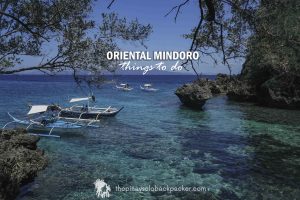
ORIENTAL MINDORO: Things to Do in Puerto Galera + Itinerary 2024
Submit a comment cancel reply.
Your email address will not be published. Required fields are marked *
- BEACH RESORTS
- BORDER CROSSING BY BUS
- Cruise Guide
- FERRY SCHEDULE AND RATES
- General Santos
- Historical Sites
- Hotels and Resorts
- Shiragawago
- SHIRAKAWA-GO
- Cameron Highlands
- Kota Kinabalu
- Kuala Lumpur
- New Zealand
- Cagayan North
- Camarines Norte
- Caramoan Island
- Catanduanes
- Davao del Sur
- Ilocos Norte
- Lanao del Norte
- Kalanggaman
- Mindoro Occidental
- Puerto Galera
- Negros Oriental
- Nueva Ecija
- SAN TEODORO
- Puerto Princesa
- San Vicente
- Quezon Province
- Northern Samar
- Surigao del Norte
- Surigao del Sur
- Capones island
- Zamboanga City
- Zamboanga del Norte
- Solo Female Travel 101
- South Cotabato
- Star Cruises
- Kanchanaburi
- Tourist Spots
- Travel Apps
- Travel Gadget
- TRAVEL GADGETS
- Travel Guide
- Uncategorized
- UNESCO World Heritage Site
- HO CHI MINH CITY
COPYRIGHT NOTICE:
Terms of use:.

- Privacy Overview
- Strictly Necessary Cookies
This website uses cookies so that we can provide you with the best user experience possible. Cookie information is stored in your browser and performs functions such as recognising you when you return to our website and helping our team to understand which sections of the website you find most interesting and useful.
Strictly Necessary Cookie should be enabled at all times so that we can save your preferences for cookie settings.
If you disable this cookie, we will not be able to save your preferences. This means that every time you visit this website you will need to enable or disable cookies again.

How to Spend 3 Days in Tokyo: First Timers Itinerary
This post contains affiliate links which means that I will make a small commission if you purchase a product after clicking on any of them, at no extra cost to you.
Cramming as much as you can into just 3 days in Tokyo can be a little overwhelming at first— but trust me, it’s doable! Since we arrived here after our 3 days in Seoul , we finally got the hang of using public transportation (and thank goodness Apple and Google Maps work here!). Navigating the city felt way easier.
Three days in Tokyo is just enough to get a taste of this incredible city, but I have to admit, I wish I had more time! Our 2-week Japan trip was packed to the brim, and we had to squeeze in so much while also accounting for travel days. And, let’s not forget, we visited during the rainy season in the summer, so a few of our plans got a little drenched. But, that’s all part of the adventure, right?
So what can you expect from your visit to Tokyo? It’s truly a city like no other—blending the ultramodern with the traditional in the most fascinating way. From towering skyscrapers to serene temples, and bustling streets to quiet gardens, there’s so much to explore!
Fun fact: did you know Tokyo is home to more Michelin-starred restaurants than any other city in the world? That’s just a little taste of how special this place is. I knew going into this trip that there was no way I could see it all, and honestly, I’m already planning my next visit! I’m sure you’ll feel the same once you start exploring this vibrant, captivating city.
Table of Contents
Quick links for your Tokyo trip
🏨 Accommodation
Easily compare prices, secure great deals, and enjoy the added benefit of flexible cancellations up to 24 hours in advance for the majority of hotels with Booking
🎟️ Tours and tickets
Discover your next adventure with ease by using Klook which allows you to explore a multitude of local tours, ensuring you find the best experiences at the best prices.
🚘 Car rental
Rentalcars is the best tool for comparing prices for your date amongst the most popular rental car companies!
3 days in Tokyo itinerary
Morning: teamlab borderless + coffee, teamlab borderless.
Your first stop in Tokyo is the mind-bending digital art museum, teamLab Borderless . This immersive experience is one of the most popular attractions in Tokyo, and for good reason! Imagine walking through a space where the boundaries between art, technology, and imagination completely dissolve—rooms filled with interactive light displays, floating lamps, and mesmerizing visuals that make you feel like you’ve stepped into another world.

Borderless vs. Planets
Now, you’ll have to decide between teamLab Borderless and its sister museum, teamLab Planets . While Borderless offers a more expansive, ever-changing space with no set path, Planets is a bit more focused, with a handful of large-scale installations that you actually walk through or even wade through (yes, some parts involve water!). If you’re after a more immersive, physical experience, Planets might be for you. But if you want to lose yourself in an endless maze of art, Borderless is the way to go.
💡 Insider Tip: Both museums are insanely popular, so you’ll want to book your tickets well in advance—especially if you’re aiming for those early morning slots before the crowds hit. We snagged the 10 am slot about a month ahead, which gave us a little breathing room to explore before it got too packed (9 am is the earliest slot).
Coffee at % Arabica
After immersing yourself in digital wonder at teamLab, you might be in dire need of a coffee fix—especially if you woke up late like we did and had to rush to make your morning slot. Luckily, you don’t have to venture far. % Arabica is a super popular coffee shop in Tokyo , known for its minimalist aesthetic and perfectly brewed coffee. The best part? It’s conveniently located in Azabudai Hills , the very same building as teamLab Borderless.
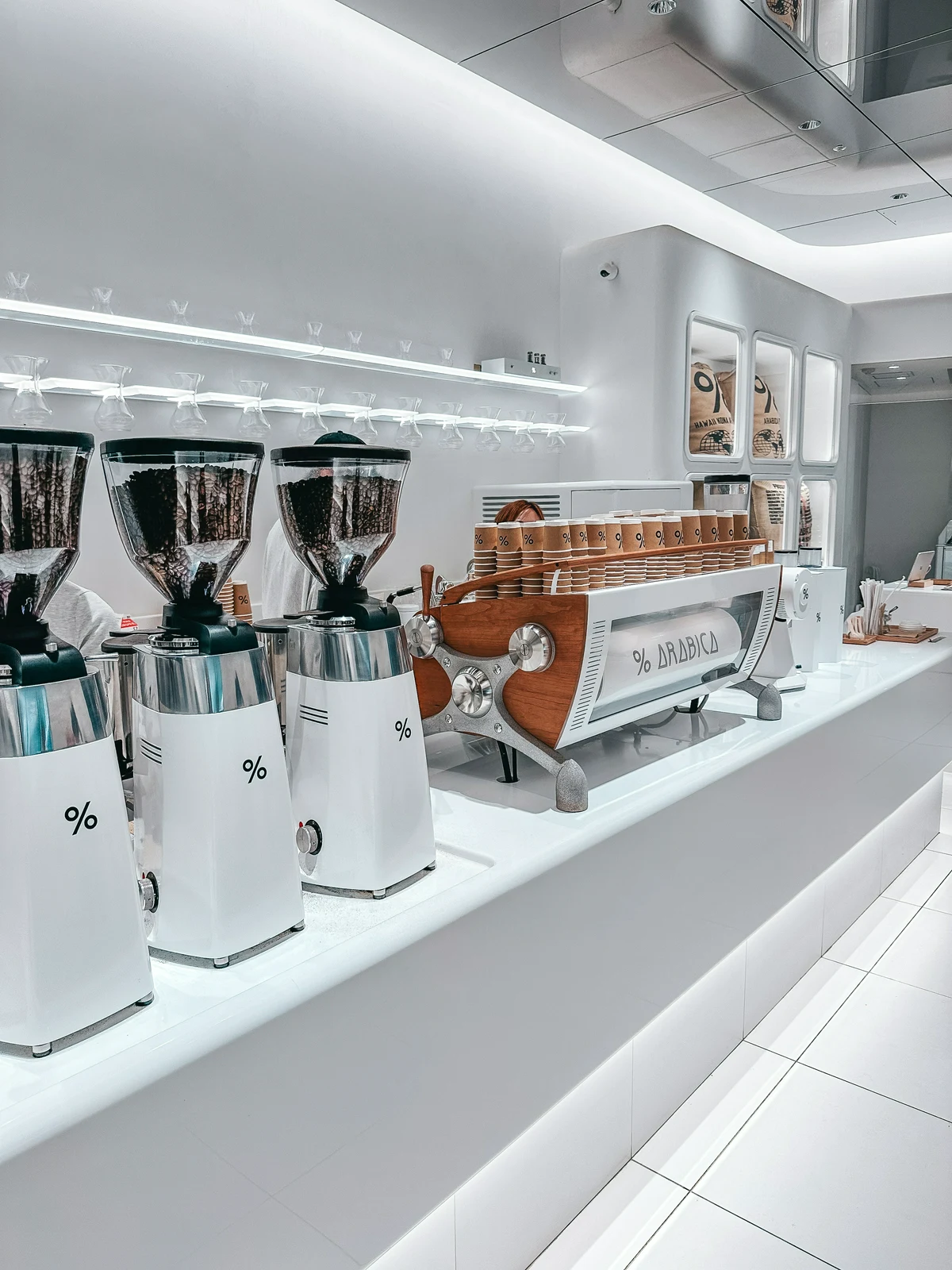
Afternoon + evening: Tsukiji Fish Market , Tokyo Tower, + karaoke
Tsukiji fish market.
Once you’re caffeinated and ready to go, head over to the Tsukiji Fish Market , one of the best things to do in Tokyo! This legendary market was once the world’s largest wholesale fish market, and while the inner market has moved to Toyosu, the outer market remains a bustling hub of fresh seafood, street food, and culinary delicacies.
The market is only open until 2 pm, so time is of the essence. I recommend setting aside about two hours to fully explore and, most importantly, eat your way through the market. We spent around an hour and a half at teamLab (with our 10 am slot) and arrived at Tsukiji just in time for an epic food adventure.
💡 Insider Tip: As the market gets closer to closing time, you can often score great deals on seafood, with many items going on sale about an hour before they shut down!
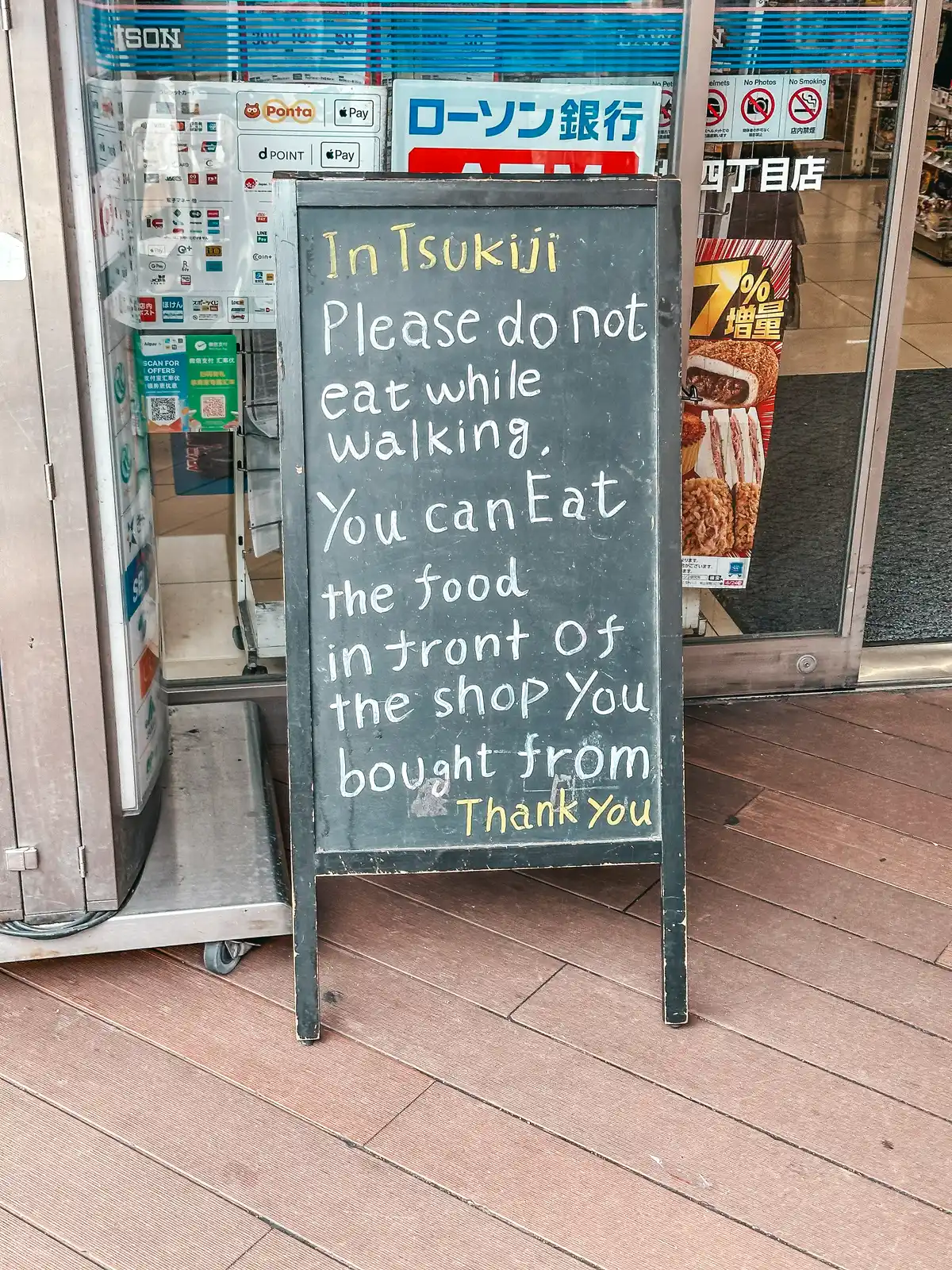
Here’s a little taste of what we tried:
- Wagyu and Kobe Beef: The melt-in-your-mouth perfection of these beef skewers is unmatched.
- Tuna: Whether it’s sushi or sashimi, the tuna here is incredibly fresh and flavorful.
- Tanghulu: A sweet treat that won me over—candied fruit on a stick, crunchy on the outside and juicy on the inside.
- Ichigo daifuku or strawberry mochi: A popular choice, though I found it wasn’t really my thing, but you might love it!
💡 Insider Tip: Tsukiji is not just about the fish. The market is full of other goodies like tamagoyaki (Japanese omelet), grilled scallops, and even some surprising international treats. If you’re visiting with a group, it’s the perfect spot to share and sample a variety of foods. If you aren’t traveling with a group, you might enjoy this food tour through the market with a local guide that includes lunch and multiple samples .
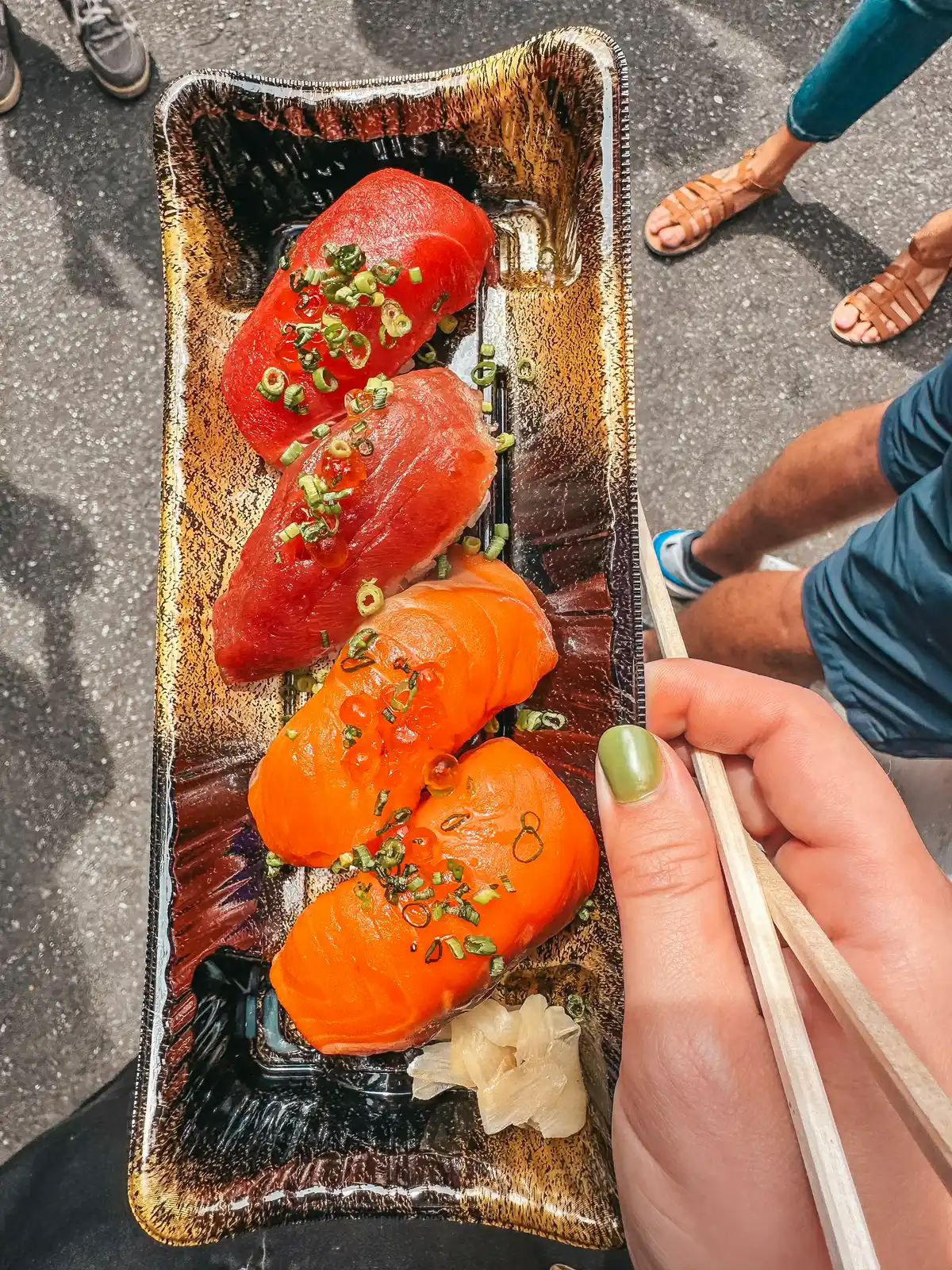
Zojo-ji Temple
Zojo-ji Temple is a stunning Buddhist temple located right next to Tokyo Tower, offering a beautiful contrast between traditional and modern Tokyo. The temple dates back to the 14th century and serves as the main temple of the Jodo sect of Japanese Buddhism.
It’s a peaceful place where you can take a moment to reflect, and the sight of the temple with Tokyo Tower rising behind it makes for a perfect photo opp! The temple grounds also feature a touching memorial area dedicated to unborn children, marked by rows of small statues adorned with colorful clothing and pinwheels. It’s a serene and historically rich stop before heading to the iconic Tokyo Tower.
Tokyo Tower
After filling up on all that incredible market food, it’s time to make your way to the iconic Tokyo Tower . This red and white structure is reminiscent of the Eiffel Tower but with its own unique Tokyo flair. Standing at nearly 1100 feet (333 meters) tall, it offers some of the best panoramic views of the city.
Unfortunately, when we visited, the rain decided to pour down, making it impossible to enjoy the tower’s observation decks. But hopefully, the weather will be on your side! If the skies are clear, I highly recommend taking the elevator up for a bird’s-eye view of Tokyo—it’s especially beautiful at sunset when the city lights start to twinkle.
💡 Insider Tip: If you’re looking to save on admission fees while still getting stunning views of Tokyo, consider skipping the paid observation decks at Tokyo Tower. Instead, before leaving the Azabudai Hills Mori JP Tower , the same building where you visited TeamLab Borderless, head to the 33rd floor. There’s a free observation area that offers panoramic views of the city skyline, including an unobstructed view of Tokyo Tower itself—perfect for those iconic photos! This way, you can enjoy the scenery without missing out on having Tokyo Tower in the background of your shots.
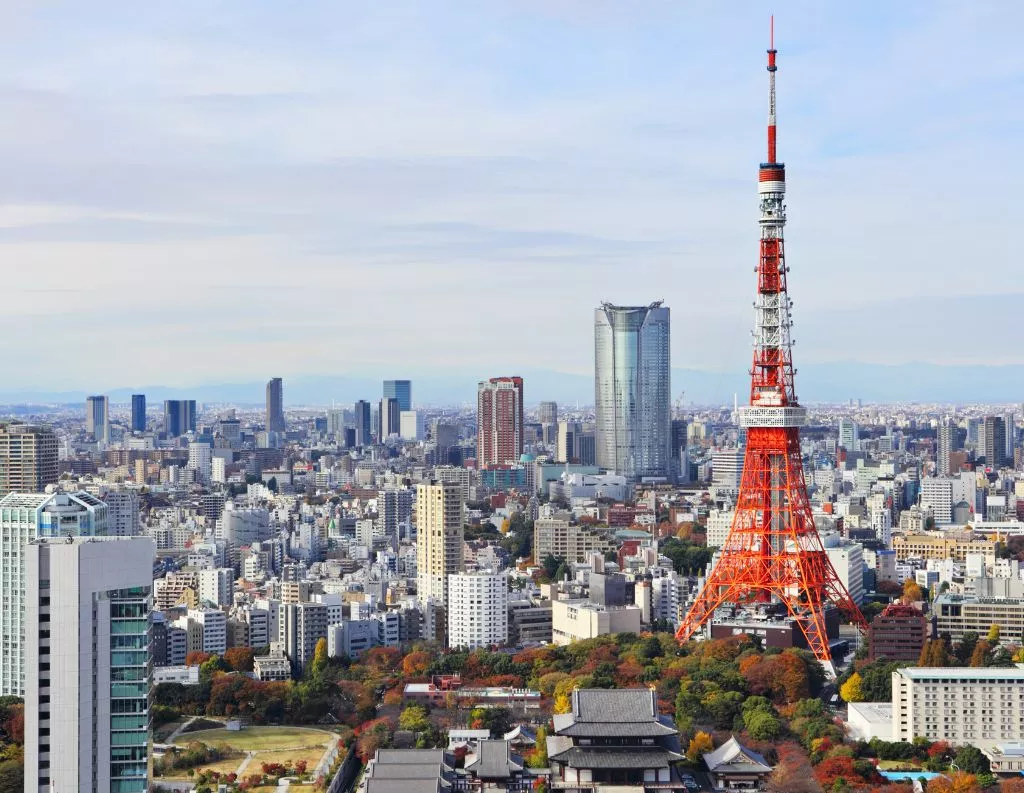
Karaoke bar?
This first day in Tokyo combines art, culture, and food—all essential ingredients for a perfect introduction to this vibrant city. If you’re feeling a bit tired, it might be wise to cut the evening short and save some energy for the next two days.
But if you’re still up for more adventure and are with a group, consider capping off the night in true Tokyo style—a karaoke room! It’s an iconic experience and a fun way to unwind after a day of exploring! We actually opted to call it an early day, but we did do a karaoke room in Kyoto and had an absolute blast and laughed until we were near tears!
I was blown away by how massive these karaoke places are—hallways upon hallways packed with rooms! The photo below shows just one section, and trust me, you’ll find karaoke bars all over the city.
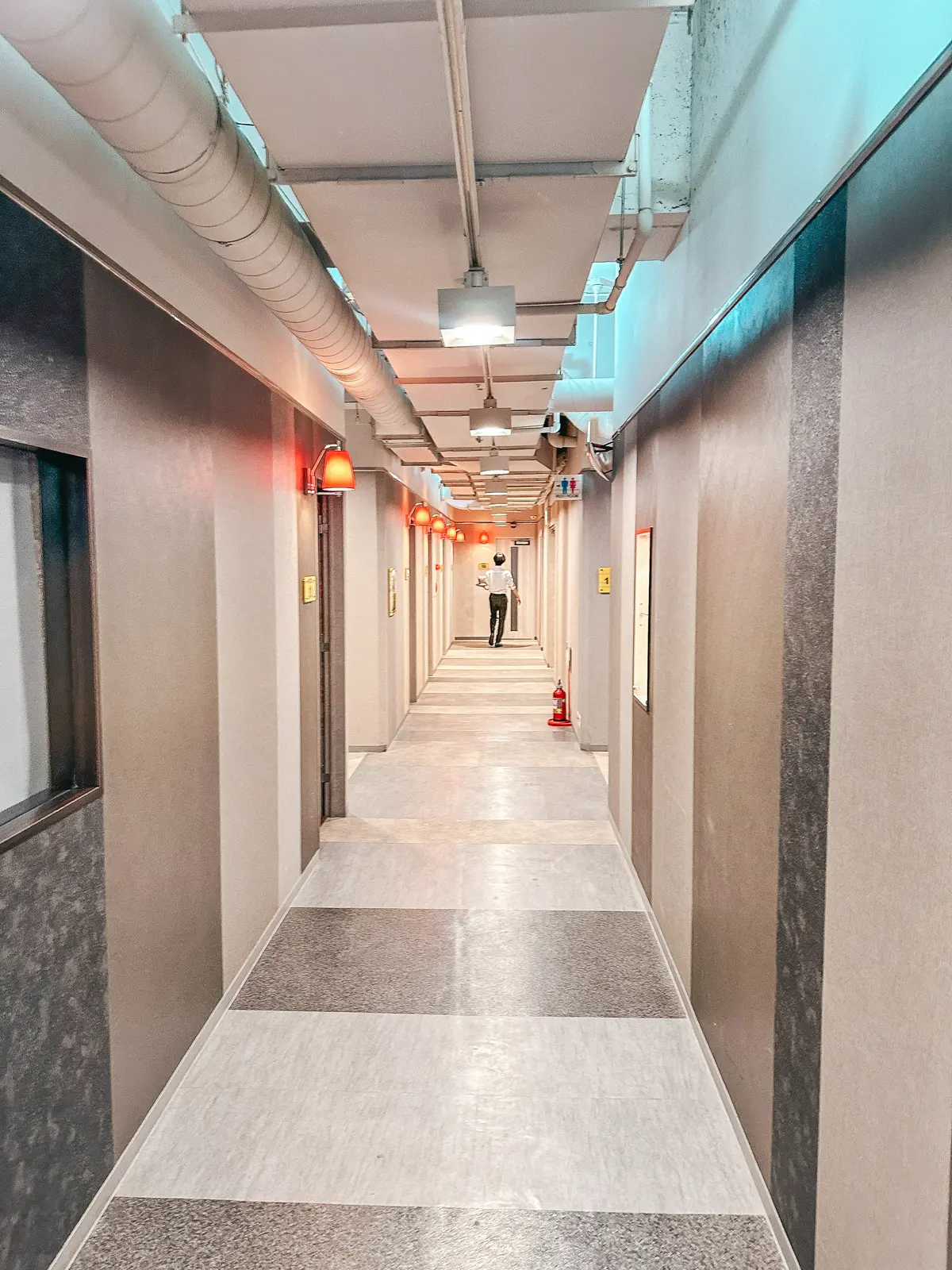
Morning: Ueno Park + Ameyoko Shopping District
Start your day with a visit to Ueno Park , known for its beautiful cherry blossoms in spring and the many cultural attractions it houses, including museums, a zoo, and temples.
Ameyoko Shopping District
After enjoying the greenery, head over to the nearby Ameyoko Shopping District , a marketplace that stretches along the Yamanote Line tracks. This area is full of energy, street food vendors, and shops selling everything from fresh seafood to trendy fashion.
Tokyo is famous for its thrift stores, and Ameyoko is home to several of them. While I didn’t have much luck with my finds—many items seemed to be overpriced American clothes—it’s still worth browsing if you enjoy hunting for unique pieces.
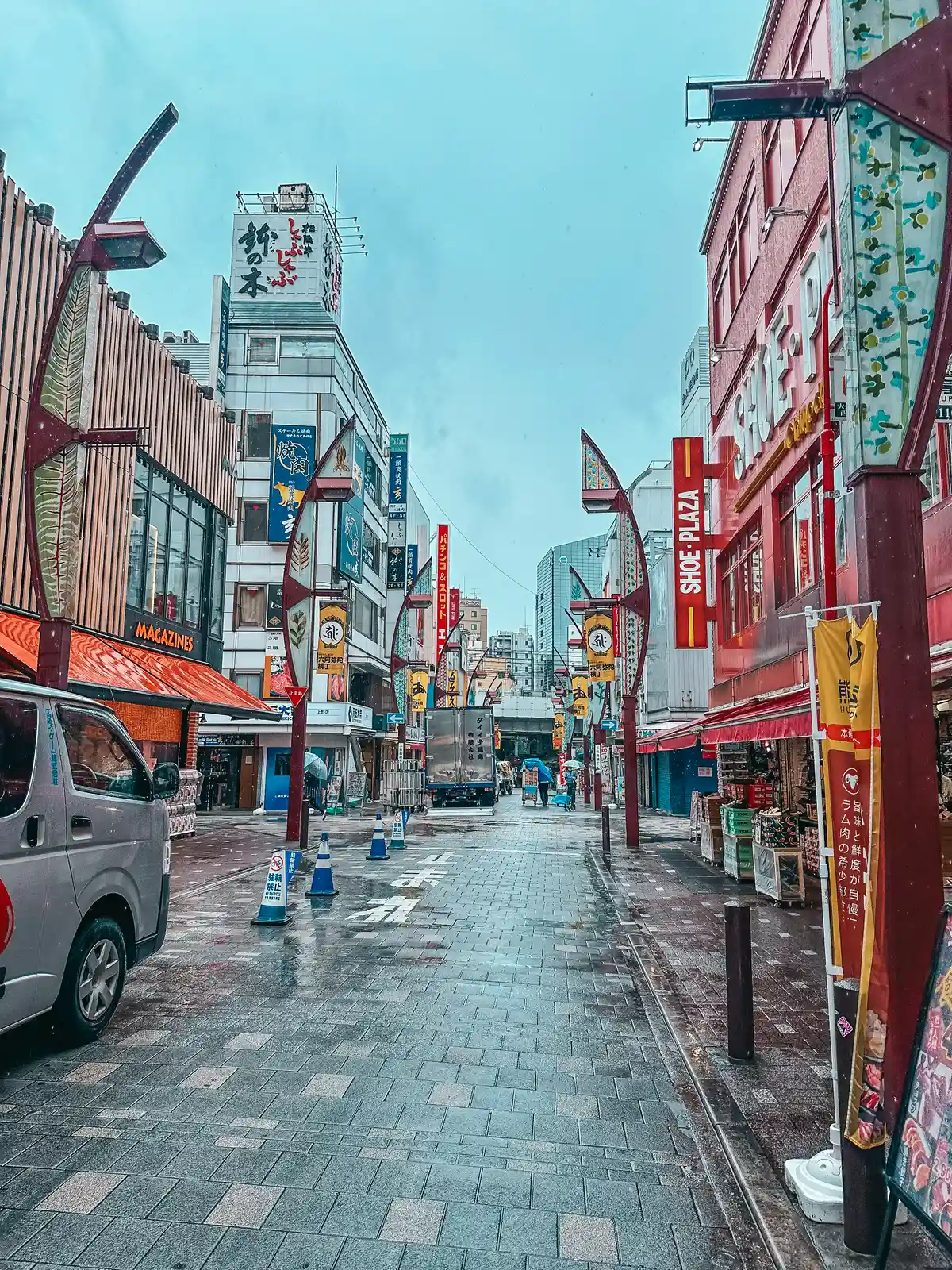
Breakfast + temple
While exploring the district, we grabbed breakfast and coffee at St-Marc Cafe Tokyo Ueno Abab Mae-Shop . The coffee was ok, but the breakfast was delicious and gave us the energy we needed for the second day of this 3 day Tokyo itinerary!
If you’re in the mood to visit a temple, Tokudai-ji Temple is nearby. Tokyo is home to over 1,000 shrines and another 1,000 temples, so there’s no pressure to visit them all. But if you feel inclined, Tokudai-ji offers a serene spot to pause and appreciate the city’s spiritual side.
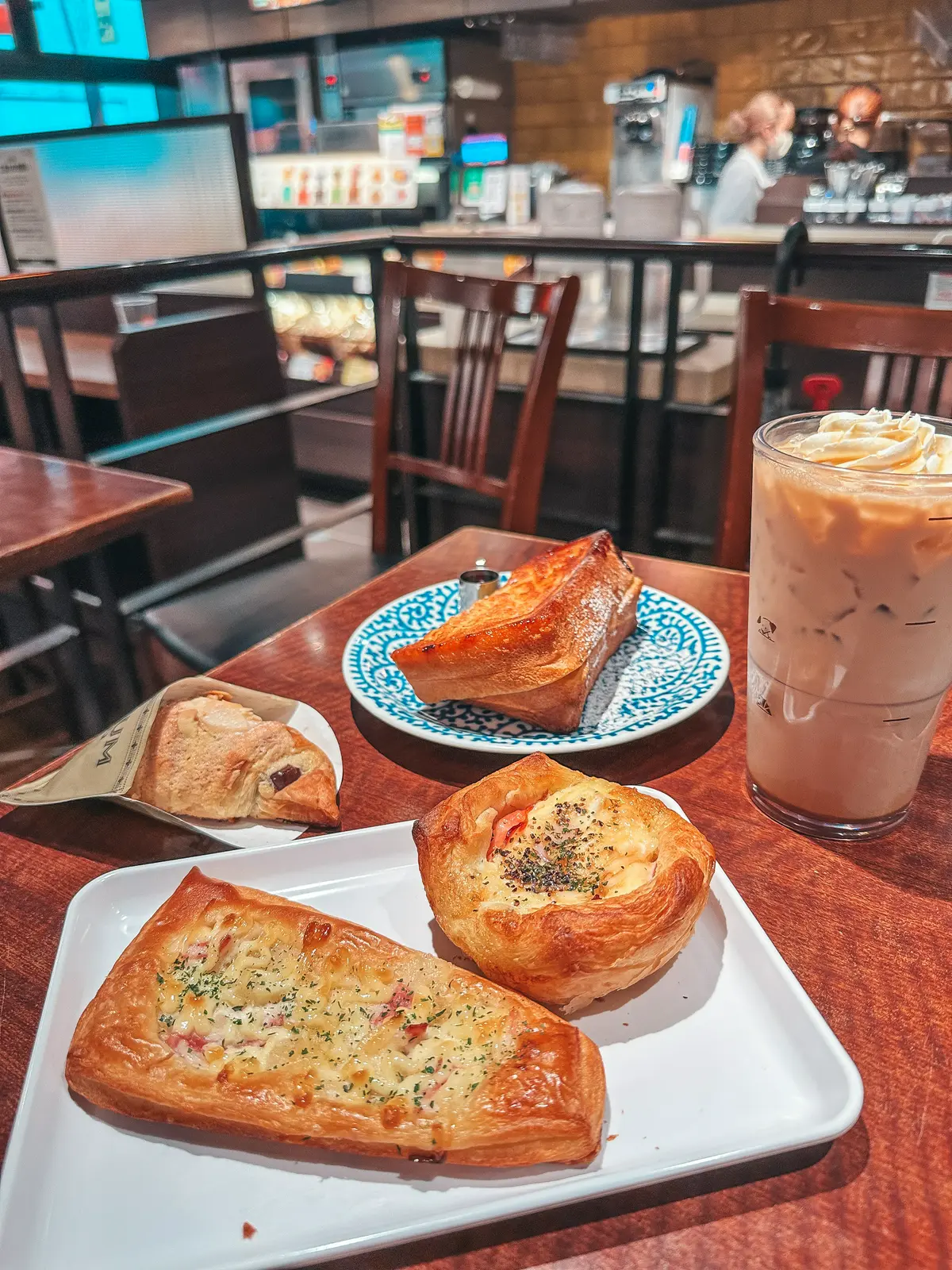
Afternoon: Tokyo Skytree + Tokyo Solamachi
After exploring Ueno, make your way to the Tokyo Skytree , Japan’s tallest structure! Standing at 2,080 feet (634 meters), the Skytree offers breathtaking panoramic views of Tokyo, and on a clear day, you can even see Mount Fuji.
Unfortunately, when we visited, the rain and fog made it impossible to see anything from the top, so we opted for some retail therapy at Tokyo Solamachi , the massive shopping complex located at the base of the Skytree. With over 300 shops and restaurants, it’s definitely not a bad place to spend a rainy afternoon.
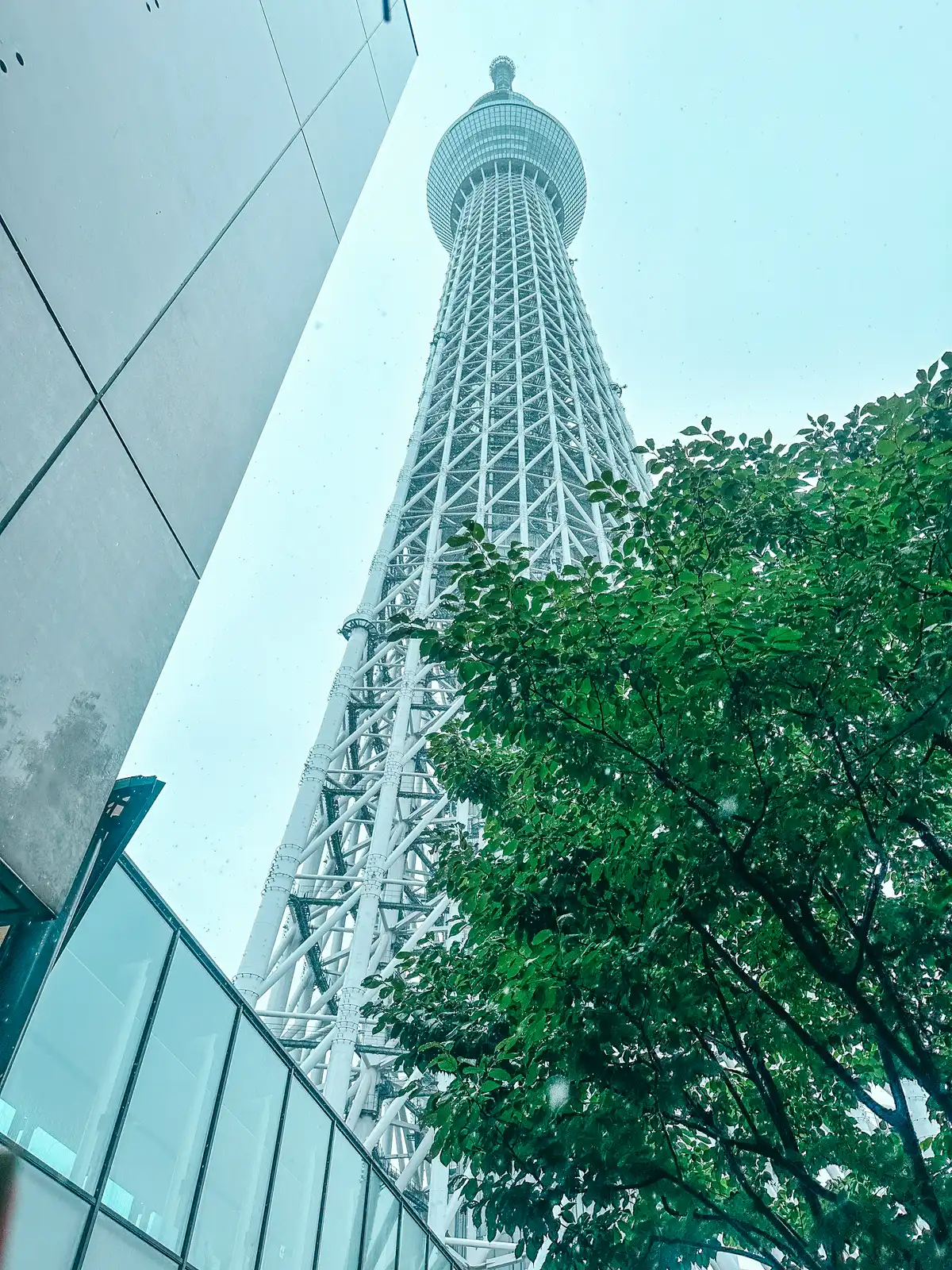
Evening: Shibuya + Shinjinku
Shibuya scramble.
Afterward, head over to Shibuya to experience one of Tokyo’s most iconic spots, the Shibuya Scramble Crossing . It’s the busiest pedestrian crossing in the world! This intersection is a must-see, with hundreds of people crossing from all directions in a perfectly choreographed dance of urban life. It’s an experience that truly captures the energy of Tokyo!
💡 Insider Tip: For those iconic aerial shots of Shibuya Crossing , head to the nearby Starbucks —it’s one of the best free vantage points. However, be prepared for a crowd; you won’t be the only one trying to capture the perfect photo.
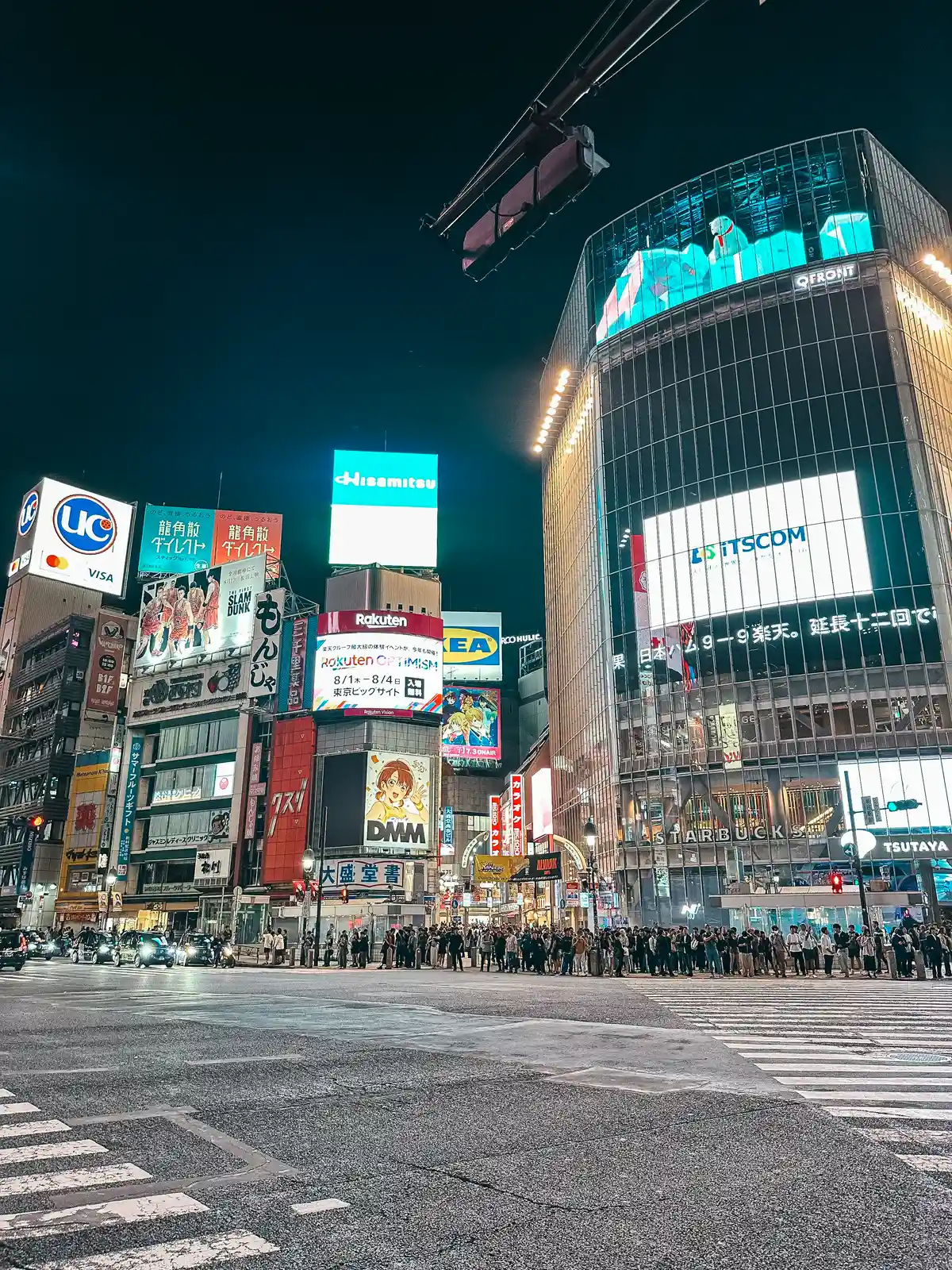
Shibuya Sky
After soaking in the chaos of Shibuya, make your way to Shibuya Sky —the rooftop observation deck that offers some of the best views of Tokyo! Since the weather didn’t cooperate for our Tokyo Skytree visit, we were especially excited for our evening here.
Make sure to book your tickets in advance , as the sunset slots sell out fast—sometimes within seconds. Even on a cloudy day, the panoramic views from Shibuya Sky are stunning, and on clear days, you might even spot Mount Fuji.
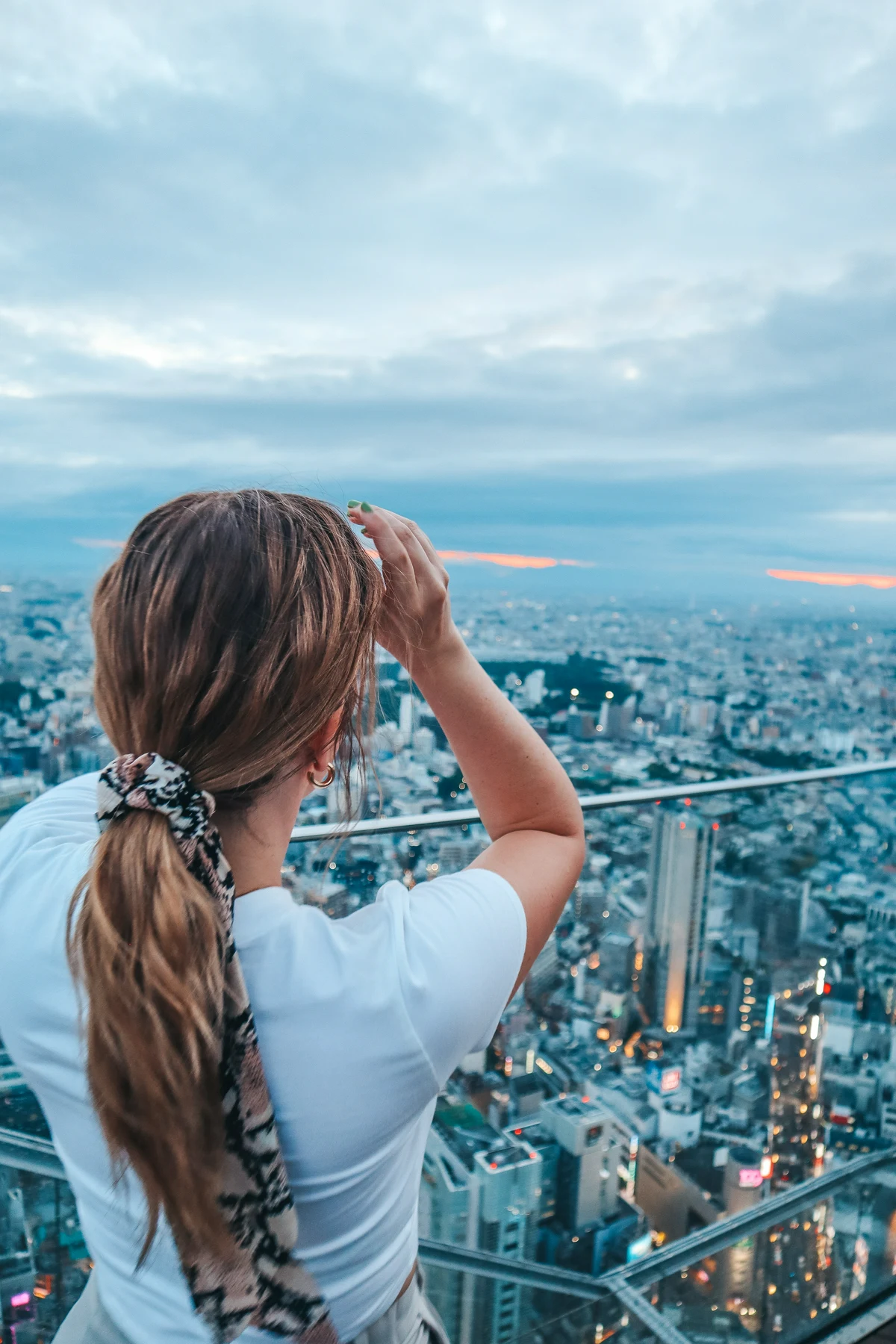
When it comes to dining in Tokyo, I haven’t made too many specific recommendations because the options are overwhelming, and it’s hard to predict where you’ll be when hunger strikes. However, if you get the chance, I highly recommend eating at Japanese Steak Bowl and Beef Curry .
The food was phenomenal—perfectly cooked beef served over garlic rice, and the atmosphere was intimate, with fewer than 15 seats. We were lucky to snag four spots (not together, but we didn’t mind). For four of us, the meal, along with a few glasses of wine, cost around $50 USD—a great deal for such a delicious experience.
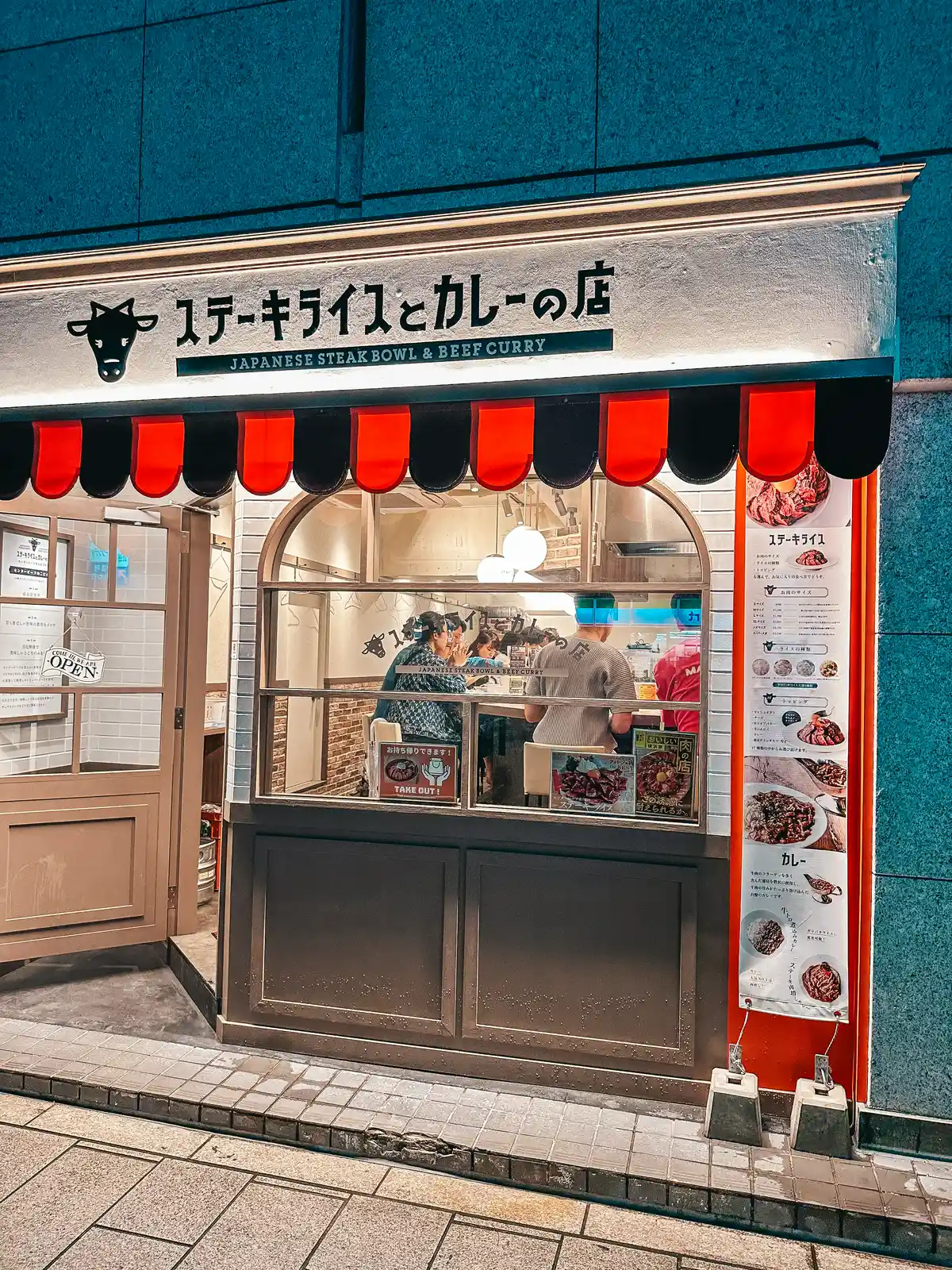
Cap off your evening in Shinjuku , one of Tokyo’s most vibrant districts. Start by checking out the famous 3D cat billboard —a fun, eye-catching piece of digital art that’s become a local icon.
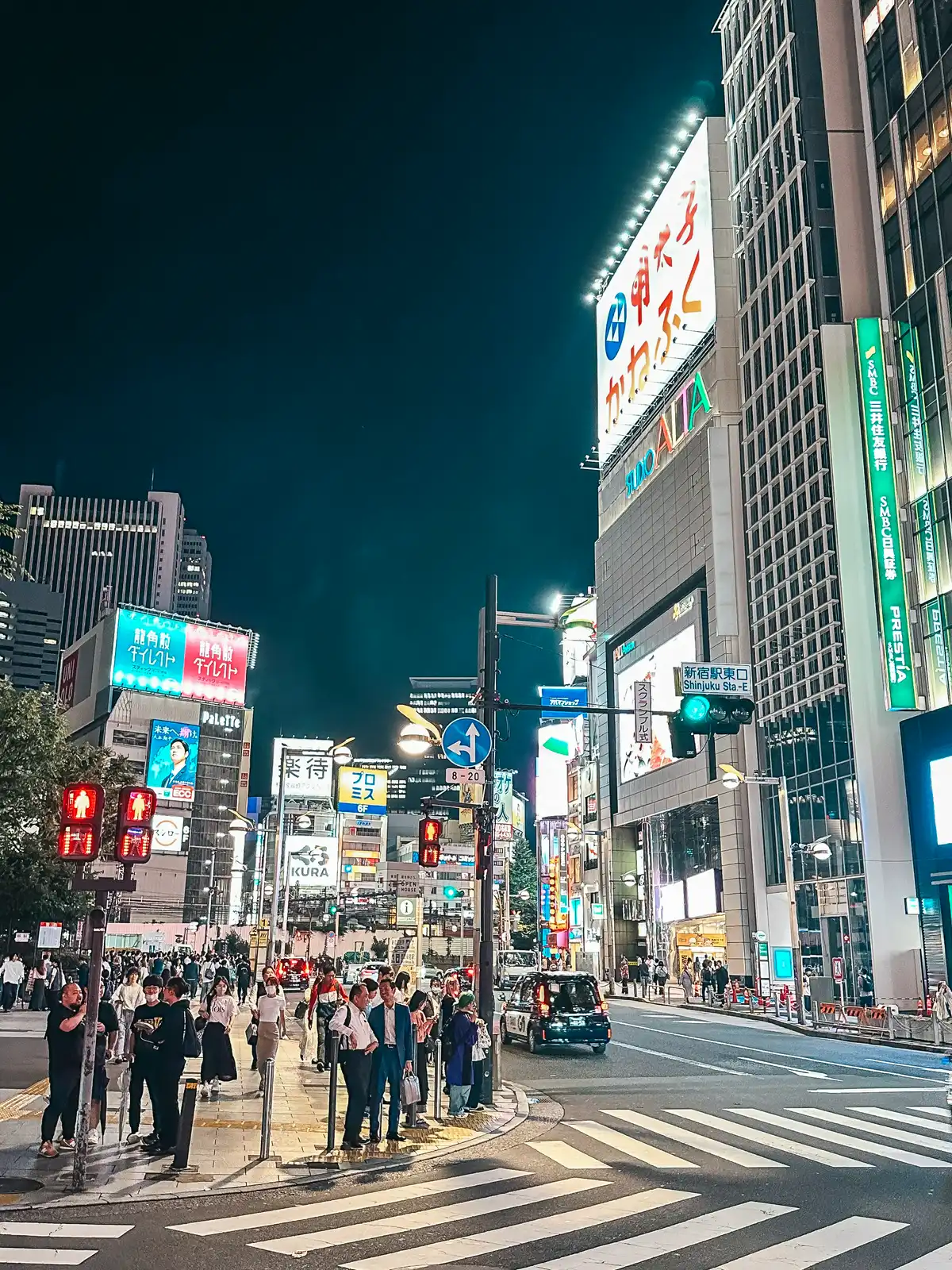
Then, head to Piss Alley , also known as Omoide Yokocho . Despite its unflattering name, this lantern-lit alley is a charming slice of old Tokyo, packed with tiny izakaya (Japanese pubs), yakitori shops, and other small eateries. The narrow lanes and cozy atmosphere make it the perfect spot to grab a drink and some late-night snacks, soaking up the unique vibe of Tokyo’s nightlife.
With just 3 days in Tokyo, it’s impossible to fit in every tour and activity, so I recommend prioritizing based on your interests. But this Tokyo Bar Hopping Tour through Shinjuku’s hidden gems is one I’ll definitely be doing next time! Navigating Piss Alley with locals feels like such a experience.
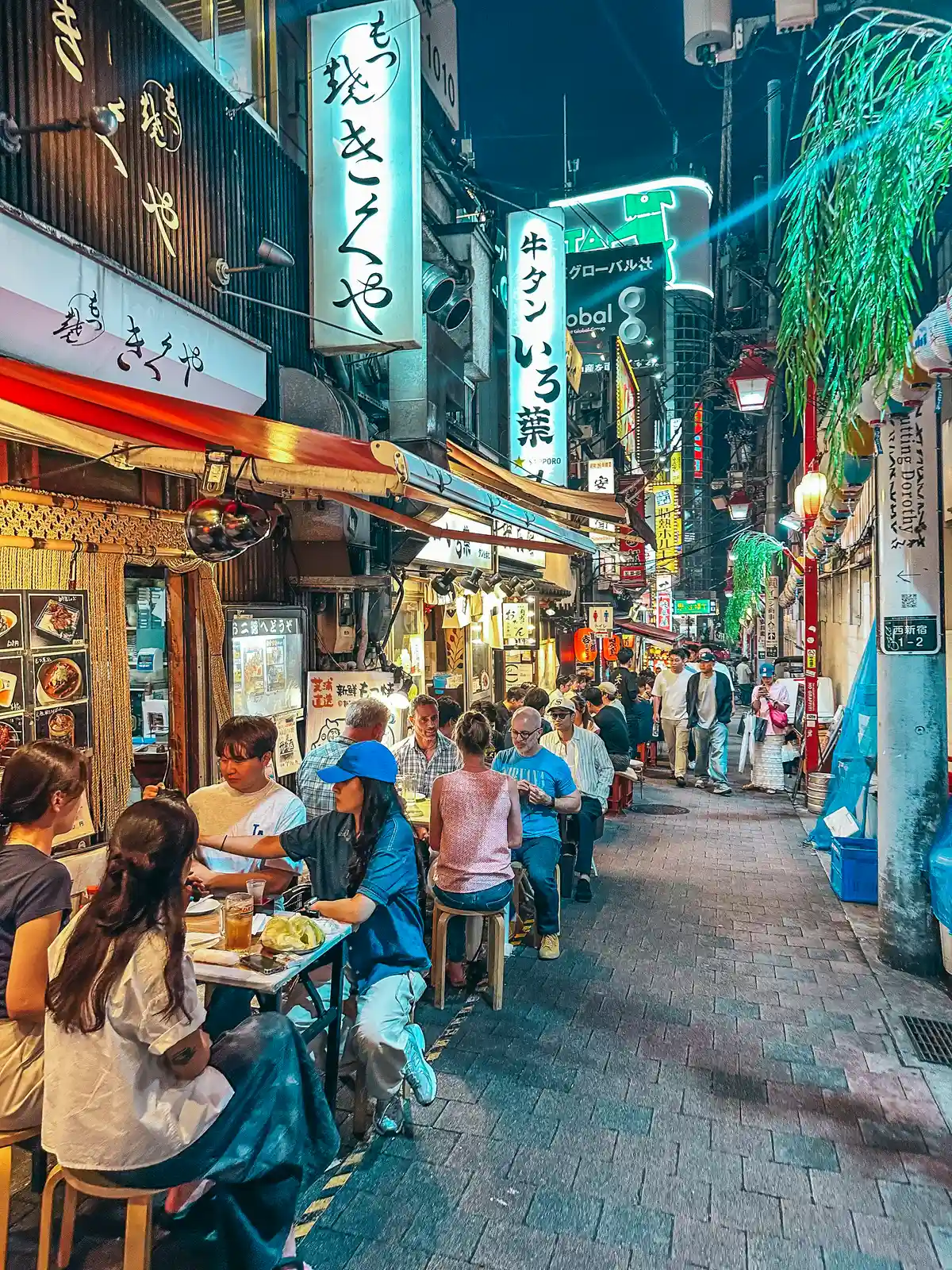
Morning: fluffy pancakes + Yoyogi Park
Fluffy pancakes.
The final day of your 3 days in Tokyo is going to start with a classic Japanese breakfast: fluffy pancakes ! While the ones we tried were just okay, there are plenty of spots around the city known for their pancakes, so hopefully, you find a winner.
Make sure to get there early because these popular spots can get crowded and stay busy.
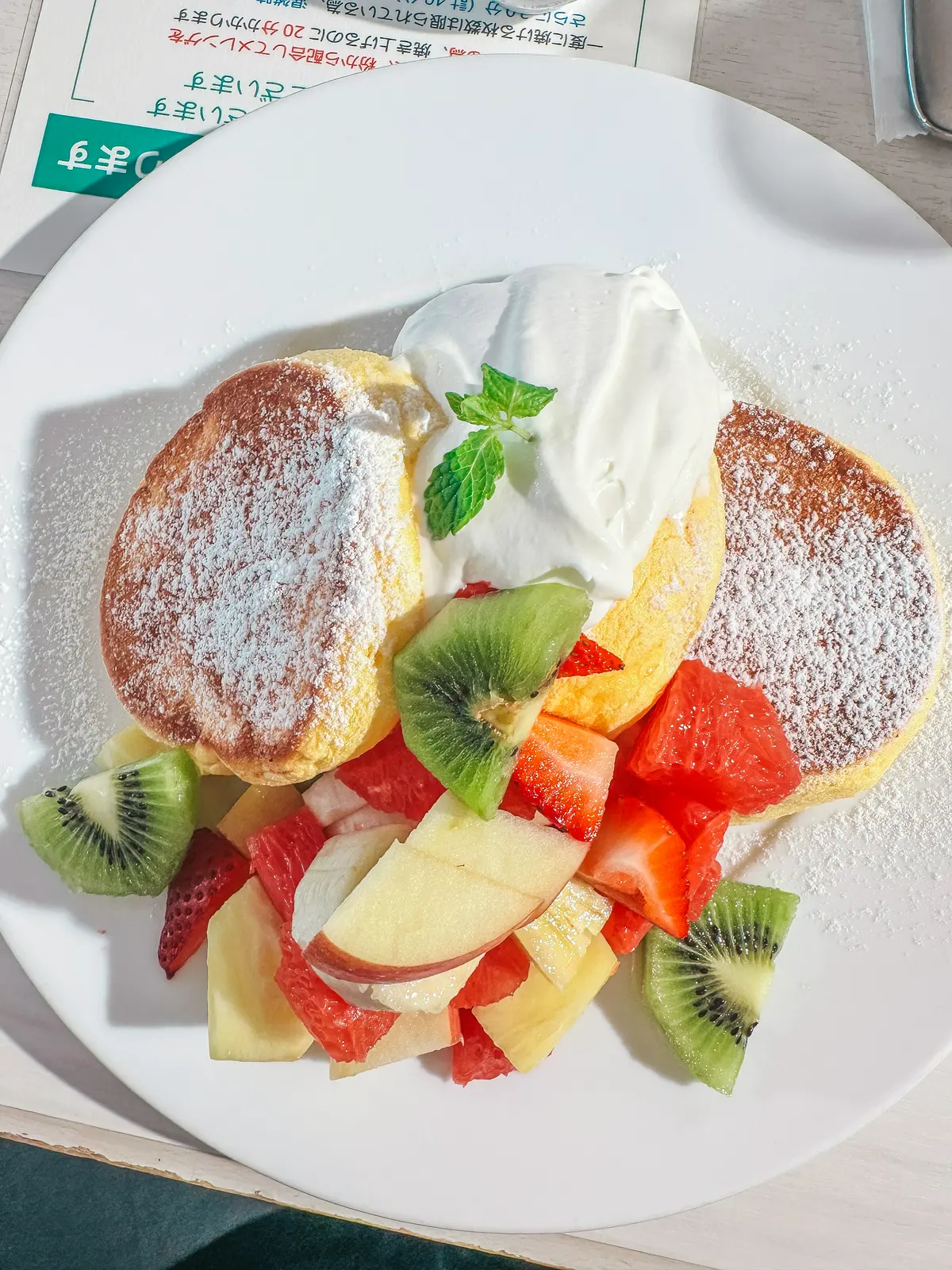
Yoyogi Park
Once you’re fueled up, head to Yoyogi Park —one of Tokyo’s most popular green spaces. It’s a massive, sprawling area perfect for admiring the relaxing side of Tokyo. Within the park is the Meiji Jingu , a serene Shinto shrine surrounded by lush greenery. Expect to spend about an hour at the park taking in the peaceful atmosphere and exploring the grounds.
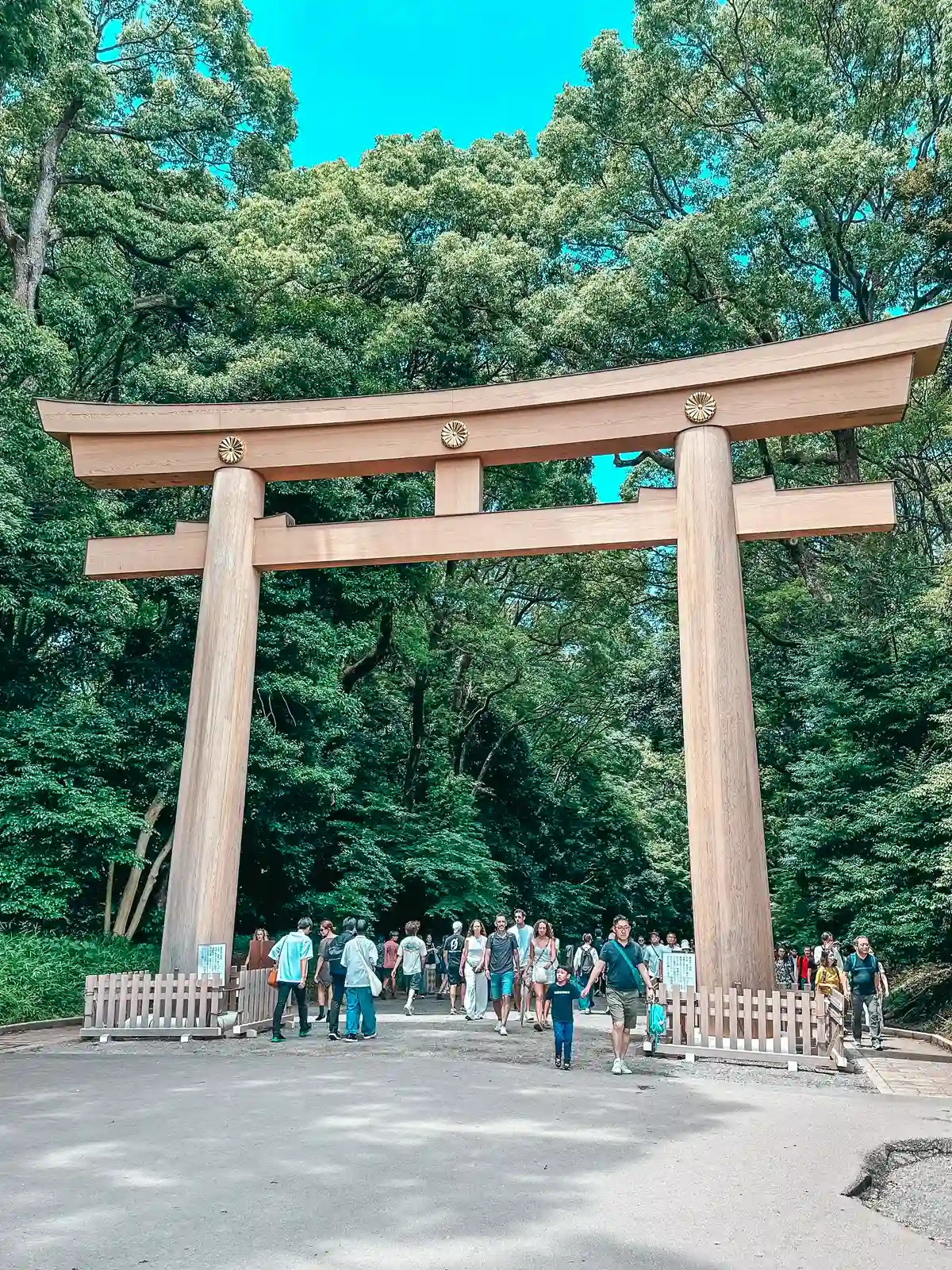
Afternoon: Harajuku + Takeshita Street
After Yoyogi Park, make your way to Harajuku , a district famous for its vibrant street fashion and unique culture . Harajuku is the birthplace of many fashion trends, so be sure to check out the eclectic thrift shops and admire the colorful streets!
While you’re here, you might also want to pop into Reissue Cafe for a coffee with a twist. They specialize in latte art that can recreate just about anything in your foam, even your pets! We skipped this spot because there’s a fee, and everyone has to order food along with their coffee, but it’s a fun option if you’re interested.
Takeshita Street
Next, head over to Takeshita Street , the heart of Harajuku’s youth culture. This street is famous for its quirky shops, vibrant atmosphere, and of course, its outrageous food offerings. Indulge in treats like a potato tornado , rainbow cotton candy , and rainbow grilled cheese . Takeshita Street is a sensory overload in the best way—come with an appetite!
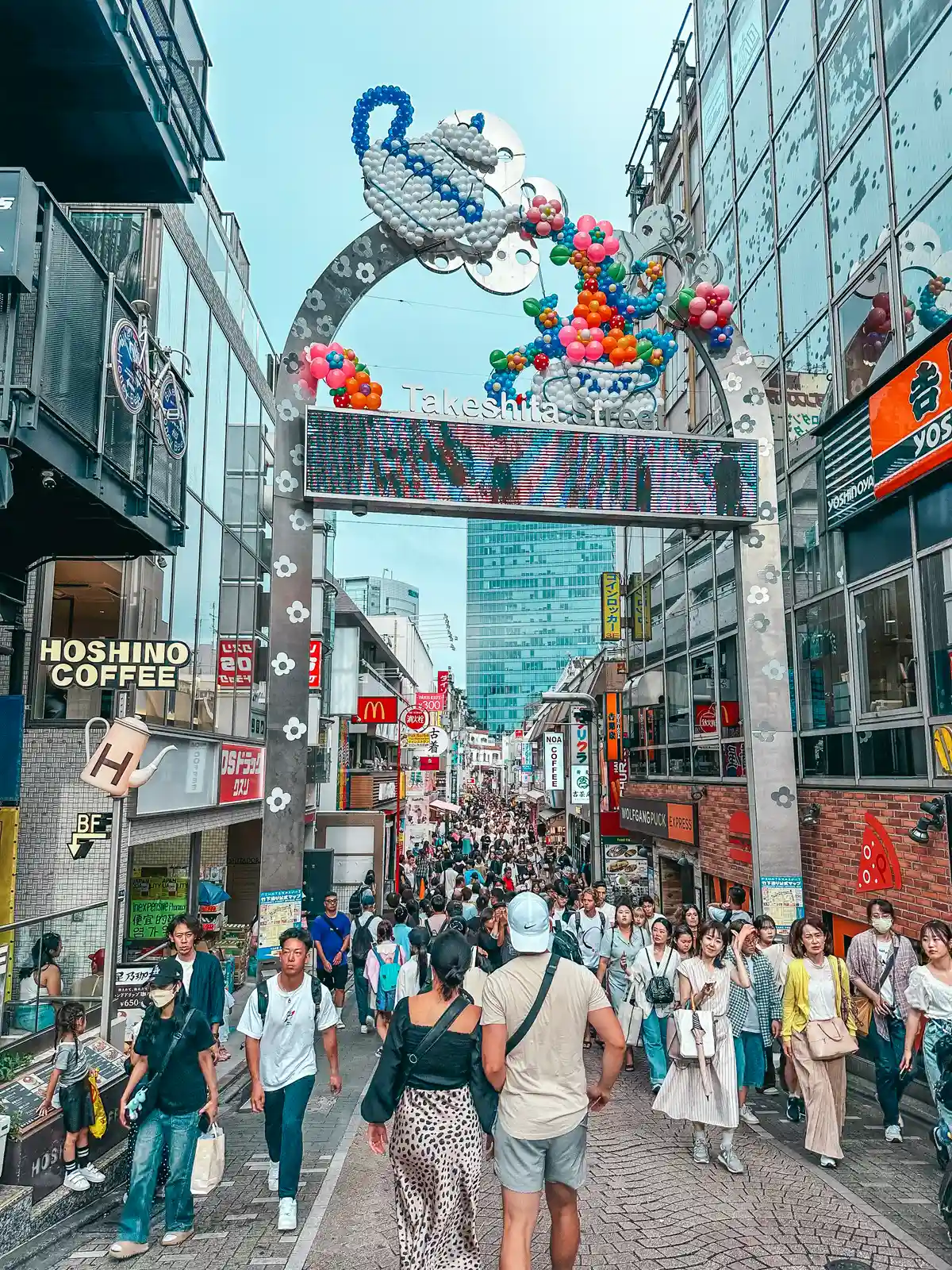
While you’re in the area, stop by a cat cafe like Cat Cafe Mocha . I was missing my kitty so much that I couldn’t resist! There’s a small fee and a requirement to buy a coffee (which, honestly, wasn’t great), but the adorable cat snuggles made it totally worth it for me. If cats aren’t your thing, don’t worry—there are also owl, hedgehog, and even mipig cafes in the area!
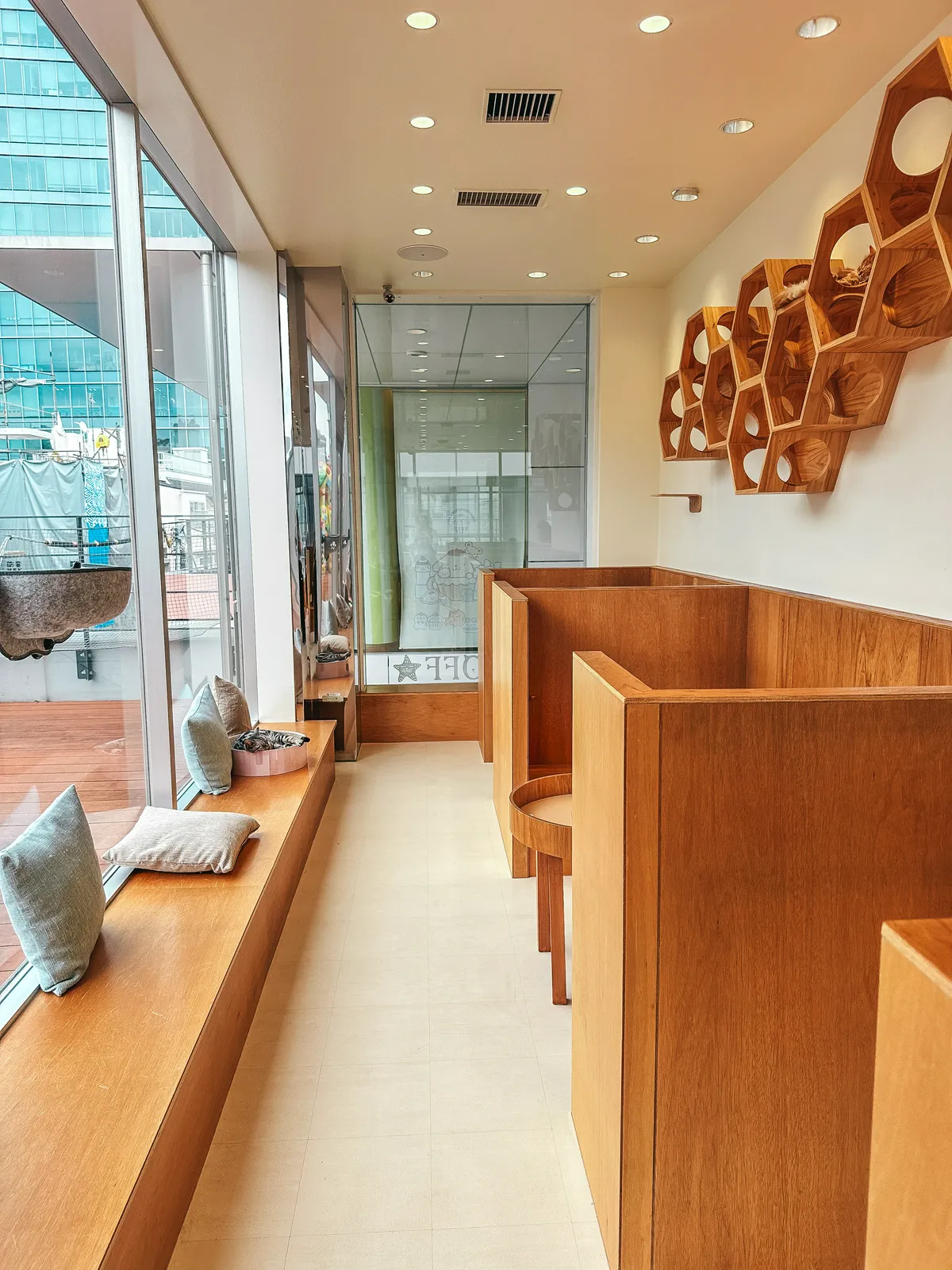
After your Harajuku adventure, it’s time to feast on some of Tokyo’s best ramen and dumplings. Head to Oreryu Shio-Ramen for a cool, casual vibe where you order from a vending machine and hand your ticket to the staff.
We weren’t super hungry after our day of snacking, so we shared one bowl of ramen and two orders of dumplings between the four of us. Trust me, those dumplings were some of the best I’ve ever had!
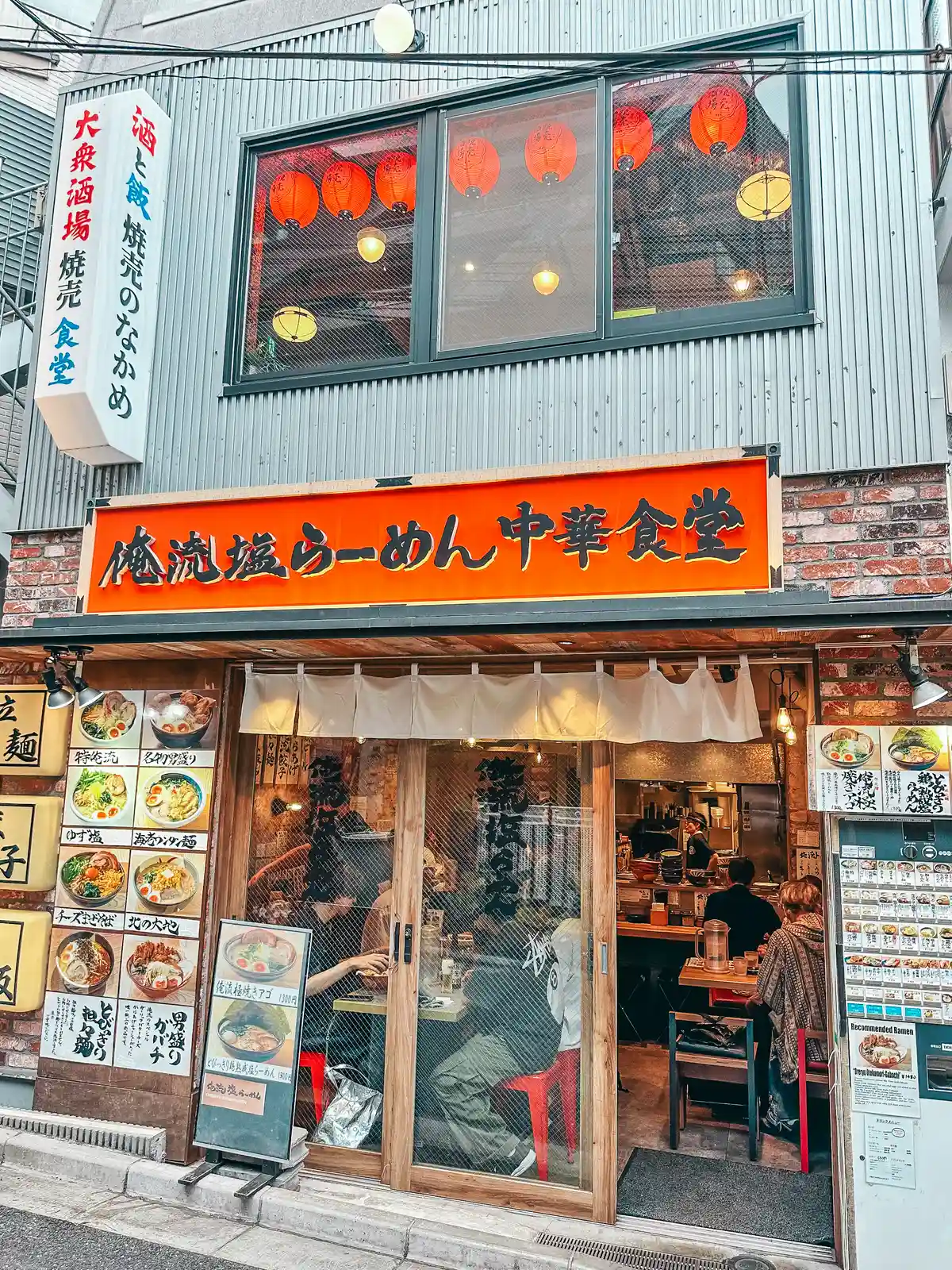
Evening: Mario Kart + dinner
To wrap up your Tokyo trip with a bang, head back to Shibuya for a unique and exhilarating experience: Mario Kart on the streets of Tokyo! You’ll need an international driver’s license to participate, so make sure you have that sorted before you go. It’s an unforgettable way to see the city and feel like a kid again, racing through the neon-lit streets in costume!
💡 Insider Tip : Evening slots for this activity tend to fill up fast, so make sure to book ahead ! The good news is that most bookings through Klook offer free cancellation within 24 hours of the tour, which gave me peace of mind since I’m not a fan of planning too far in advance. But in Japan, it’s definitely a must!
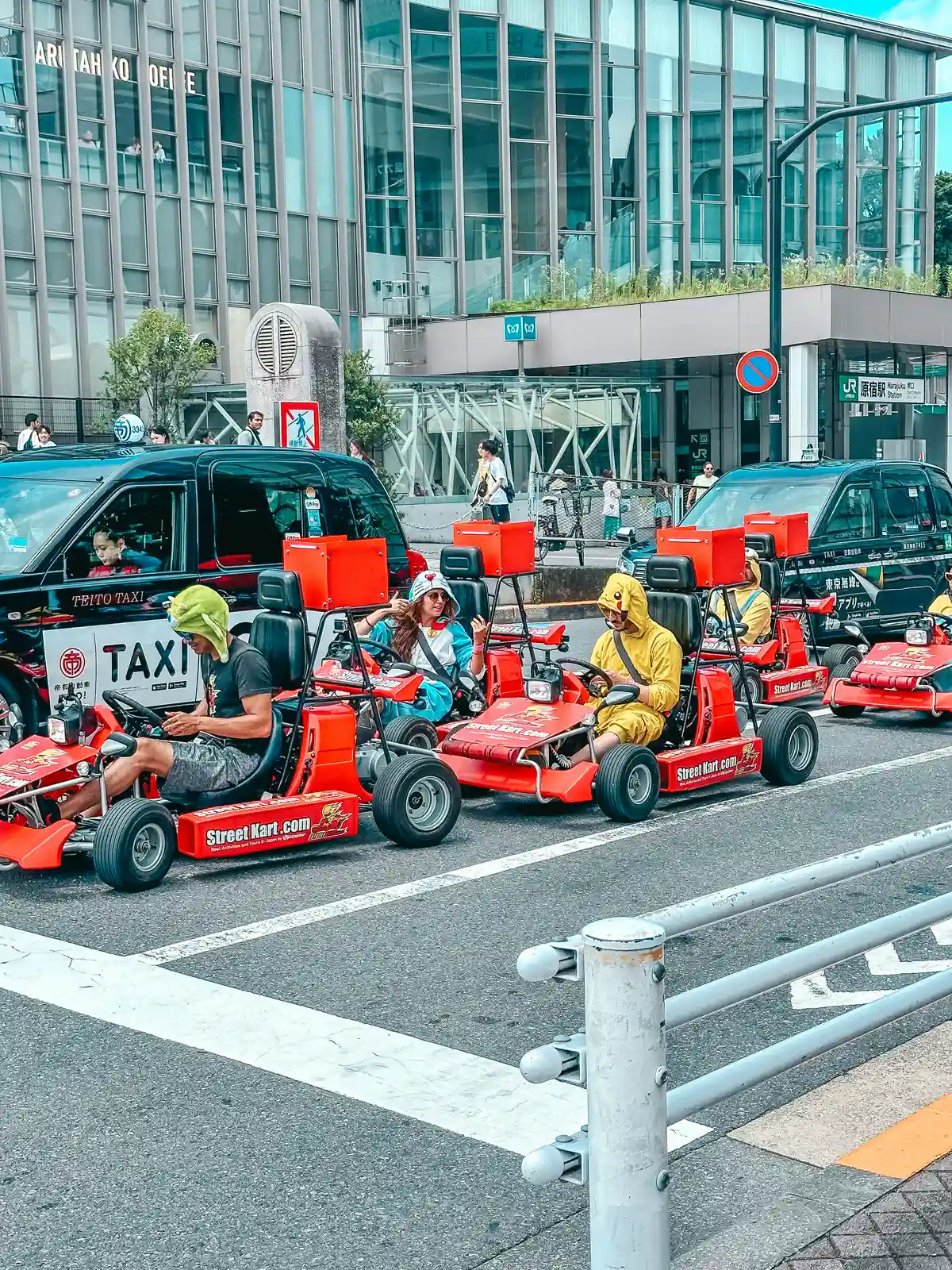
If you’ve got an appetite after your Mario Kart adventure, I highly recommend heading to Sukiyaki Matsukiya , a restaurant specializing in sukiyaki and shabu-shabu . Sukiyaki is a traditional Japanese dish where thinly sliced beef and vegetables are simmered in a sweet soy-based broth, and then dipped in raw egg before eating.
Shabu-shabu is similar, but with a savory broth, and you cook the ingredients yourself at the table by swishing them through the hot pot. This was a really unique dining experience that we didn’t do anywhere else in Japan, and the food was absolutely fantastic—even down to the cup of tea and the refreshing melon ice cream for dessert!
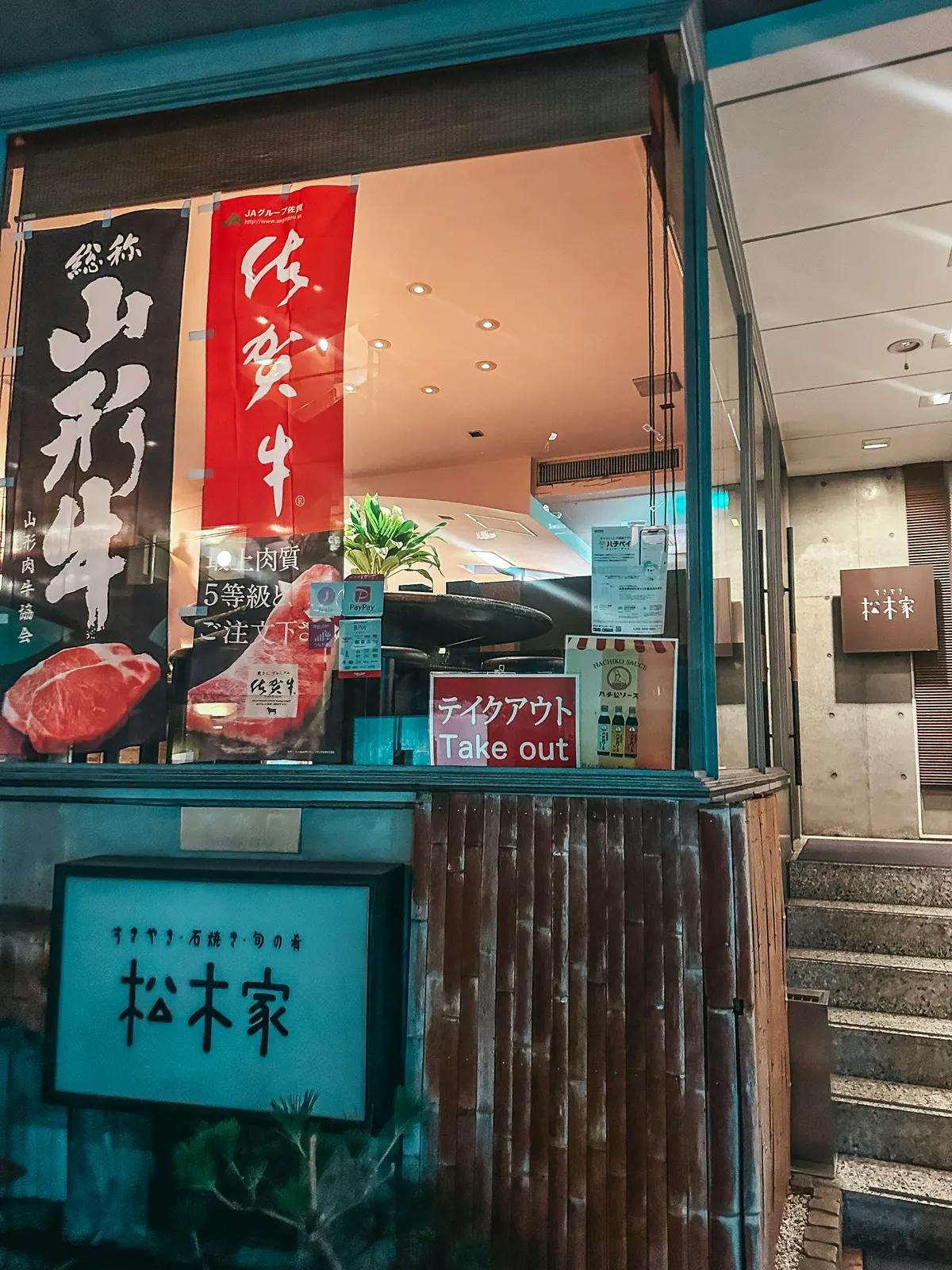
Other fun things to do in Tokyo if you have time
- Senso-ji : Tokyo’s oldest and busiest temple.
- Art Aquarium Museum : A mesmerizing blend of art, light, and aquatic life, this museum is an especially great activity for a rainy day. The glowing tanks and beautiful displays make it a unique and enchanting experience.
- Drinks at Bar Centifolia : Known for its insane cocktails, this bar is the perfect spot to experience Tokyo’s innovative mixology scene. Expect creative and visually stunning drinks that are as much a feast for the eyes as they are for the palate.
- Imperial Palace : The residence of the Emperor of Japan, this historic site is surrounded by beautiful gardens. Though the palace itself is not open to the public, you can stroll through the East Gardens. Note that the palace is closed on Sundays and Mondays, and open from 9 AM-11:15 AM and 1:30 PM-2:45 PM.
- Day trip to Mt. Fuji : If you have an extra day, a trip to the iconic Mt. Fuji offers breathtaking views and outdoor activities. It’s a great way to experience Japan’s natural beauty.
- Tokyo DisneySea : A unique Disney park that offers a magical experience unlike any other. If you’re a Disney fan and have an extra day in Tokyo, this is a must-visit!
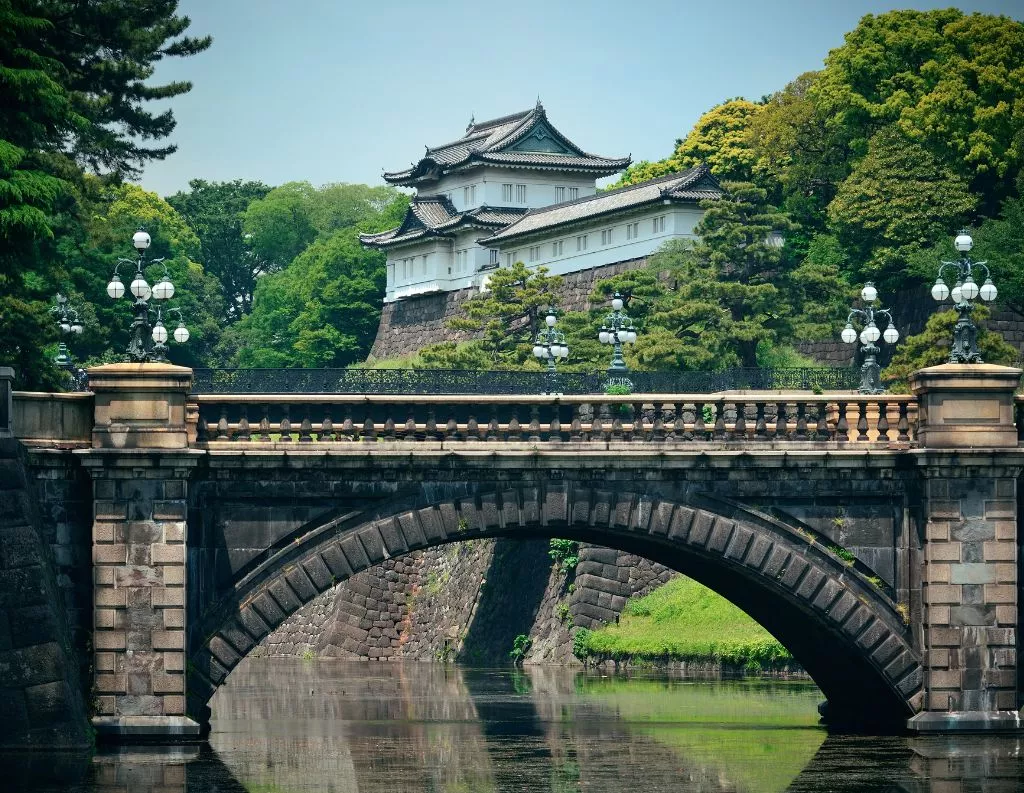
Where to stay in Tokyo
During our trip to Tokyo, we stayed in a few different areas over our five days, but I have to say, Shibuya is definitely the area we’ll choose for future trips! The energy there was more our speed—young, stylish, and vibrant. There’s also so much left to explore in Shibuya that we didn’t get to during our stay.
We also stayed in Akihabara , and while it wasn’t bad, I don’t feel the need to stay there again. Shibuya just has that buzz and charm that really suited us. Plus, it’s central to so many great spots!
For our stay, finding a place for a family of four, one month out, without breaking the bank was tricky. We ended up staying in this downtown apartment , about a 10-minute walk from Shibuya Station. It was decent, but honestly, I would’ve preferred a hotel—especially if you’re traveling in a smaller group. So, here are some hotel recommendations for staying in Shibuya , catering to different budgets:
- Budget option: The Millennials Shibuya Keep in mind that “budget” in Tokyo isn’t quite budget, but this capsule-style hotel is one of the most affordable in Shibuya. The Millennials offers a unique, tech-savvy stay with pod-style rooms and communal spaces. It’s modern, sleek, and in the heart of the action.
- Budget option: Tokyu Stay Shibuya Another well-rated, lower-priced option for Shibuya. Tokyu Stay offers spacious rooms with kitchenettes, making it a great choice for longer stays. It’s a bit quieter but still close to Shibuya Station and all the major attractions.
- Mid-range option: Shibuya Excel Hotel Tokyu Located directly above Shibuya Station, this hotel offers stunning views of the famous Shibuya Crossing. The rooms are spacious for Tokyo standards, and it’s super convenient if you’re planning to explore the area on foot.
- Luxury Option: Cerulean Tower Tokyu Hotel A 5-star luxury hotel with breathtaking views of the city skyline. It’s a short walk to Shibuya Station and features top-notch dining, spacious rooms, and an impeccable spa. Perfect if you’re looking to splurge on comfort and convenience.
Check out all the available options in Shibuya and pricing for your dates here.
Getting around Tokyo
Getting around Tokyo is super easy, thanks to its well-connected and efficient public transportation system. The trains and subways are the most common ways to travel, especially the JR Yamanote Line, which circles the city’s major neighborhoods. You can use a Suica Card for quick access to trains, buses, and even some taxis.
Taxis are available but can be pricey, and Tokyo is also a great city to explore on foot! Don’t forget to check train schedules, especially late at night, as some lines stop running after midnight.
The Suica Card is a must-have for navigating Tokyo’s public transportation system. If you have an iPhone, you can add the Suica Card directly to your Apple Wallet, and it’s incredibly easy to use and reload—no need to open the app even when you’re scanning it! You just tap your phone as you enter and exit the train gates.
If you’re using Android, you’ll need to pick up a physical Suica card from a train station. It’s super convenient for subways, buses, and even at some vending machines and convenience stores!
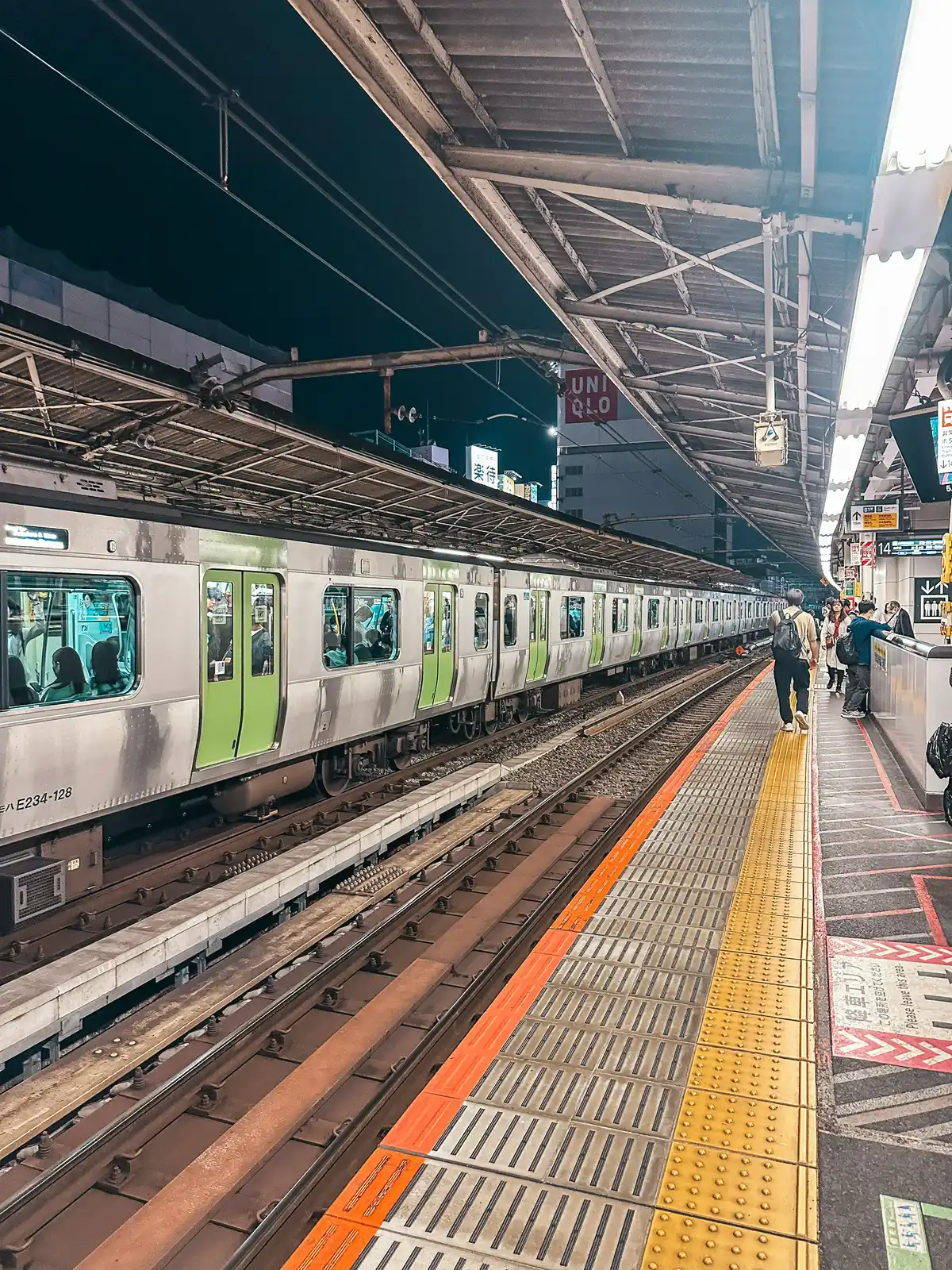
Other transportation tips
- Many train stations have lockers where you can securely store your belongings for the day. This is super handy if you’re moving between accommodations or don’t want to carry everything around.
- The JR Pass might not be worth the cost, check here to see if it makes sense for you. Tokyo’s subway and train system is efficient, and a Suica Card will be sufficient for getting around.
- If you’re visiting during peak seasons like cherry blossom season or Golden Week, book your inter-city Shinkansen tickets early. However, outside of these busy times, it’s often okay to book a day before or the day of.
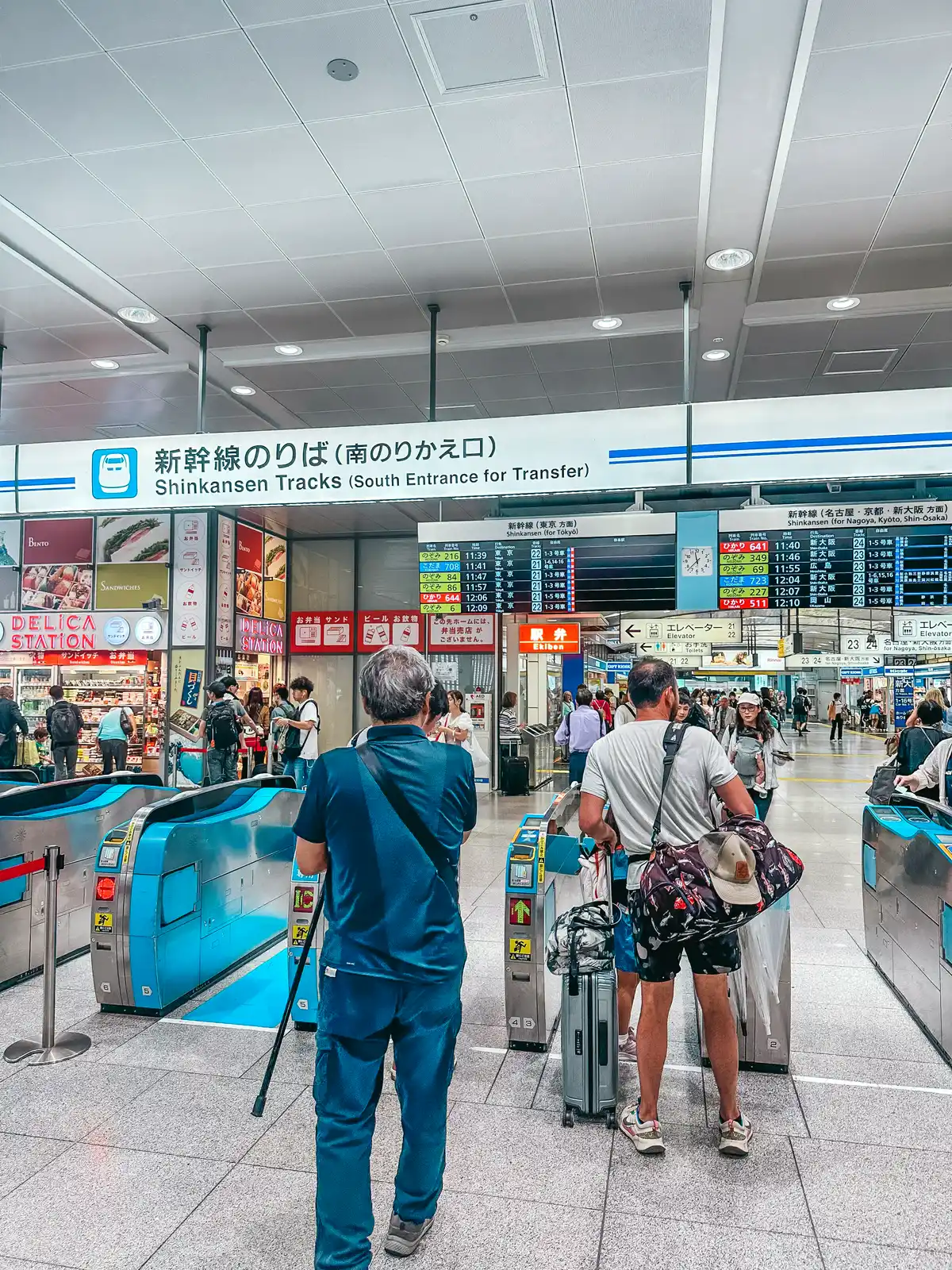
General tips for 3 days in Tokyo
- Klook for bookings : While I usually use Viator or GetYourGuide, Klook is incredibly popular in Asia, and it was my go-to for booking activities in Japan. I even used Klook to get my eSIM , which was super easy and convenient! This allowed me to have data throughout my trip without needing a physical SIM card.
- Tipping : Japan doesn’t have a tipping culture, so you won’t need to worry about adding tips after meals or services. This makes transactions easier but may take some getting used to!
- Cash : Although many places accept cards, it’s good to keep some cash on hand for smaller purchases, especially in markets, small eateries, or when visiting temples. When withdrawing cash, I recommend doing so from a 7-Eleven ATM . Always choose to withdraw in yen (instead of your home currency), as you’ll get a better exchange rate that way.
- 7-Eleven: Speaking of 7-Elevens, make sure you take advantage of all of the delicious, unique, and cheap snacks available in these amazing convenience stores! Same with Family Marts!
- Tabelog : Tabelog is Japan’s equivalent of Yelp and is great for checking restaurant reviews. While I might suggest a few spots, I recommend waiting to see where you are when you get hungry and using Tabelog to find a nearby restaurant. One thing to note is that many places I had saved ended up being closed, so don’t get too attached to specific restaurant plans!
- Book activities in advance : Many activities and attractions in Tokyo, especially those that are popular at prime times (like opening hours or sunset), sell out quickly. Keep track of when tickets become available and book them ASAP . This applies to everything from teamLab exhibits to the Shibuya Sky.
- When to visit : Tokyo is beautiful year-round, but the best times to visit are spring (for cherry blossoms) and fall (for pleasant weather and colorful foliage). I will say I visited in the summer and I found it to be hot but not super humid (I’m used to Florida heat), but it was unfortunate that it rained a bit (it’s the rainy season), and visibility was low for Mt. Fuji for our trip.
- Trash : You may notice the lack of public trash cans in Tokyo. Despite this, the streets are incredibly clean. You’ll often need to hold onto your trash until you can find a bin, usually in convenience stores or train stations.
- eSIM : As mentioned earlier, I used Klook to get an eSIM , and it was super easy to set up and was great for seamless connectivity throughout my trip.
- Hotels near train stations : When choosing accommodation, try to book a hotel near a train station, preferably on a major line like the Yamanote Line, which circles central Tokyo. This will make getting around the city much more convenient.
- Pack comfortable shoes: Since you’ll be doing a lot of walking, this is essential! I loved my Dr Scholl’s sneakers and these Madden Girl sandals.
- Layers : The weather can change quickly, especially in spring and fall, so pack layers like light jackets or sweaters.
- Portable Charger : You’ll be relying on your phone a lot for navigation and train tickets (especially if you’re using Suica on your phone), so a portable charger is a must.
- Umbrella culture: Even if you’re traveling during the rainy season don’t feel like you need to pack an umbrella. Many hotels provide umbrellas for guests to use, and you can also easily buy one for cheap at convenience stores. You’ll often find designated umbrella holders outside restaurants and shops, so you don’t need to bring it inside with you!
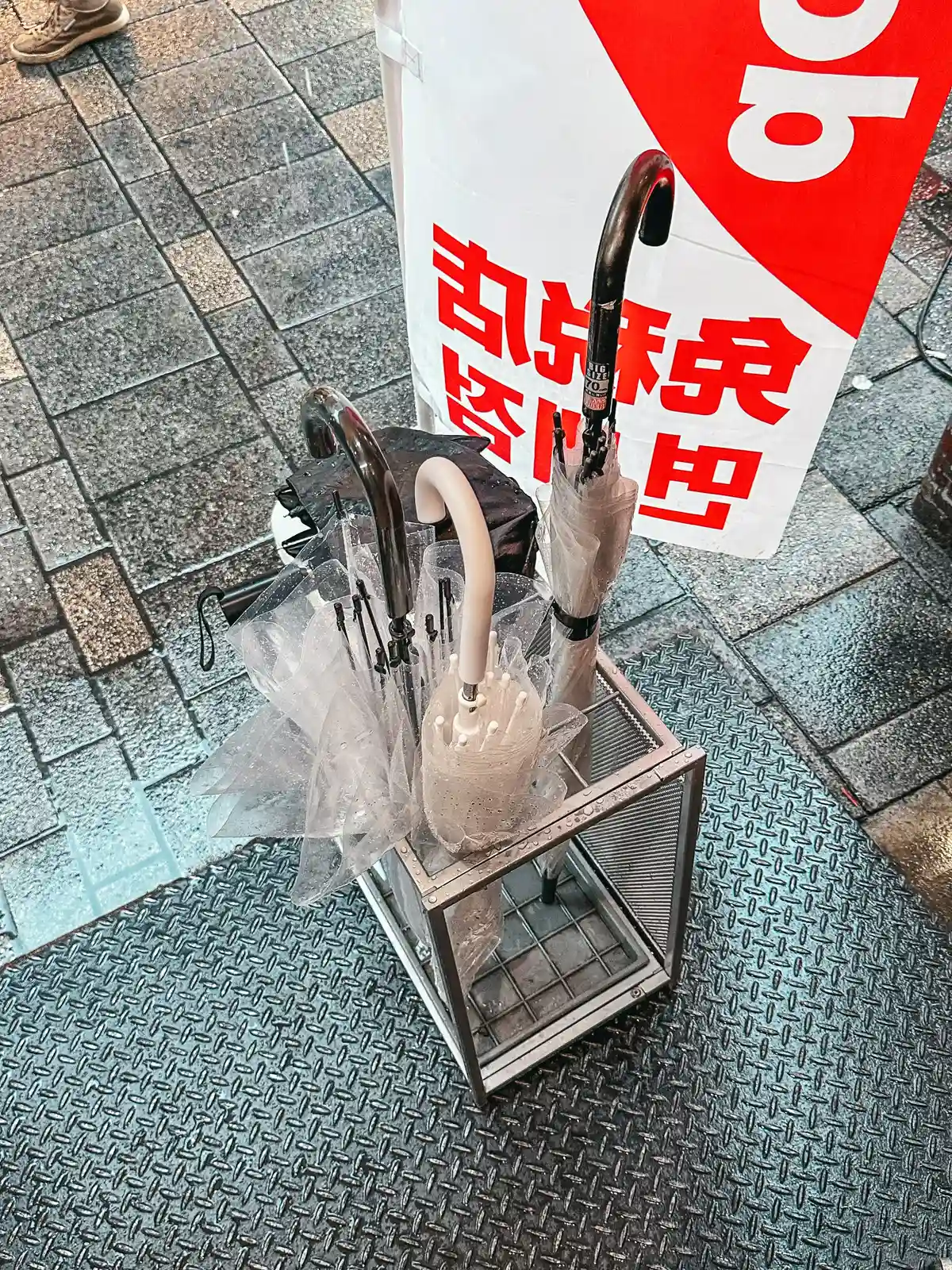
Are you ready for an epic 3 days in Tokyo?!
I hope this guide helps you plan the most amazing 3 days in Tokyo! Whether you’re soaking in the vibrant energy of Shibuya, slurping up some delicious ramen, or exploring the city’s mix of old-meets-new vibes, you’re in for a total adventure. Tokyo is truly one of those places that you’ll fall in love with the more you explore, and I can’t wait for you to experience it! Safe travels, and tag me in your Tokyo pics @guidedbydestiny —I’d love to see how you spent your time in this epic city!
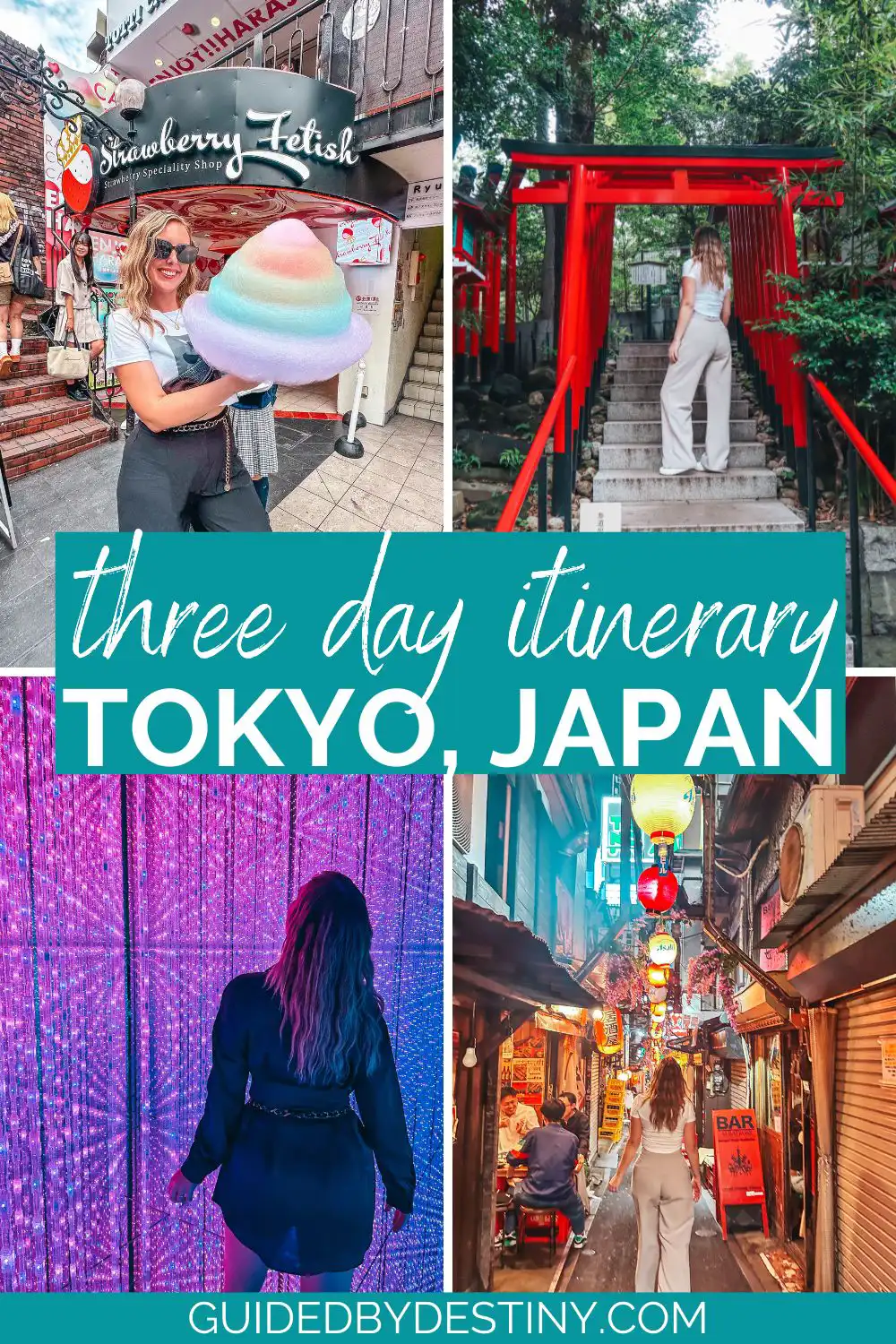
Destiny Snyder is a passionate travel blogger and content creator based in the Tampa Bay area. Originally from a small town near Toledo, Ohio, Destiny's love for exploring new places began when she moved to Florida in 2017. She enjoys uncovering hidden gems, sharing insider tips on the best things to do, places to eat, and coffee shops to visit in every destination. With her blog Guided by Destiny and niche sites Sunkissed in Tampa and Sunkissed in St. Pete, Destiny aims to make trip planning stress-free and fun for her readers.
Leave a Reply Cancel reply
Your email address will not be published. Required fields are marked *
Review Cart
No products in the cart.
Truly Tokyo
A Tokyo Travel Guide
Tokyo 3-Day Itinerary
Three days is the perfect amount of time to spend in Tokyo. My three-day Tokyo itinerary is the best way to get the most out of your time in this incredible city.

Tokyo 3-Day Itinerary Summary
- Three days is the ideal amount of time for the traveler to stay in Tokyo.
- Base yourself somewhere central to save time.
- On Day 1, visit modern Tokyo on the west side.
- On Day 2, visit traditional Tokyo on the east side.
- On Day 3, visit the Imperial Palace Area and Shinjuku.
Check Hotel Availability
Destination, check-in date, check-out date.

Tokyo 3-Day Itinerary Full Itinerary
Day 1: modern tokyo/west side.
- 8:30am: Take the train or subway to Harajuku. Depending upon where you stay, you'll probably take the JR Yamanote Line to Harajuku Station or the Chiyoda subway line to Meiji-Jingumae/Harajuku Station.
- 9:00am: Arrive in Harajuku and visit Meiji-jingu Shrine . After visiting the shrine, walk along Omotesando (the main avenue of Harajuku), checking out all the cool shops. Then, walk east all the way to the superb Nezu Museum and its fantastic garden (do not miss the garden!).
- 11:00am: Walk back to the intersection of Omotesando and Aoyama-dori and take the Ginza subway line west to Shibuya.
- 11:15am: Arrive in Shibuya, take the Hachiko exit and then walk across the famous Shibuya Crossing . Explore the big department stores and boutiques of Shibuya.
- 1:00pm: Eat lunch somewhere in Shibuya. All the department stores in Shibuya have huge restaurant floors. For more choices see the Shibuya district page Places to Eat section.
- 2.30pm: Take the Yamanote Line one stop south from Shibuya to Ebisu Station, then switch to the Hibiya Line subway and take that two stops east to Roppongi.
- 3:00pm: Arrive in Roppongi and visit the Roppongi Hills complex. Take the elevator up to the 52nd floor Tokyo City View observation deck of the Mori Tower to see the city.
- 6:00pm: Eat dinner in Roppongi. See the Roppongi Places to Eat section on the Roppongi district page for some of my picks.
- 8:00pm: If you still have any energy left, have a drink in one of Roppongi's many bars. See the Roppongi district Nightlife section for some recommendations.

Day 2: Traditional Tokyo/East Side
- 9:00am: Take the Ginza subway line up to Asakusa . Visit Senso-ji Temple and nearby Asakusa-jinja Shrine .
- 10:30am: Take the Ginza subway line three stops west to Ueno.
- 11:00am: Arrive in Ueno . Visit the wonderful Tokyo National Museum , Ueno-koen Park and Tosho-gu Shrine and then make your way back to the station.
- 1:00pm: Take the JR Yamanote Line south to Tokyo Station. Eat lunch in or around Tokyo Station. See the Tokyo Station Area Places to Eat section for my recommendations.
- 2:00: Check with the tourist information office in the basement of the Kitte Building to see what's on at the Mitsubishi Ichigokan Museum or the Bridgestone Museum of Art. Consider a nice stroll in nearby Hibiya-koen Park afterward.
- 3:30pm: Return to your hotel for a nap and a shower.
- 6:00pm: Eat dinner in an area like Shinjuku , Ginza , Marunouchi or someplace close to your hotel. See the relevant district pages for recommendations.
- 8:00pm: If you've still got the energy, go out for a drink in a place like Roppongi , Shinjuku or Shibuya . See the relevant district pages for recommendations.
Day 3: Imperial Palace Area and Shinjuku
- 9:00am: Get yourself to Tokyo Station by train or subway. Walk east from Tokyo Station to the Imperial Palace East Garden . Visit the East Garden and exit via the Kitahanebashi-mon. For details on this area, see the Tokyo Imperial Palace Area page .
- 11:00am: Walk north through Kitanomaru-koen Park and then visit Yasukuni-jinja Shrine . Do not miss the controversial and interesting Yushukan Museum at the shrine. For details on this area, see the Tokyo Imperial Palace Area page .
- Noon: Take the Shinjuku Line subway west to Shinjuku. Eat lunch somewhere in Shinjuku. See the Shinjuku page for some suggested places to eat. You might want to hold off on eating lunch until 1:00pm to avoid the lunch rush.
- 1:00pm: First, go up to the observation deck of the Tokyo Metropolitan Government Offices to see the view of the city (and maybe even Mt Fuji) from the observation decks. Then, walk over to the East Side and check out the bustling shopping and entertainment district around the station. See the Shinjuku page for details on this area.
- 4:00pm: Return to your hotel for a rest and shower.
- 6:00pm: Eat dinner in the district of your choosing. Shinjuku , Shibuya , Ginza and Roppongi all have lots of great restaurants to choose from.
- 8:00pm: After dinner, head to Roppongi for a stroll and a drink or two. See the relevant district pages for some recommended bars.
Hints, Comments and Variations
- If you're only going to be in the city for three days, you should try to base yourself in a central location so you don't waste time moving around. I'd suggest Shinjuku , Shibuya , Ginza or the Tokyo Station area . For more on where to say, check out my Where to Stay in Tokyo page.
- On Day 2, another good option for the afternoon is the Edo-Tokyo Museum . It's easy to reach from Asakusa, Ueno or Tokyo Station.
- On Day 3, if it's very hot or you don't feel like walking much, cut out the Imperial Palace Area and head over to the Edo-Tokyo Museum (if you haven't already visited it).
- Don't try to do more than this with three days in Tokyo. If anything, cut out some of the destinations in this itinerary and slow down and relax! Tokyo is a huge city and it's tiring to move from place to place. Less is often more in a place like Tokyo.
Where Are These Places Located?
- Open the Tokyo map
- You will see the list of places on the left hand side. (Click the 3-line icon in the top left corner if not). Scroll down or use the map search (the magnifying glass icon) to find the place you want.
- Click the name of the place in the list. Its location pin will be highlighted on the map.
- Map pins are color coded - BLUE: Hotels / Ryokan / Guesthouses | VIOLET: Ryokan | PINK: Places to Eat | GREEN: Shops | YELLOW: Things to See and Do
- If you're using the map on your phone, open the map and then search for the name of the place. The map will then zoom in on its location.
Tokyo Vacation Checklist
- For all the essentials in a brief overview, see my First Time In Tokyo guide
- Check Tokyo accommodation availability and pricing on Booking.com and Agoda.com - often you can book with no upfront payment and free cancellation
- Need tips on where to stay? See my one page guide Where To Stay In Tokyo
- You can buy shinkansen (bullet train) tickets online from Klook - popular routes include Tokyo to Kyoto , Tokyo to Osaka and Tokyo to Hiroshima
- You can buy an eSim to activate in Japan or buy a Japan SIM card online for collection on arrival at Tokyo Narita or Haneda airports. Or rent an unlimited data pocket wifi router
- See my comprehensive Packing List For Japan
- Compare airline flight prices and timings for the best Japan flight deals . Check my guides to arriving at Narita Airport and at Haneda Airport .
- If you're visiting more than one city, you might save money with a Japan Rail Pass – see if it's worth it for you
- A prepaid Welcome Suica card makes travelling around Tokyo much easier - here's how
- World Nomads offers simple and flexible travel insurance. Buy at home or while traveling and claim online from anywhere in the world
- Do you want help planning your trip? Chris Rowthorn and his team of Japan experts at Japan Travel Consulting can help
Tokyo District Map

- Imperial Palace Area
- Tokyo Station
- Shimbashi Shiodome Hamamatsucho Shinagawa
- Akihabara Kanda
- Roppongi Akasaka
- Harajuku Aoyama
- Ebisu Daikanyama Meguro
Disclosure: trulytokyo.com is a participant in the Amazon Services LLC Associates Program, an affiliate advertising program designed to provide a means for sites to earn advertising fees by advertising and linking to amazon.com and amazon.co.uk. World Nomads provides travel insurance for travellers in over 100 countries. As an affiliate, we receive a fee when you get a quote from World Nomads using this link. We do not represent World Nomads. This is information only and not a recommendation to buy travel insurance.

IMAGES
VIDEO
COMMENTS
While Tokyo is a big metropolis, you can see the best attractions with my 5 day Tokyo itinerary. During your 5 days in Tokyo, experience Japanese culture through historical monuments, museums, cuisine, and much more.. The capital city is a large metropolis with 23 special wards and 26 other cities, towns and villages.It was originally a fishing village during the Edo period, then Tokyo became ...
Best time to visit: from March to May. Tokyo has mild winters (with cool spells), with hot and humid summers. Note: the first week of May is known as Golden Week in Japan, and is an extremely busy time for tourism - plan your trip outside of that week to avoid the crowds. Arriving via airport: 1.
Fun things to do in Tokyo by booking in advance. DAY 2: Shibuya & Harajuku (including Shibuya Sky) DAY 3: Shinjuku. DAY 4: Asakusa & Akihabara Electric Town. DAY 5: North Eastern Tokyo (including Tokyo SkyTree) DAY 6: Southern Tokyo: Ginza, Minato & Odaiba (including teamLab Planets/Borderless) OPTIONAL: Day trip to Hakone to see Mt Fuji. More ...
Cost: ¥2,420 (60min session), ¥3,410 (90min session), ¥4540 (120min session), book on website or email [email protected]. Opening hours: 9AM - 10PM. How to get there: From Karuizawa Station (Karuizawa Eki) take a bus (Minami Karuizawa Keiyu New Town Homen) to Kazekoshi Koen, walk 3min.
14 Best Things to Do in Tokyo 1. Visit Sensoji Temple. One of the first things you should do when you arrive in Tokyo is to check out Sensoji Temple, one of the most impressive temple complexes you will see here.. The temple is located in the lively historic neighborhood of Asakusa, and the place is best known for its iconic Thunder Gate (Kaminarimon) and the lively Nakamise-dori shopping ...
Planning a Tokyo Solo Travel Itinerary Is Overwhelming. Tokyo's sheer size and limited travel time were both problems I faced when planning my Tokyo trip. I am an English teacher in Japan with limited funds and only have time to travel on the weekends. So, I have listed 20 activities perfect for two days in Tokyo—with a budget of only $100 USD.
3. Stroll through Ueno Park. Solo travel to Tokyo is not complete without a leisurely stroll through Ueno Park, a sprawling green space that provides a refreshing contrast to the city's busy skyline. Easily accessible by public transportation, the park is just a short walk from Ueno subway station.
Embarking on a solo travel Tokyo, Japan, is an exhilarating experience that immerses you in the vibrant culture, rich history, and bustling city life. ... research the best time to visit, create a flexible itinerary, book accommodations in well-connected areas, learn basic Japanese phrases, and prioritize activities aligned with your interests. ...
1 PM Go Electric in Akihabara. Tokyo's electronic district of Akihabara is the holy grail for fans of Japanese anime and manga and is also home to most of Tokyo's famous maid cafes. Visiting a maid cafe is a bit of a weird experience, but definitely one of those "only in Japan" things you should try.
Backpacking Tokyo 3-day itinerary: Shibuya, Harajuku, Asakusa, Akihabara, Ginza, and more. ... By Pete R., a solo traveler, travel blogger, and photographer with over 10+ years of experience. Updated on September 03, 2024 | 2 Comments. Share. ⚡️ Take our travel guide with you wherever you go!
Day 3 - Cultural Tokyo Itinerary - Tsukiji (7)- Ginza (8) - Akihabara (9) Day 4 - Food and Fun Tokyo Itinerary - teamLab Borderless (11) - Shinjuku (12) The above itinerary depends on where you're staying. If your accommodation is in the Shinjuku area, I'd move (12) Shinjuku from Day 4 to Day 1.
1) Be Prepared…You Won't Be Able to Read Anything. As you solo travel Japan, you'll quickly see that there is a distinct lack of English signage. 'It's cool I'll just follow the signs'… said no one in Japan. Ever. Well, unless of course, you can actually read Japanese.
Here we give you a complete guide and itinerary to Tokyo with all the highlights of Tokyo. Table of Contents: Day 1 - Meiji-jingu Shrine, Shopping & Japanese Pop Culture. Day 2 - Shopping, Tsukiji Fish Market, Japanese Garden, River Cruise & Tokyo Skytree. Day 3 - Senso-ji Temple, Tokyo National Museum & Ueno Park.
Planning a solo trip can be intimidating, so here are some of my tips and recommendations for Tokyo. Four Days in Tokyo: The Ultimate Solo Itinerary Day 1 tips: Relax first, then explore the neighborhood Ikebukuro. Ikebukuro, home to the second largest subway stop in Tokyo, is located near Shinjuku and Shibuya.
Tokyo 5-Day Itinerary Full Itinerary Day 1: Modern Tokyo/West Side. 8:30am: Travel to Harajuku. 9:00am: Arrive in Harajuku. Visit Meiji-jingu Shrine, Omotesando, and Nezu Museum. 11:00am: Travel to Shibuya. 11:15am: Explore Shibuya. 1:00pm: Eat a late lunch in Shibuya. See the Shibuya district page Places to Eat section. 2.30pm: Travel to Roppongi.
Embark on an unforgettable 7-day Tokyo itinerary as you uncover the dazzling gems of Japan's iconic capital city. Having extensively explored Tokyo for months, I've crafted the ultimate Tokyo itinerary to help you tailor your journey to perfection.Tokyo, a city that tops many travellers' must-visit lists, offers a stunning blend of rich history, vibrant culture, and mouthwatering cuisine.
1 Best Things To Do Alone In Tokyo. 1.1 Step into anime heaven and explore otaku culture. 1.2 Take advantage of the single-rider line at Tokyo Disneyland. 1.3 Hunt for vintage finds. 1.4 Try Michelin-starred restaurants in Tokyo. 1.5 Watch a sumo wrestling match. 1.6 Dress up in a luxurious Japanese oiran kimono.
Shibuya. Late afternoon into evening, head to Shibuya for the bustle of Tokyo city life. It's so much fun to be here for sunset and into the evening as the lights come on and the city bursts with life. You'll want to see the famous Shibuya Scramble Crossing, where hundreds of people cross at the same time.
Aman Tokyo. After touching down in Tokyo in the evening, I headed straight to Aman Tokyo, a secluded oasis tucked away from the city's bustle. After crashing early, I woke the next day at ...
Unfortunately, there are several different rail systems operating here. For a 3 days in Tokyo itinerary, your best bet is picking up one of the 72-hour Tokyo metro tickets. The Klook website is the cheapest place to buy these, a bit cheaper than buying them at the station. Another good tip is to pick up a Suica IC card.
This itinerary has been designed to cover specific sections of the city and groups attractions on each day to reduce travel time and backtracking. Here's a summary breakdown of this Tokyo Itinerary: Day 1: Harajuku and Shibuya. Day 2: Gotokuji Temple, Shimokitazawa and Shinjuku. Day 3: Asakusa & Akihabara.
But if you think Tokyo is pretty expensive, I say, it is manageable. It is possible to travel to Tokyo without breaking the bank. Here are my sample Tokyo itineraries with budget, good for 3 days to 6 days trip. TOKYO ITINERARY #1 : TOKYO + DISNEYLAND + FUJI 5 LAKES (LAKE KAWAGUCHIKO GROUP TOUR) + ODAIBA. TOKYO DISNEYLAND.
Getting around Tokyo is super easy, thanks to its well-connected and efficient public transportation system. The trains and subways are the most common ways to travel, especially the JR Yamanote Line, which circles the city's major neighborhoods. You can use a Suica Card for quick access to trains, buses, and even some taxis.
Three days is the ideal amount of time for the traveler to stay in Tokyo. Base yourself somewhere central to save time. On Day 1, visit modern Tokyo on the west side. On Day 2, visit traditional Tokyo on the east side. On Day 3, visit the Imperial Palace Area and Shinjuku.